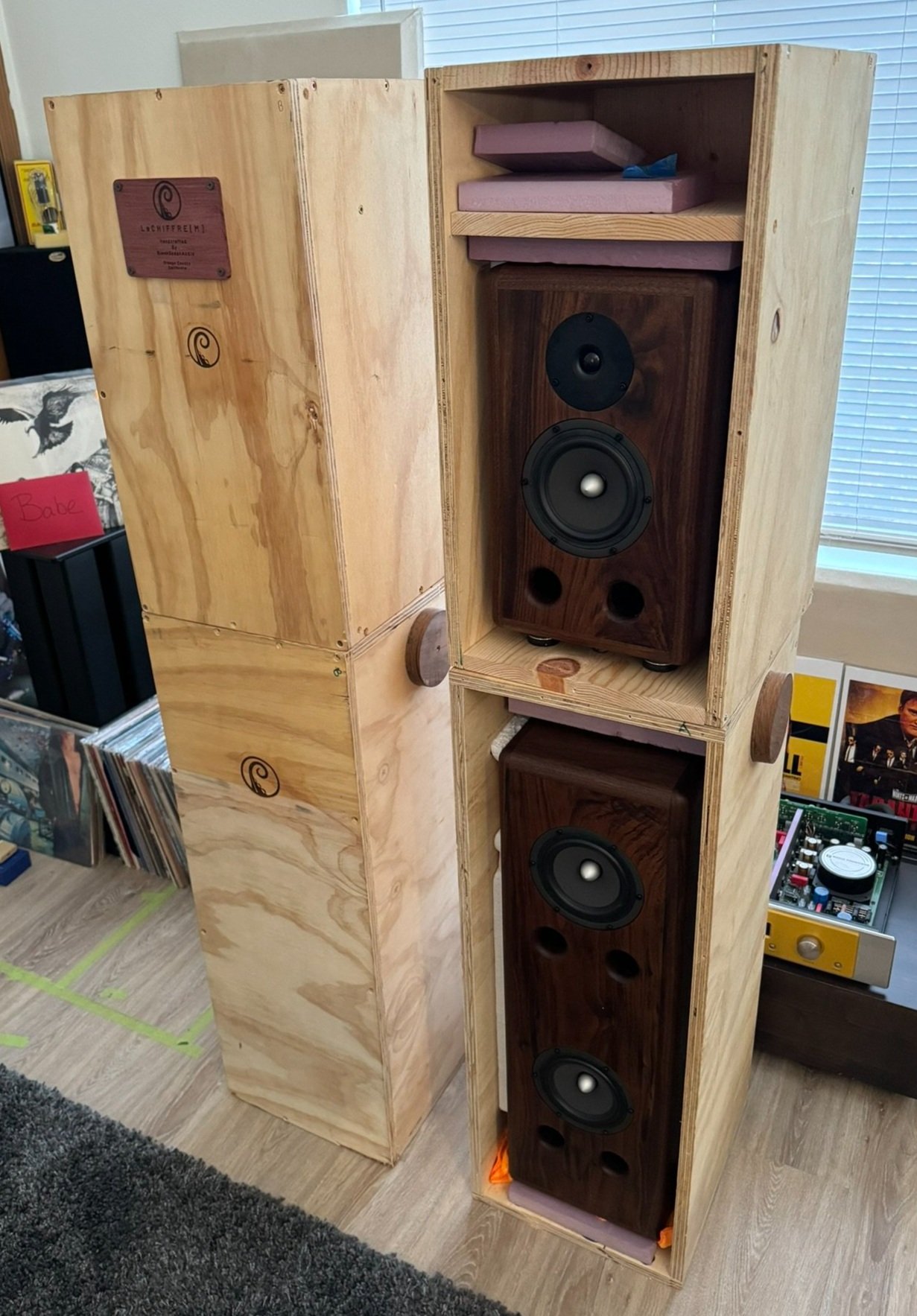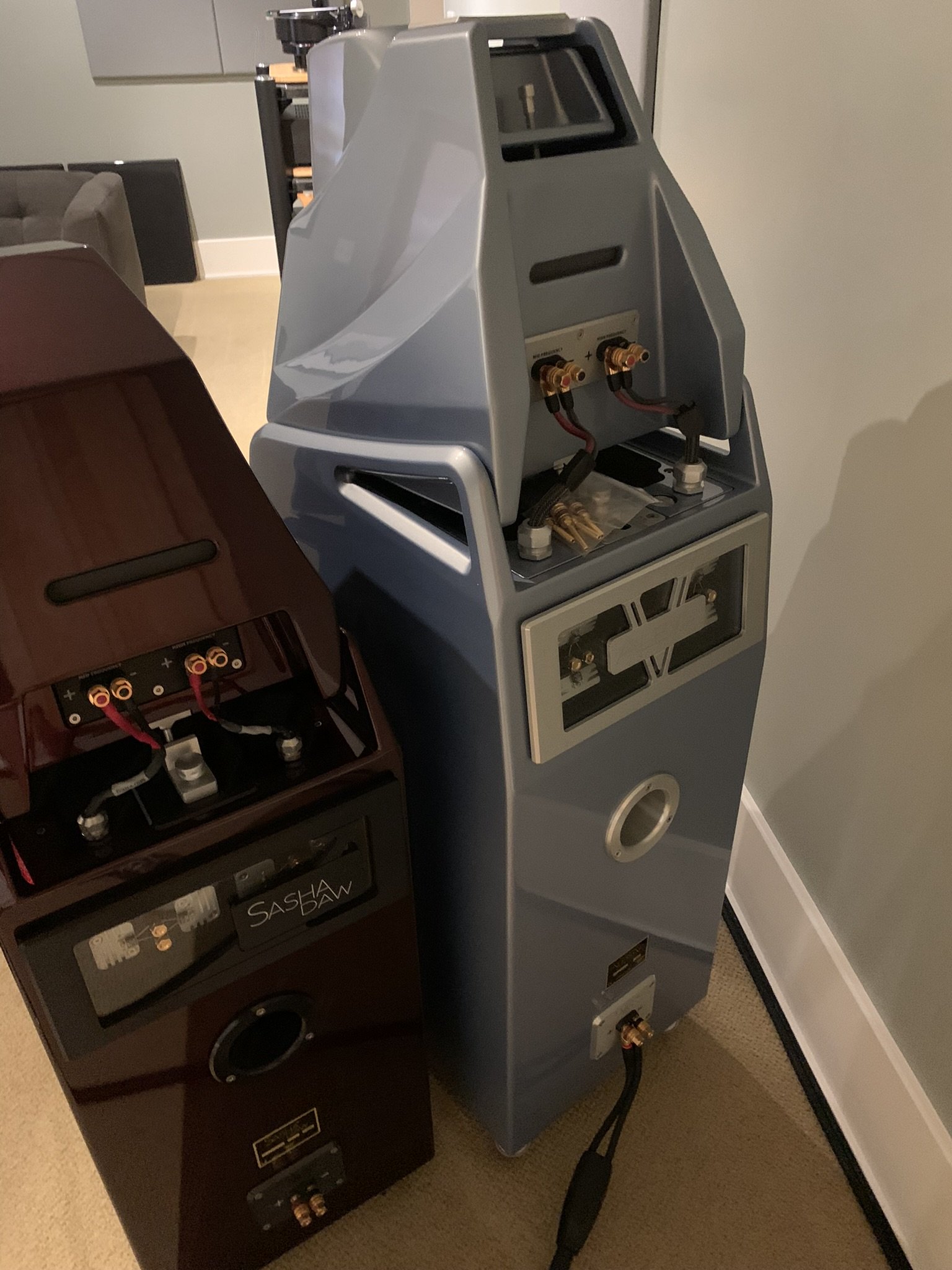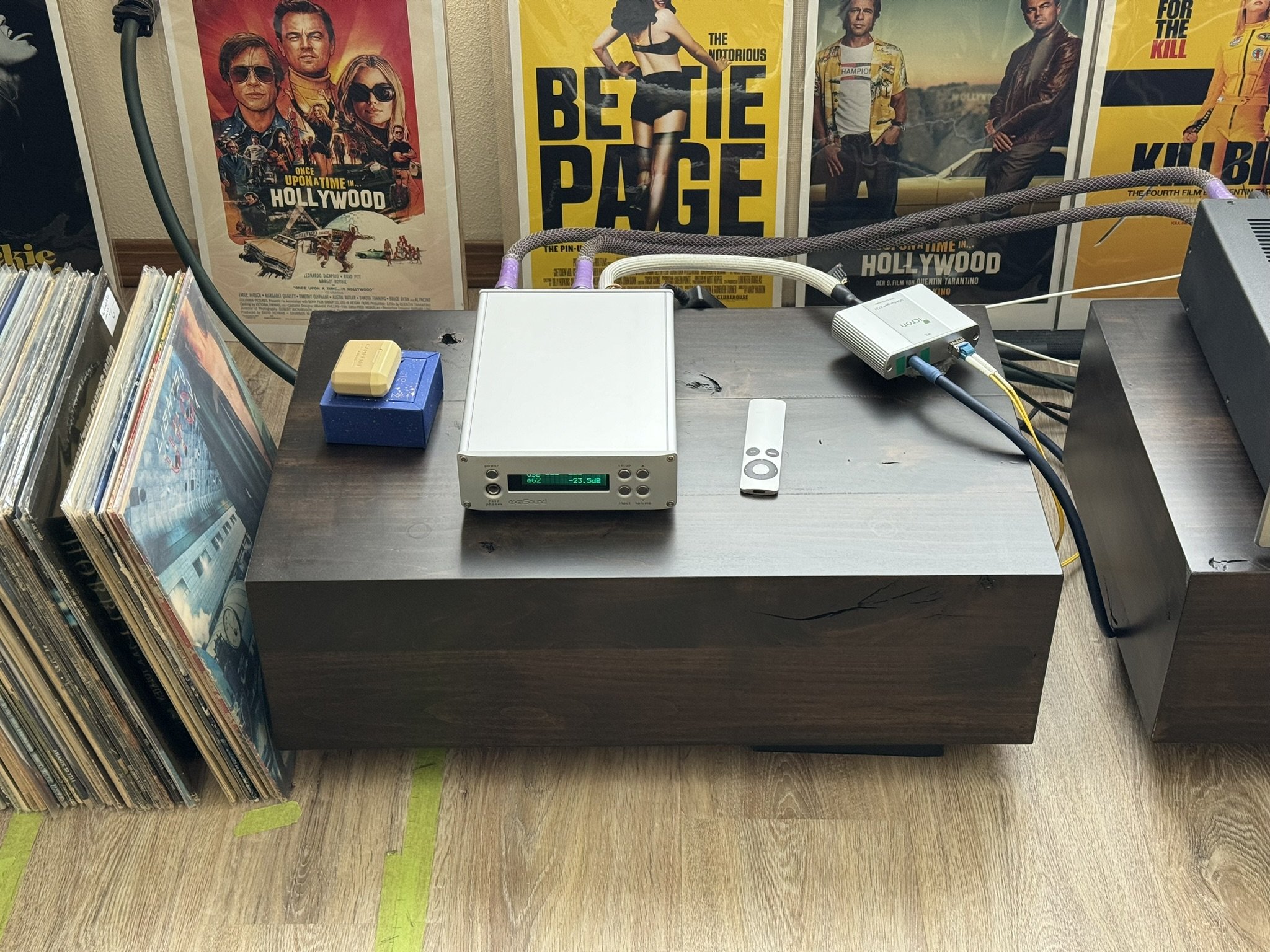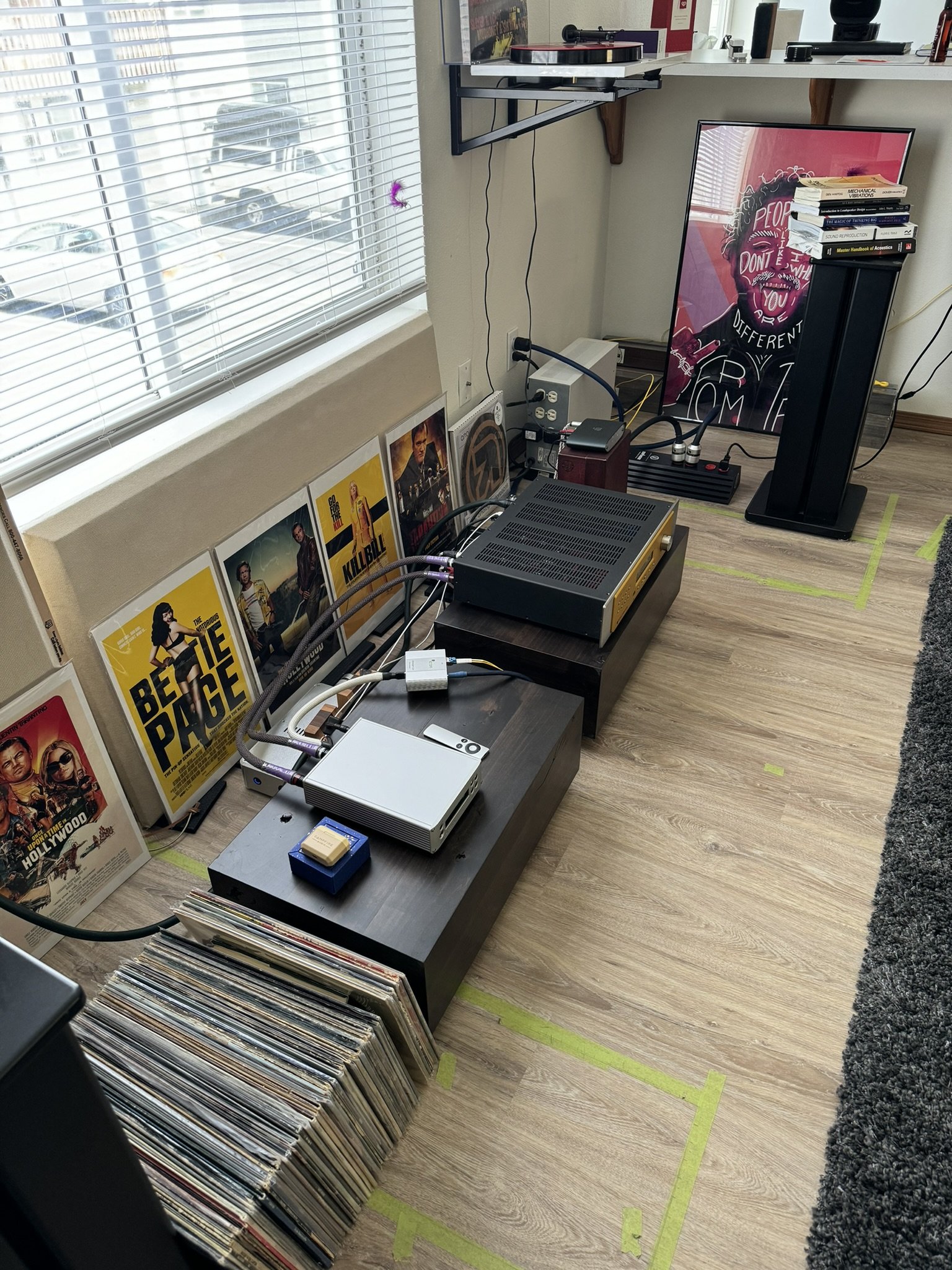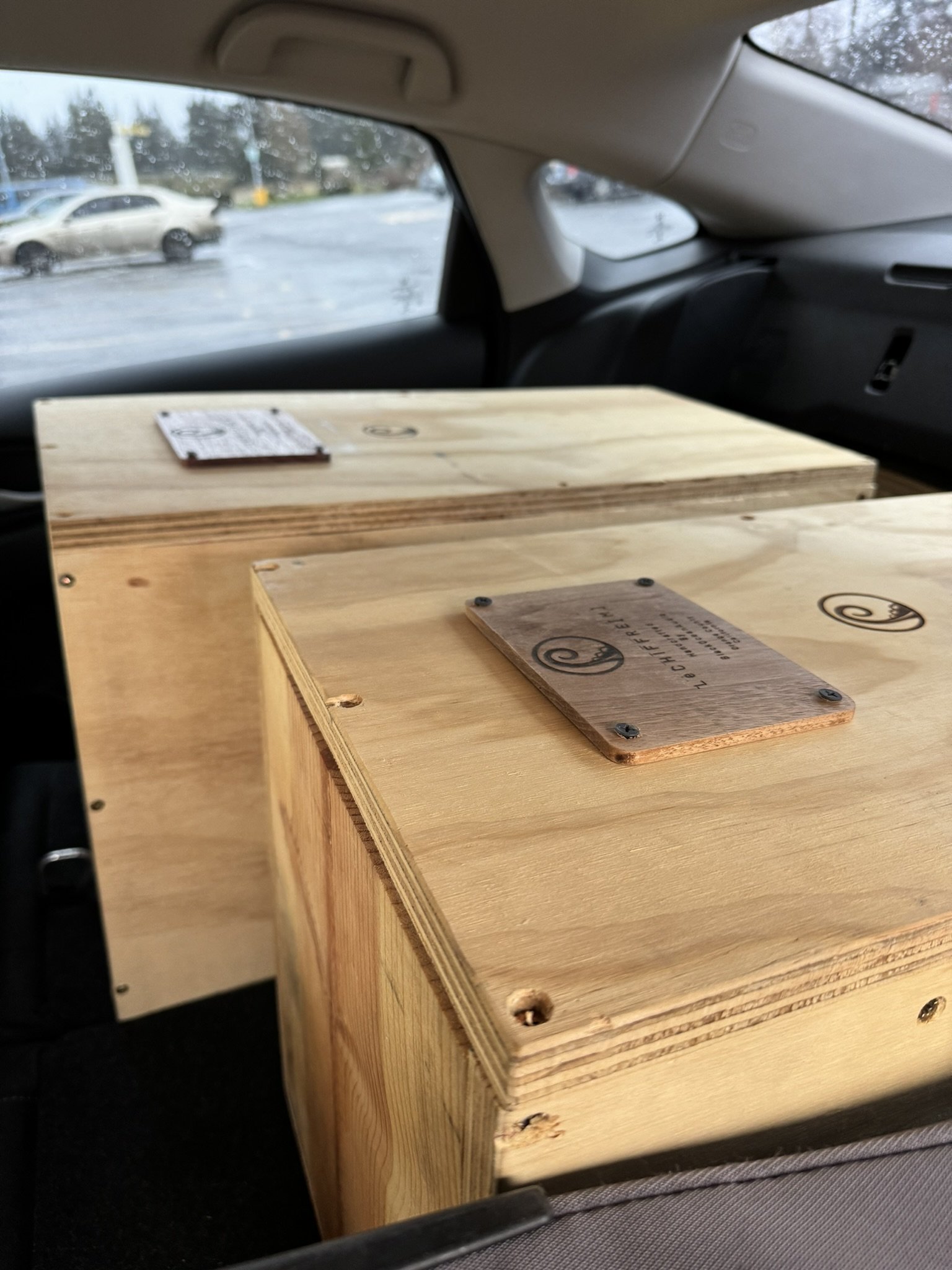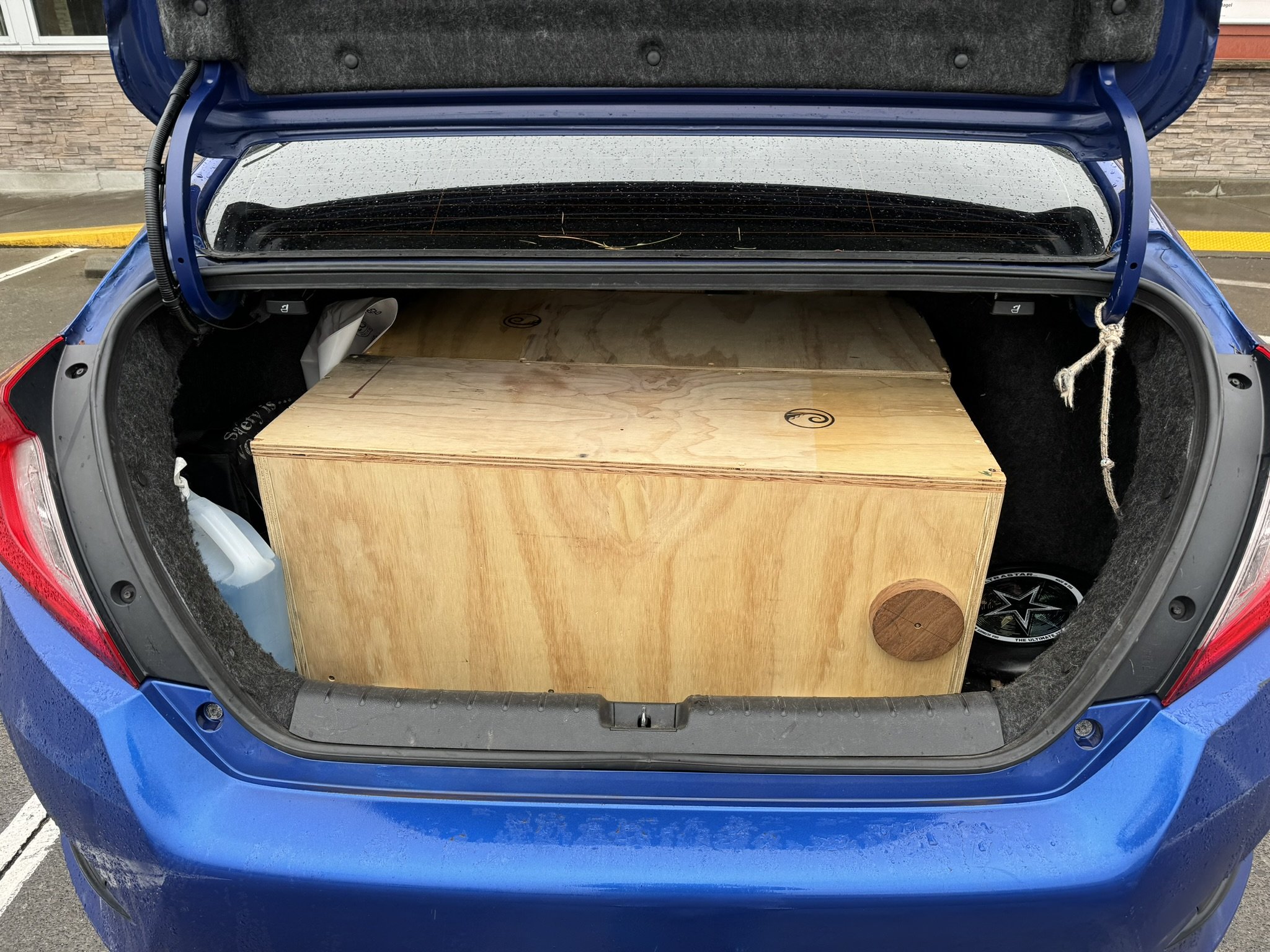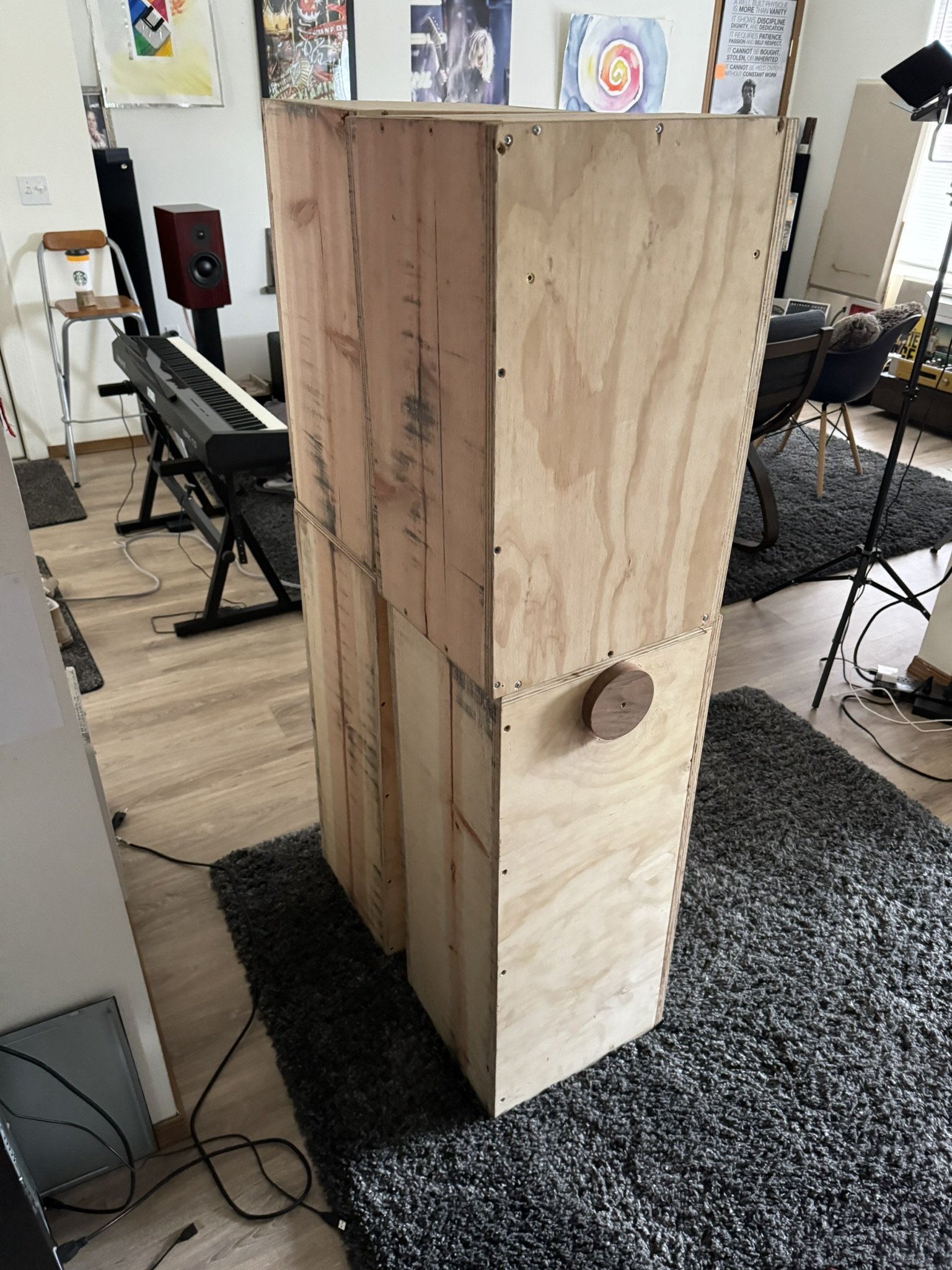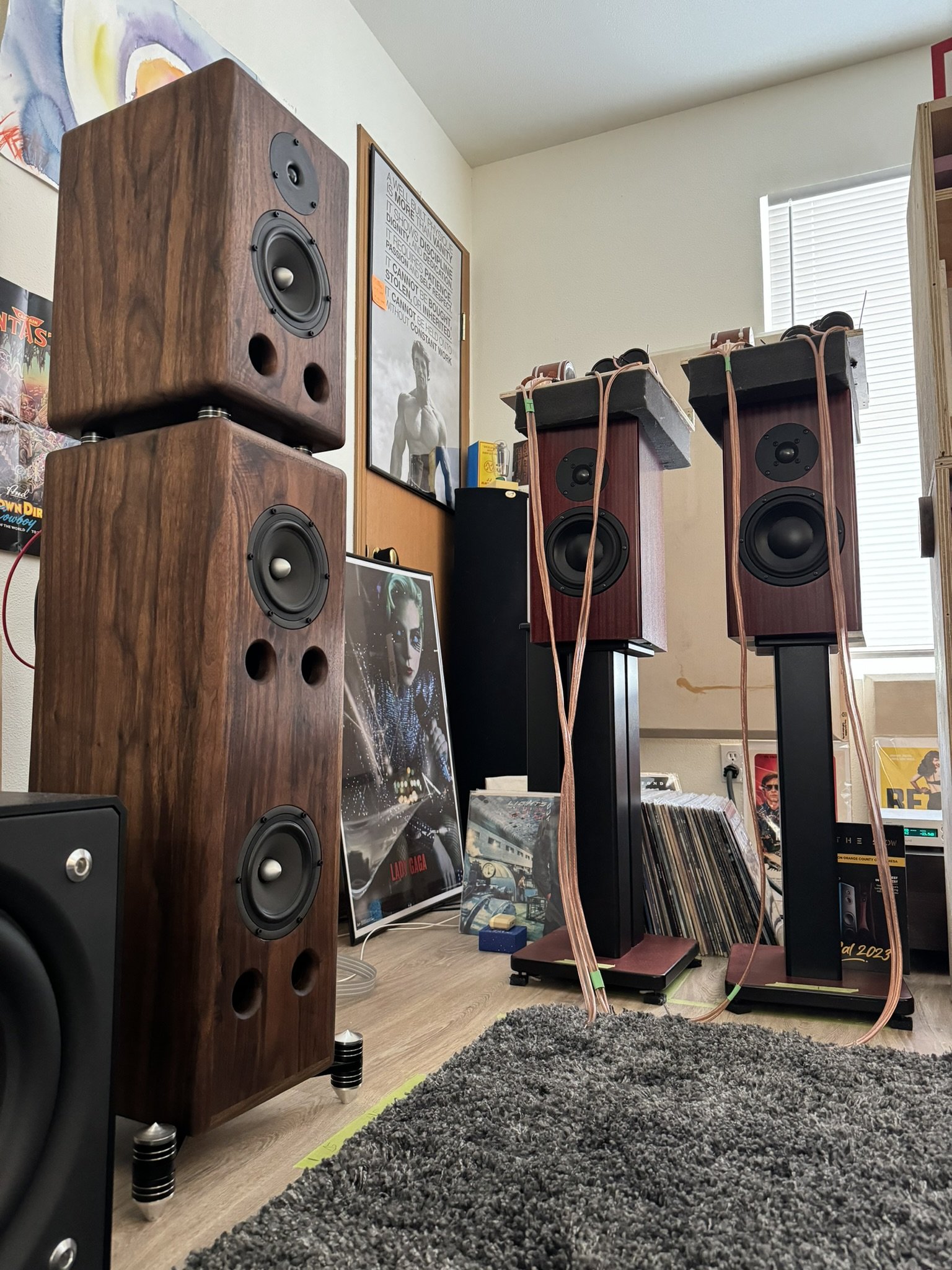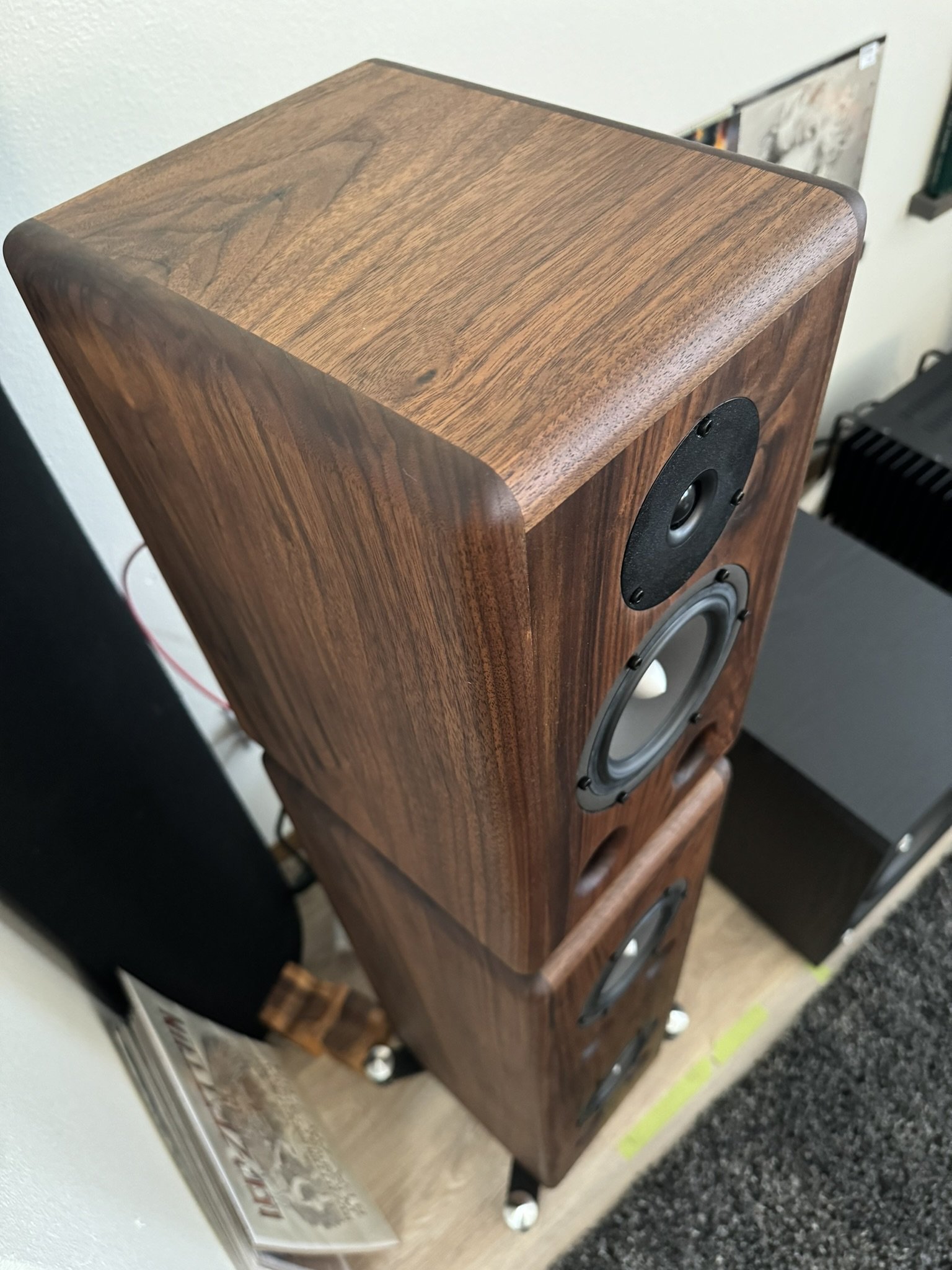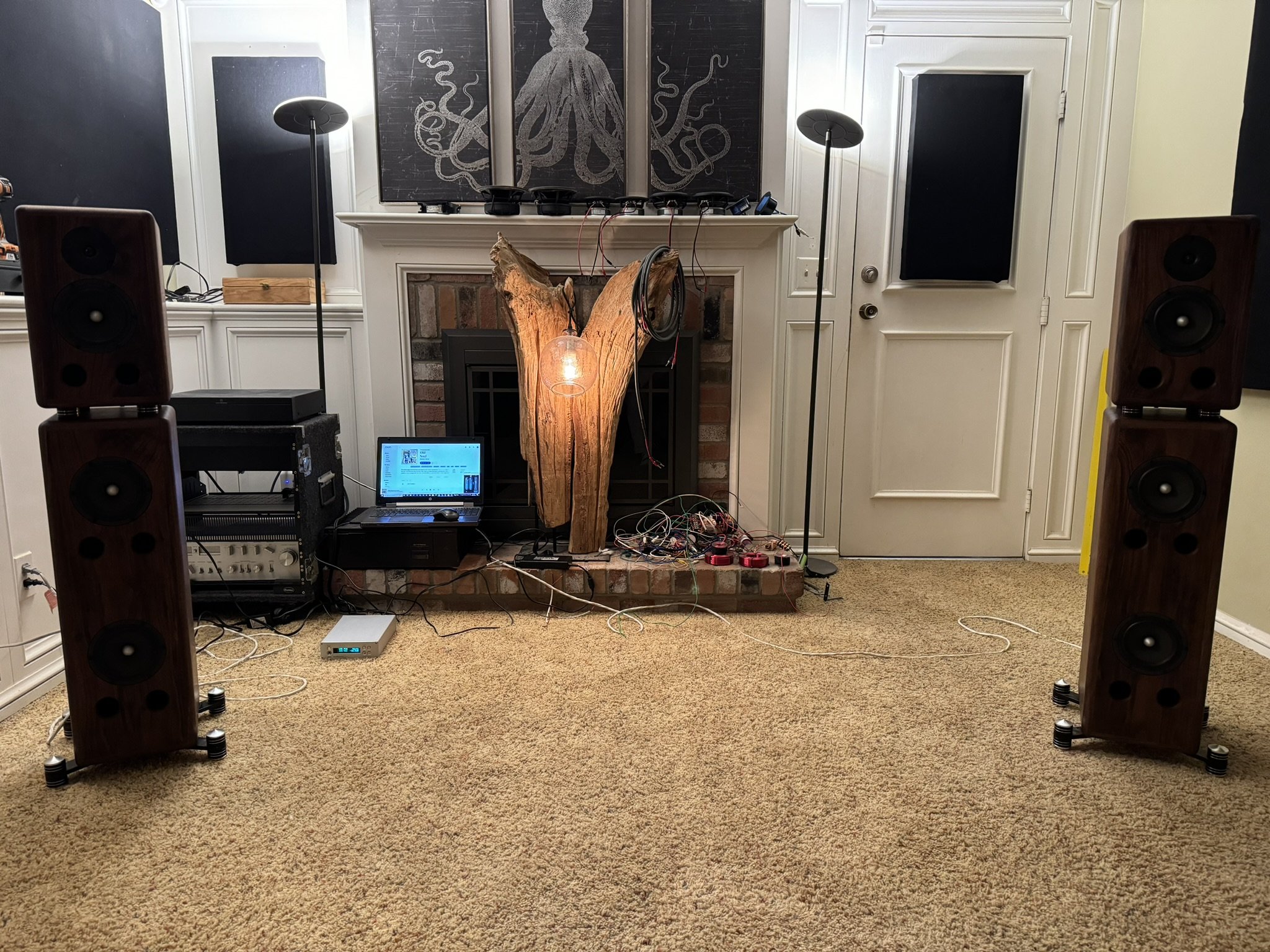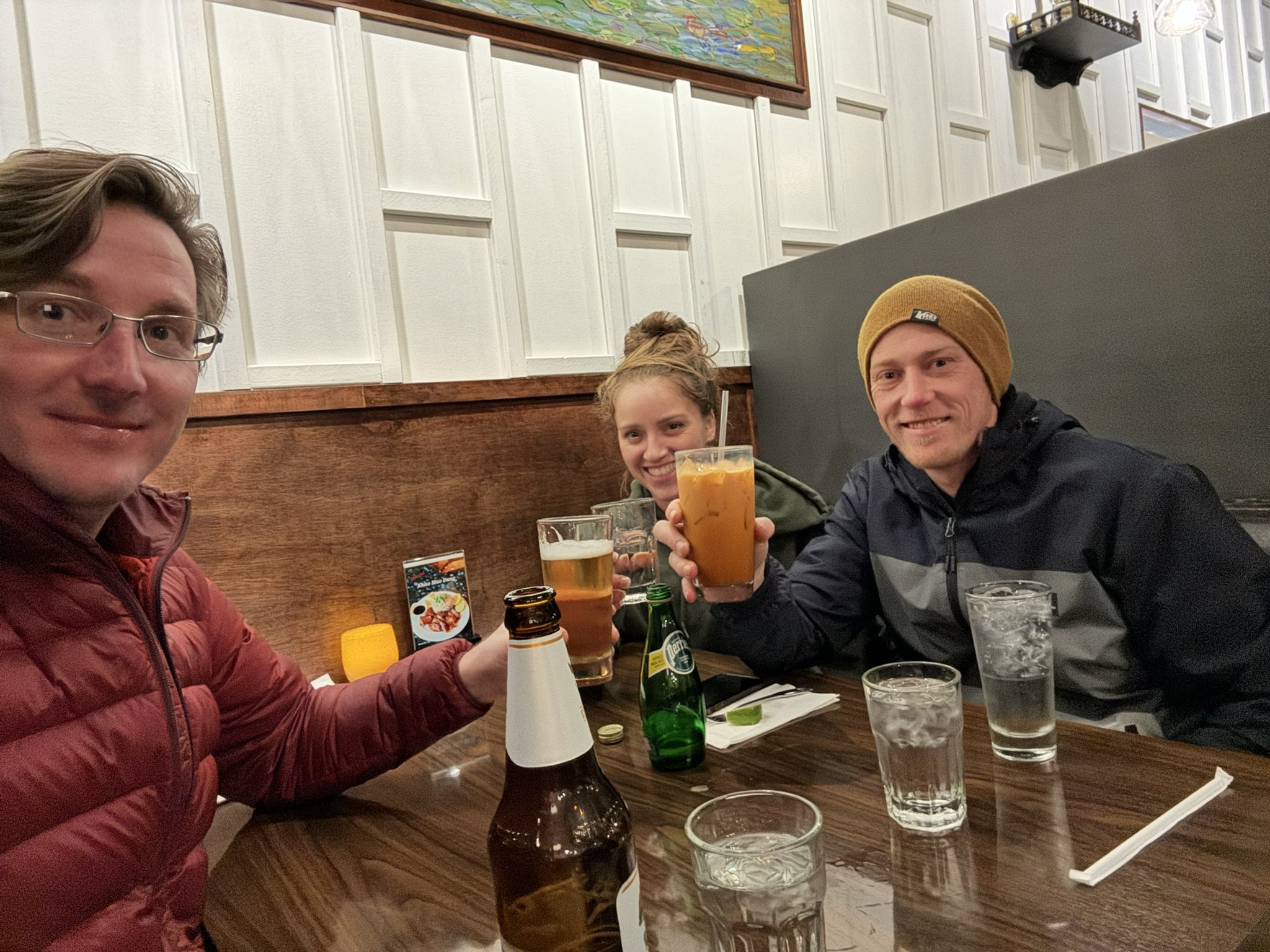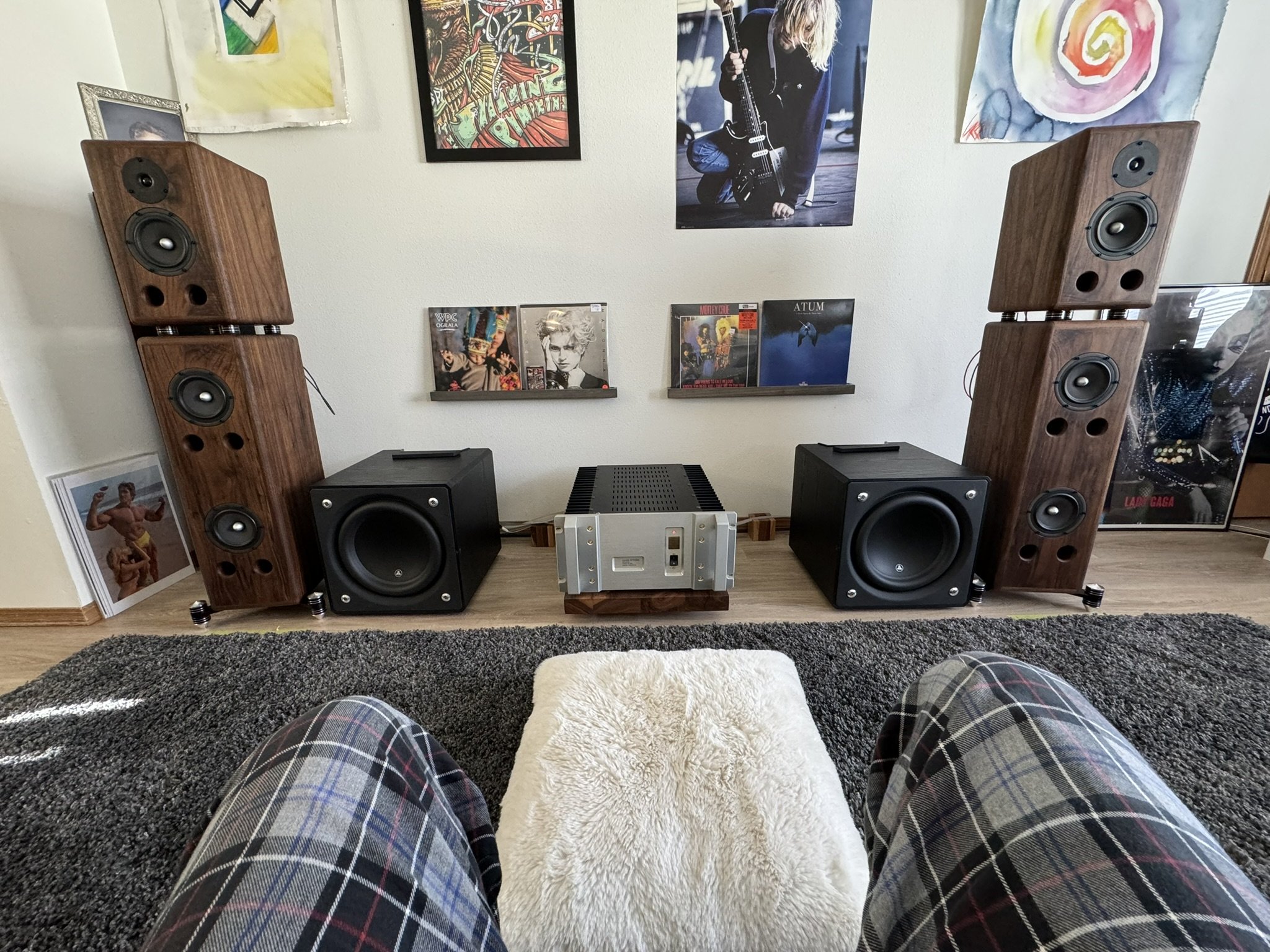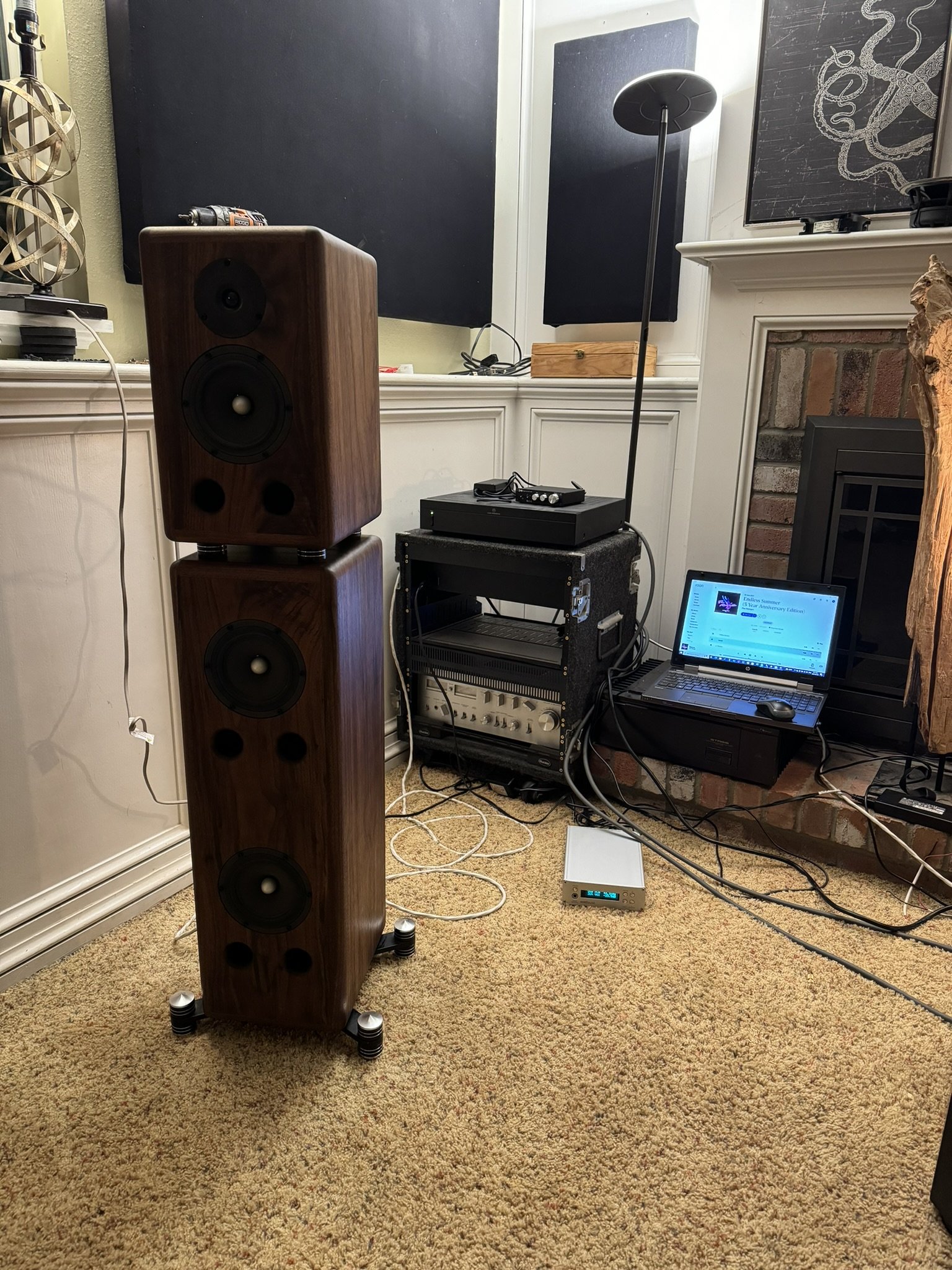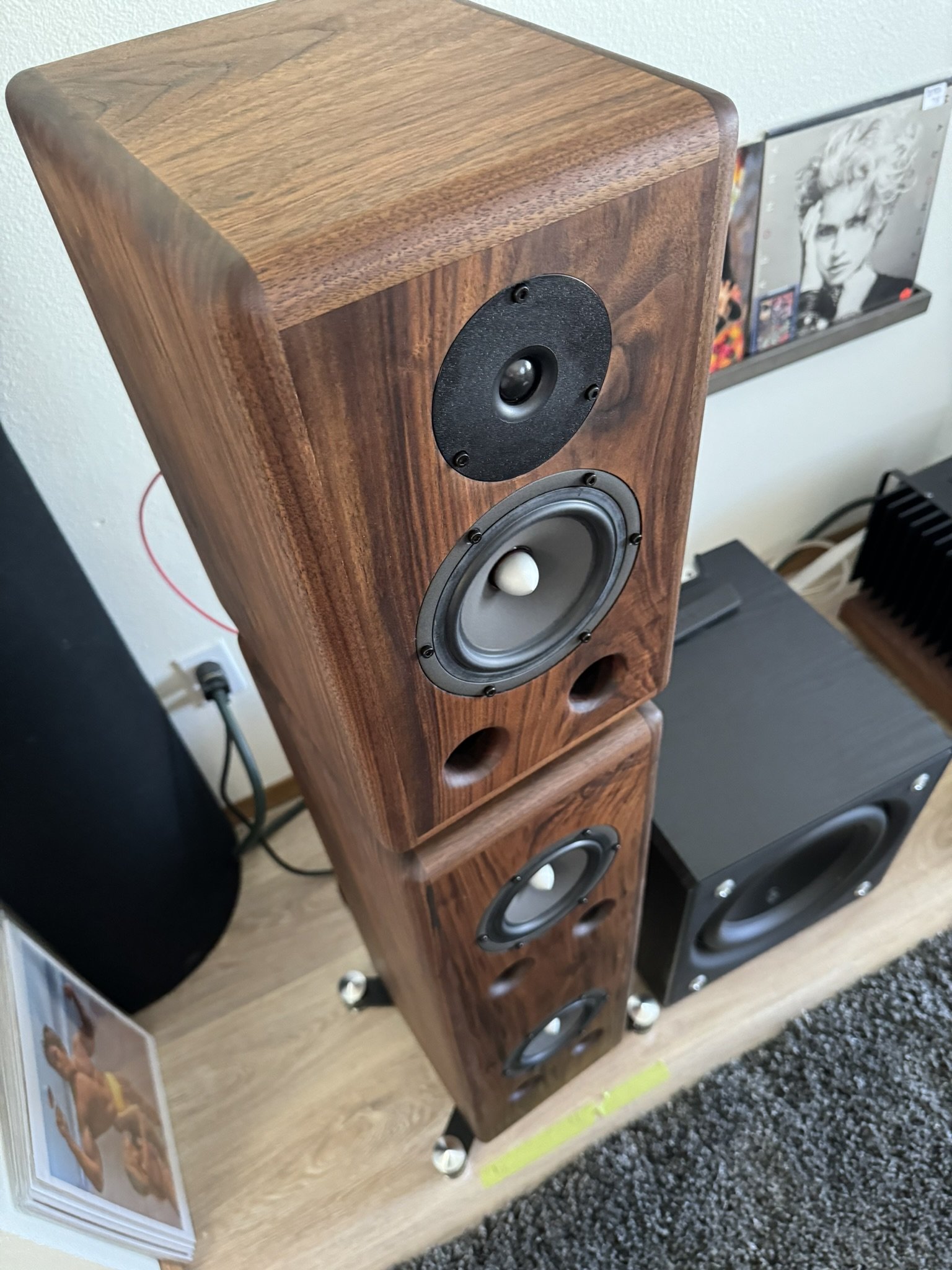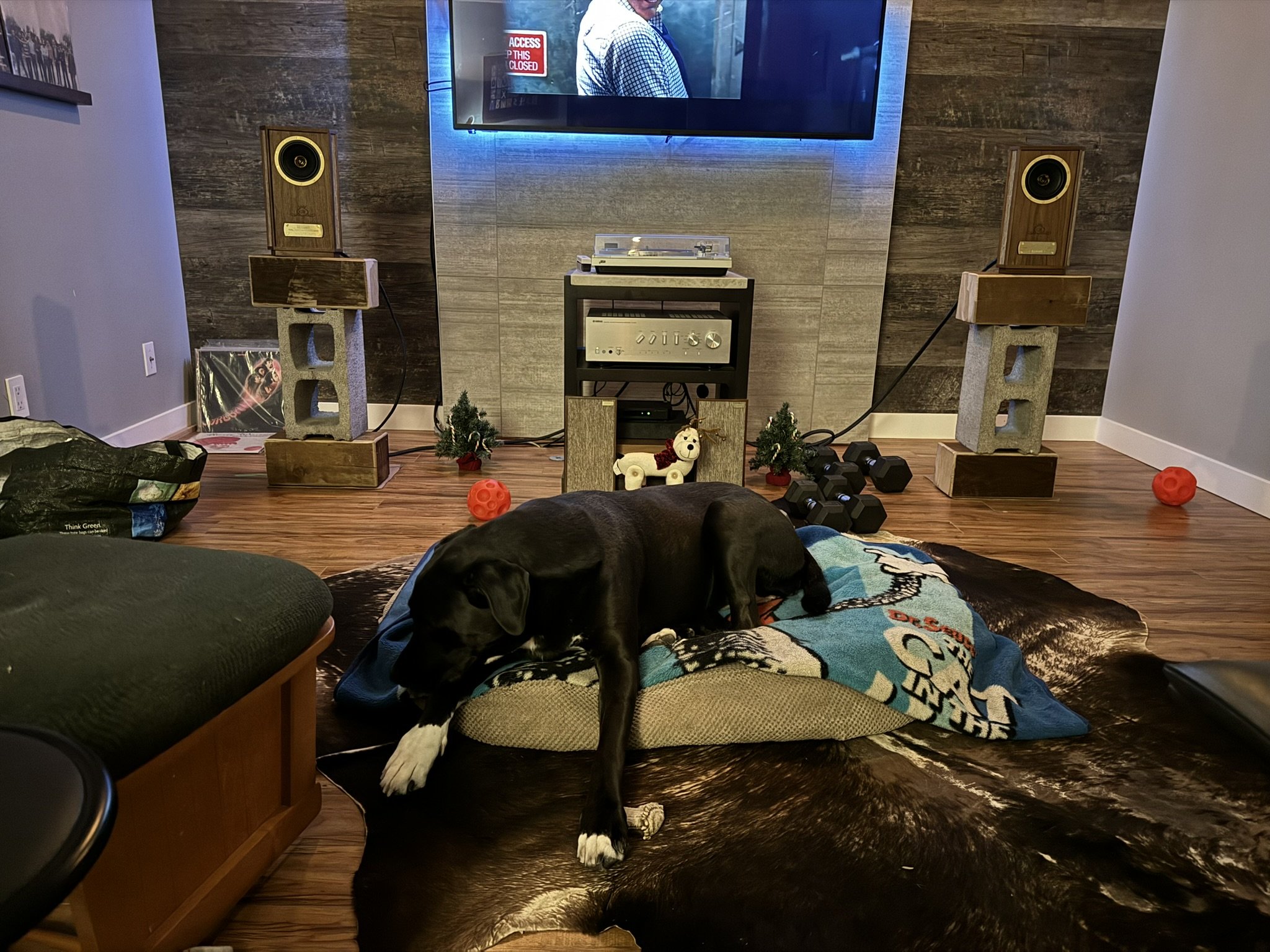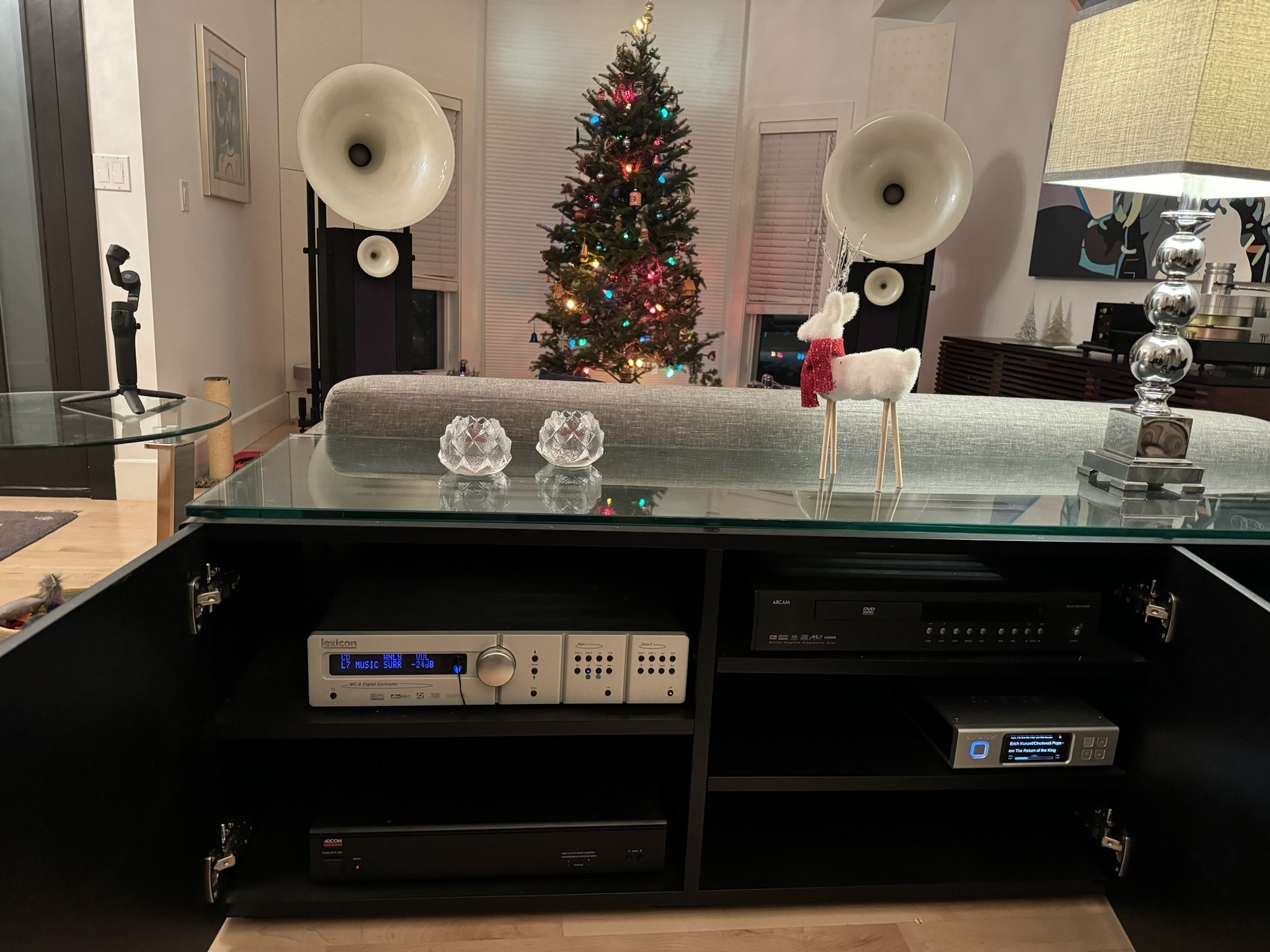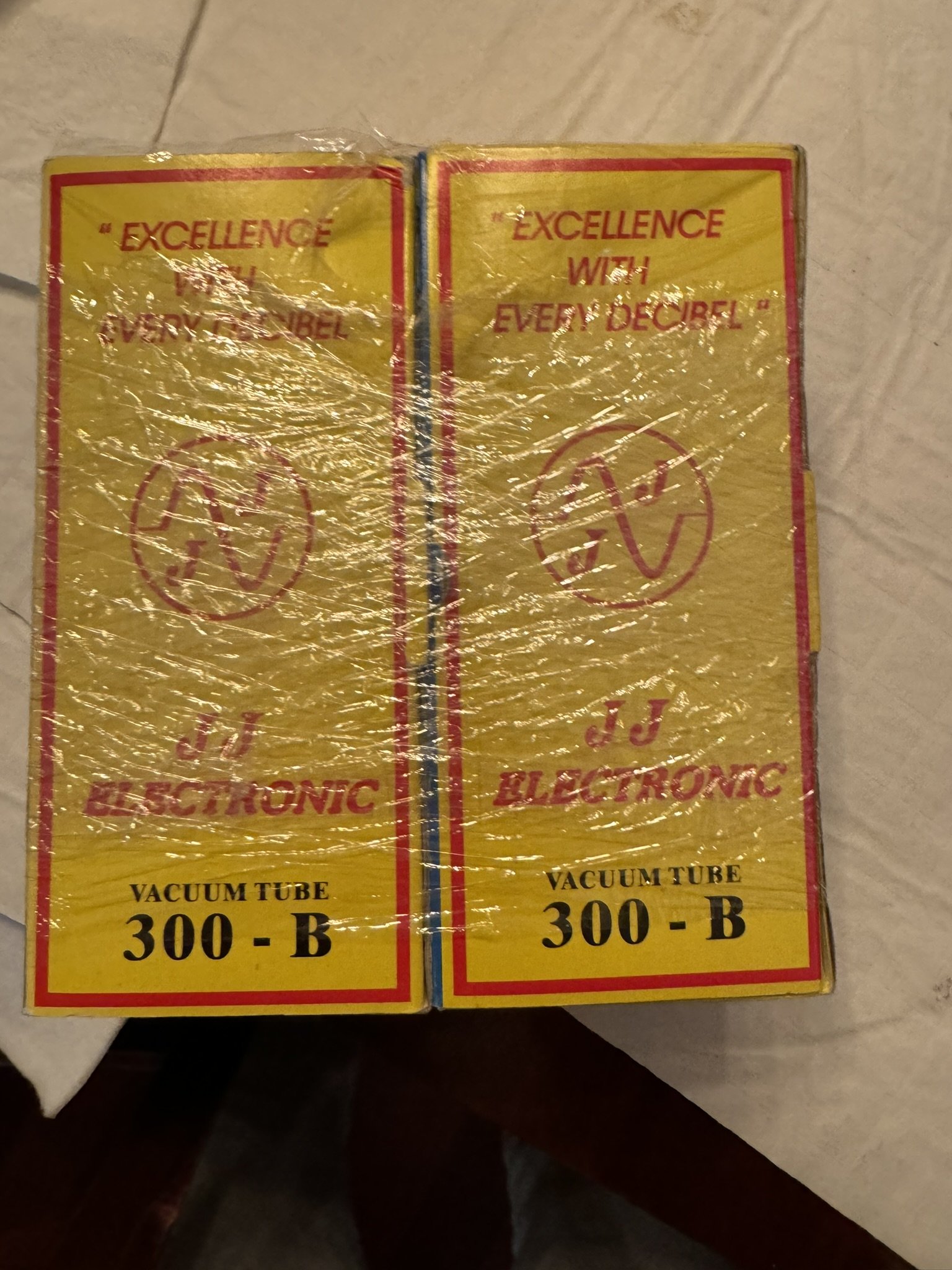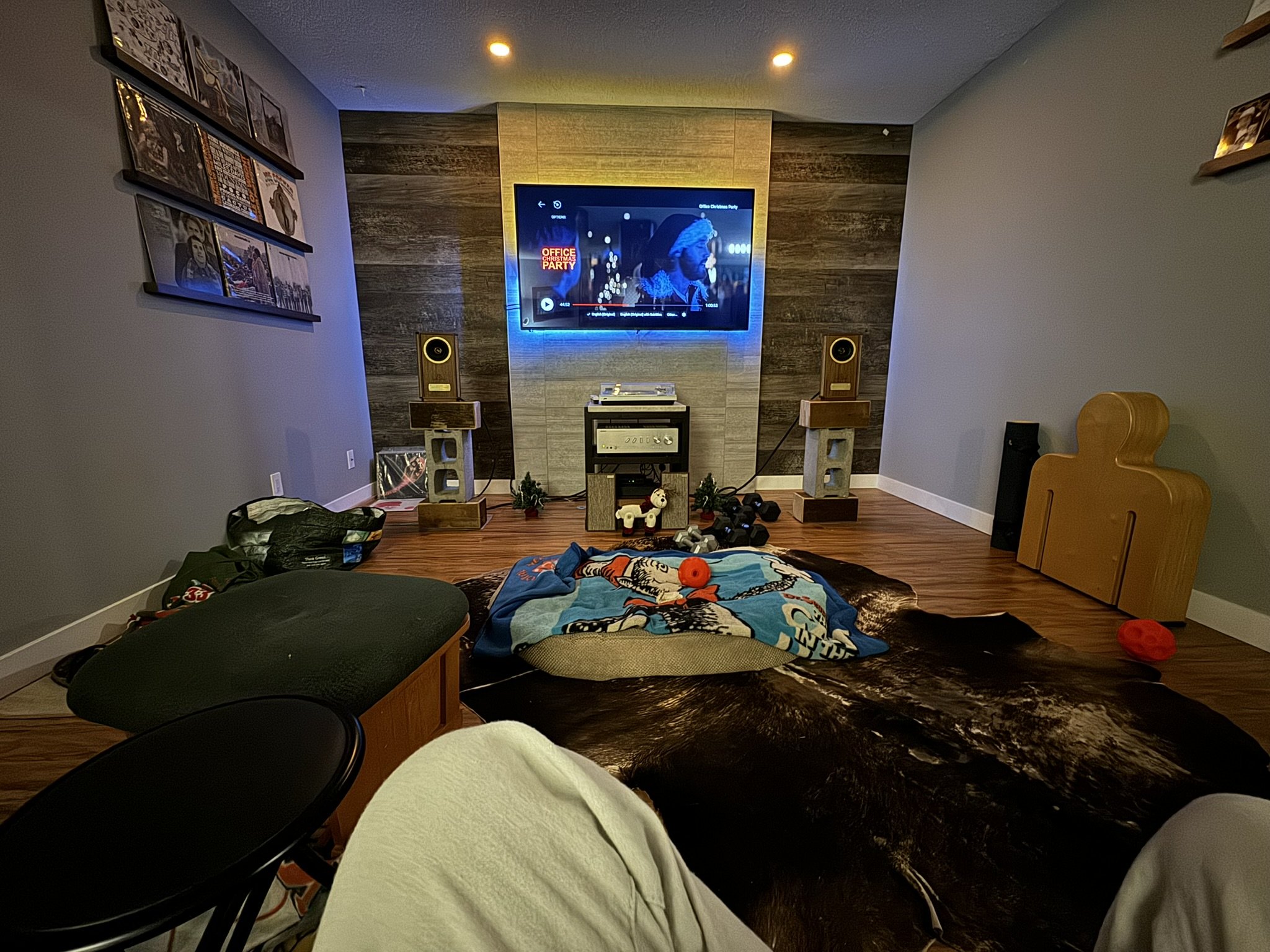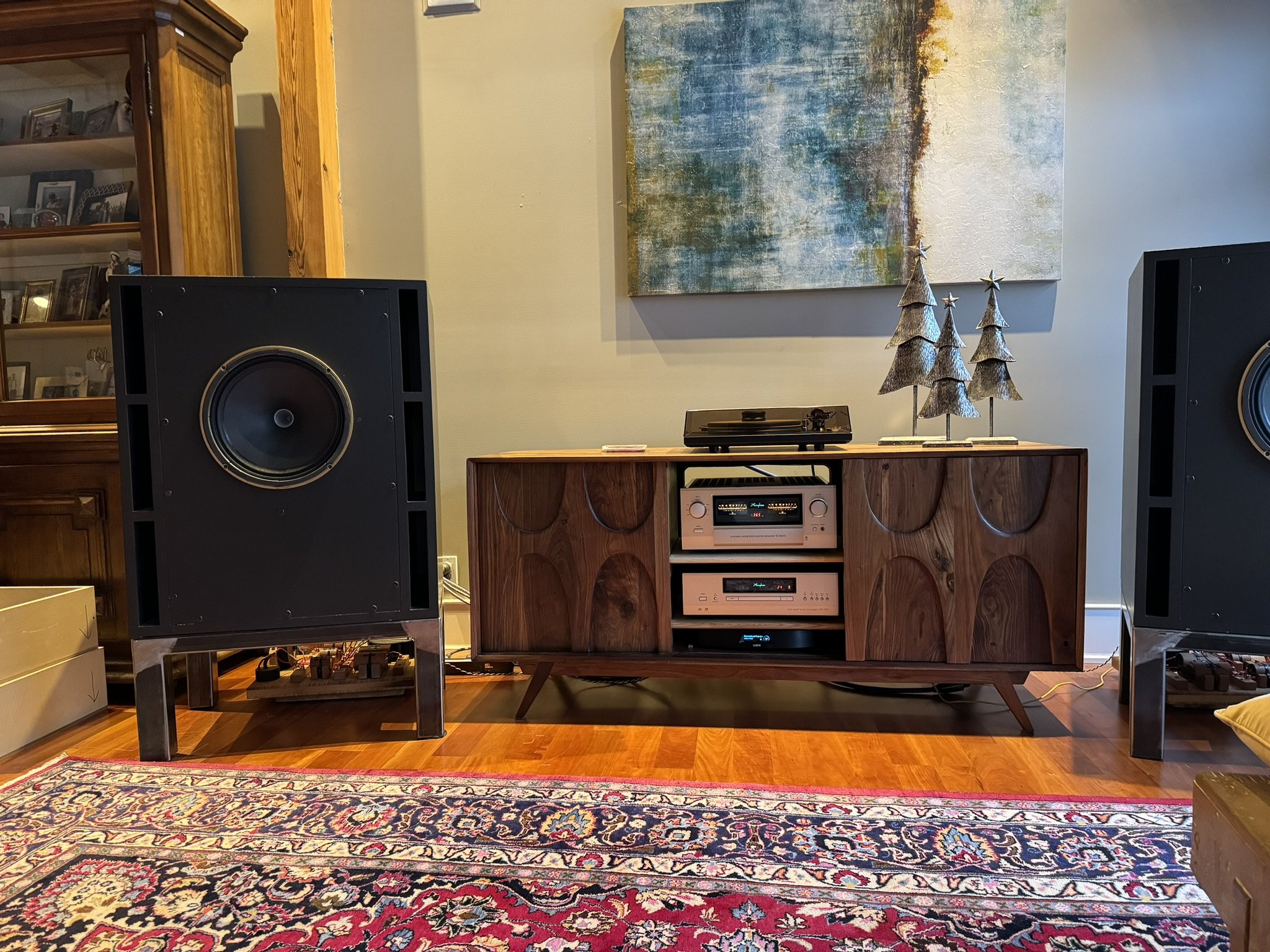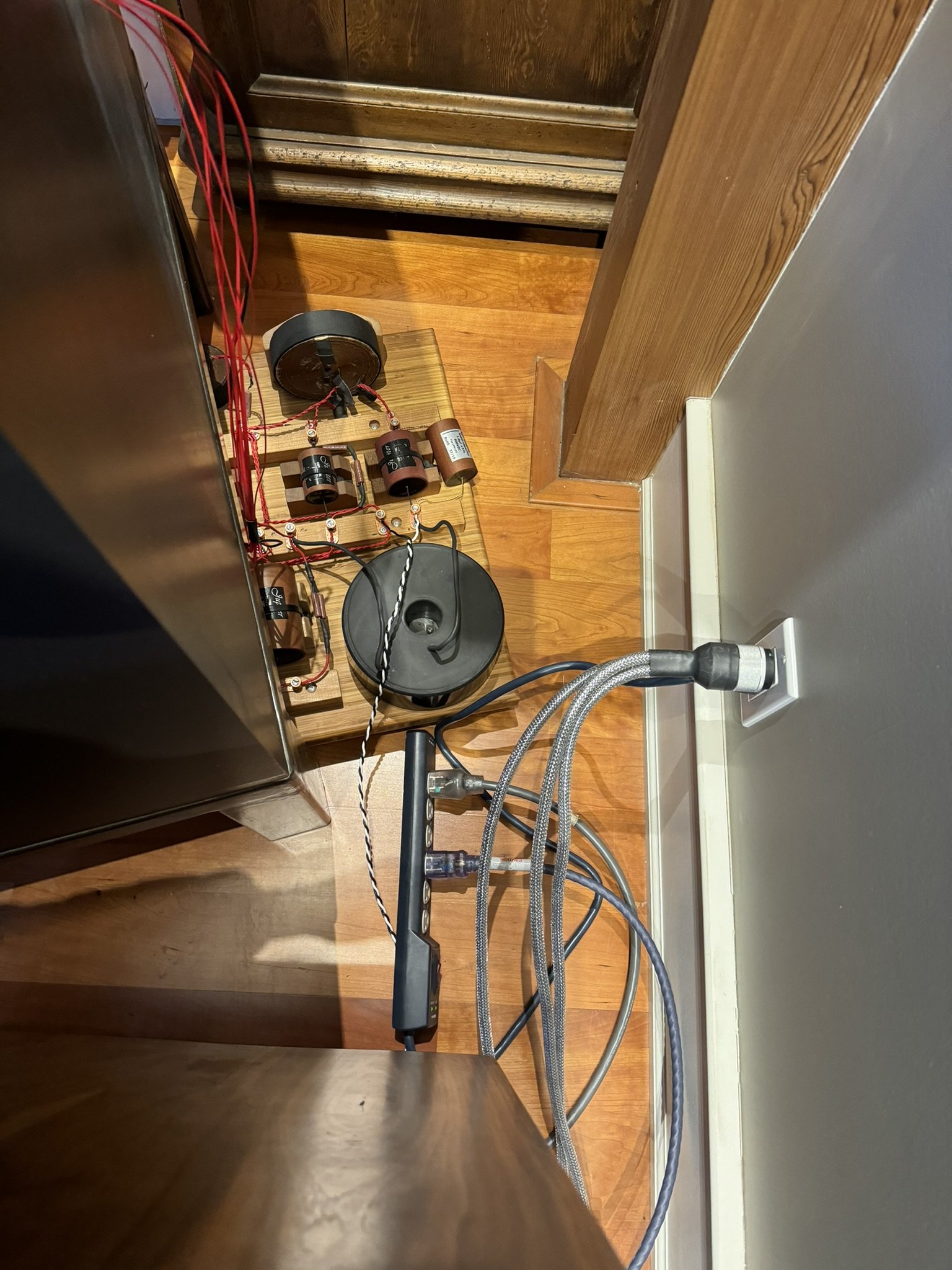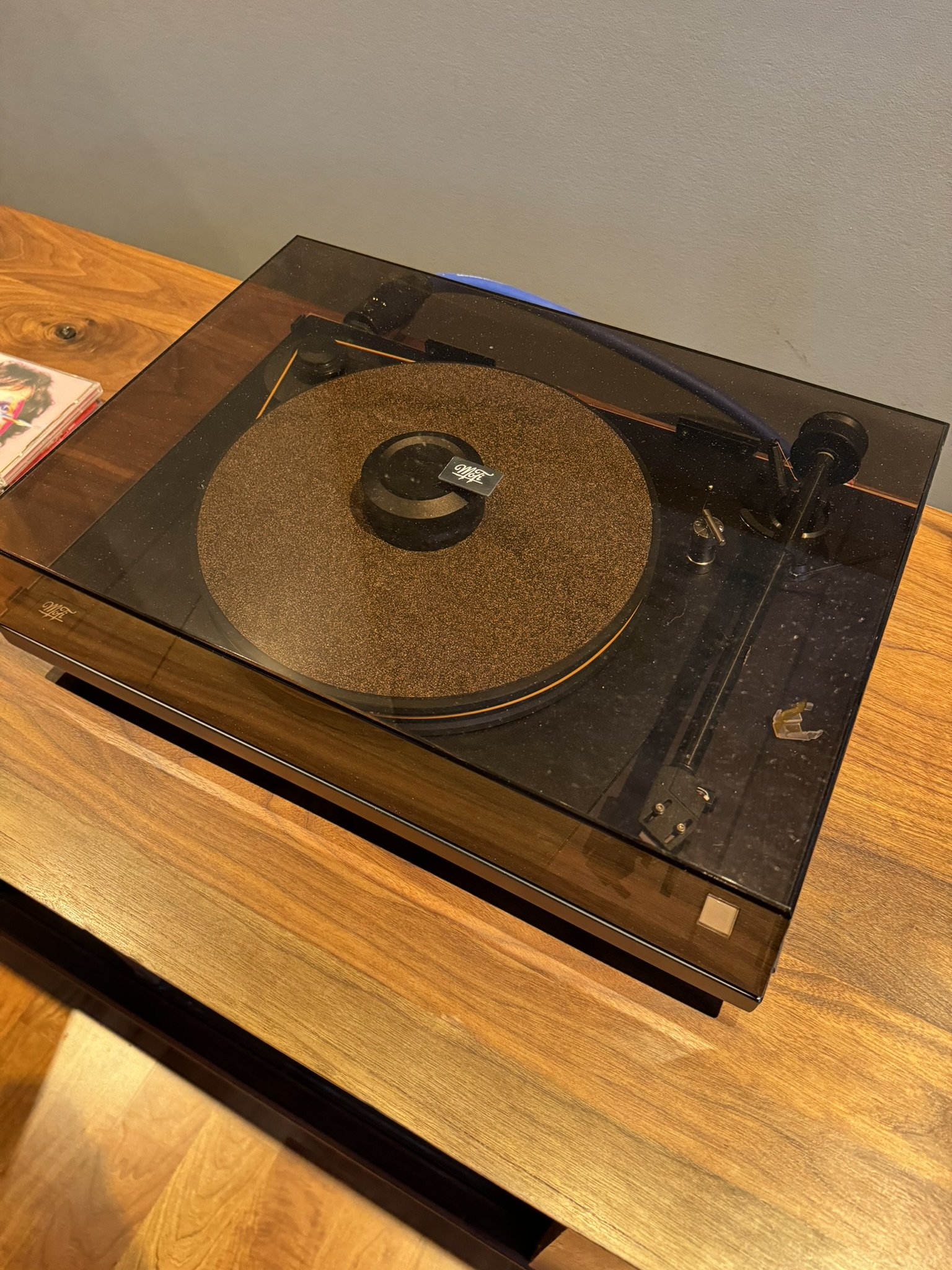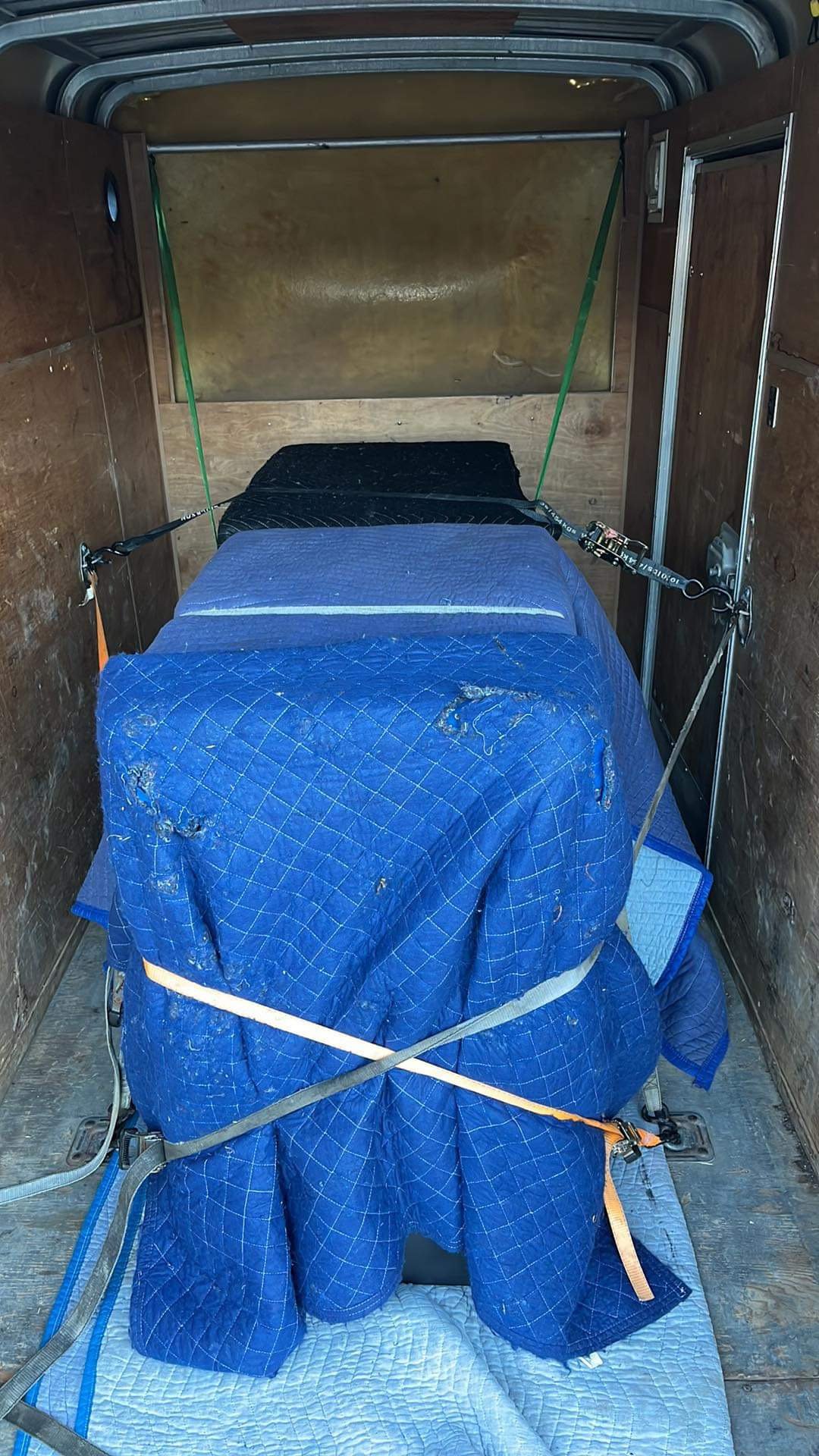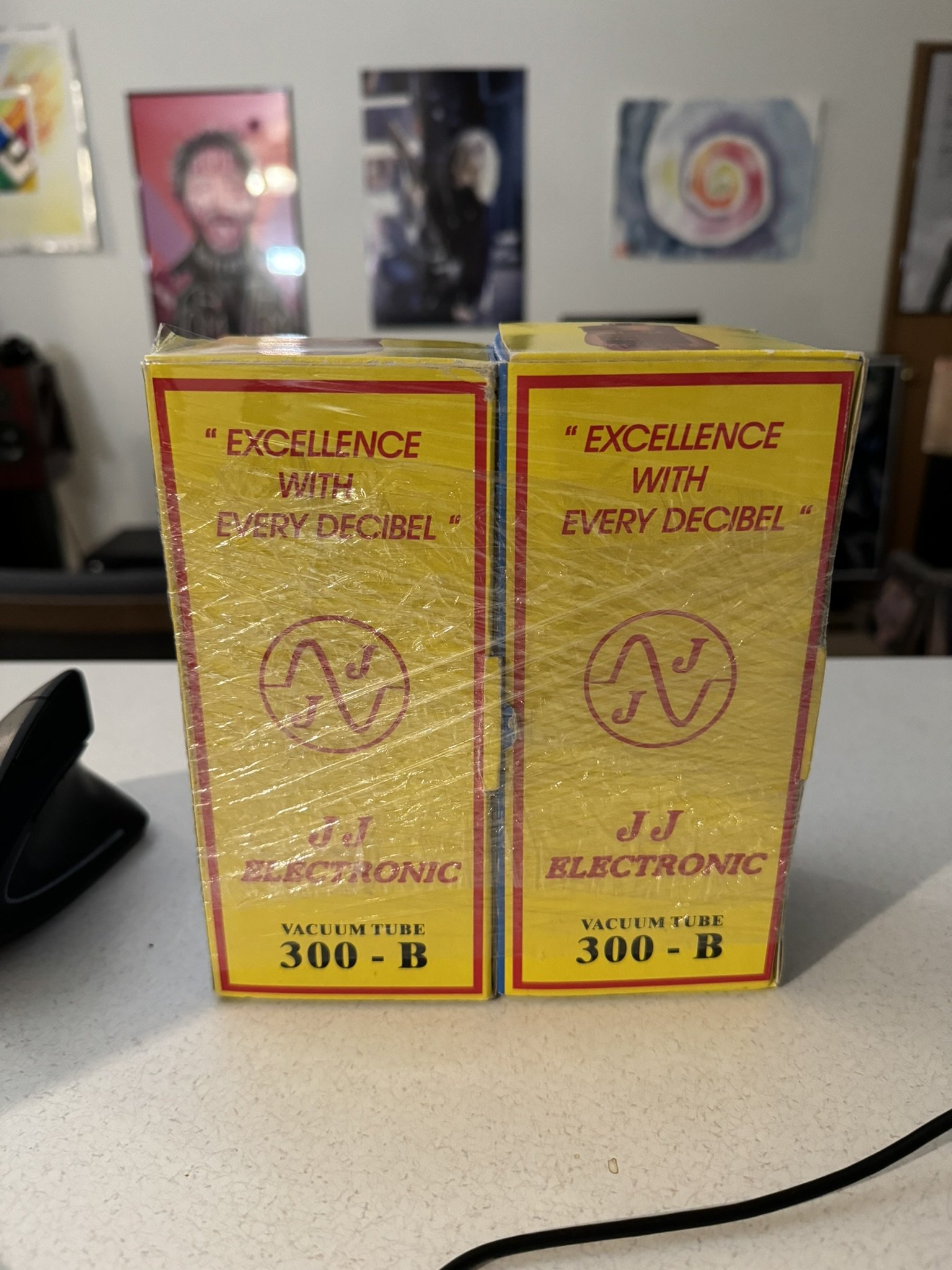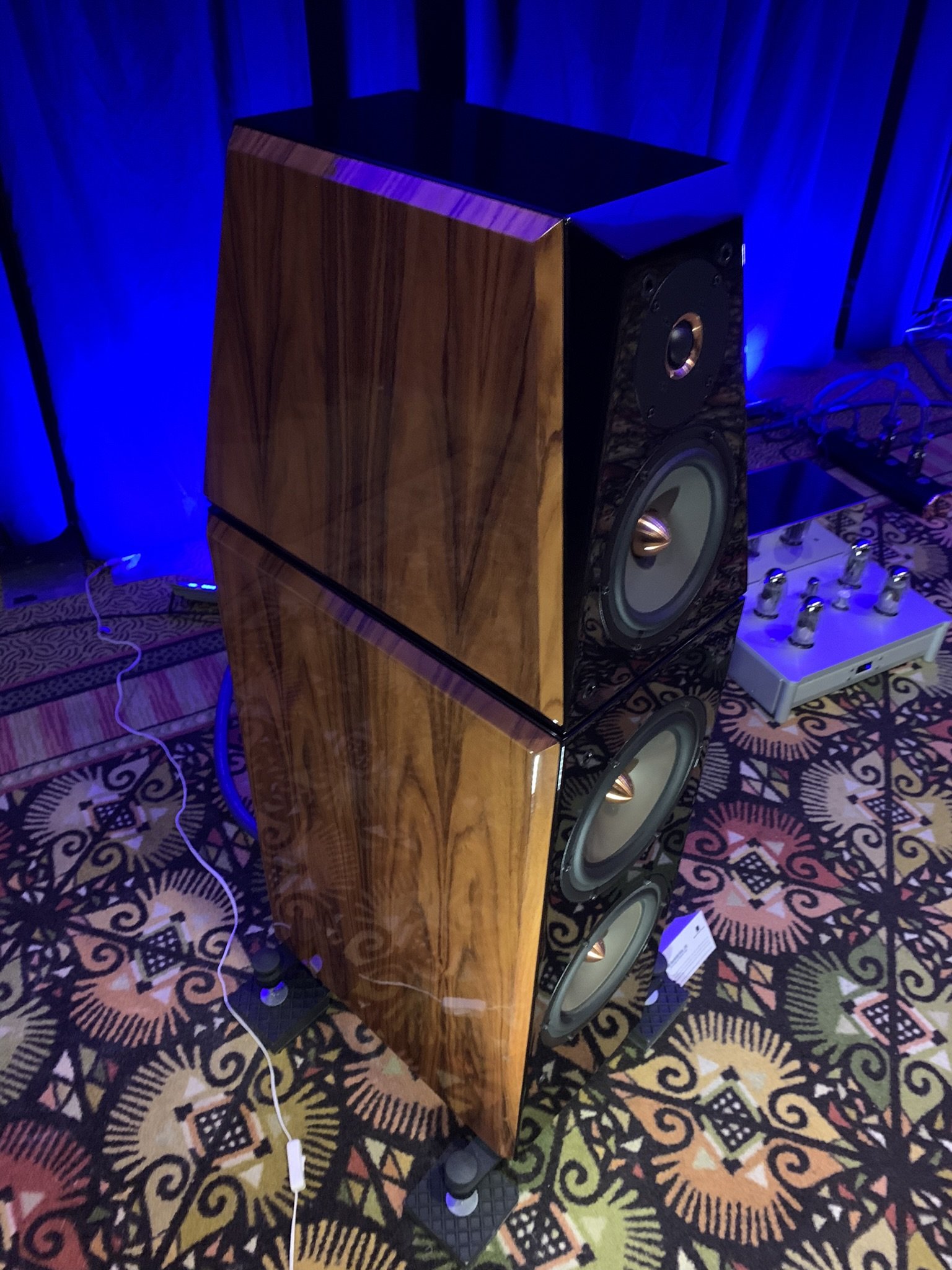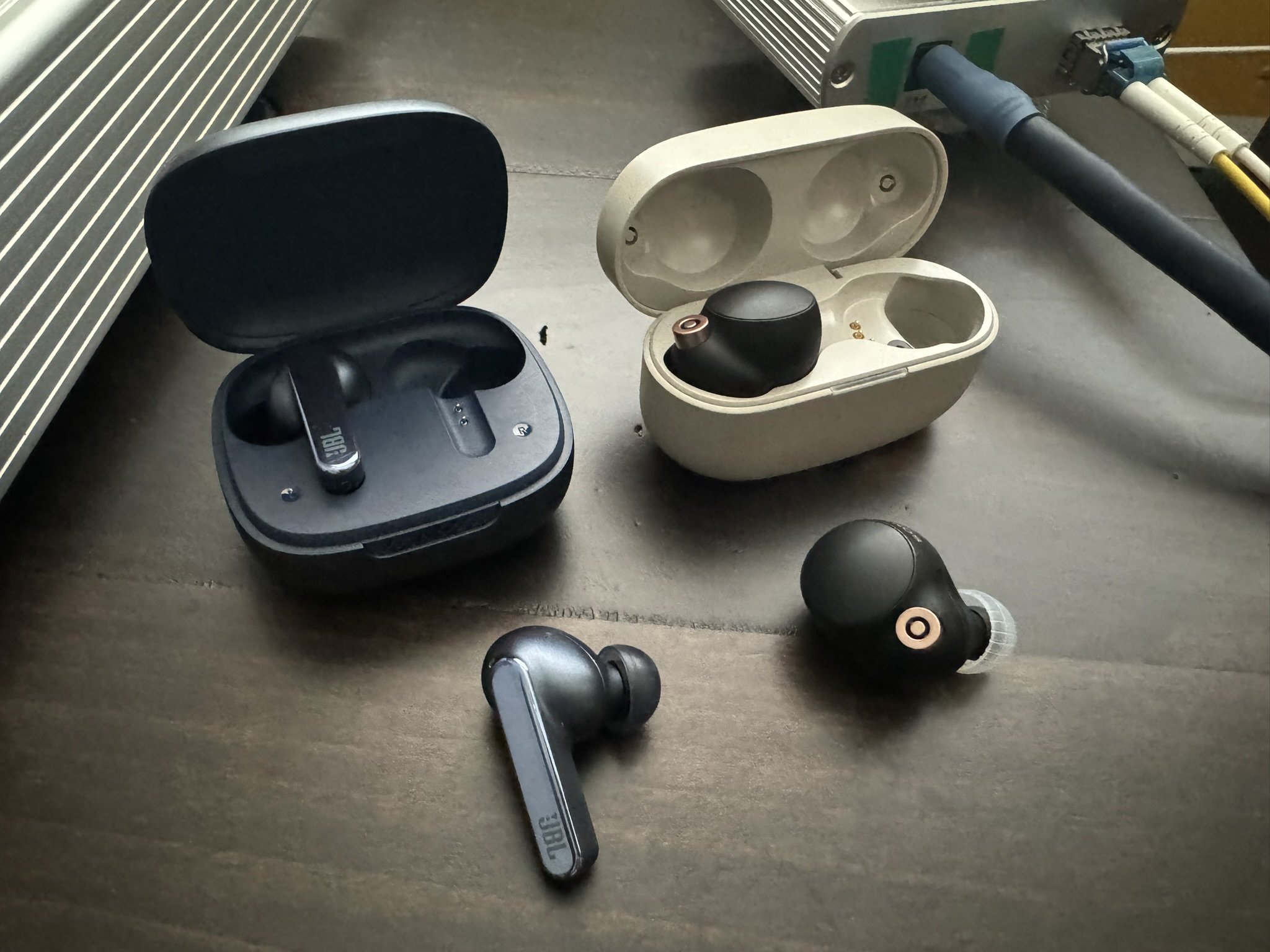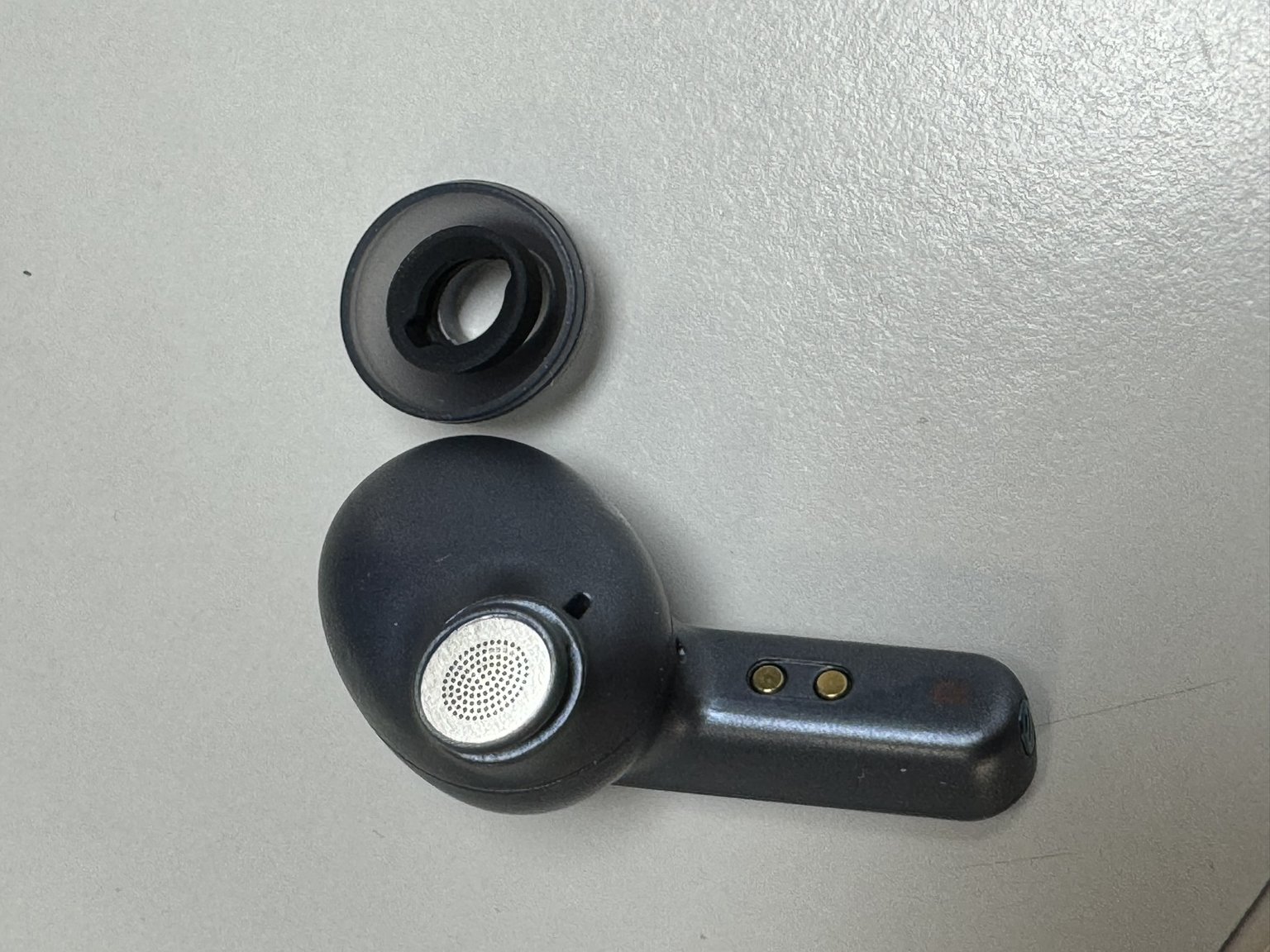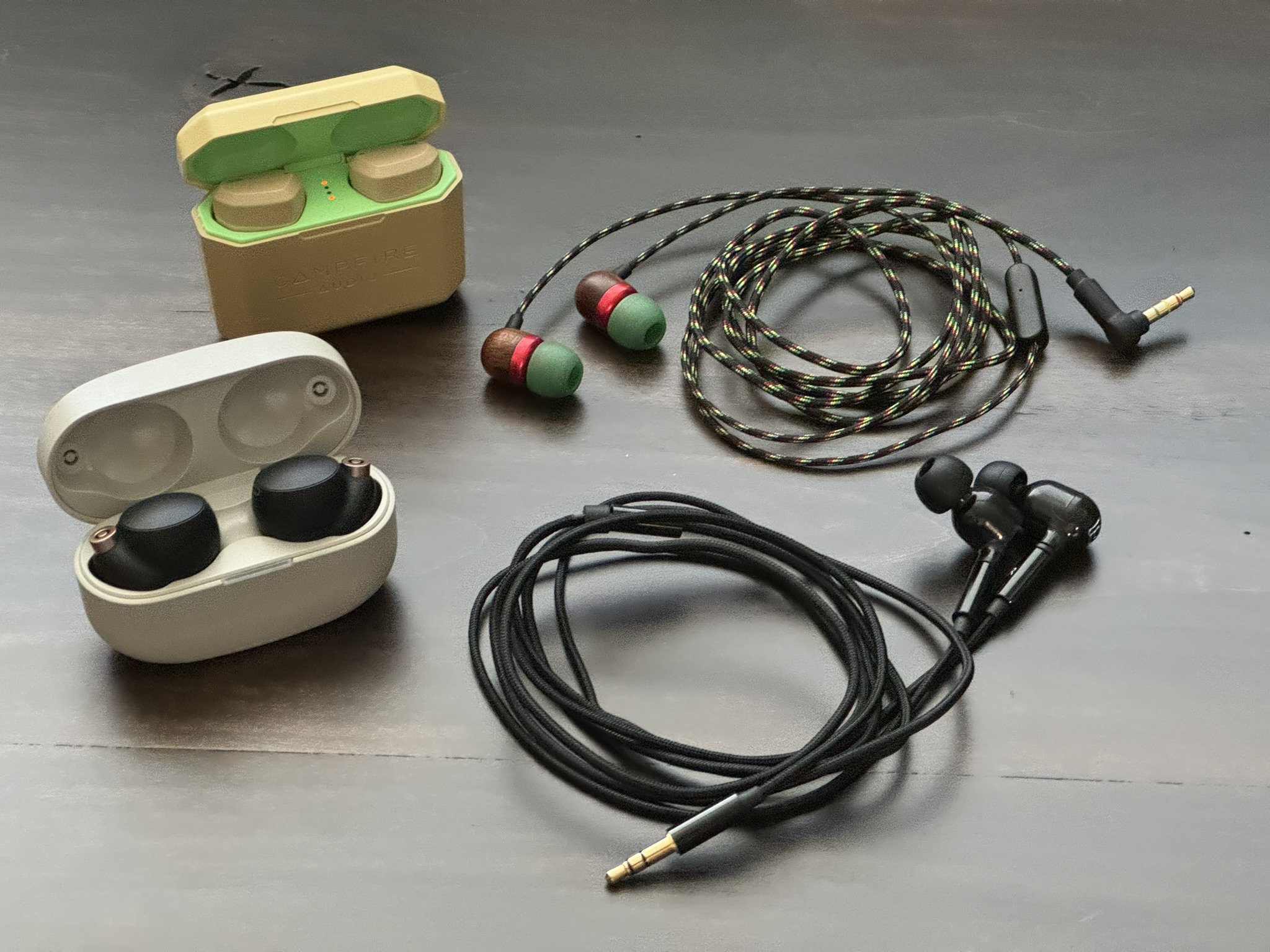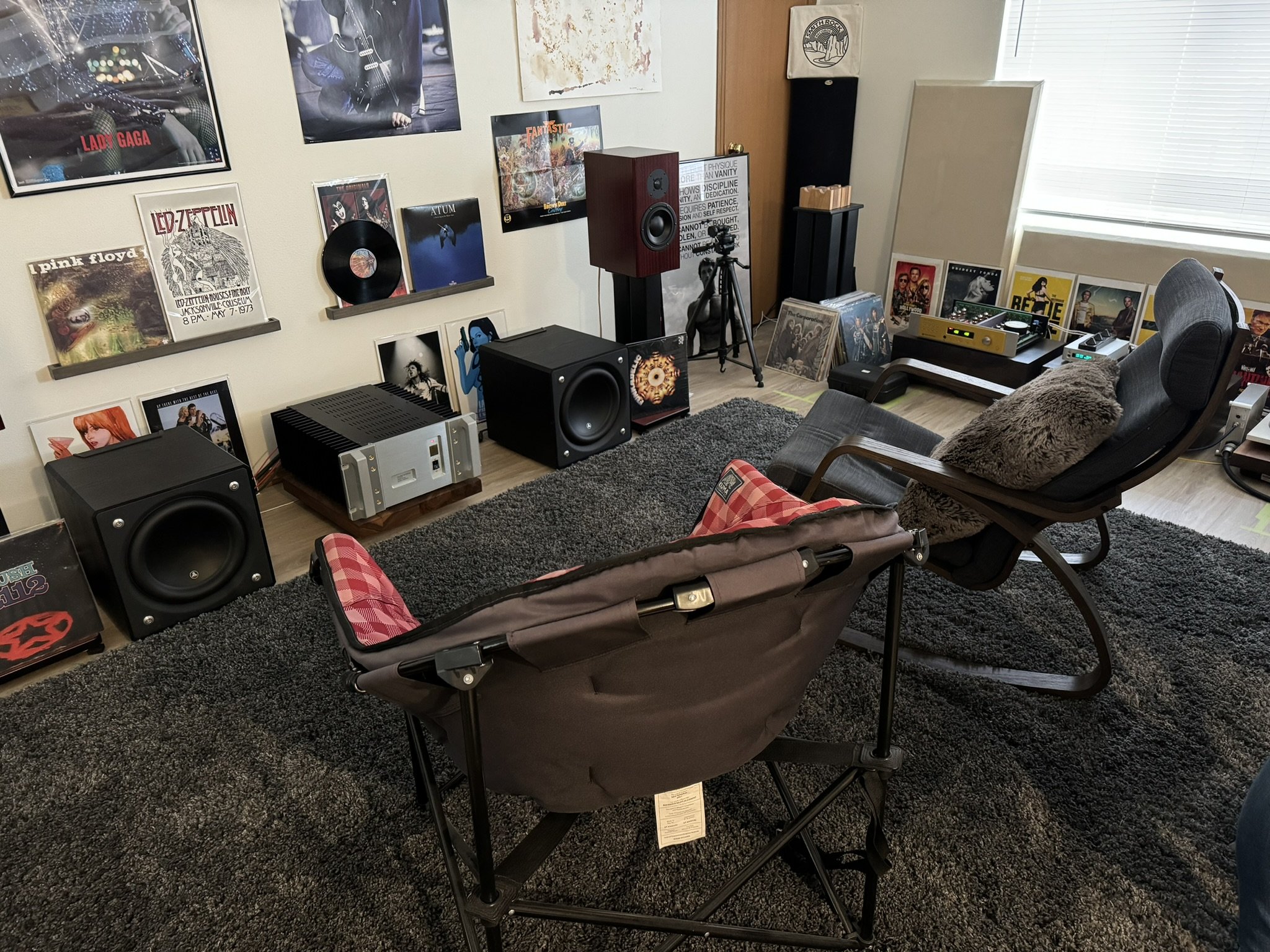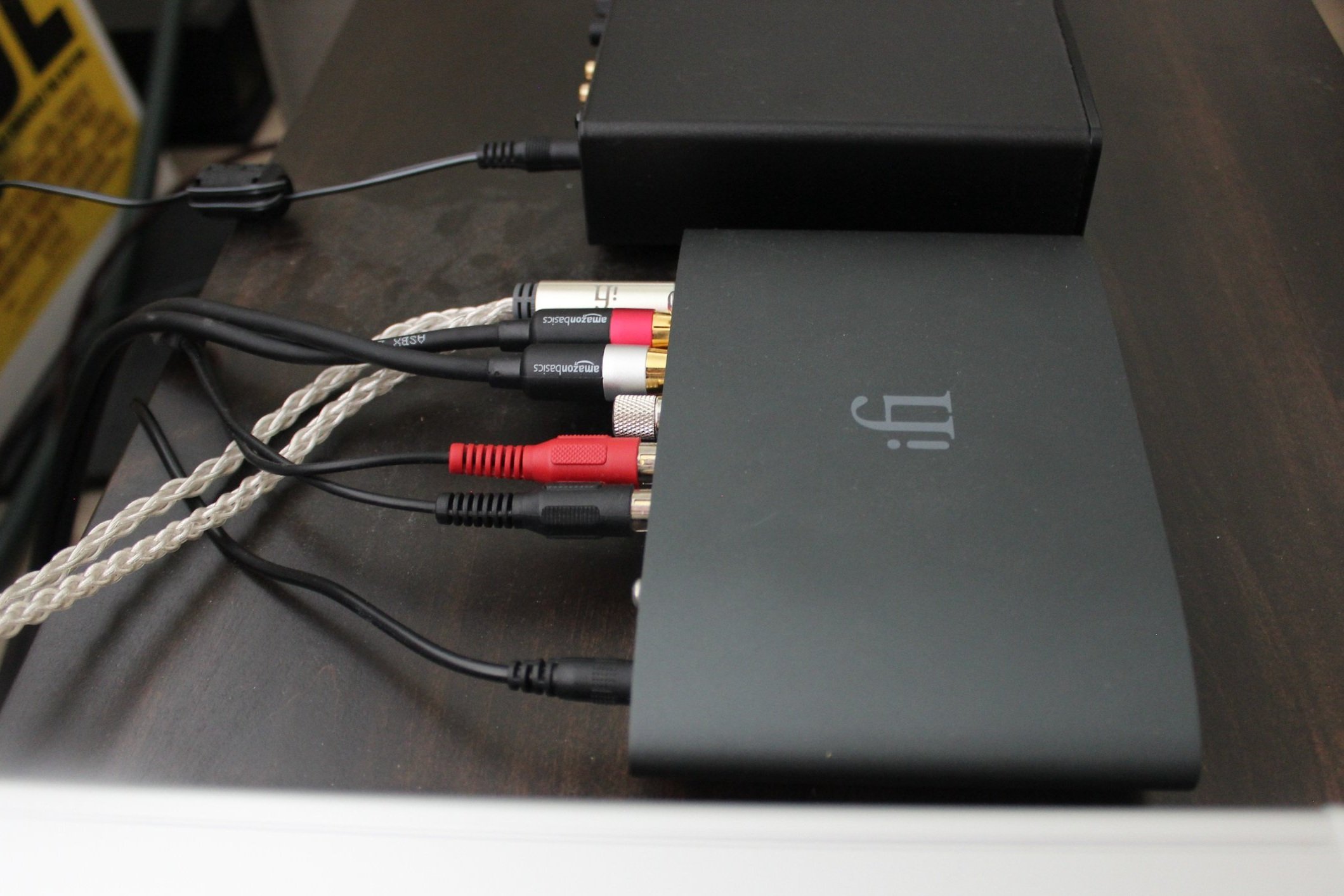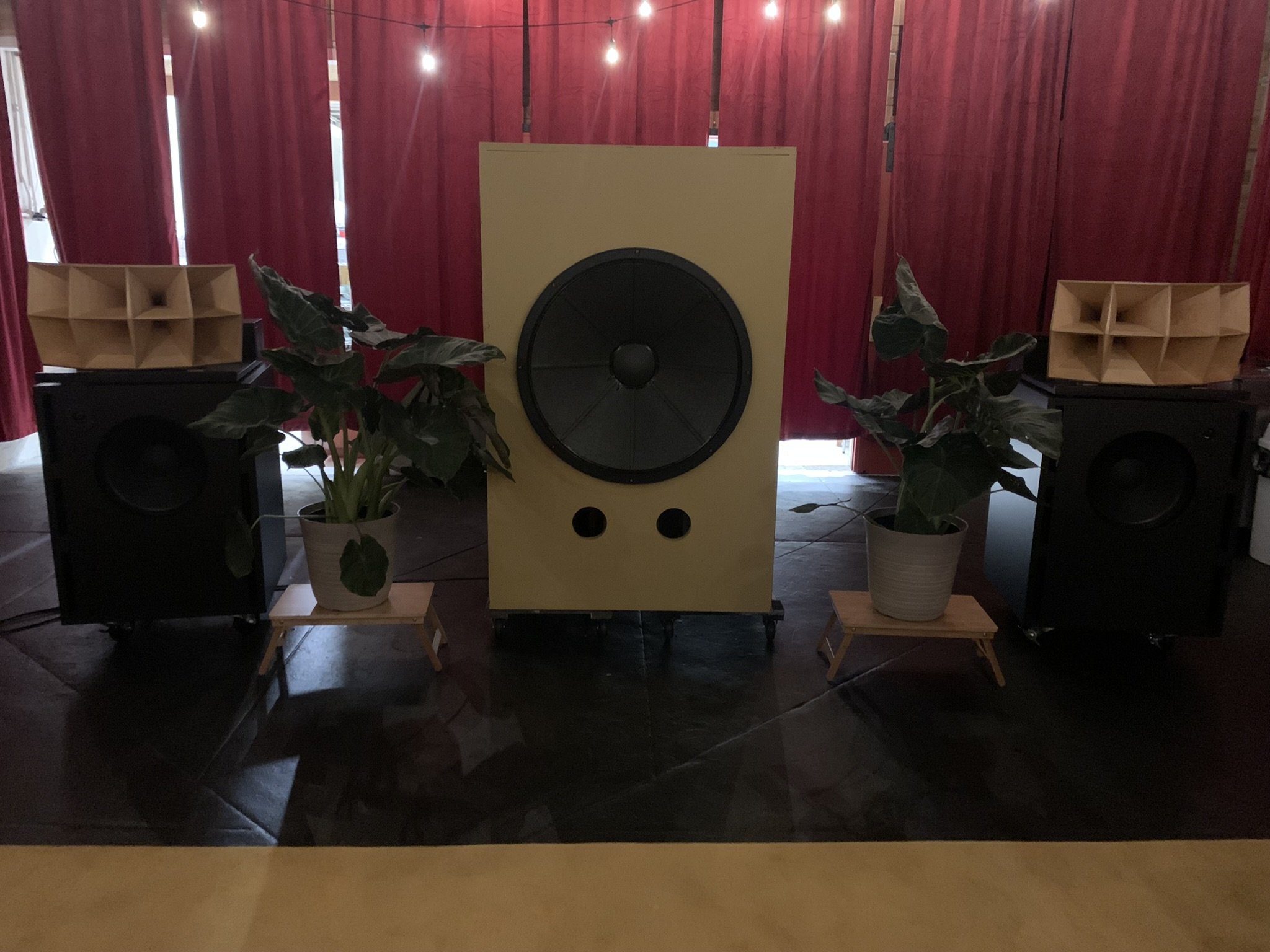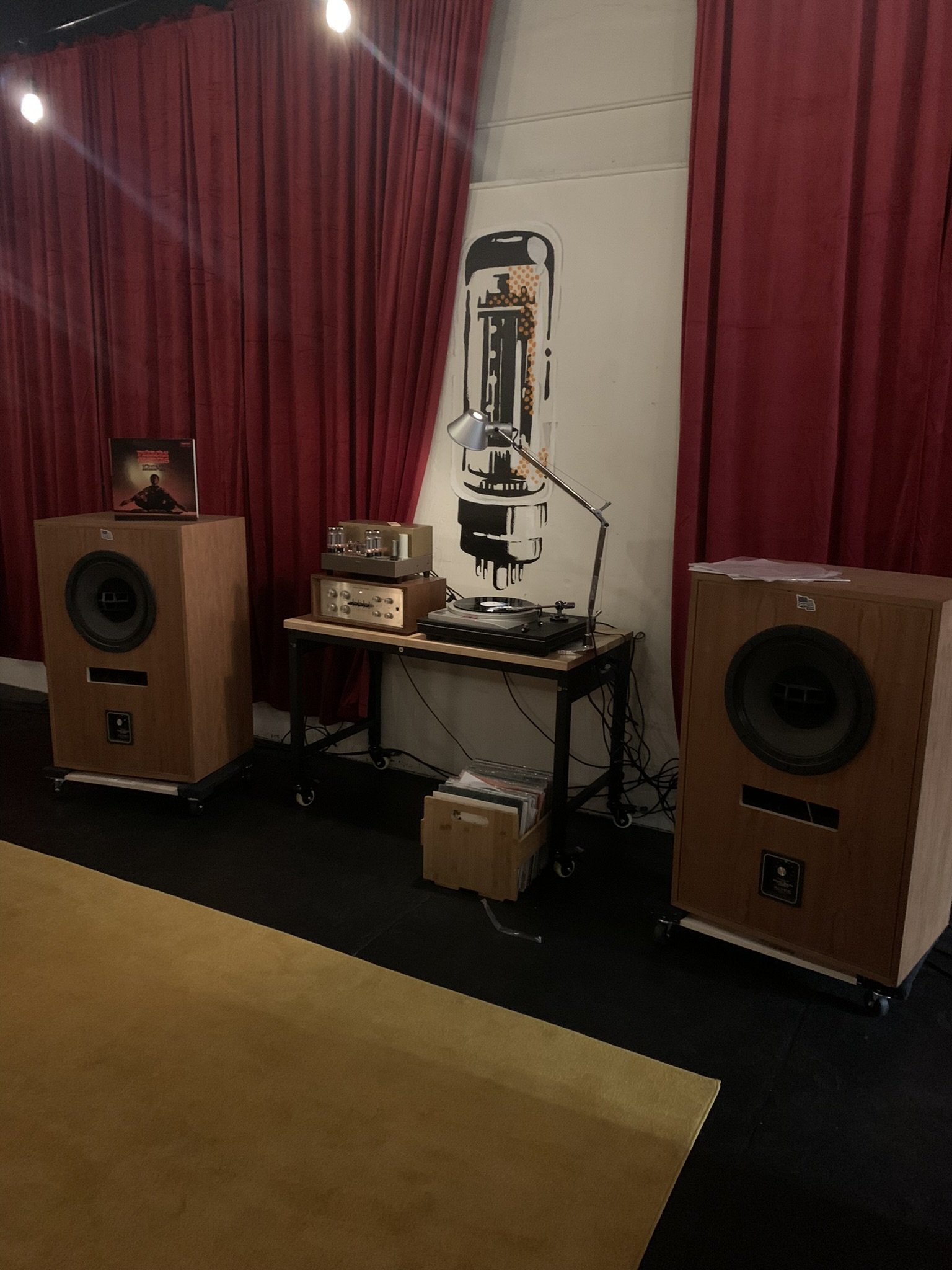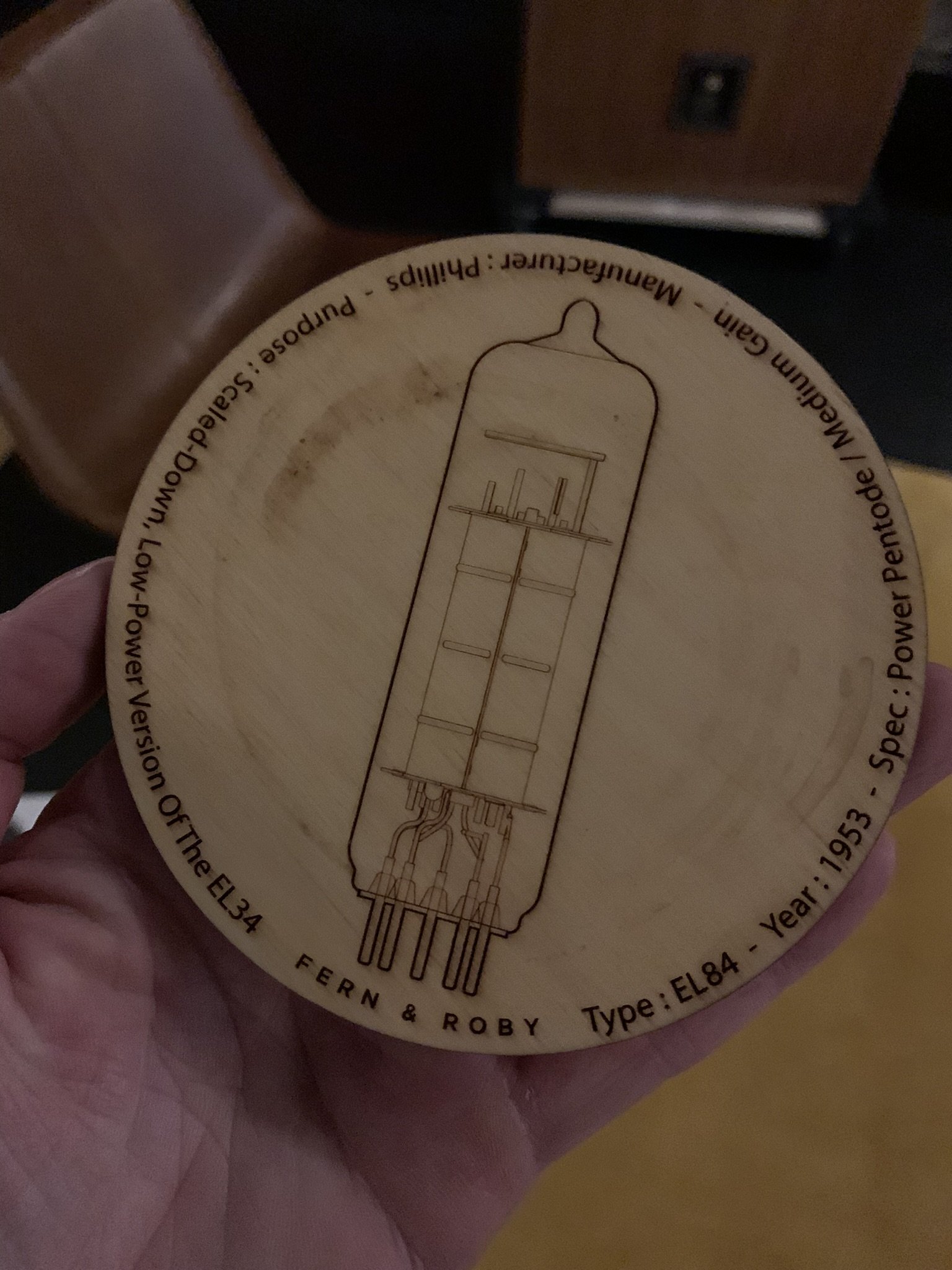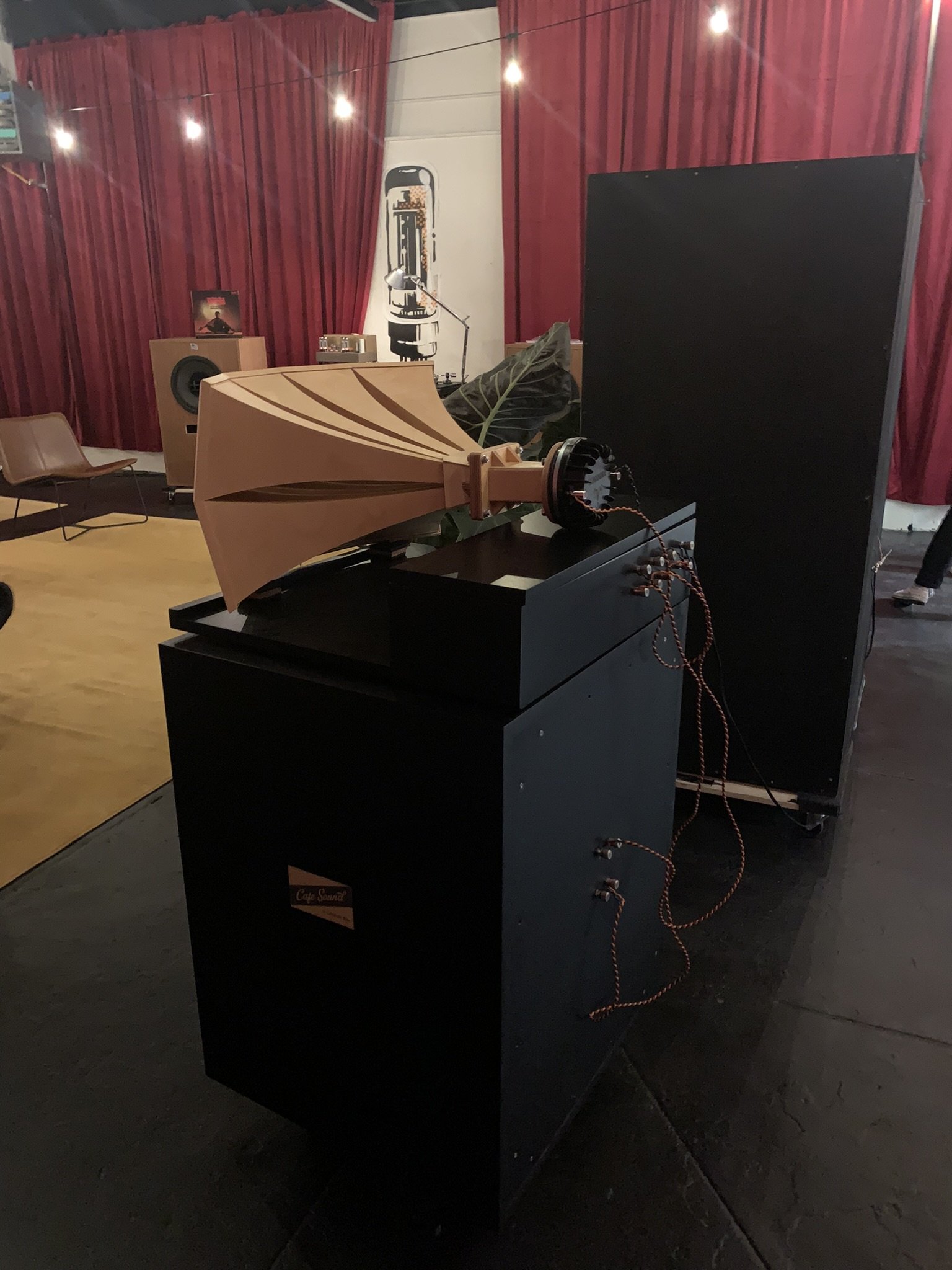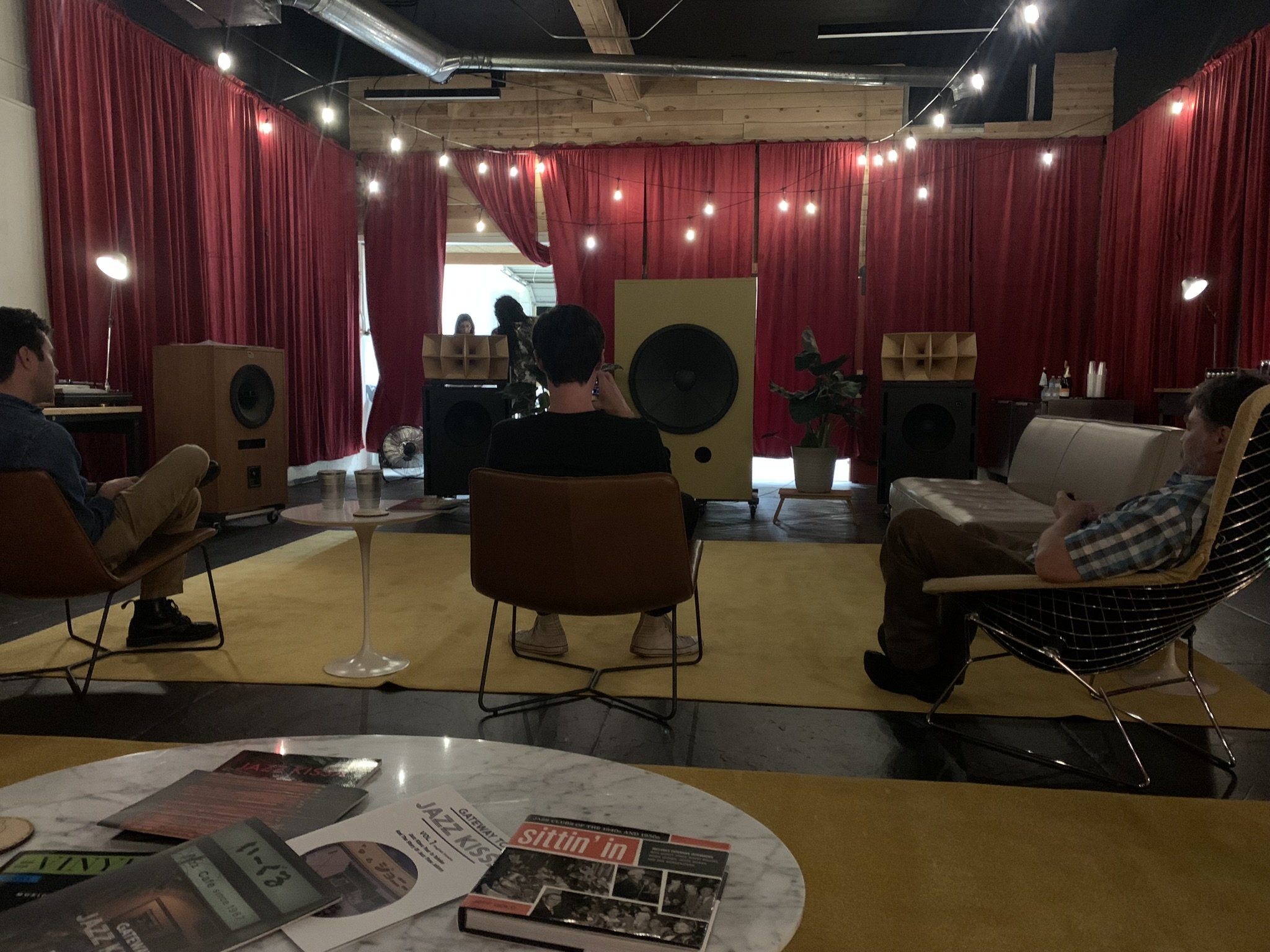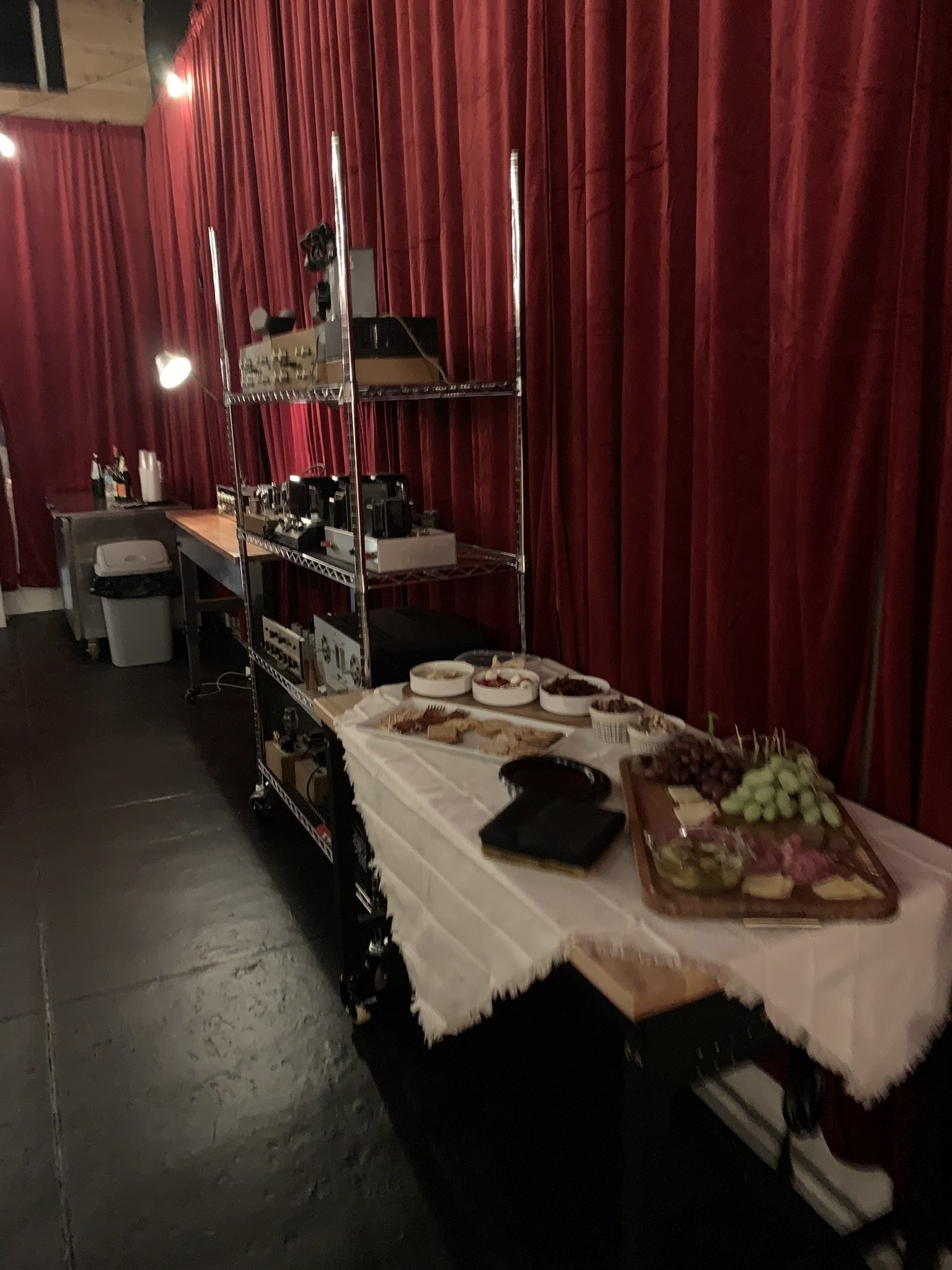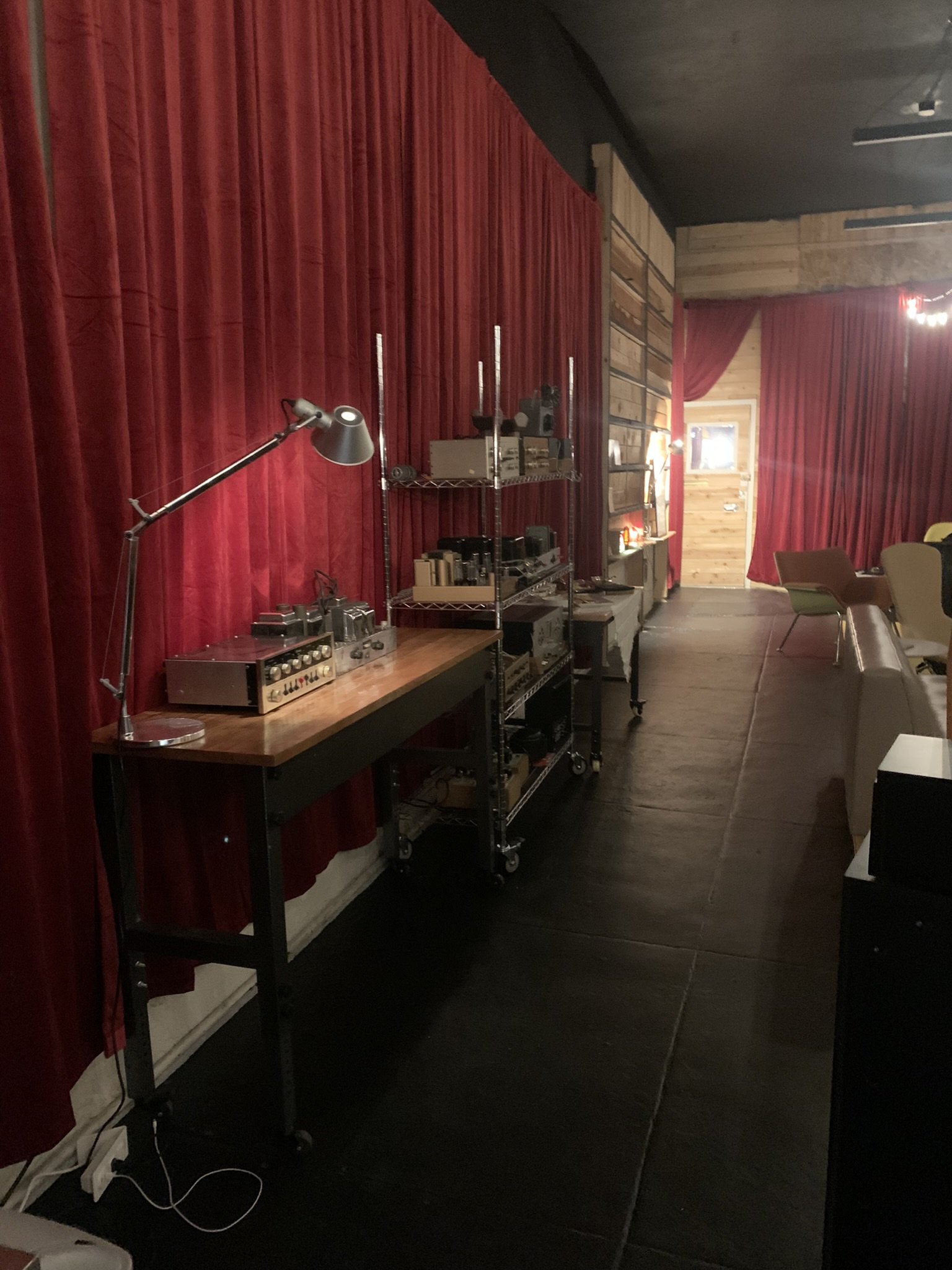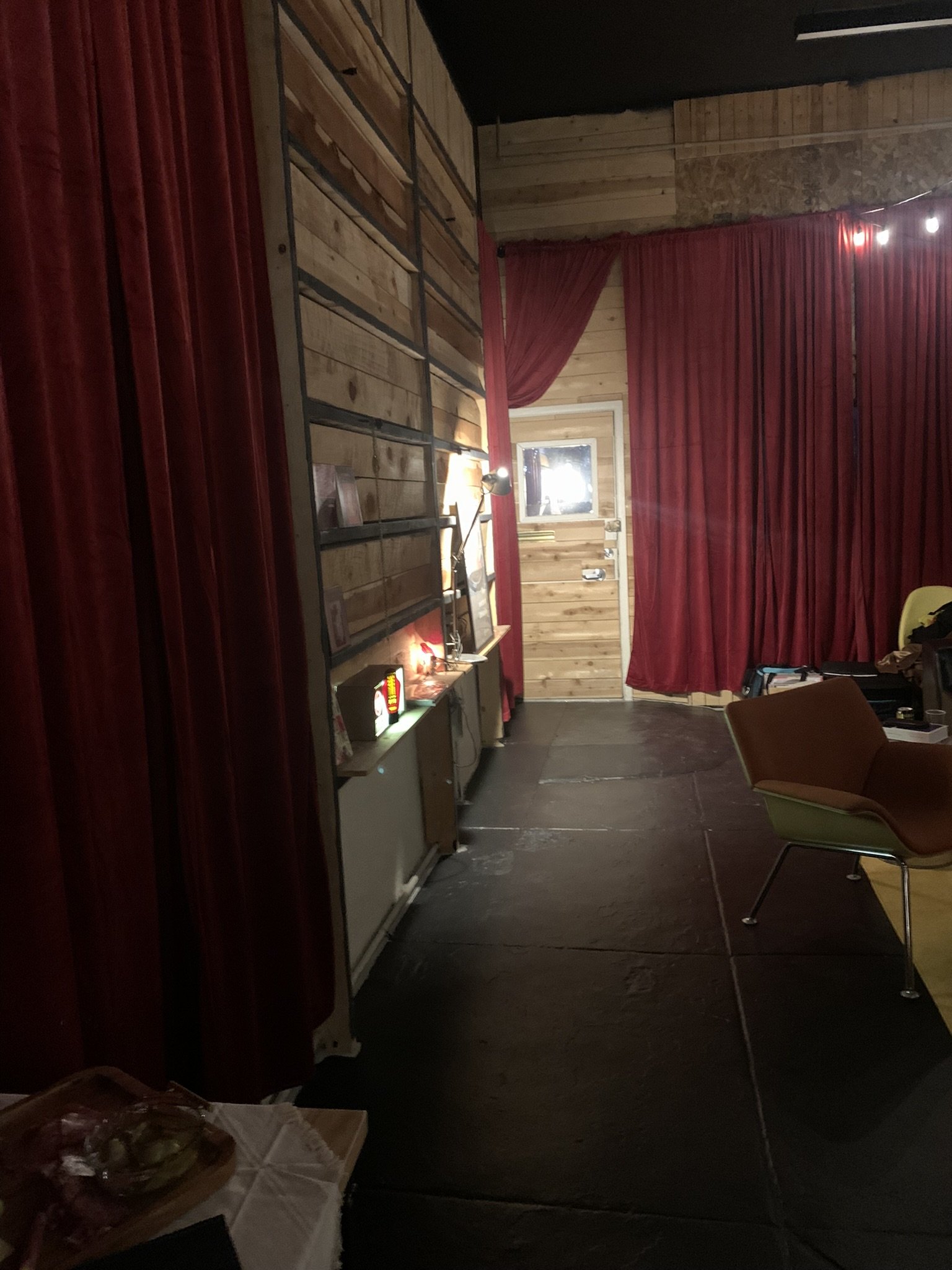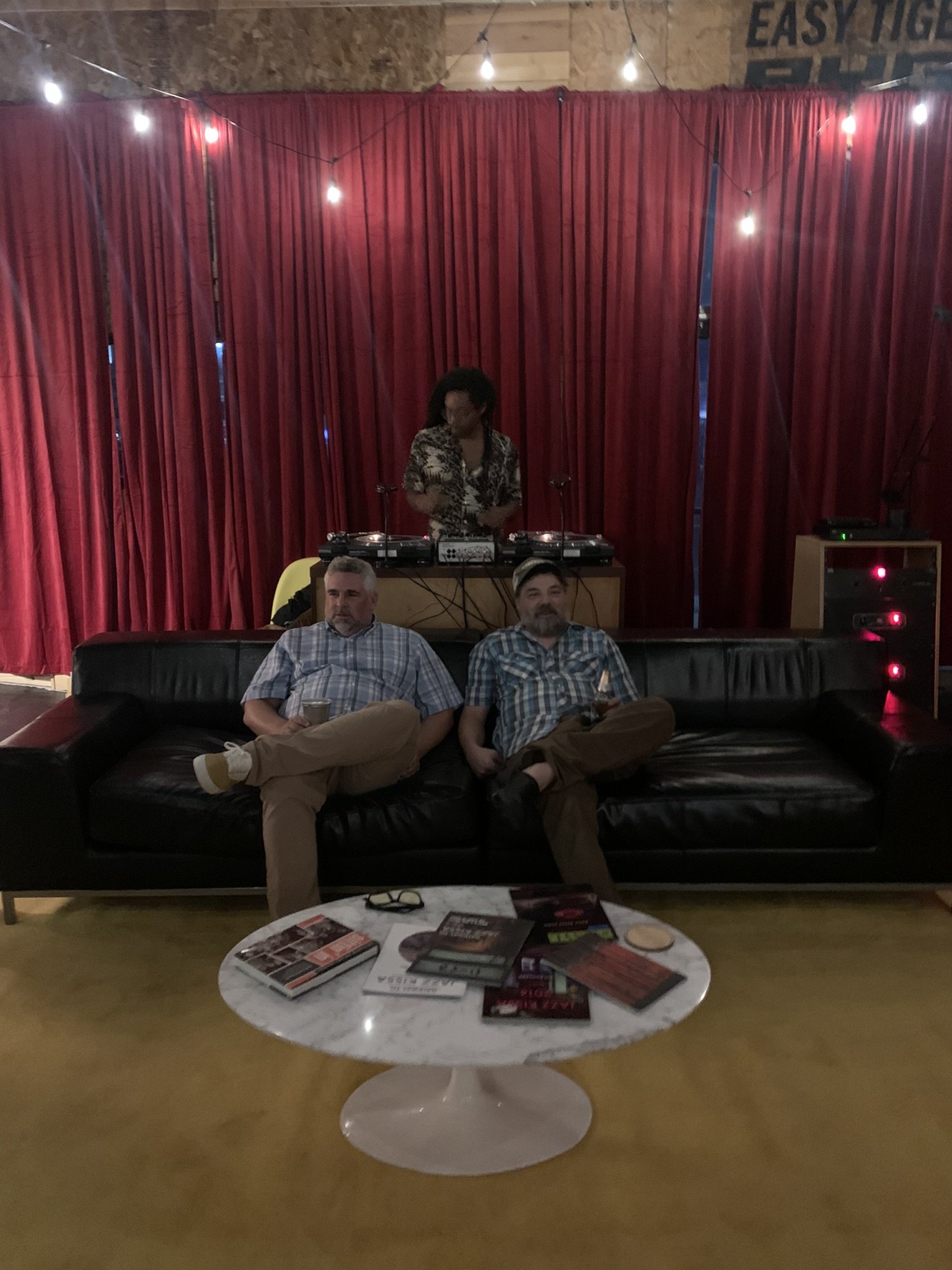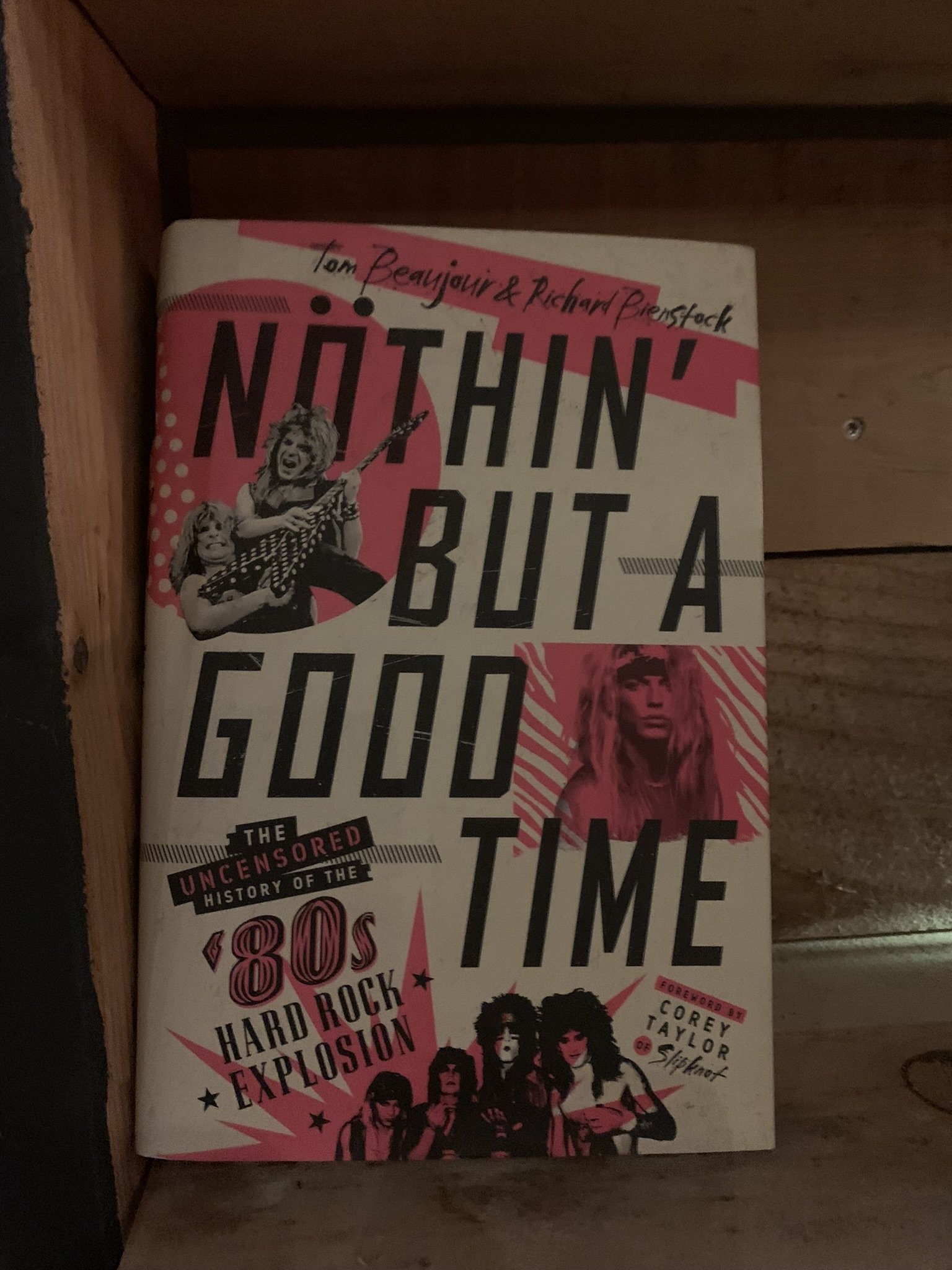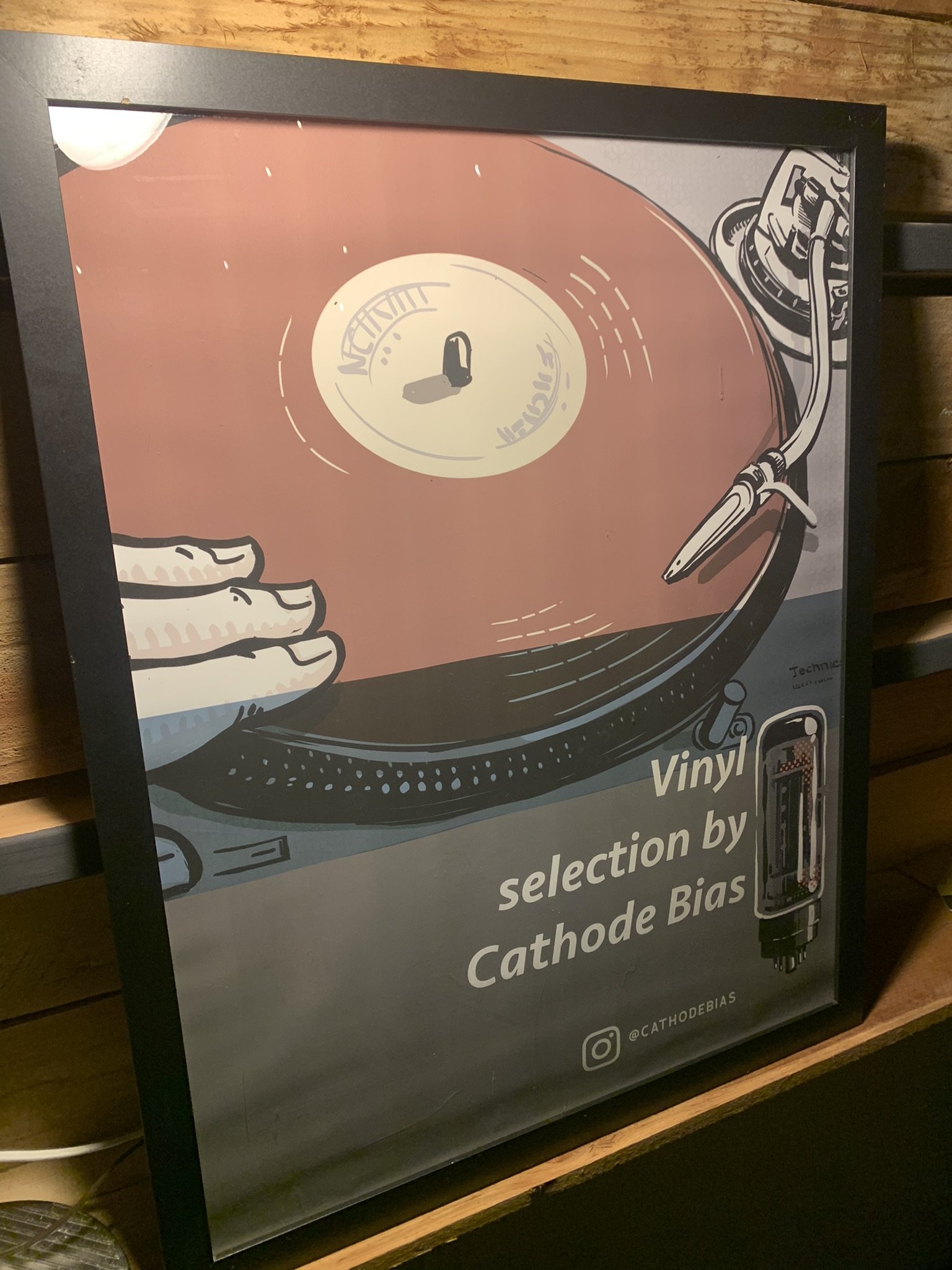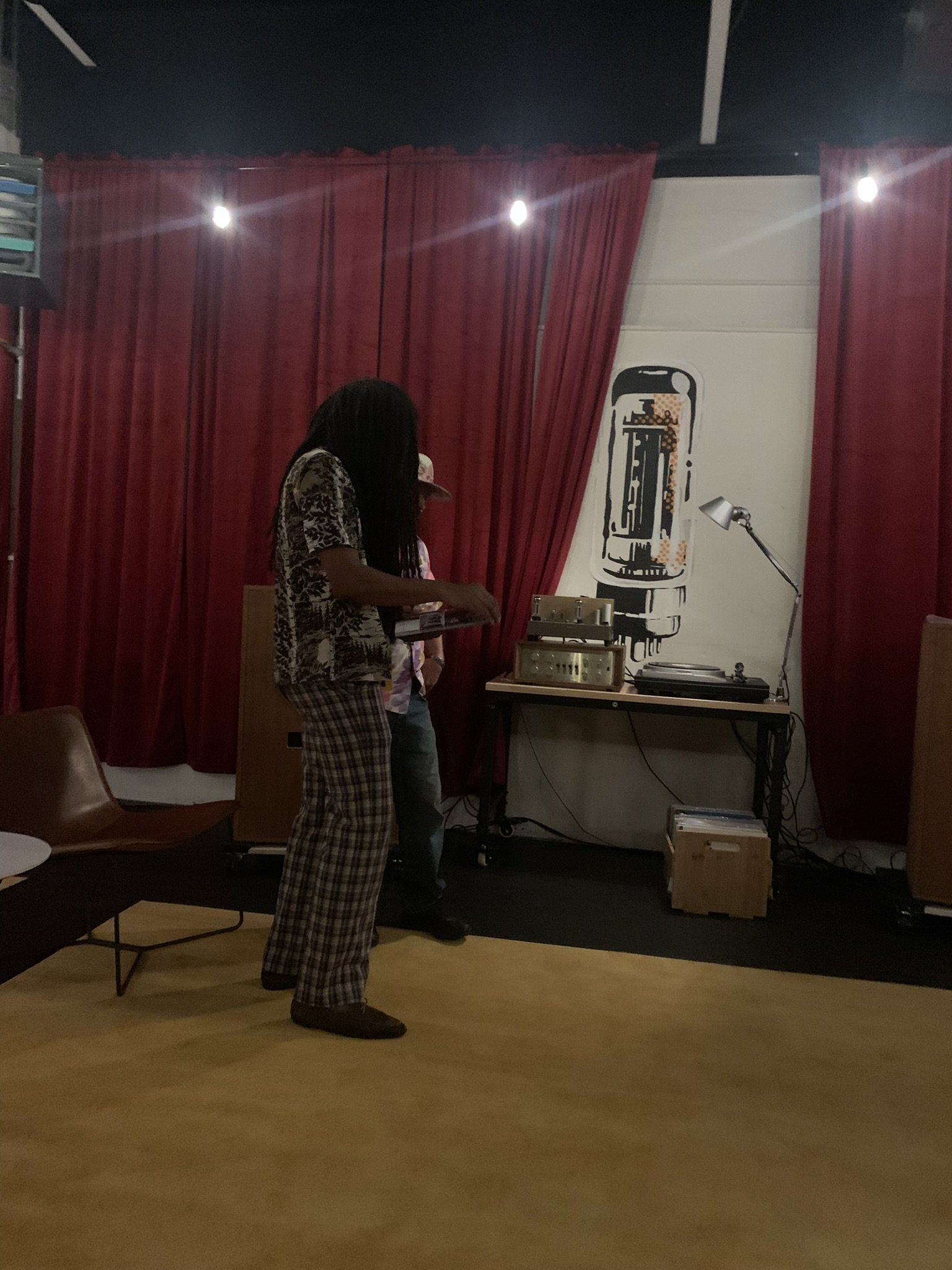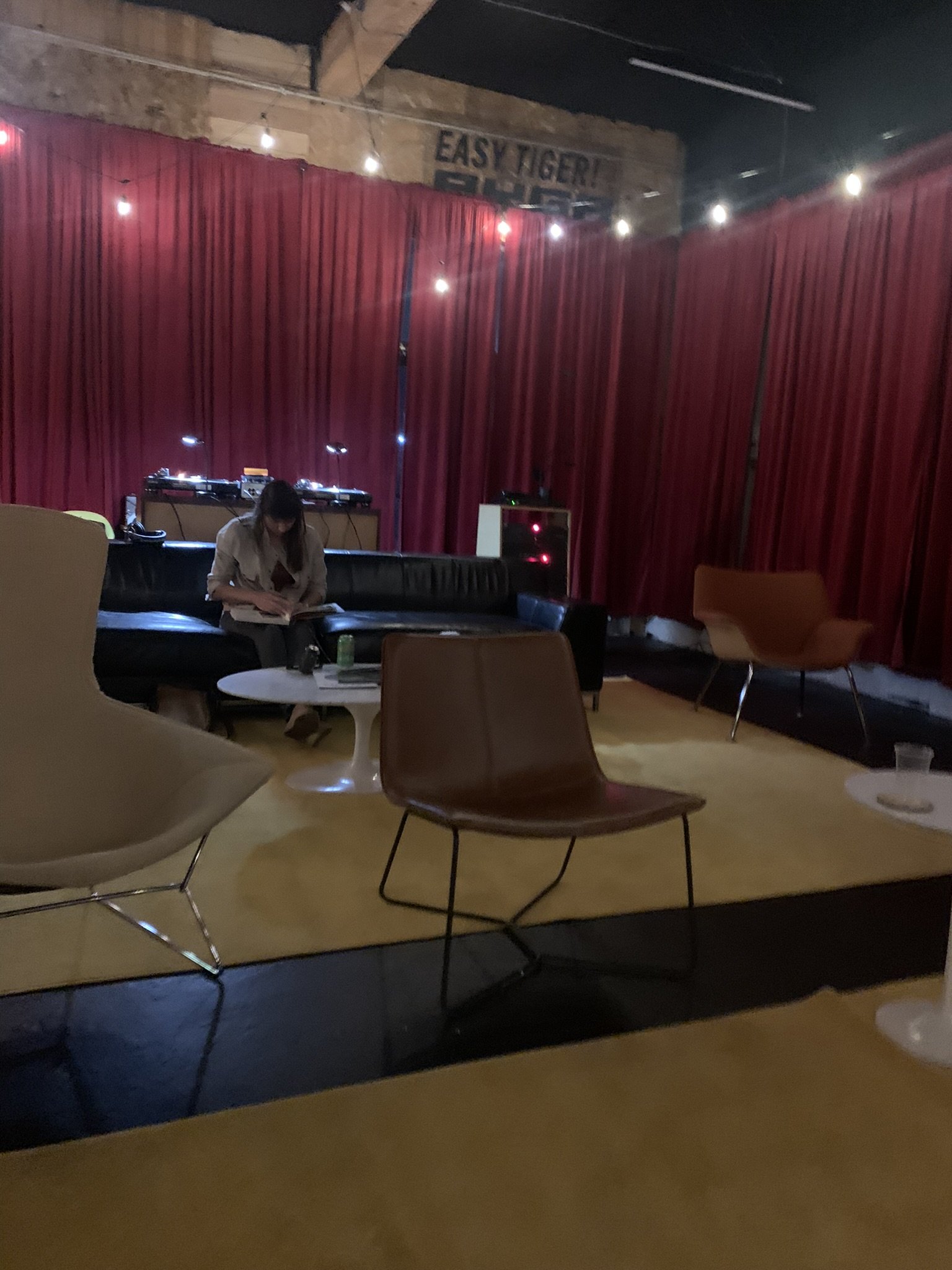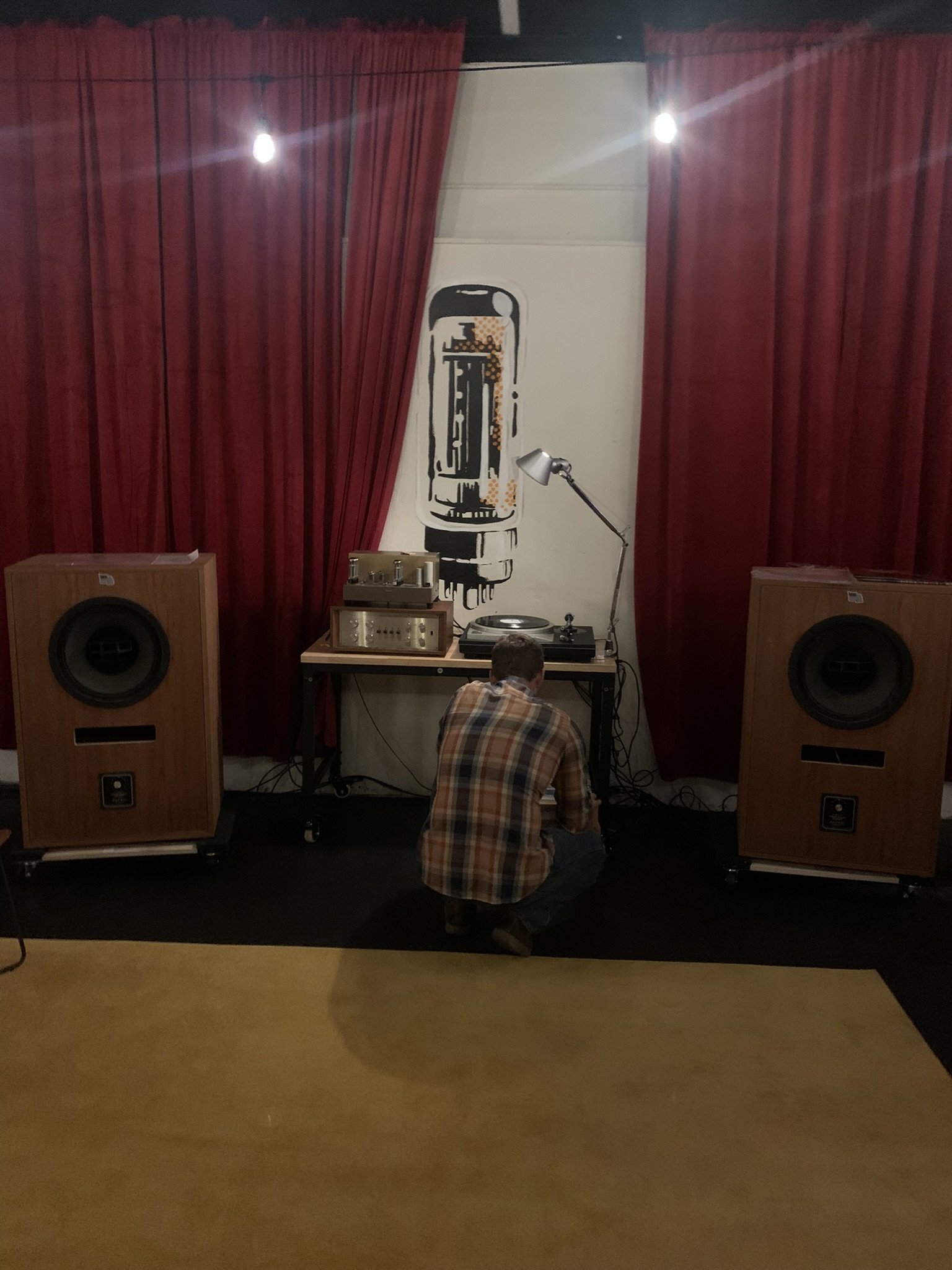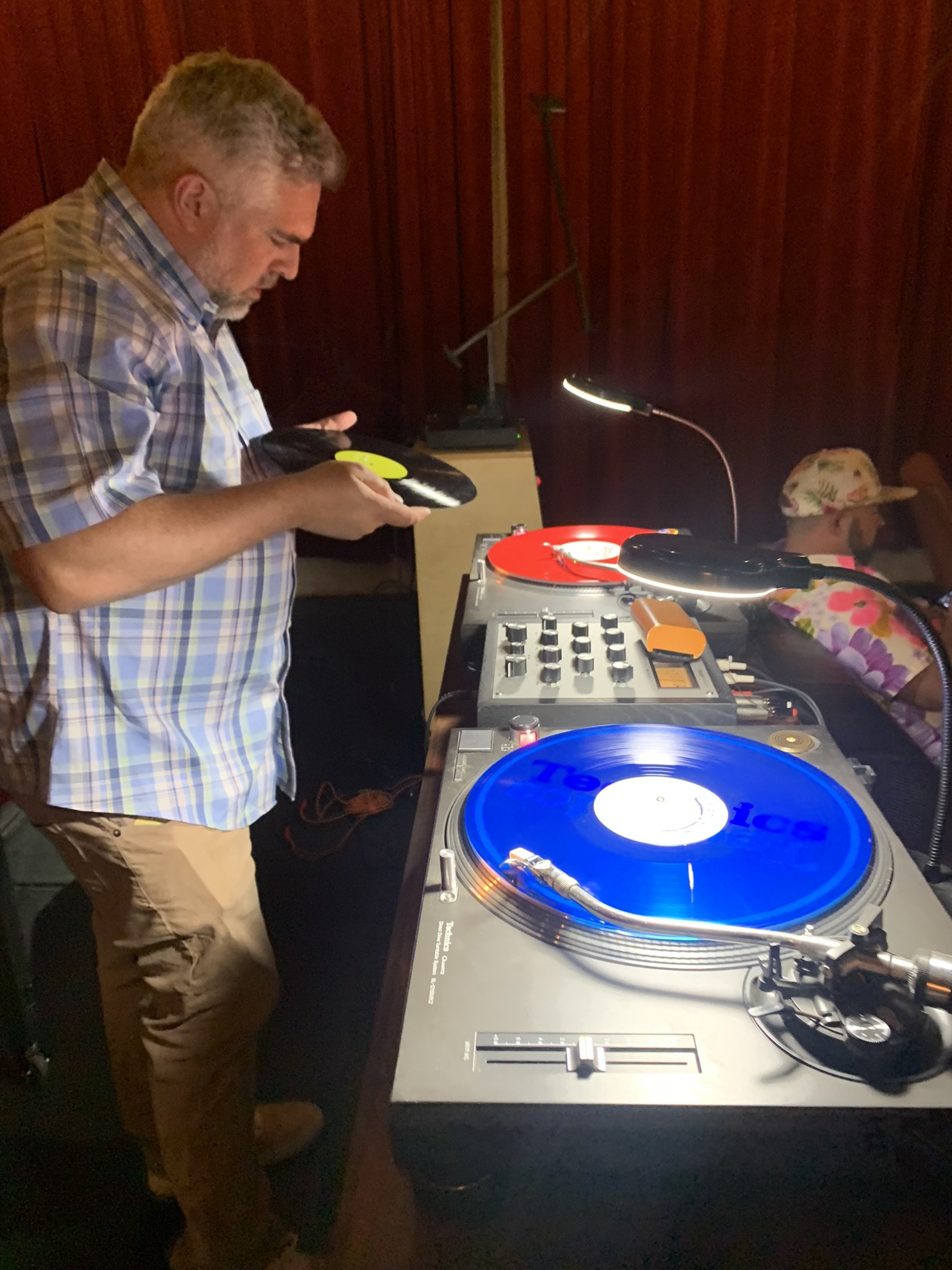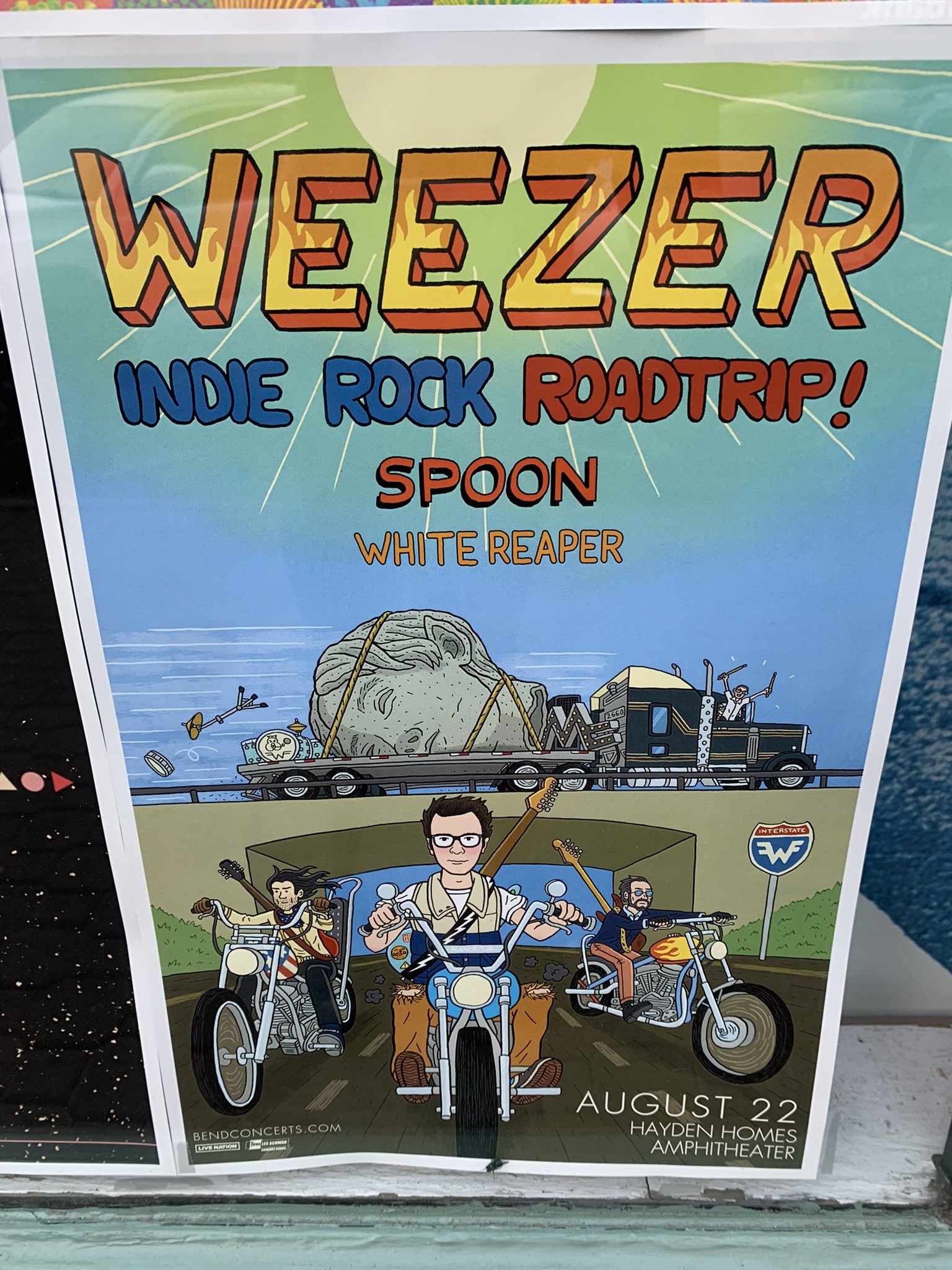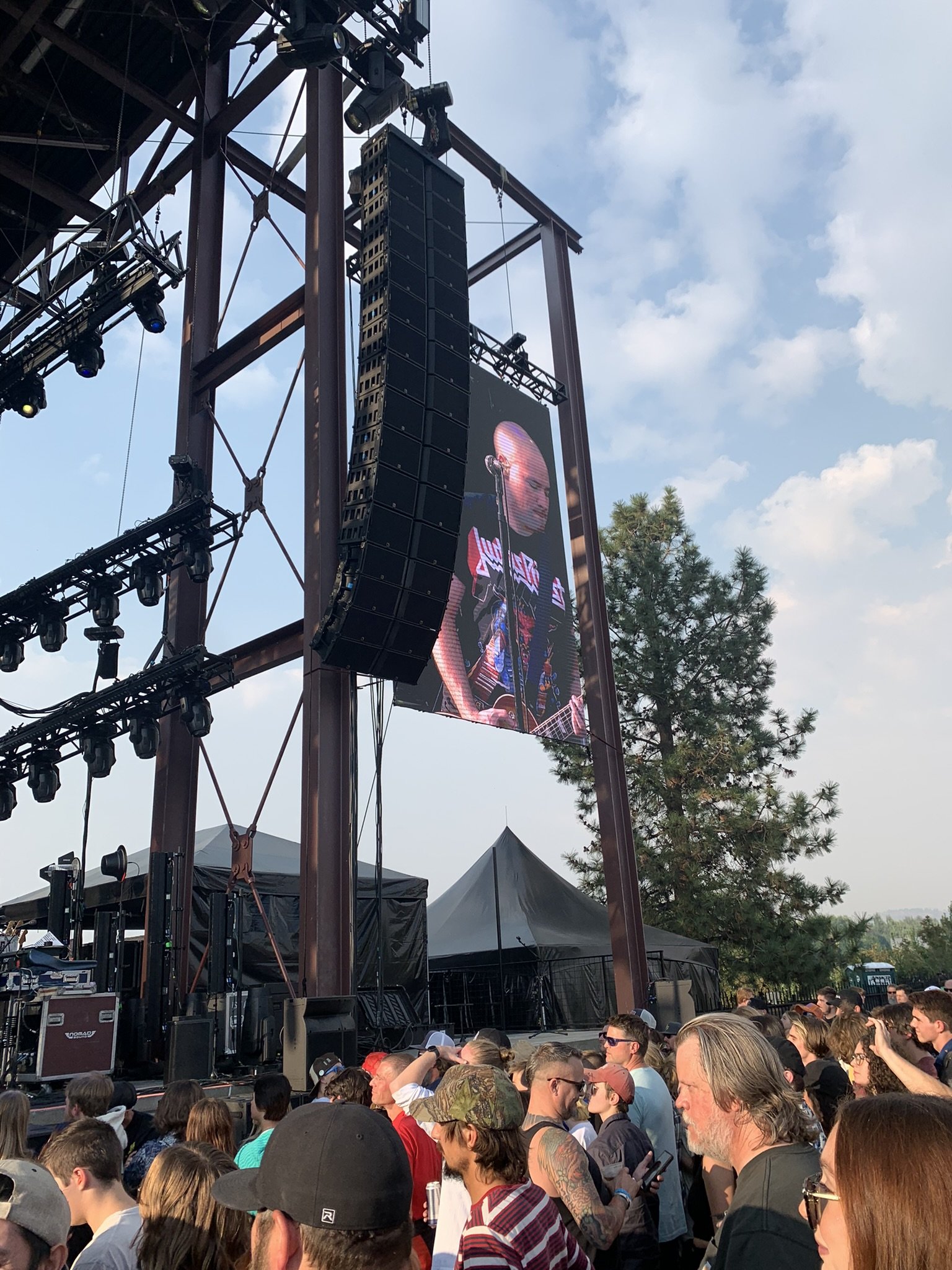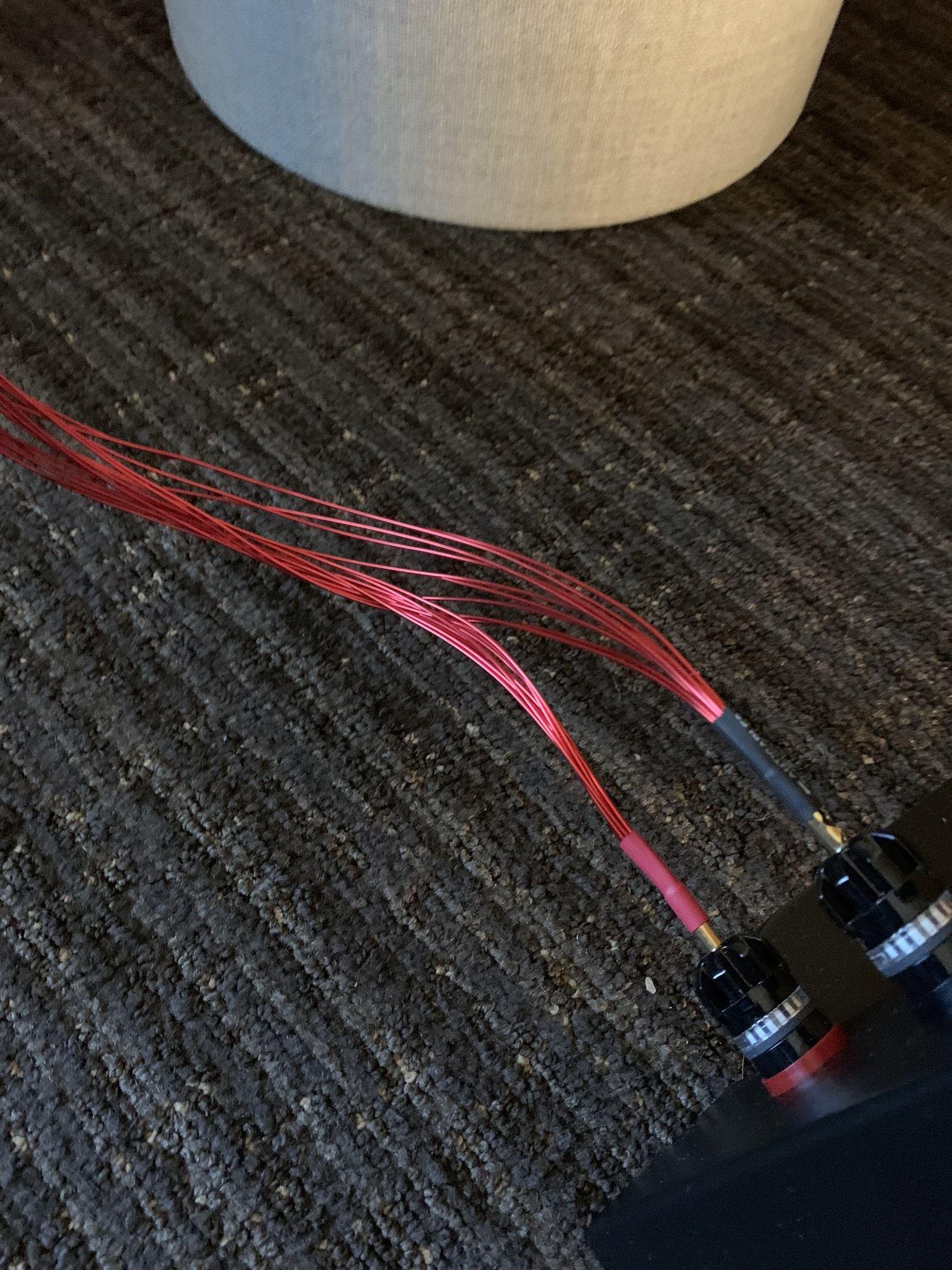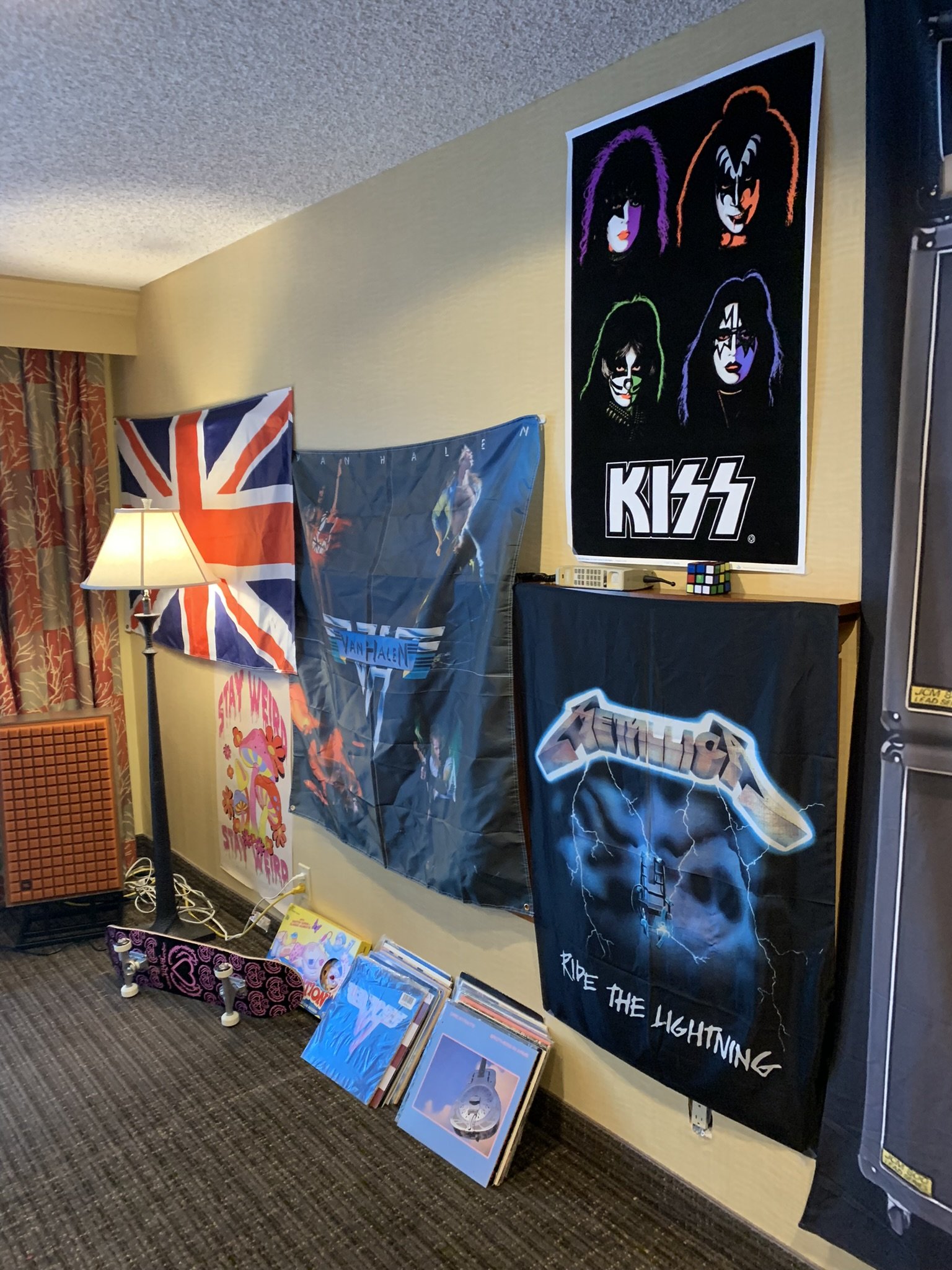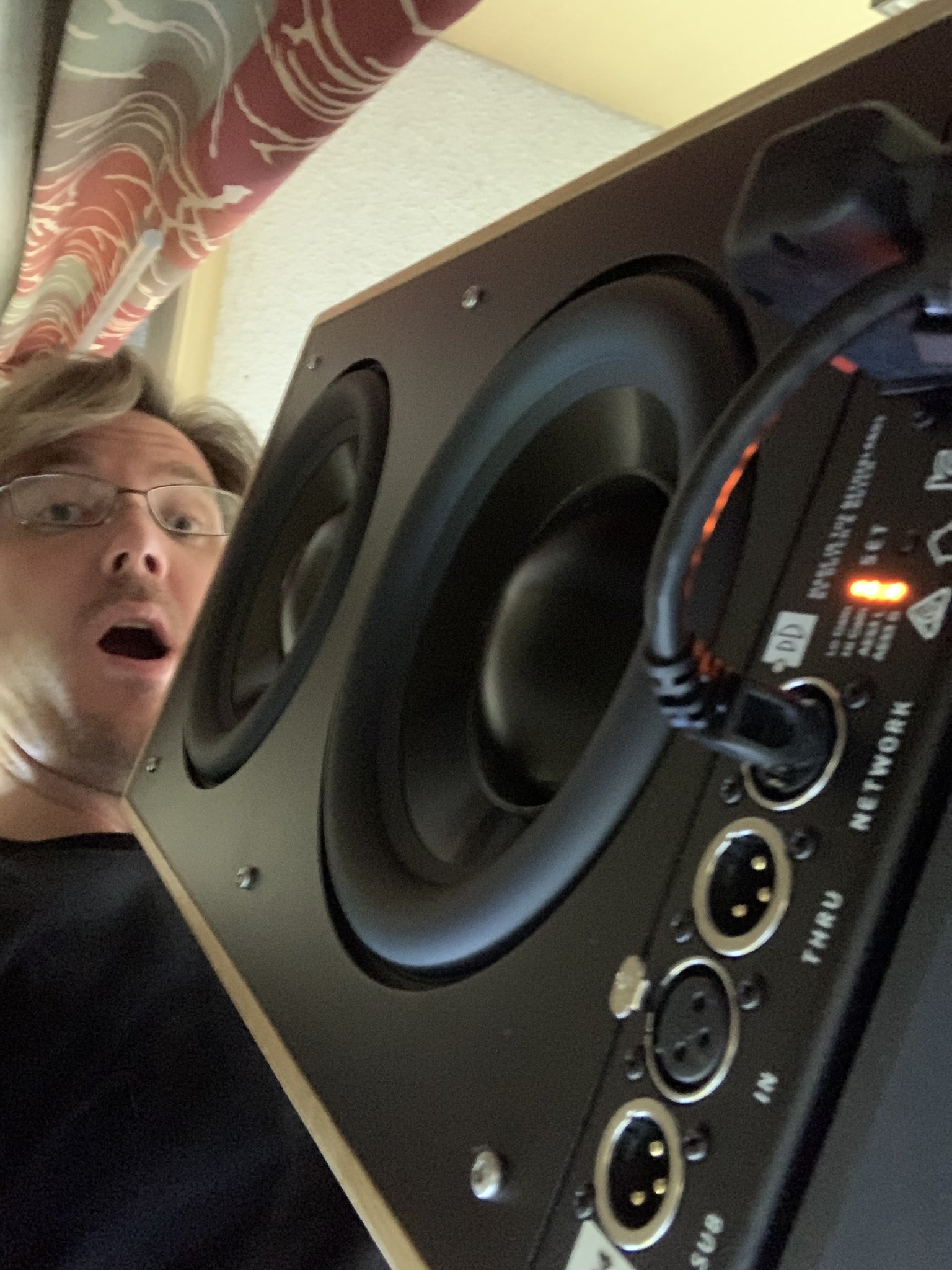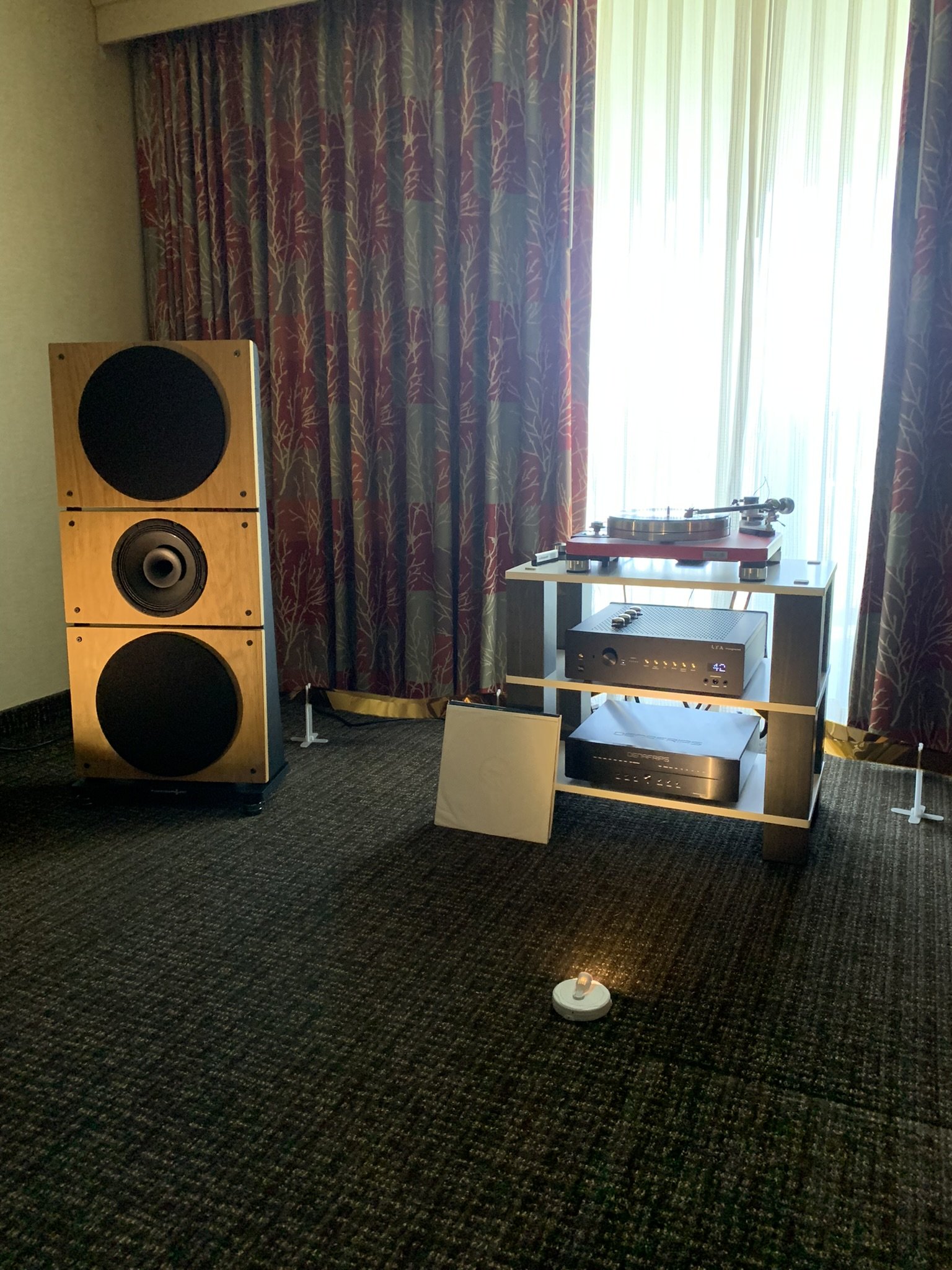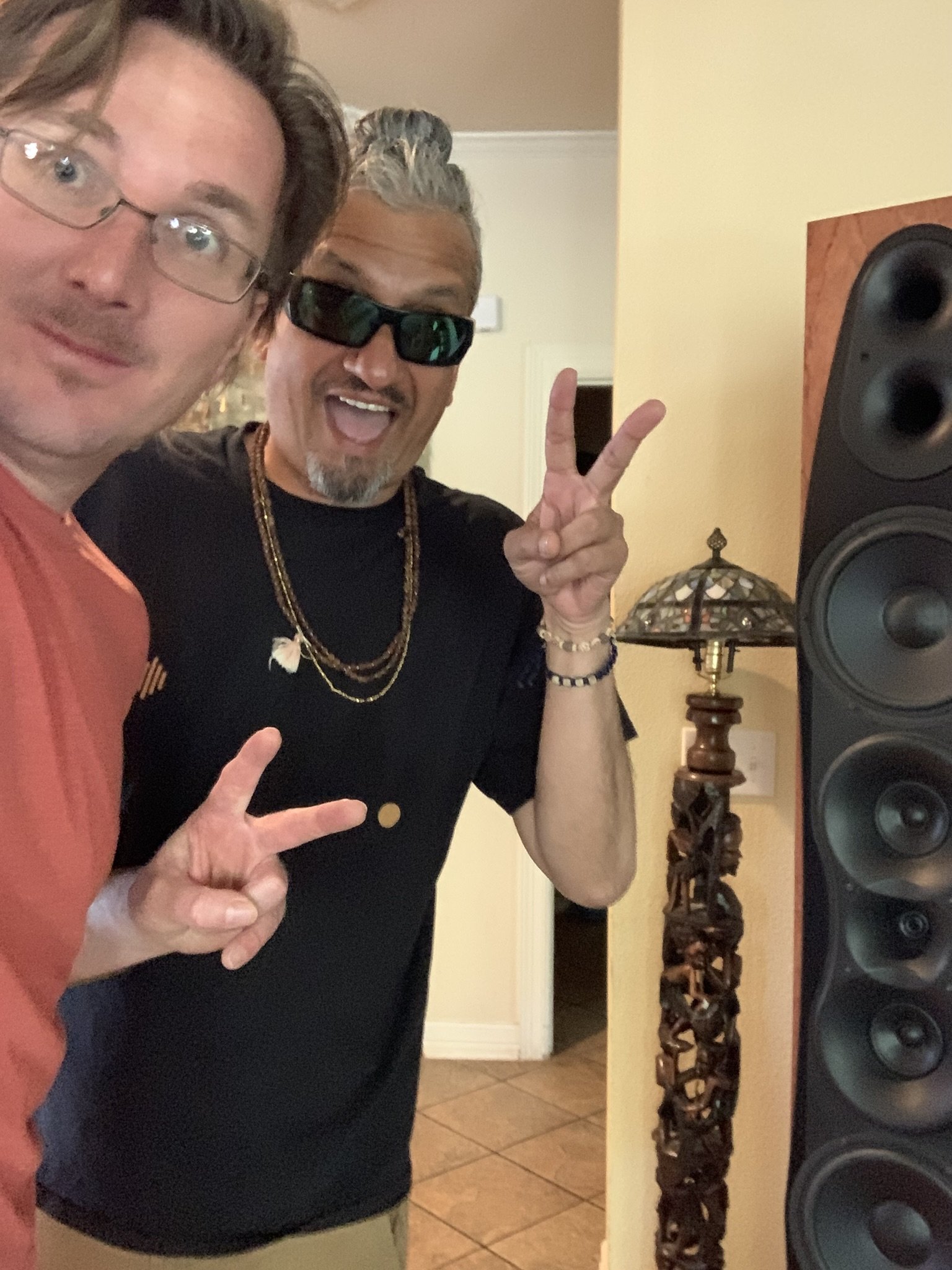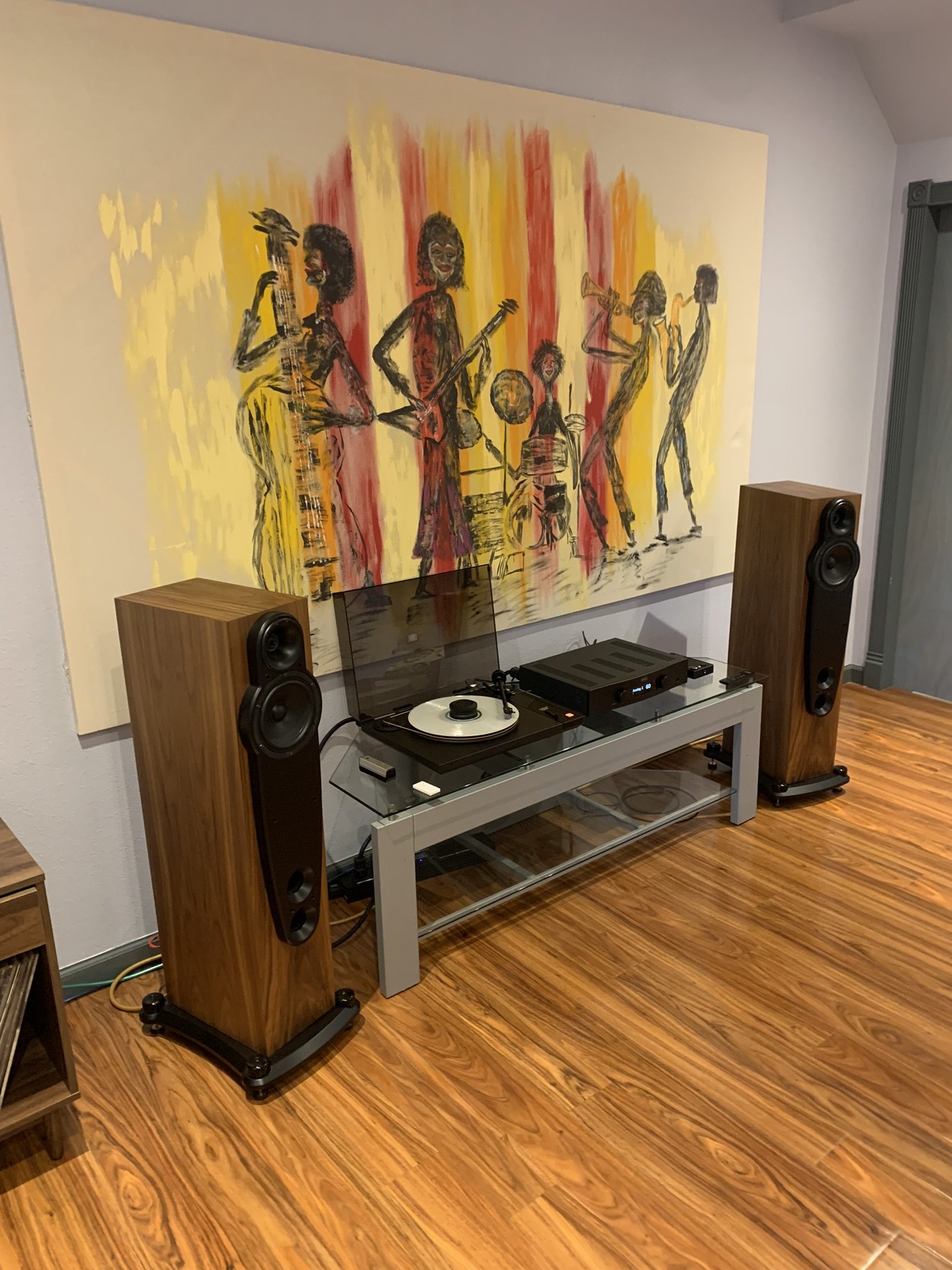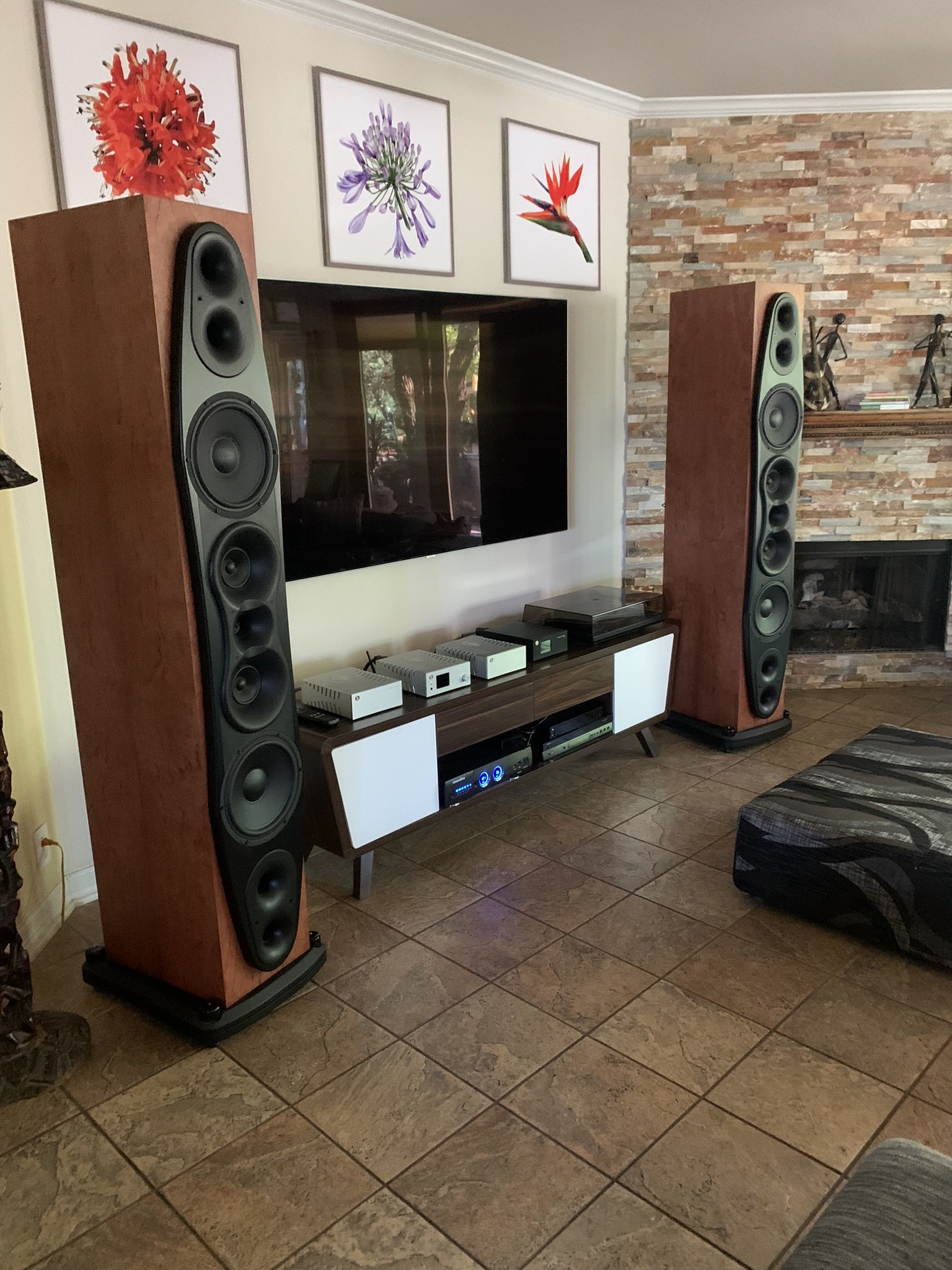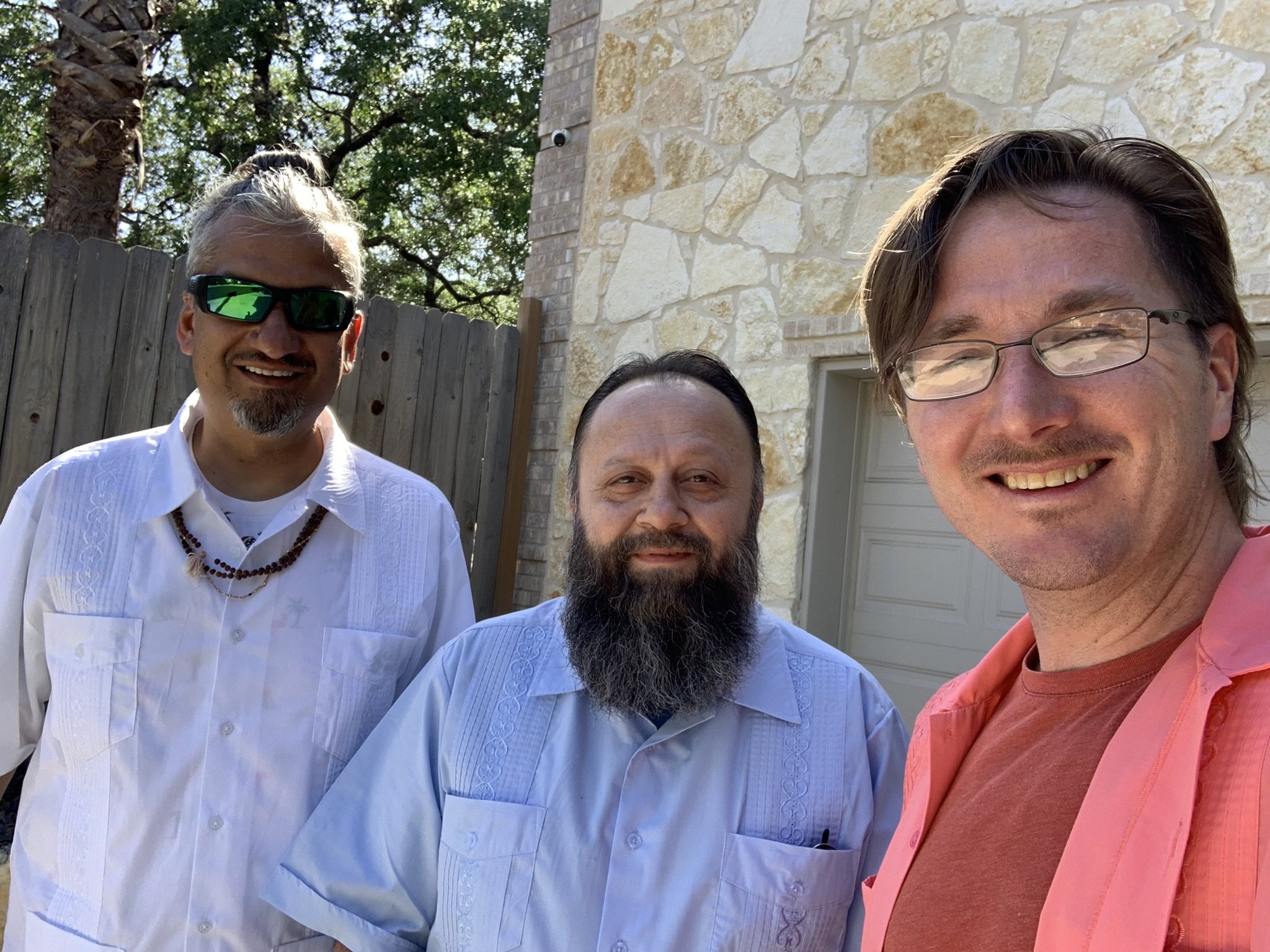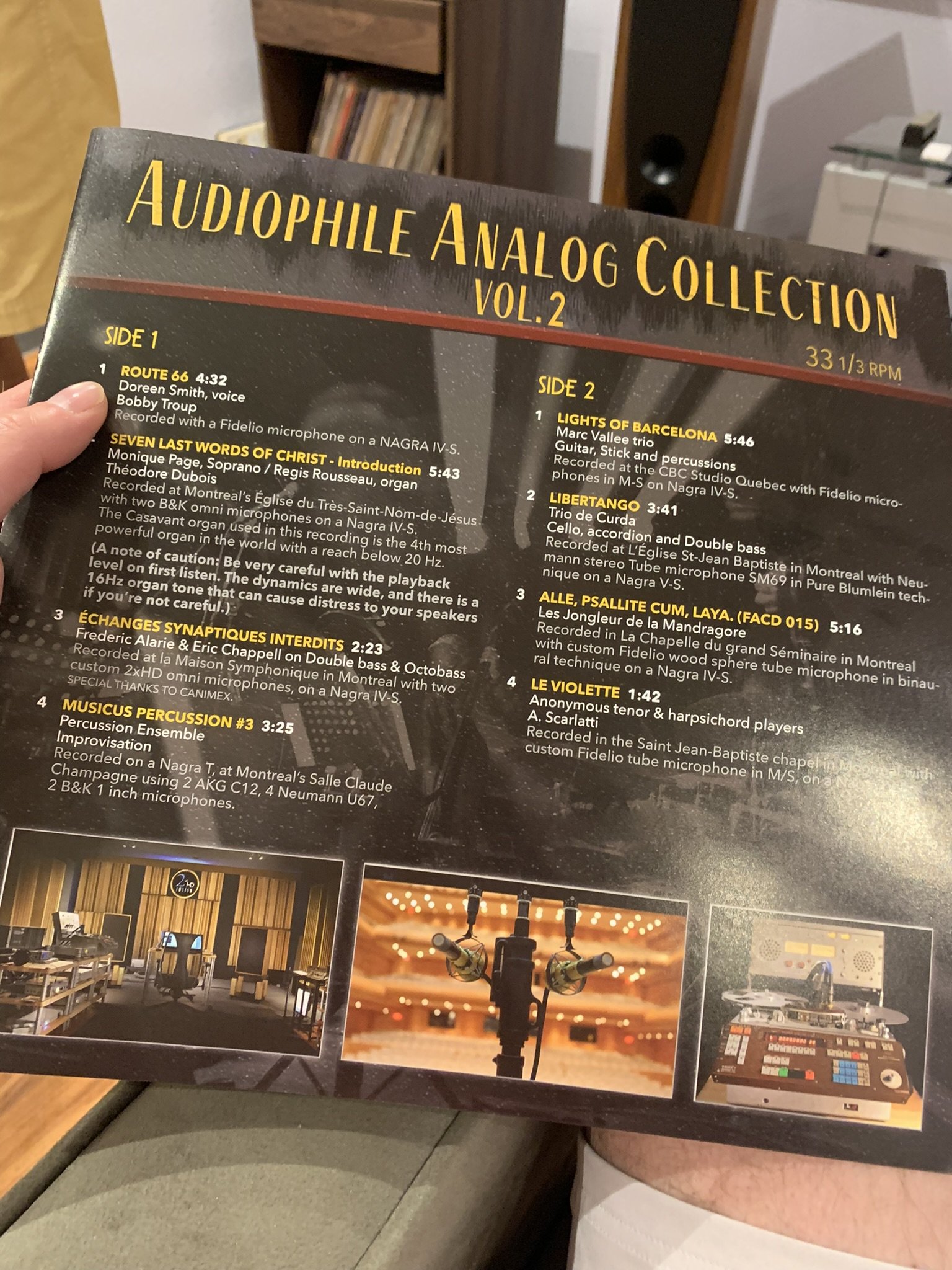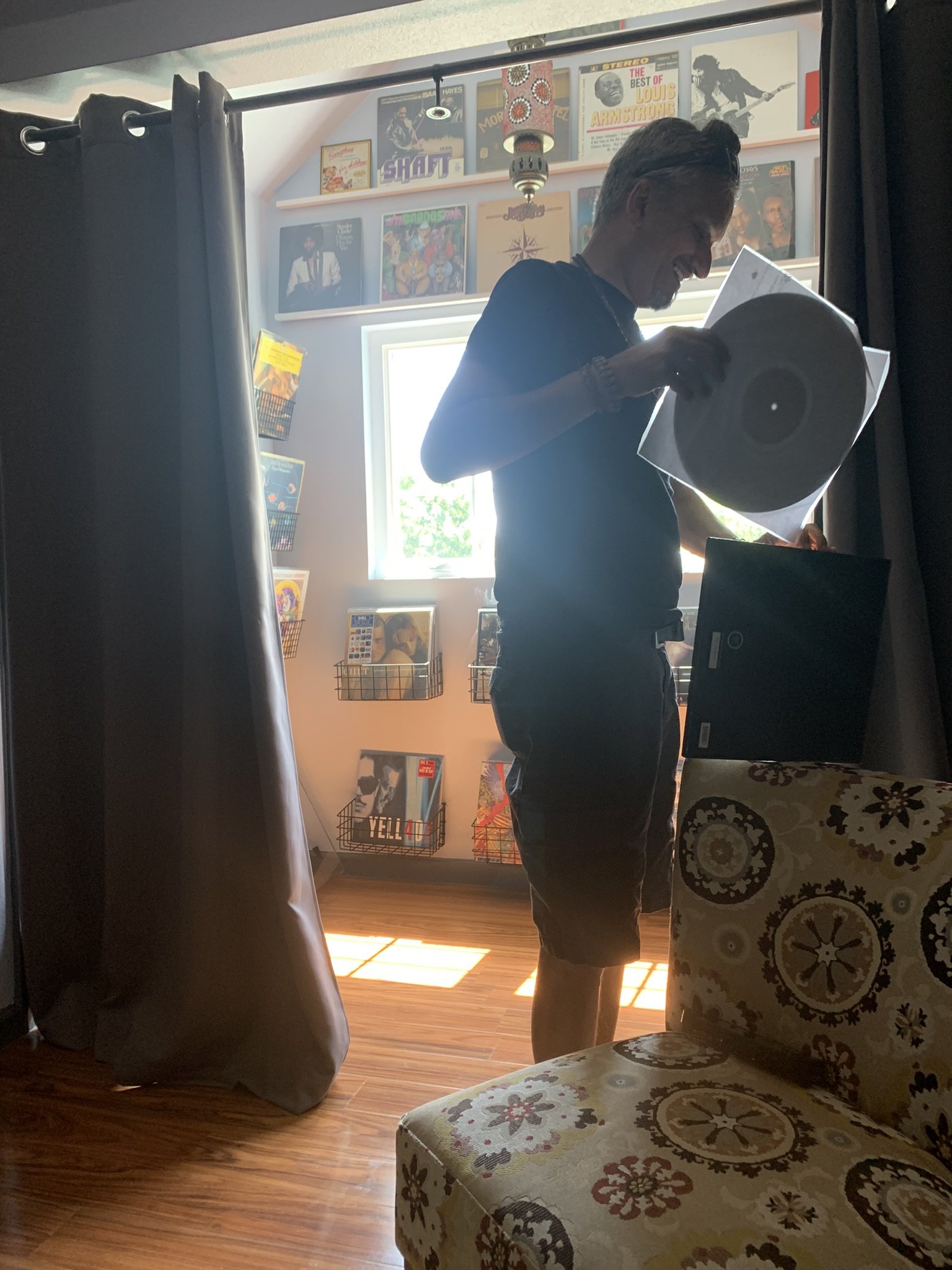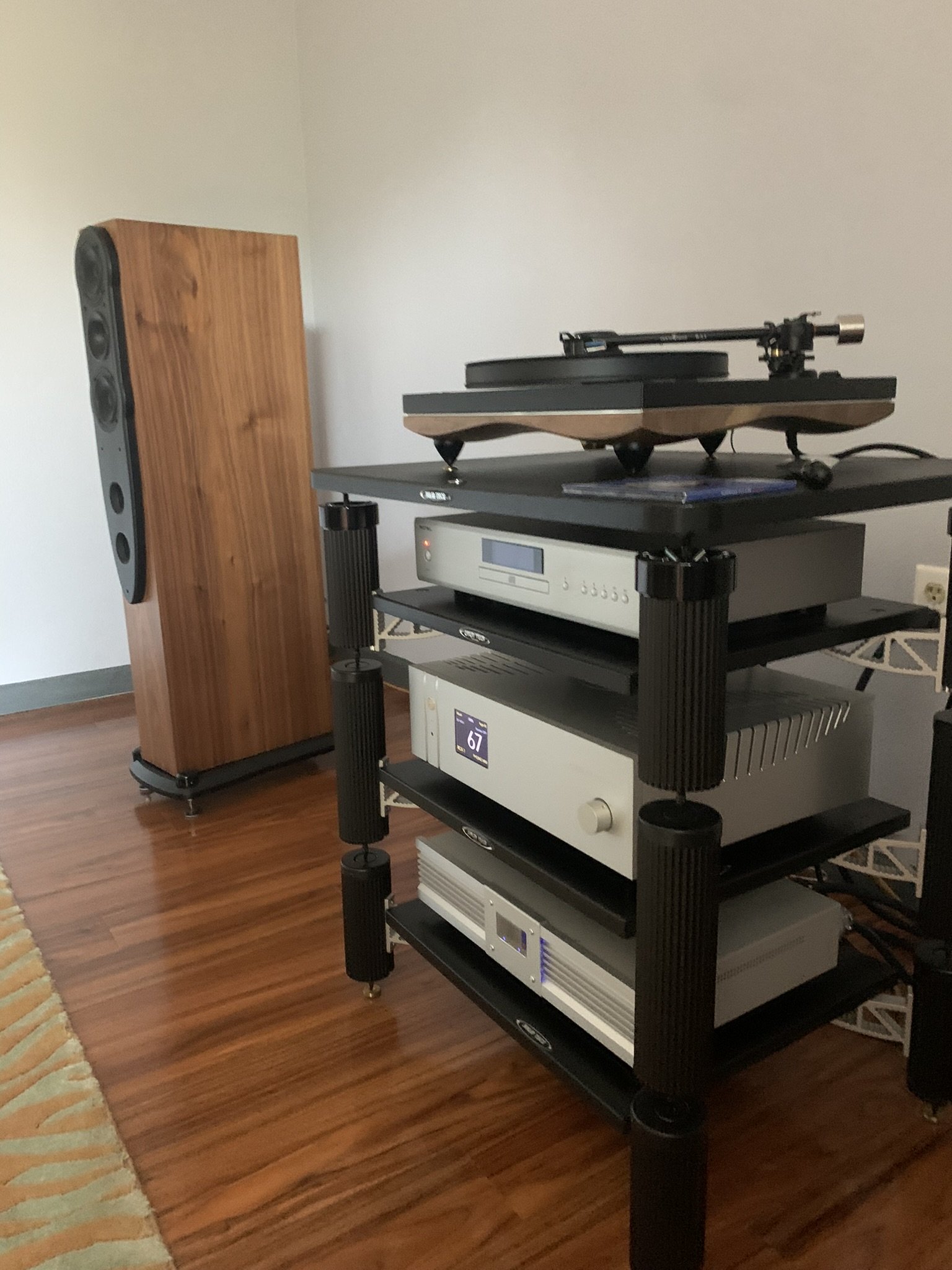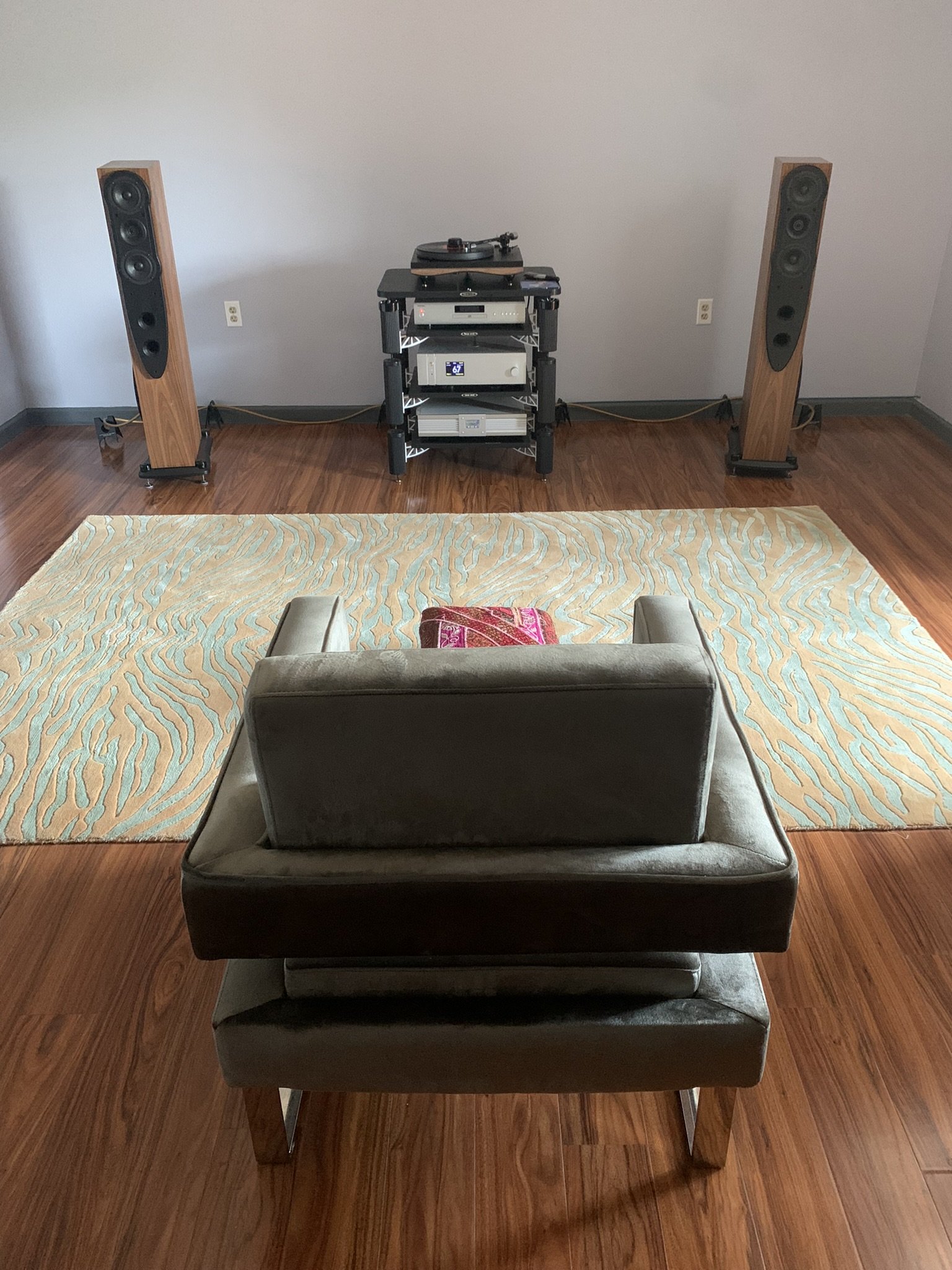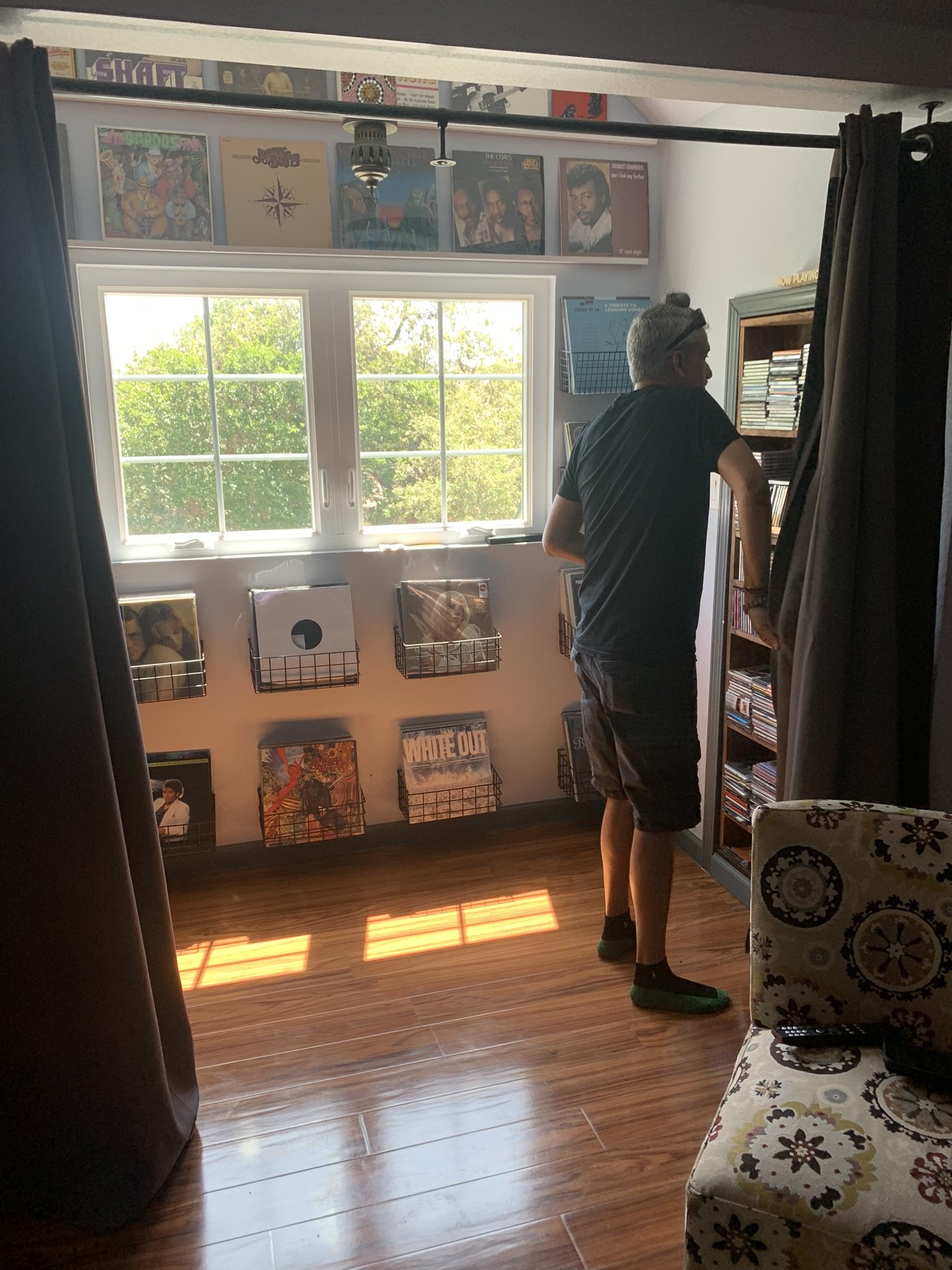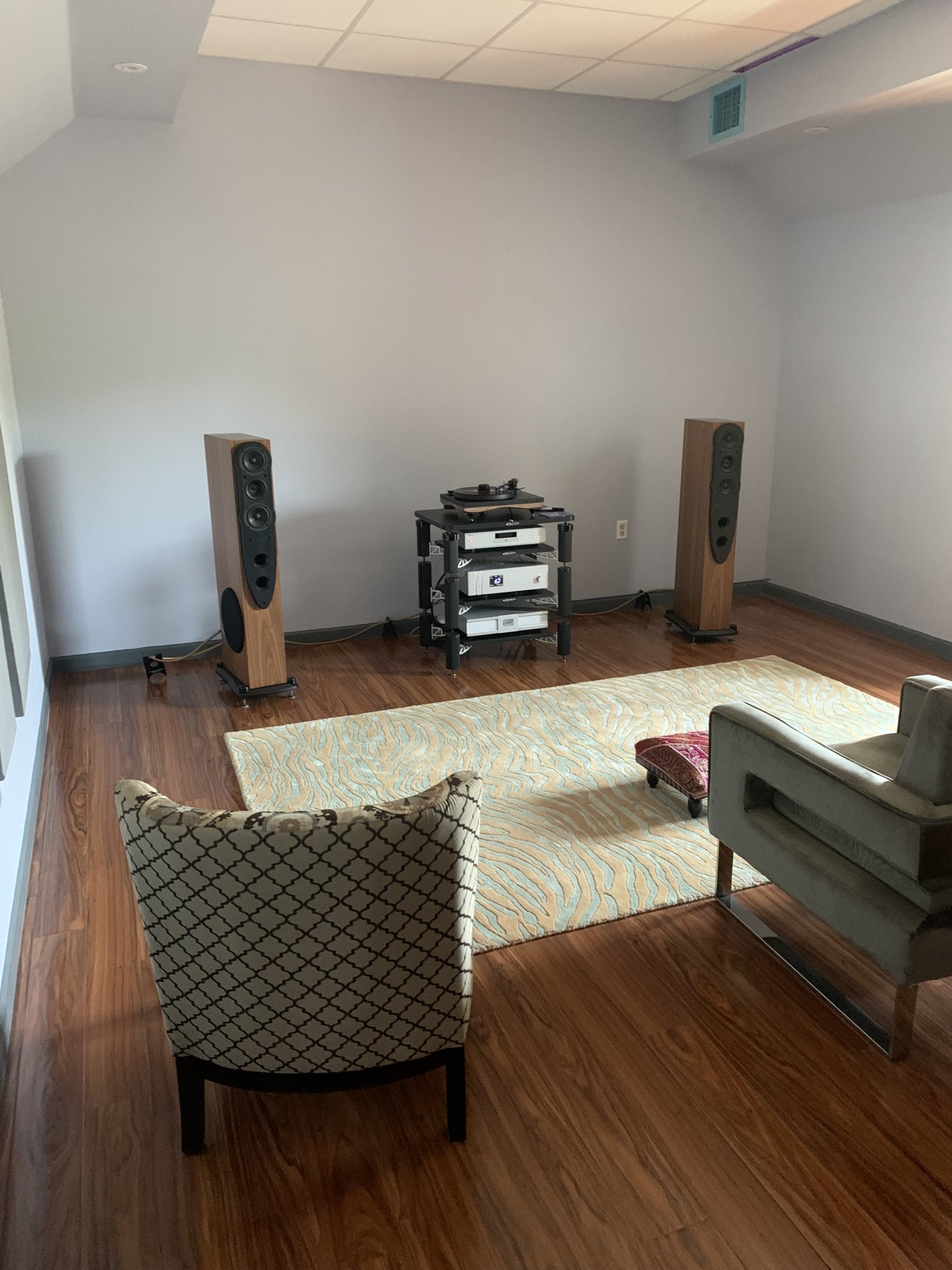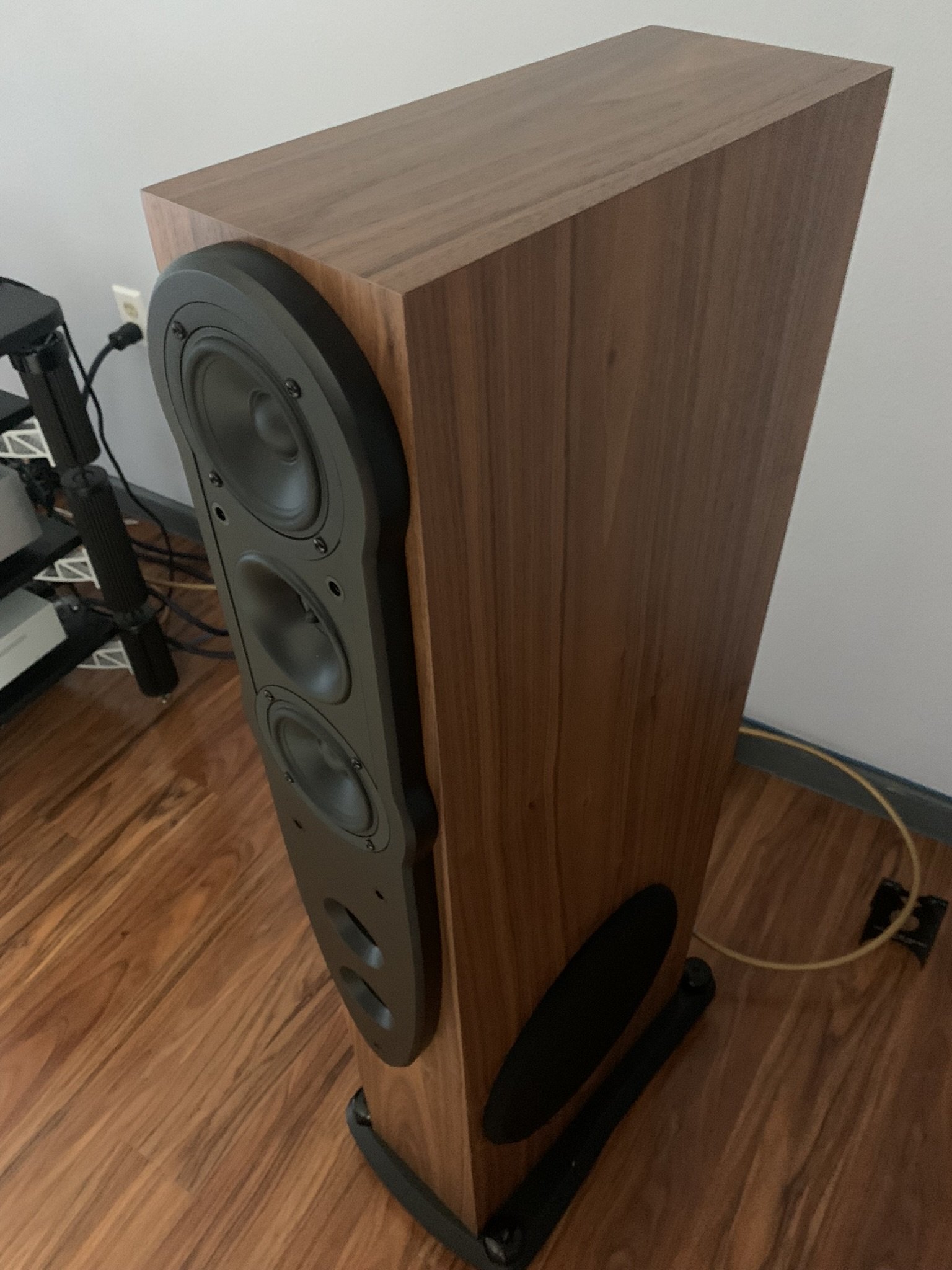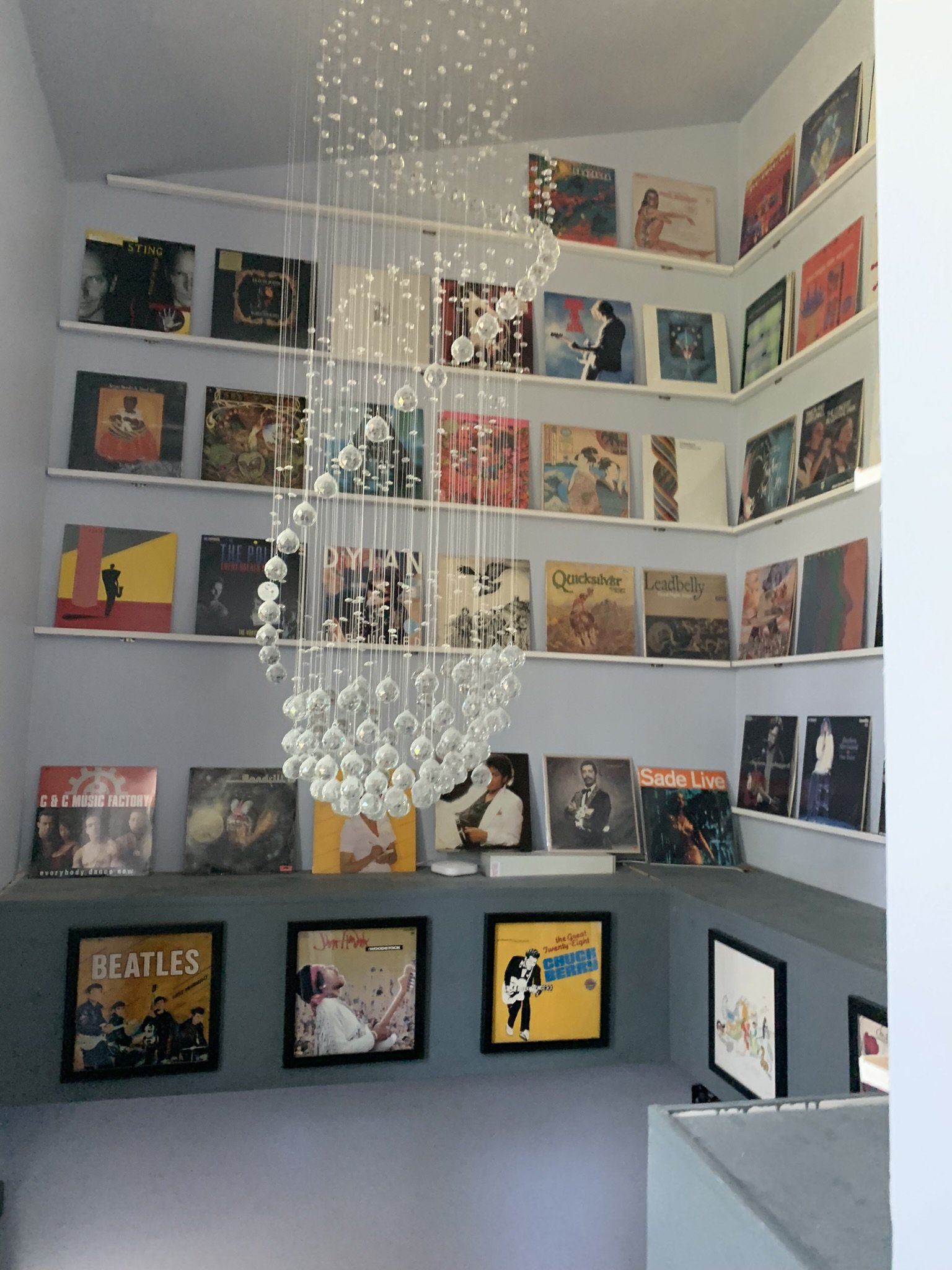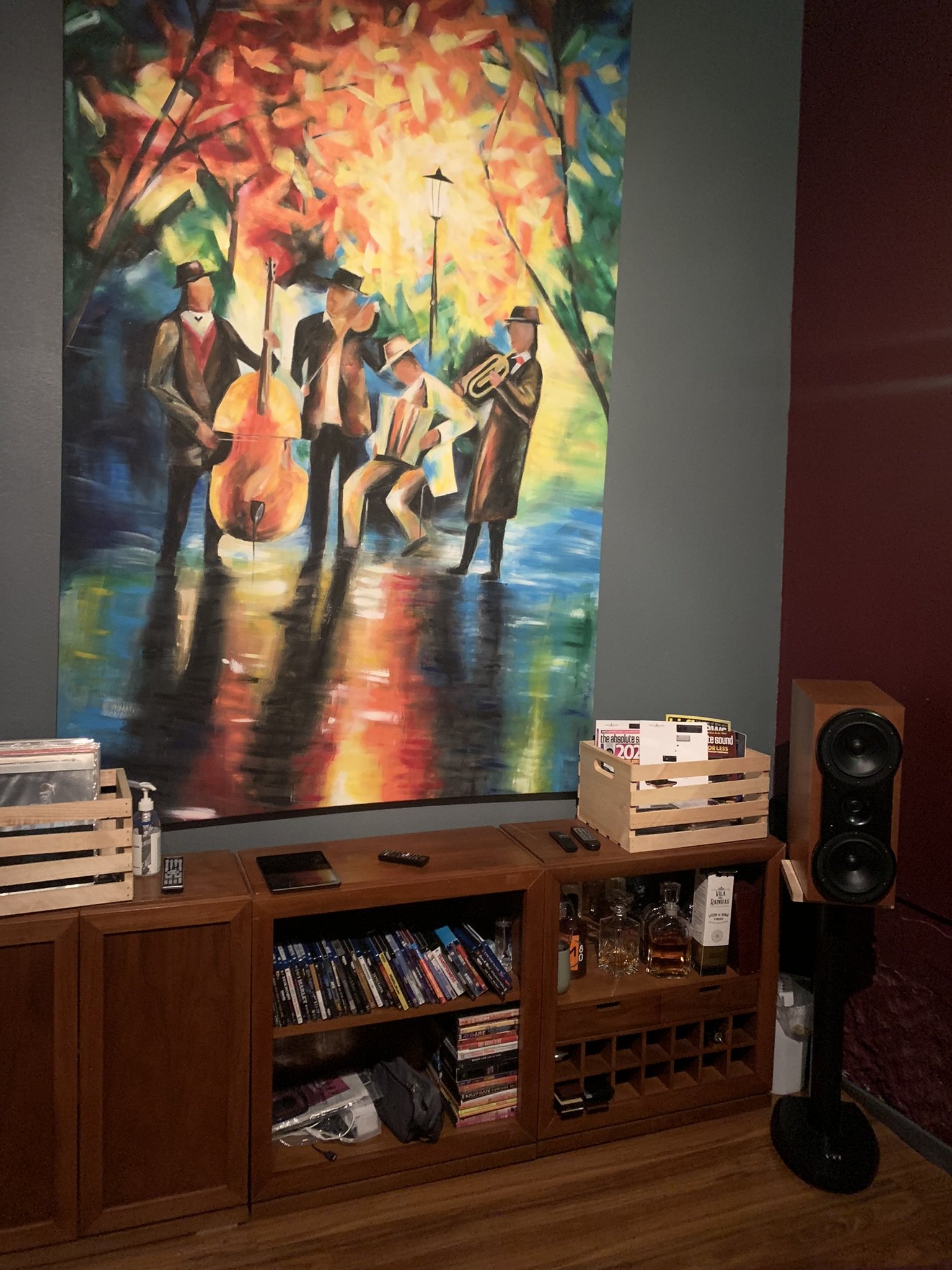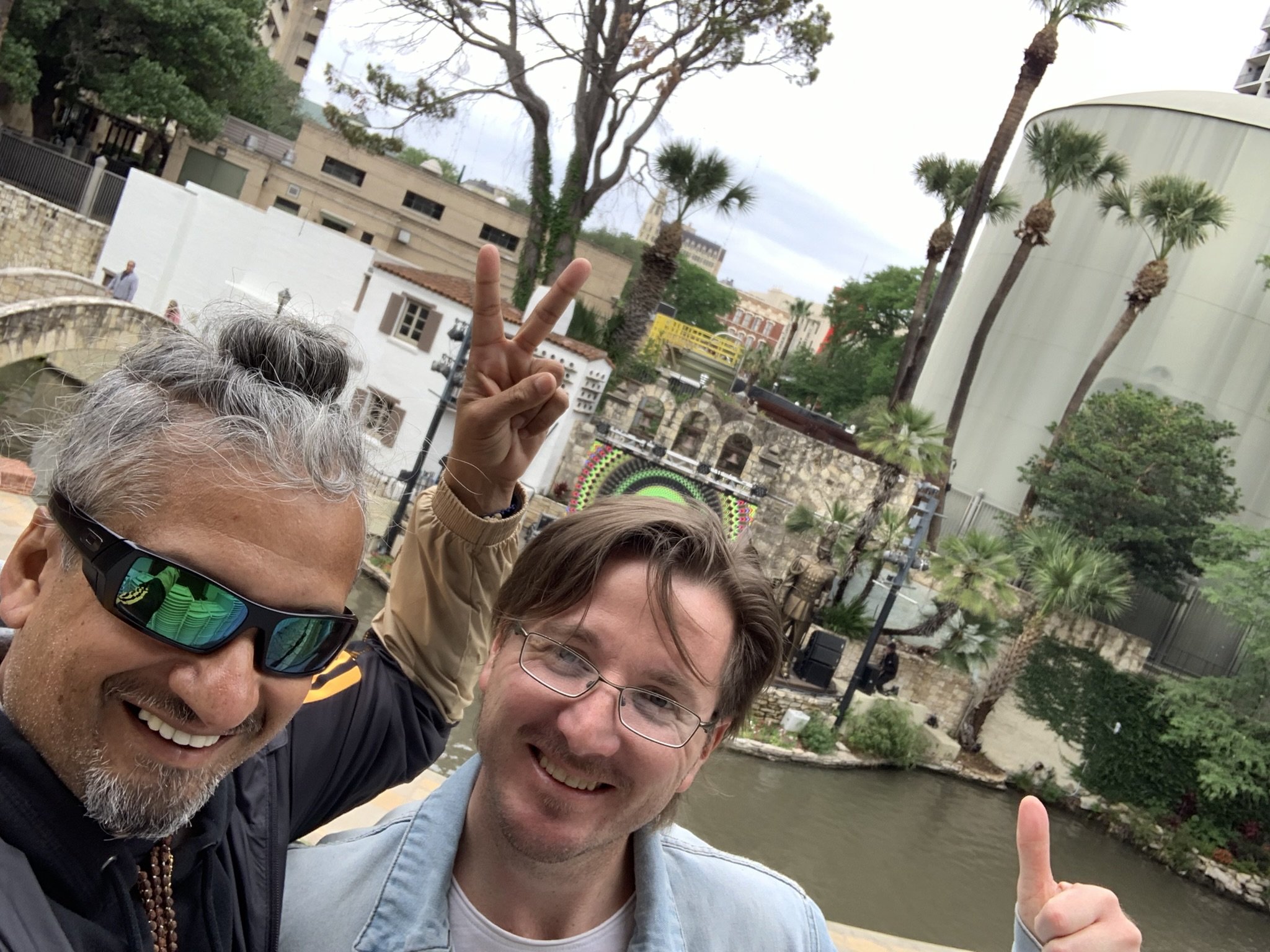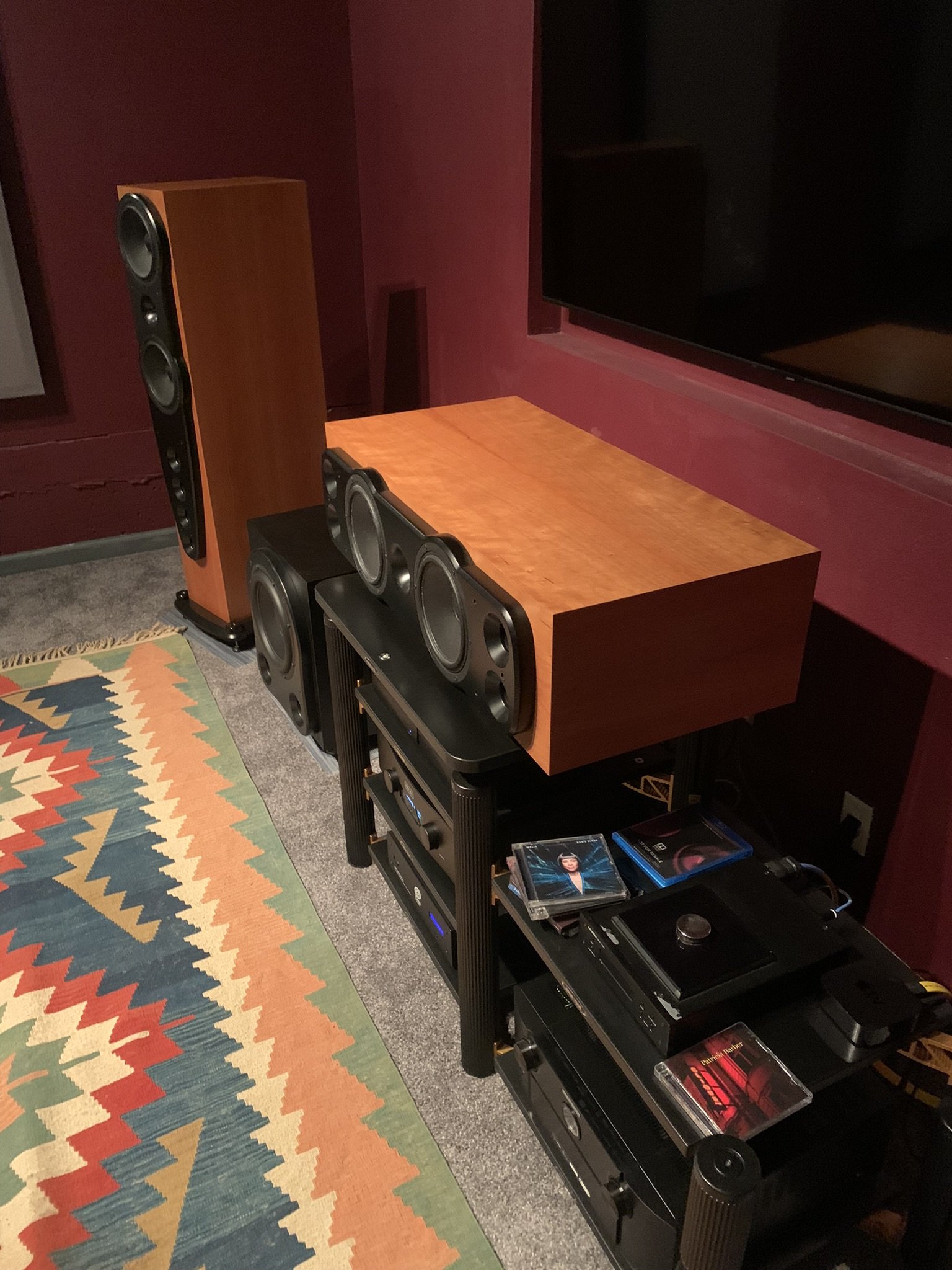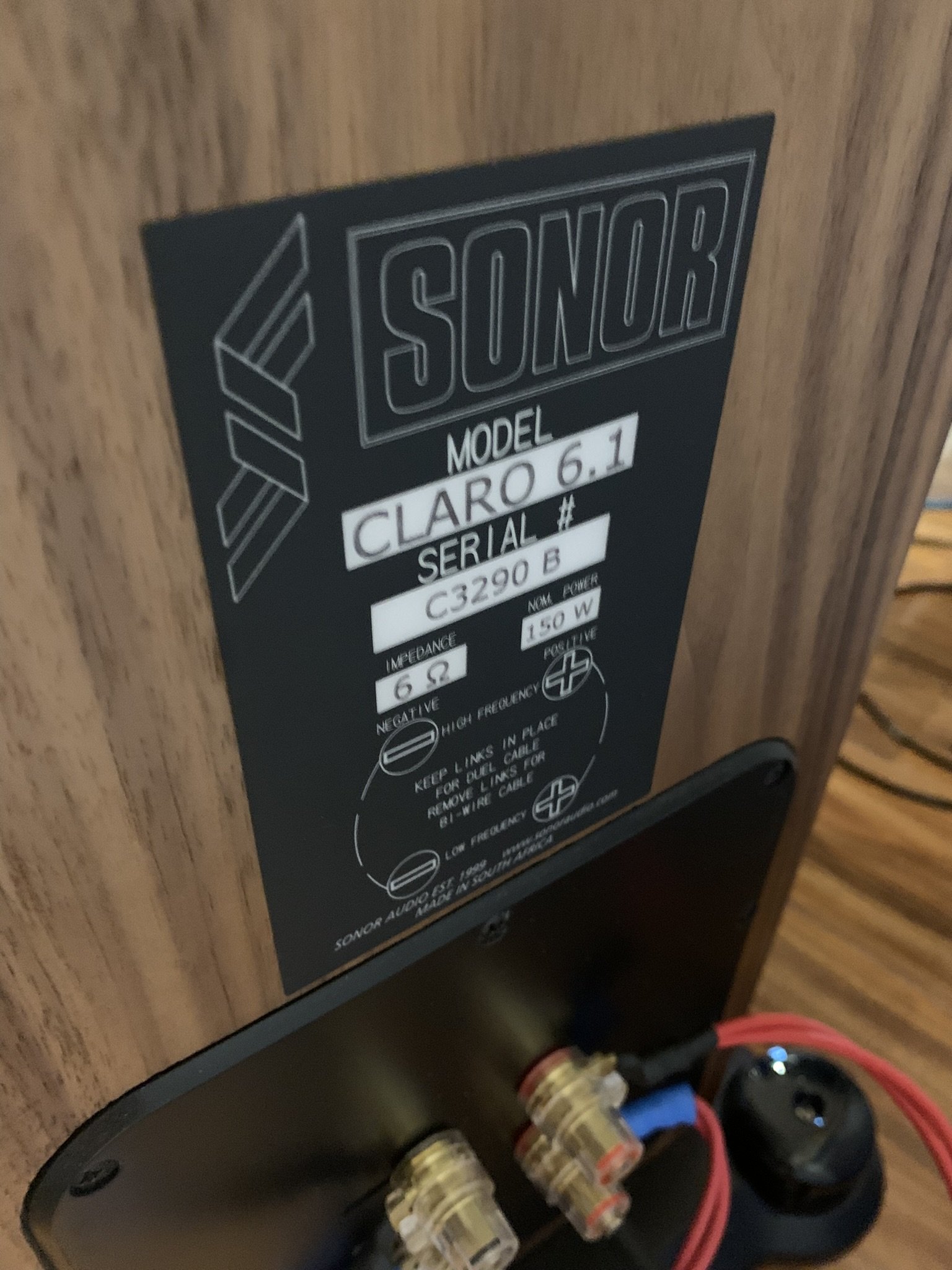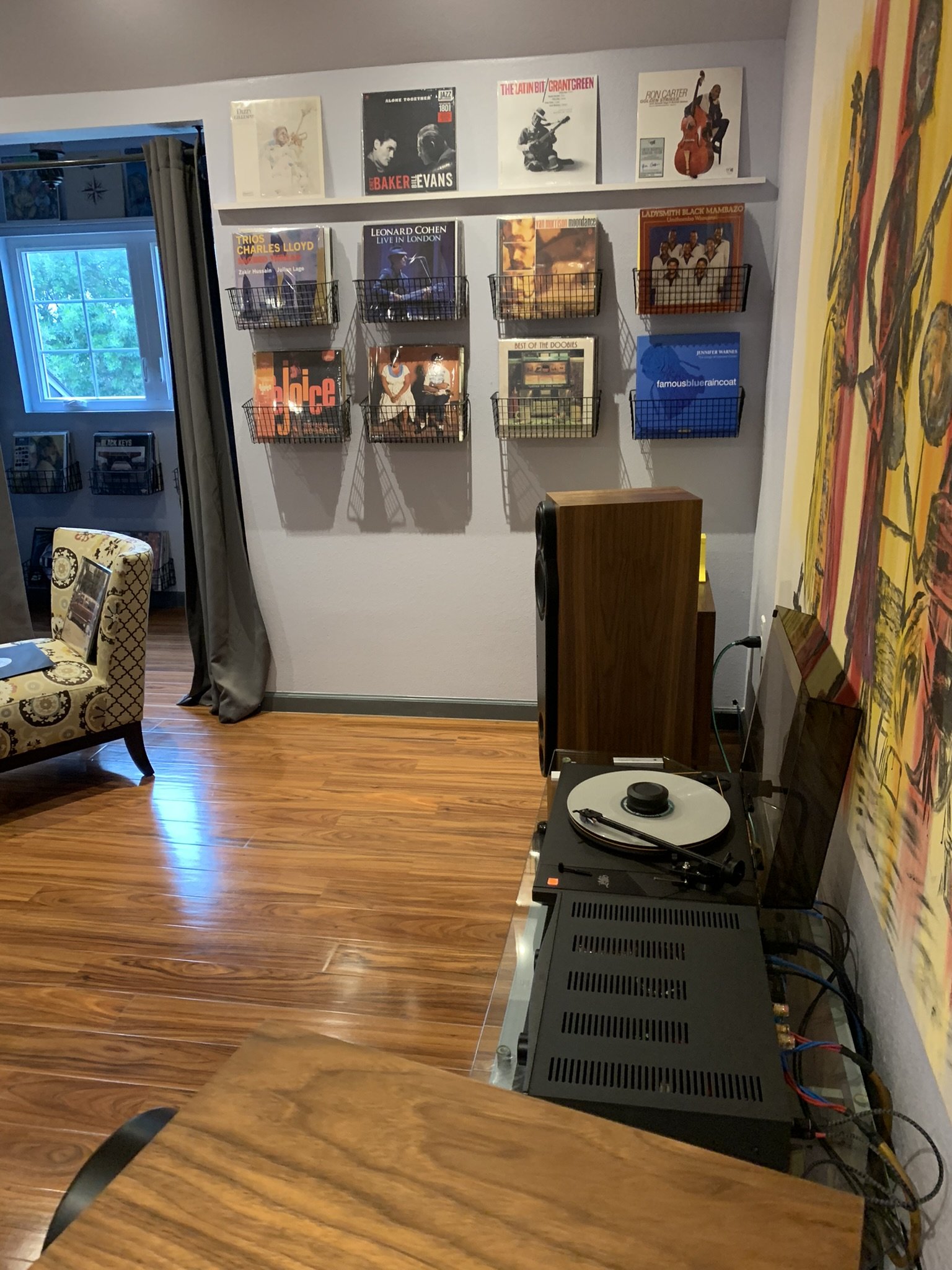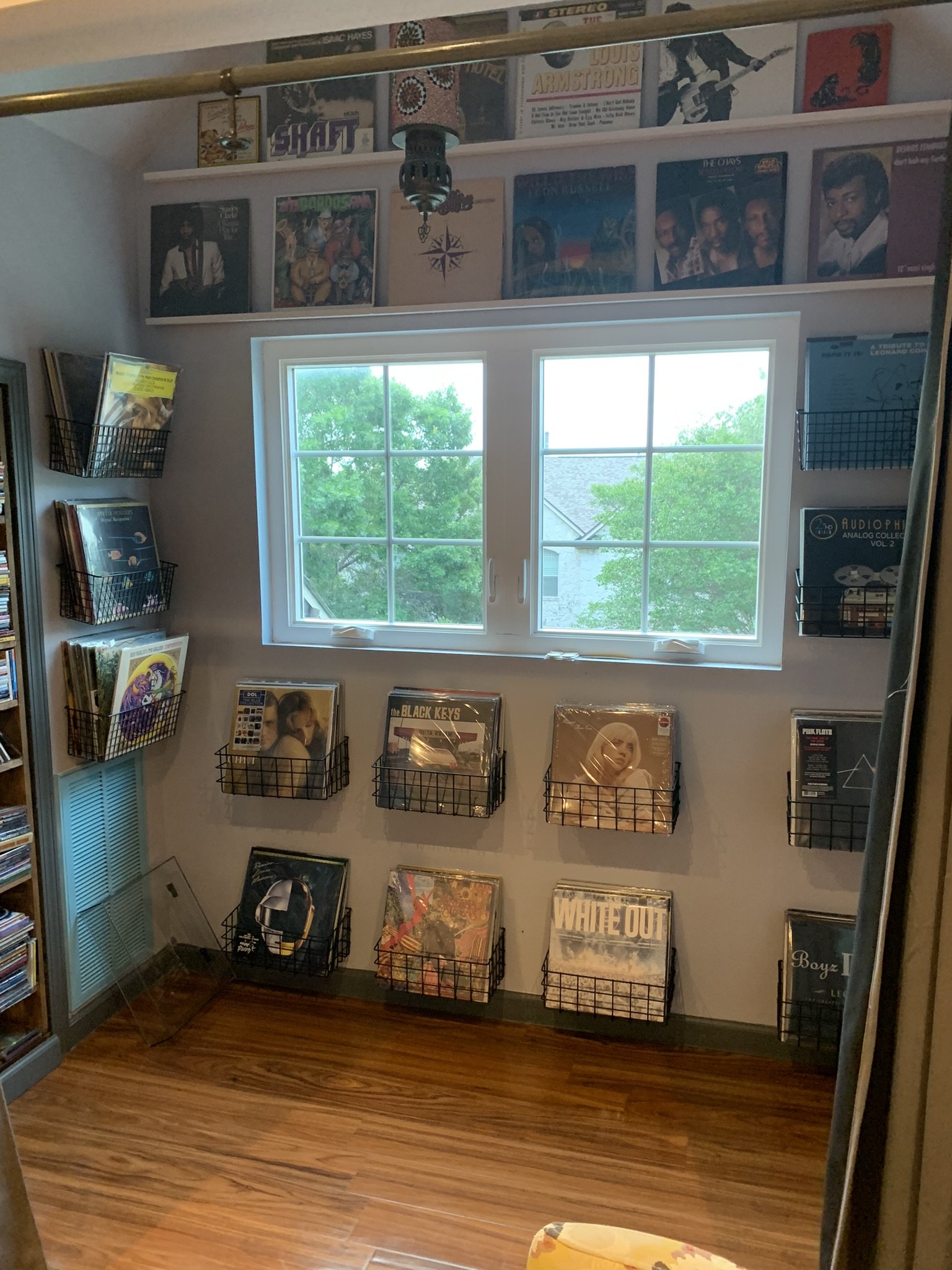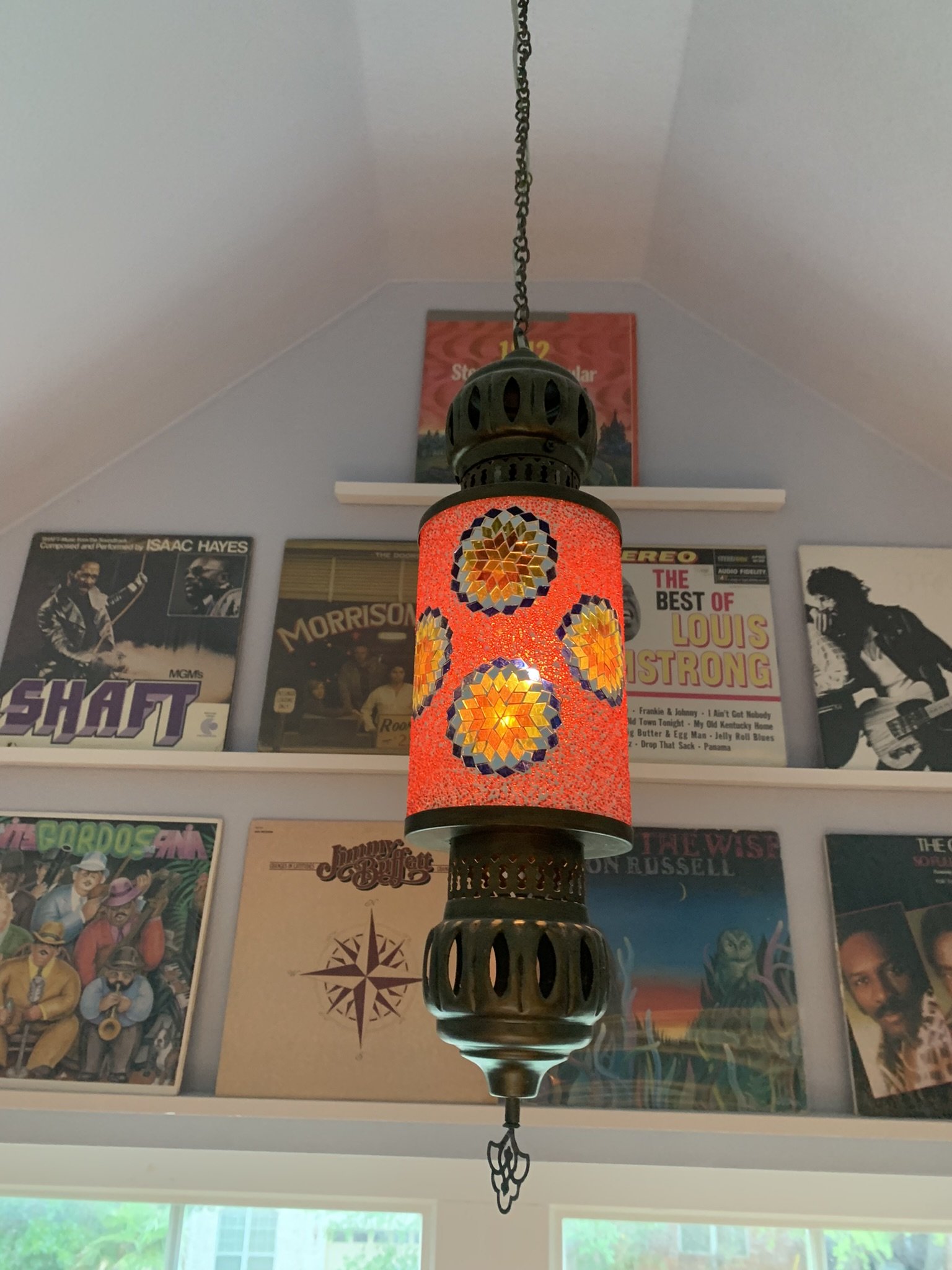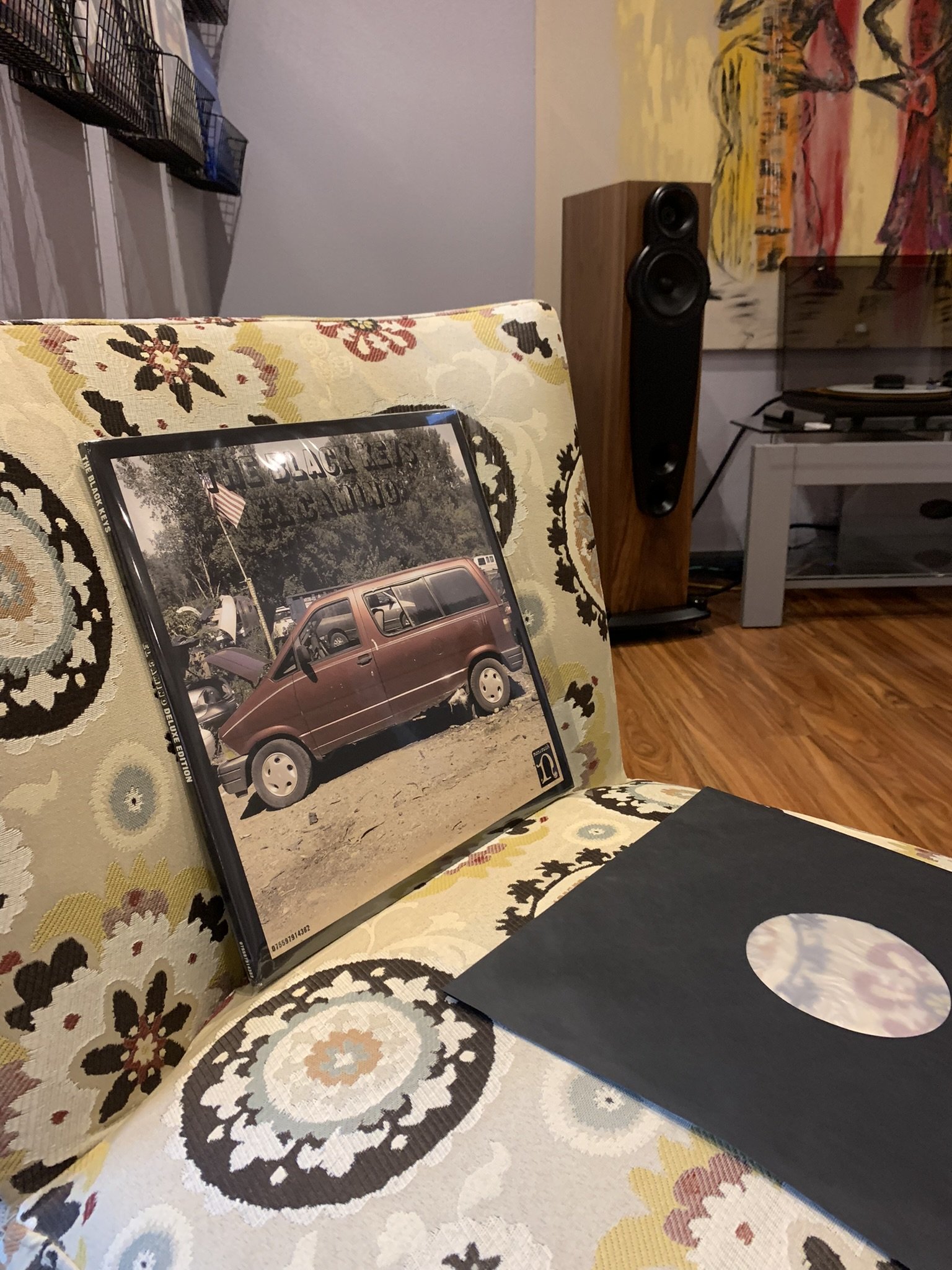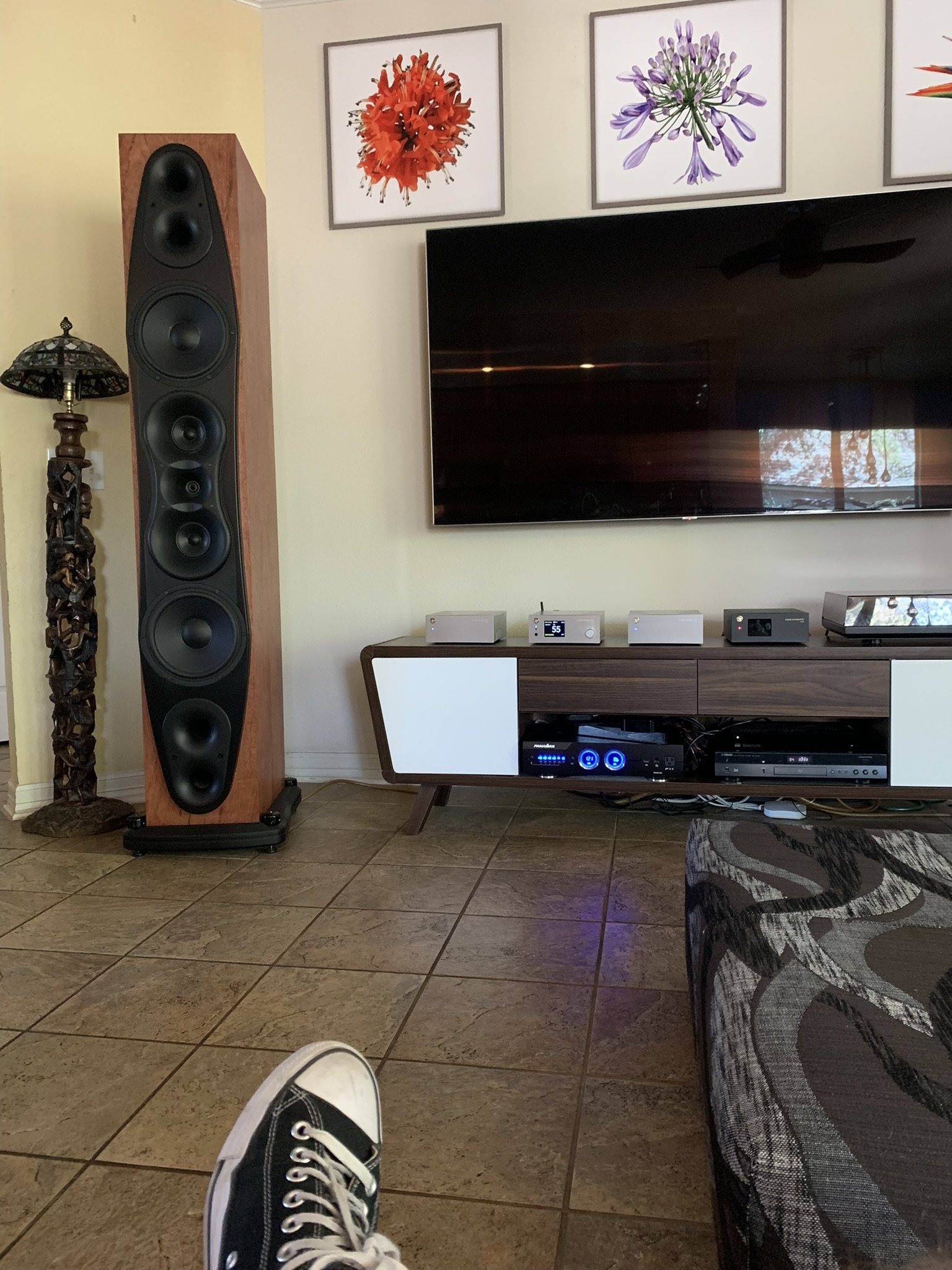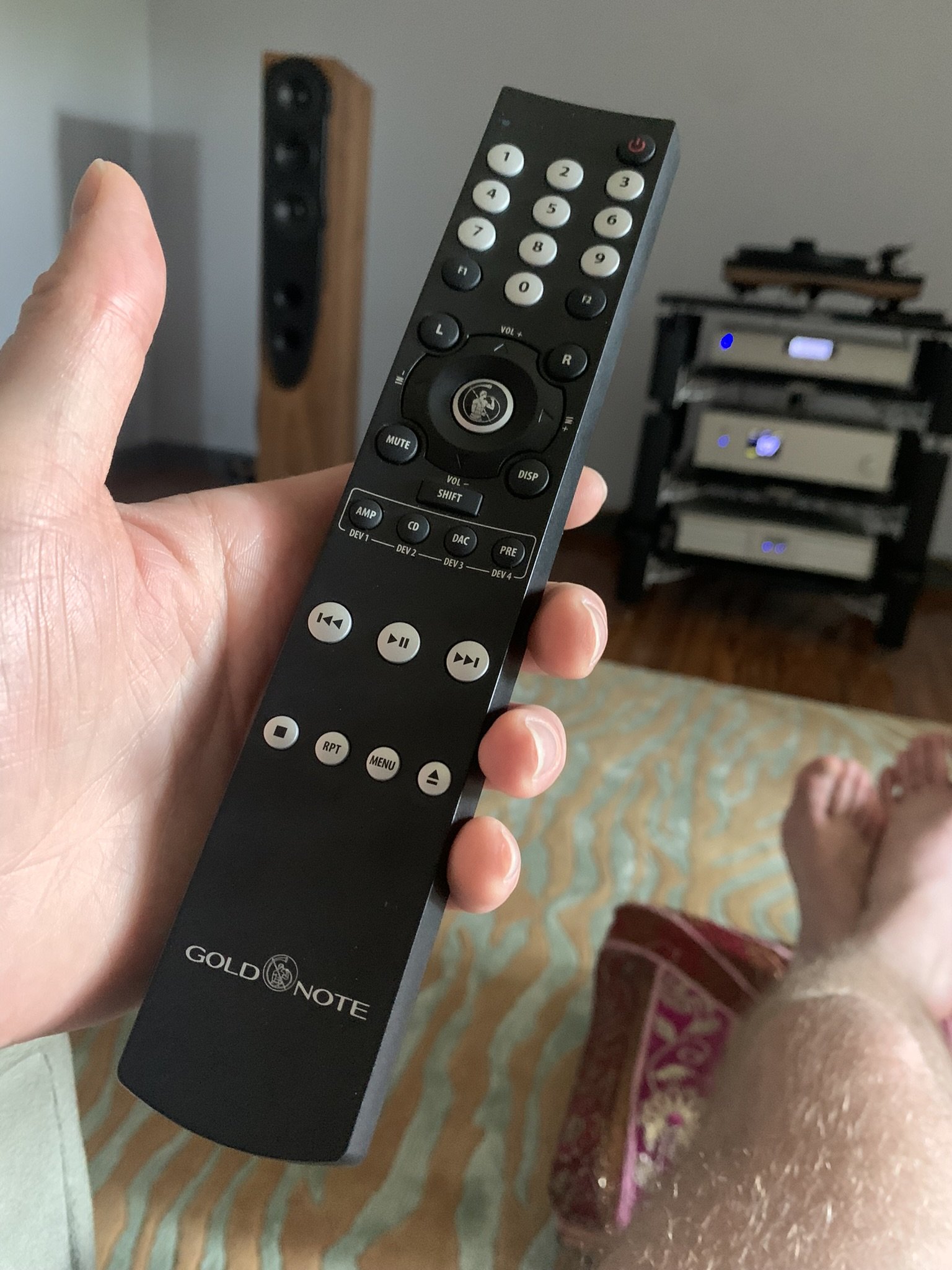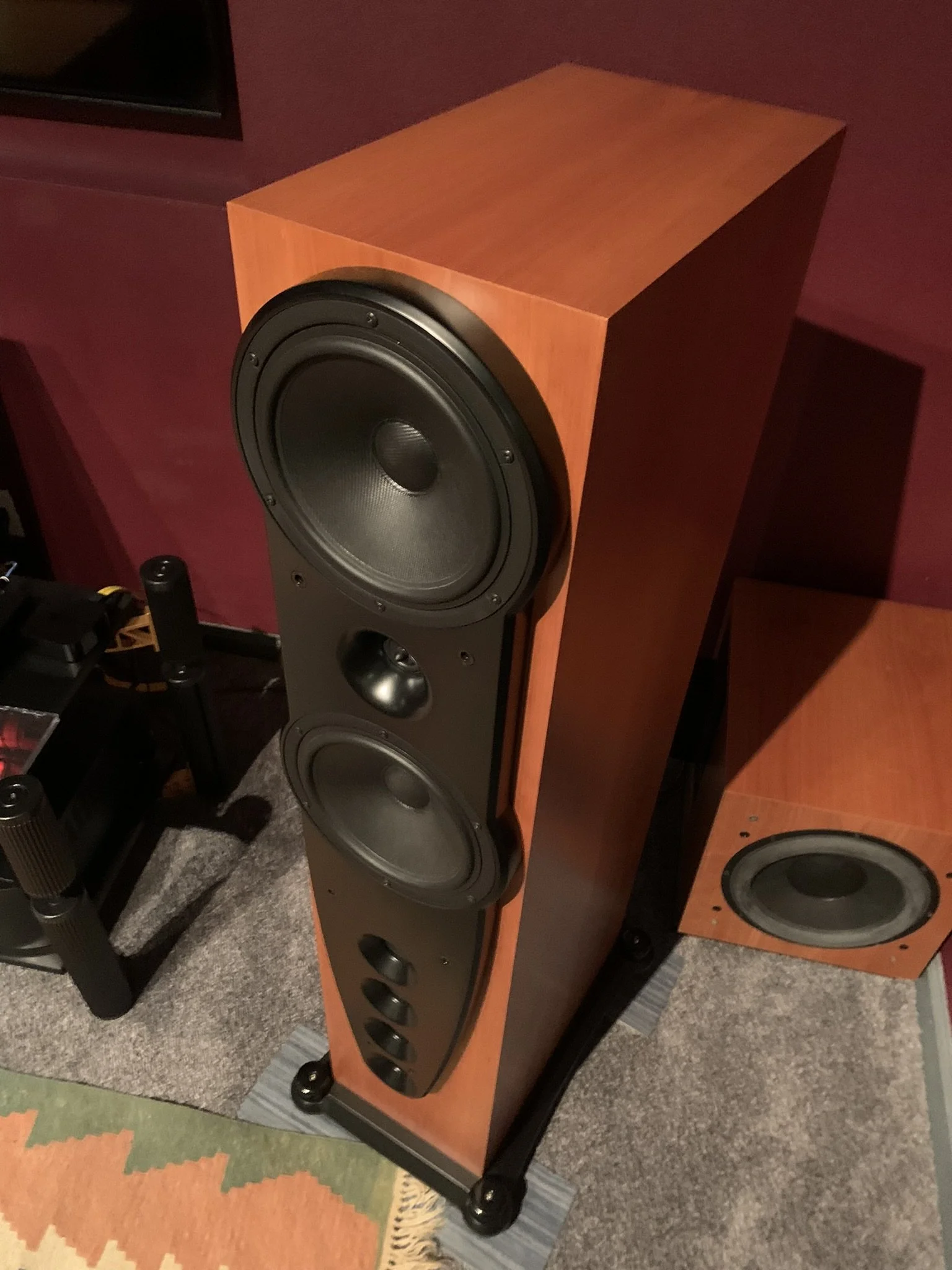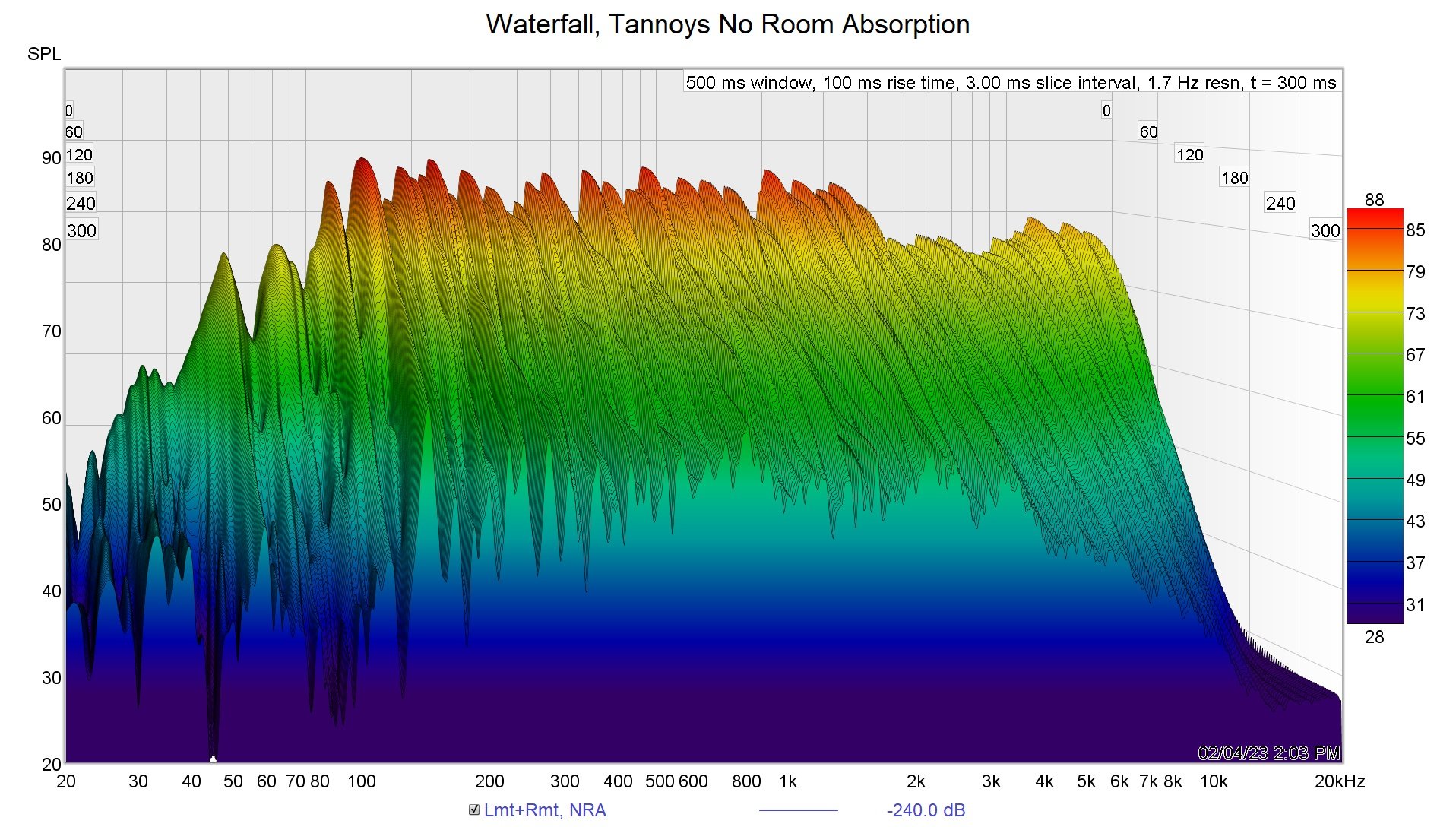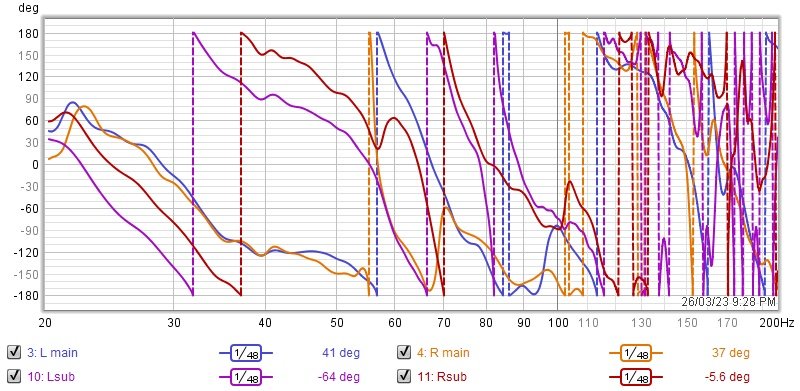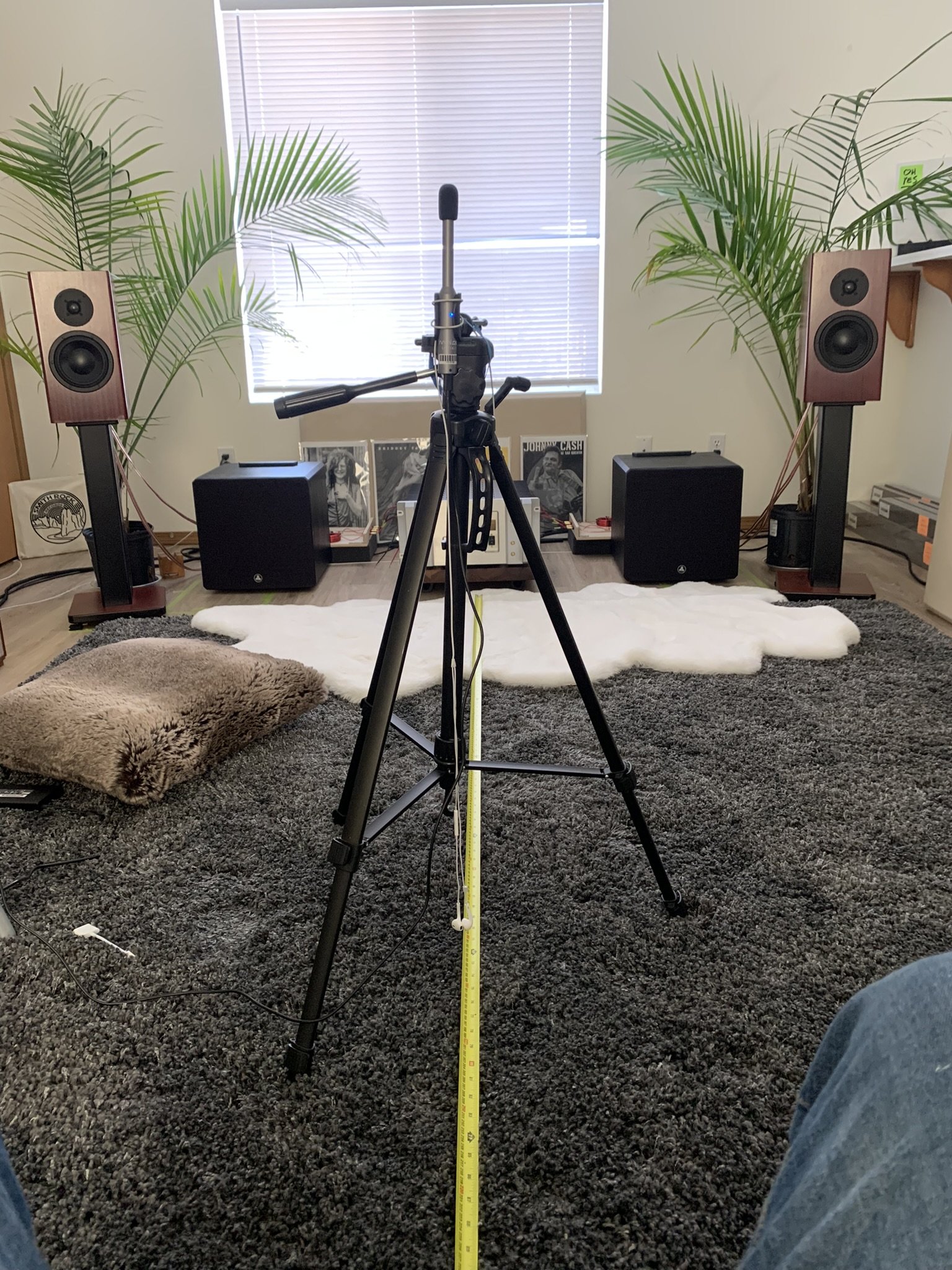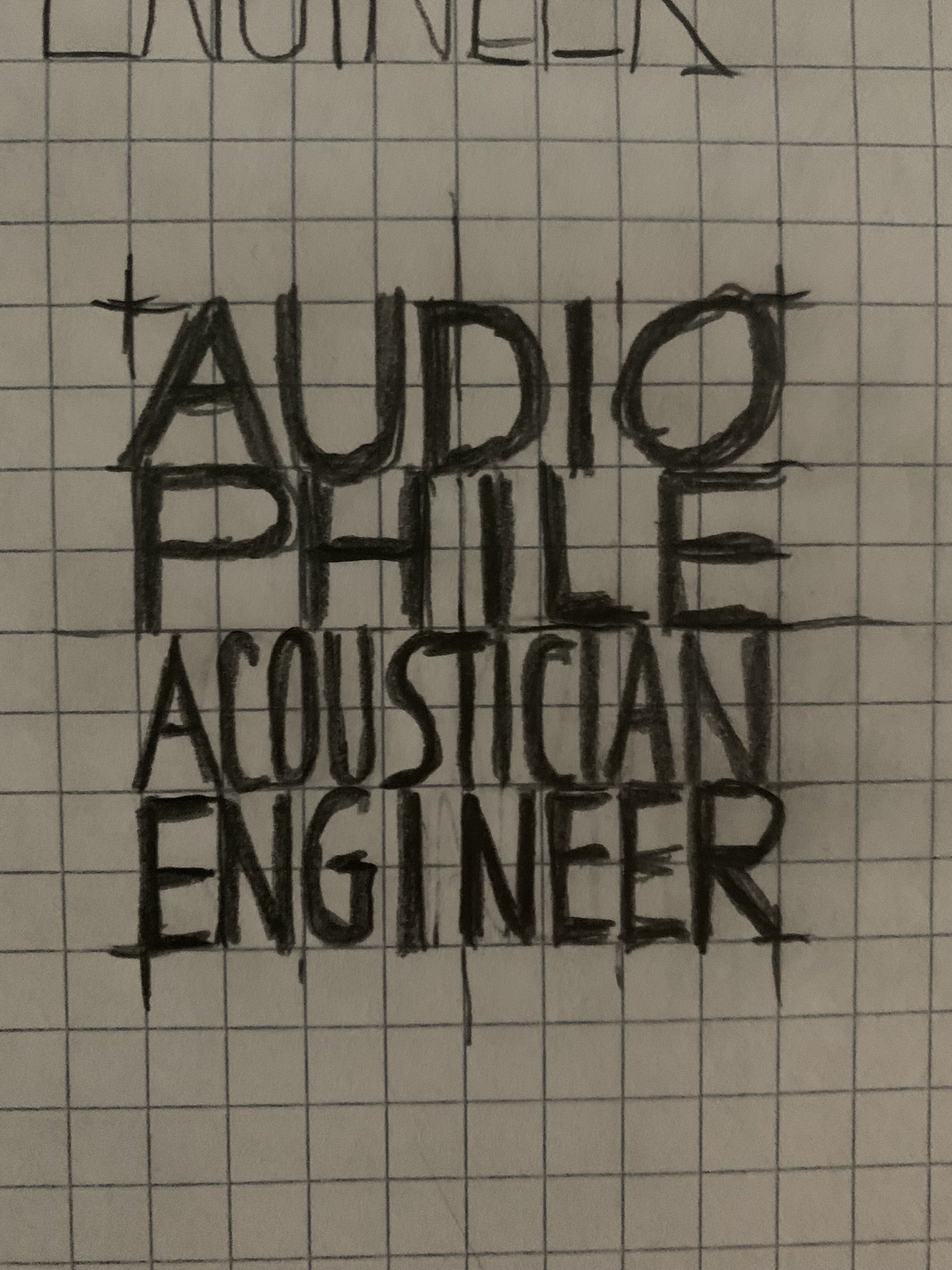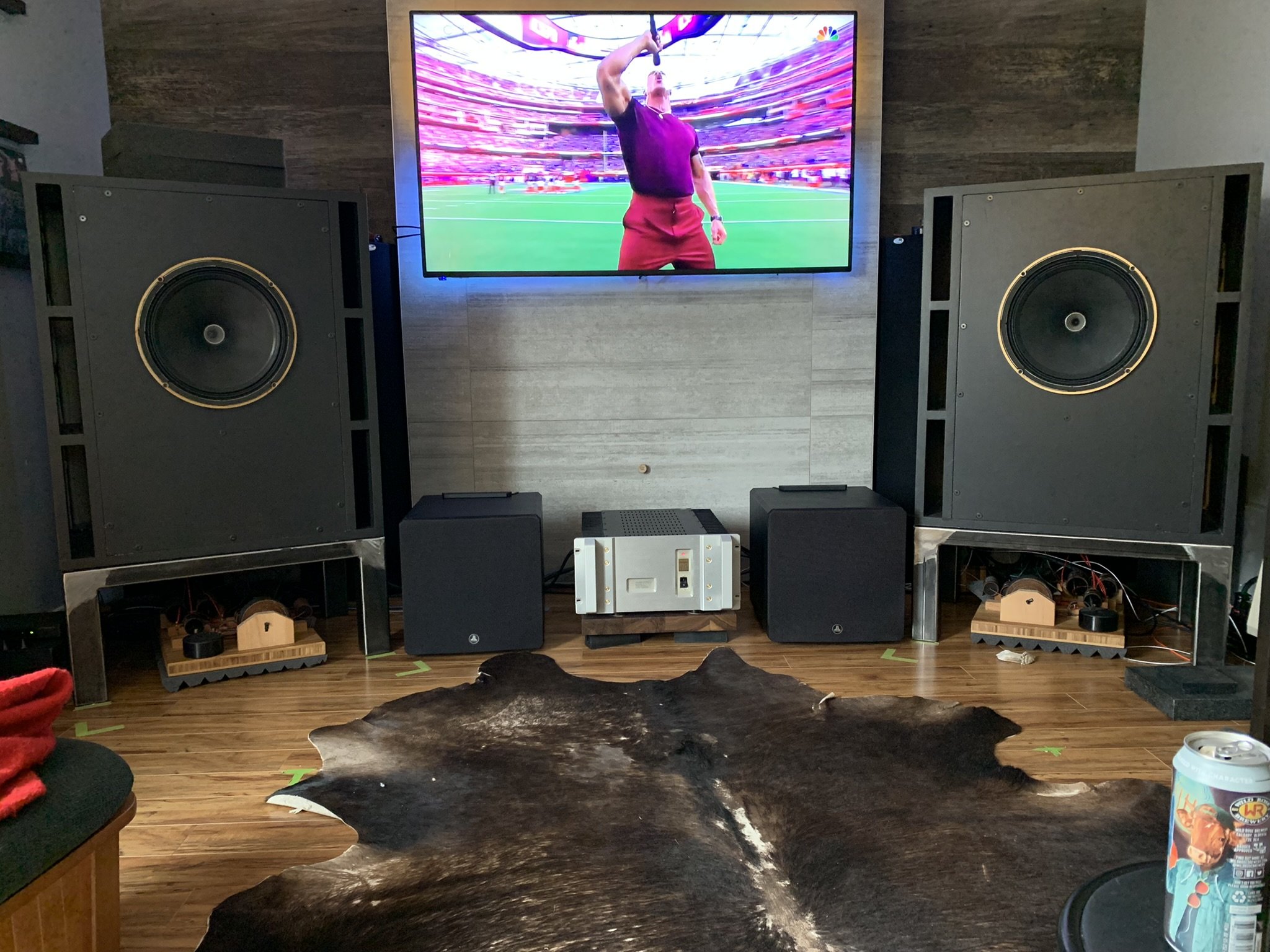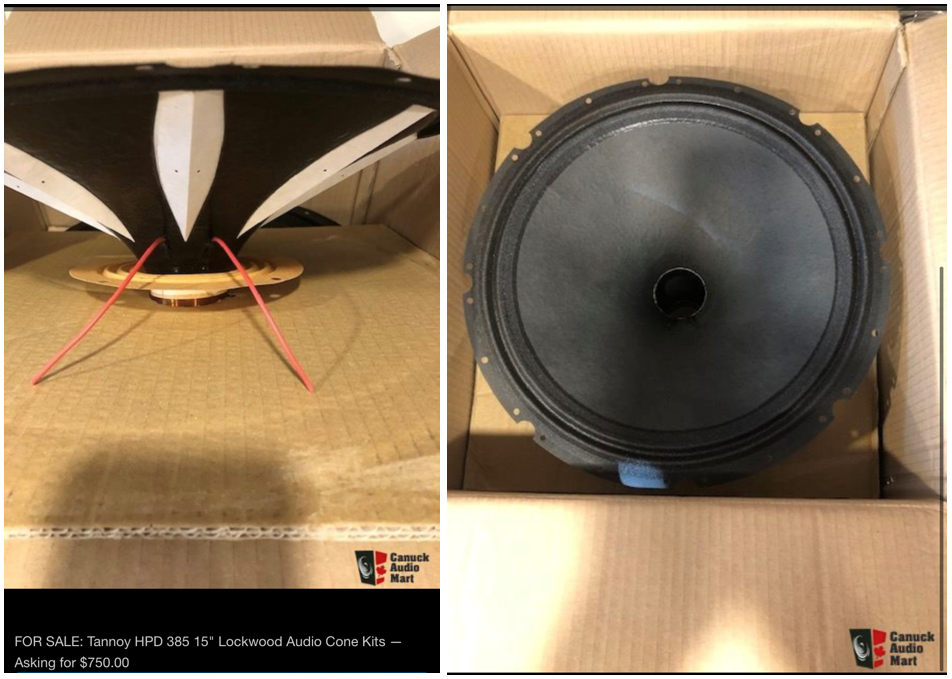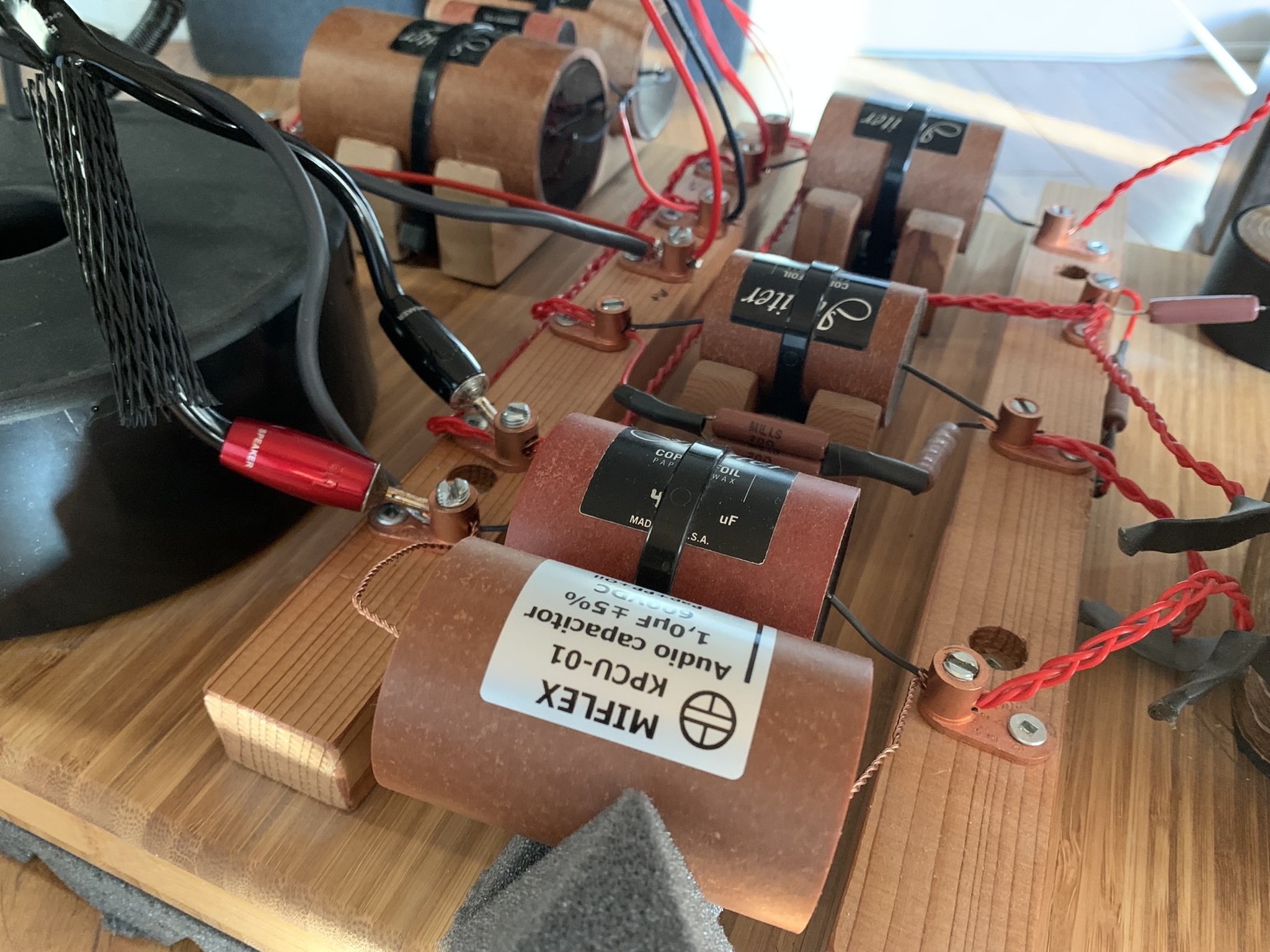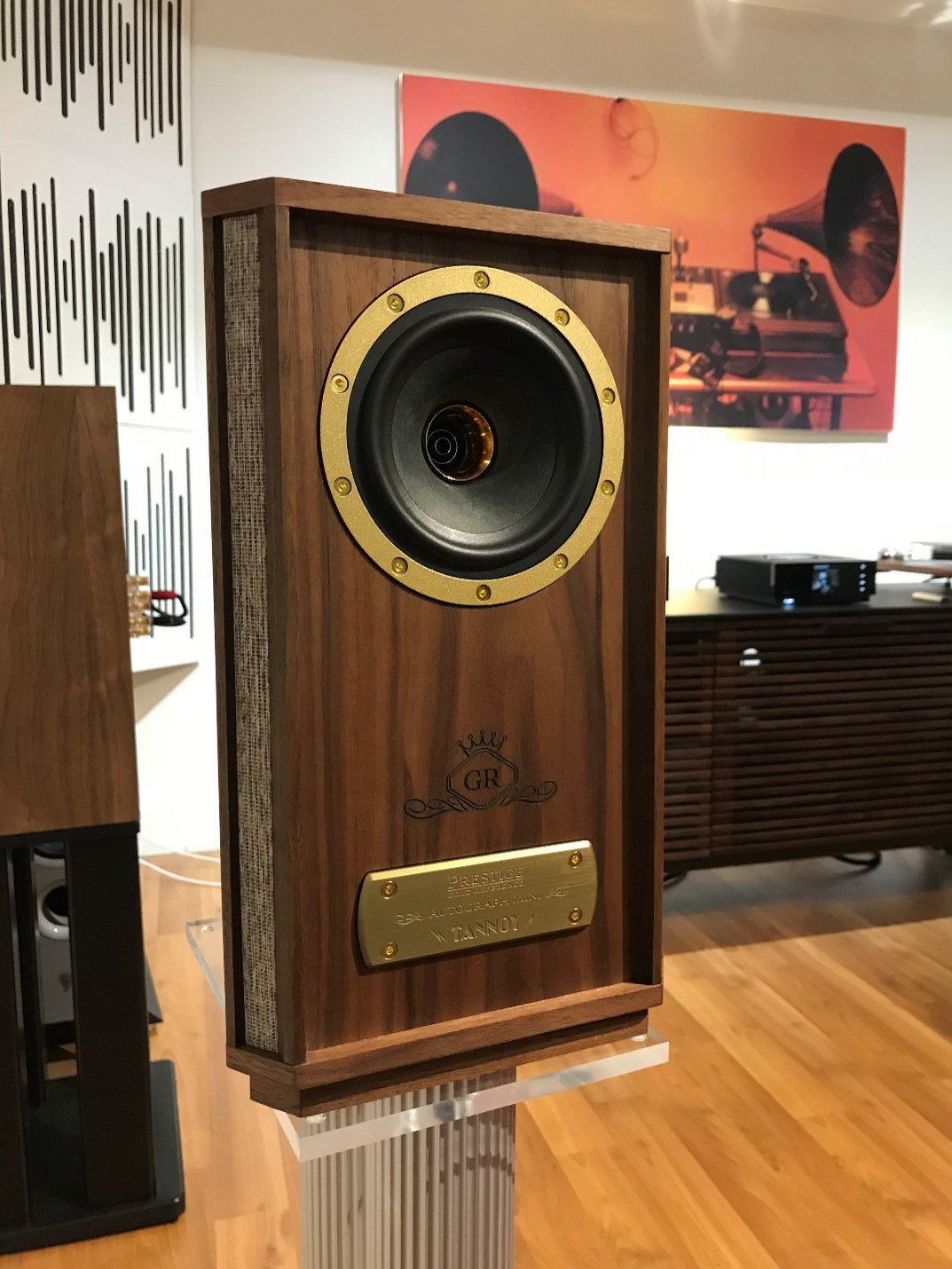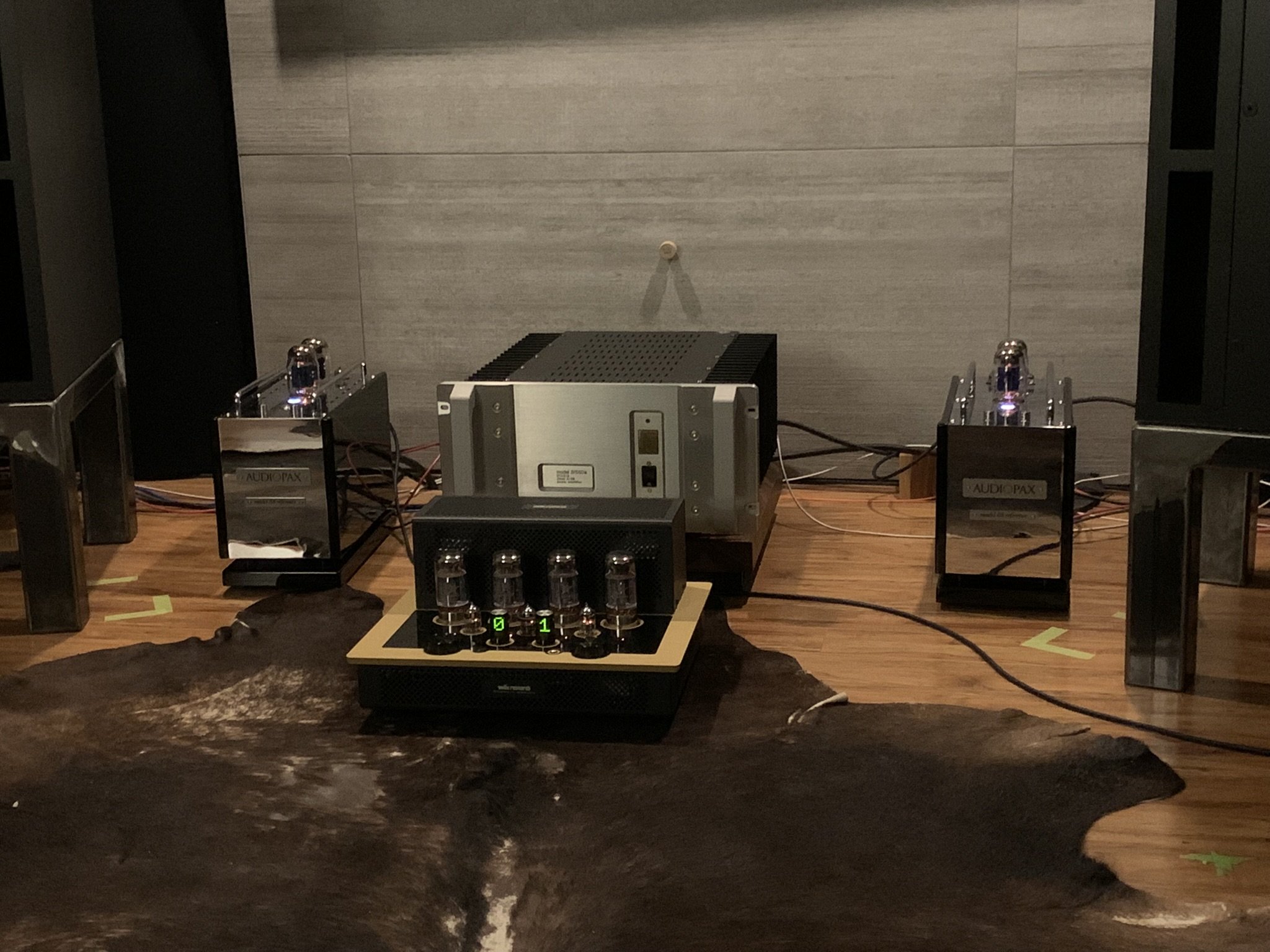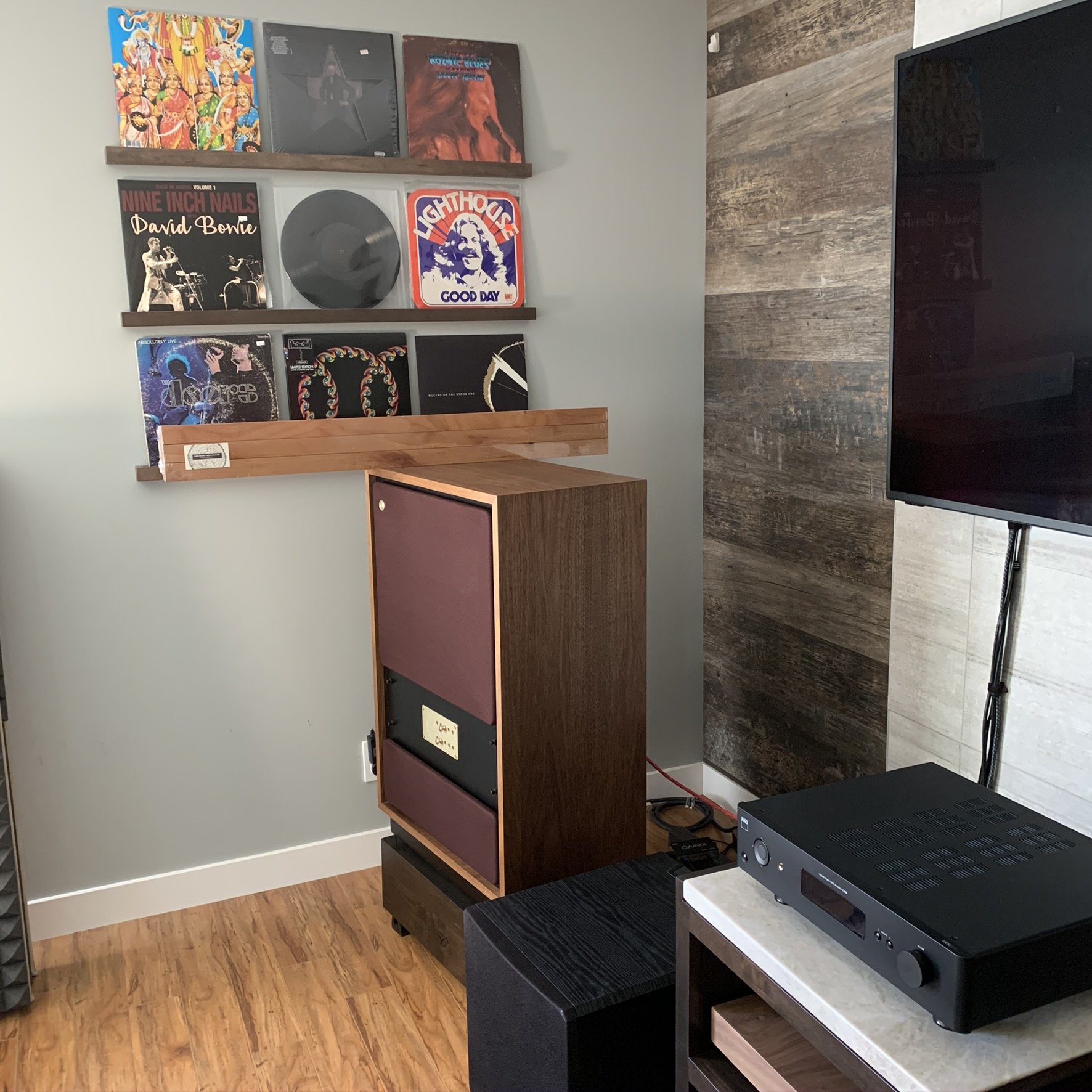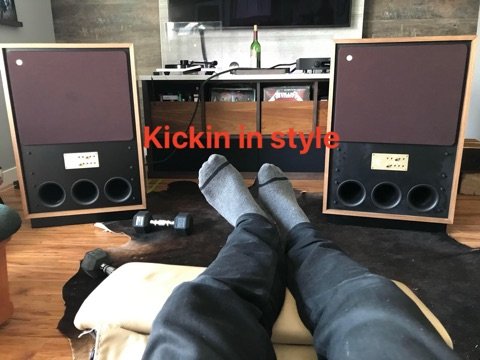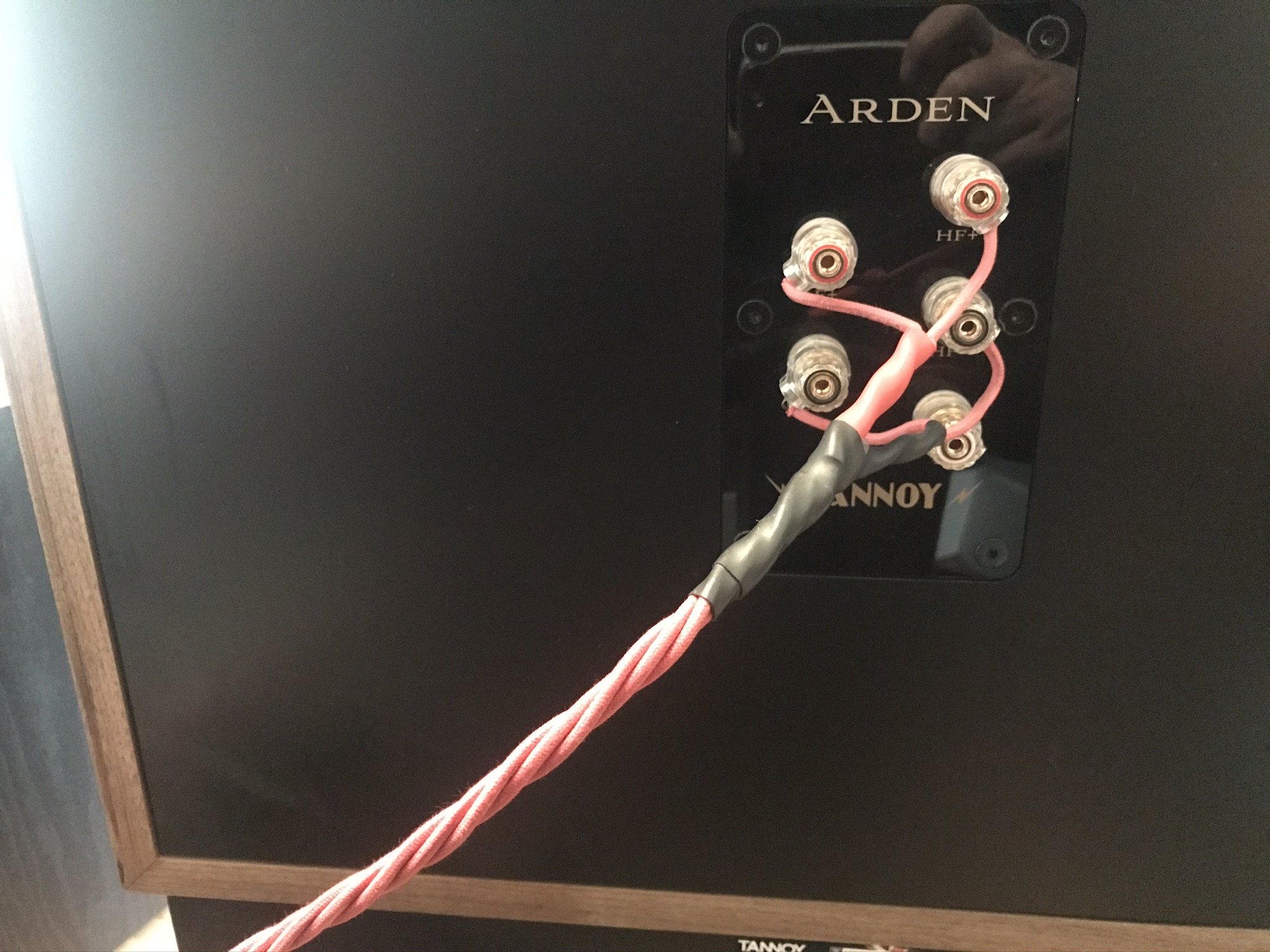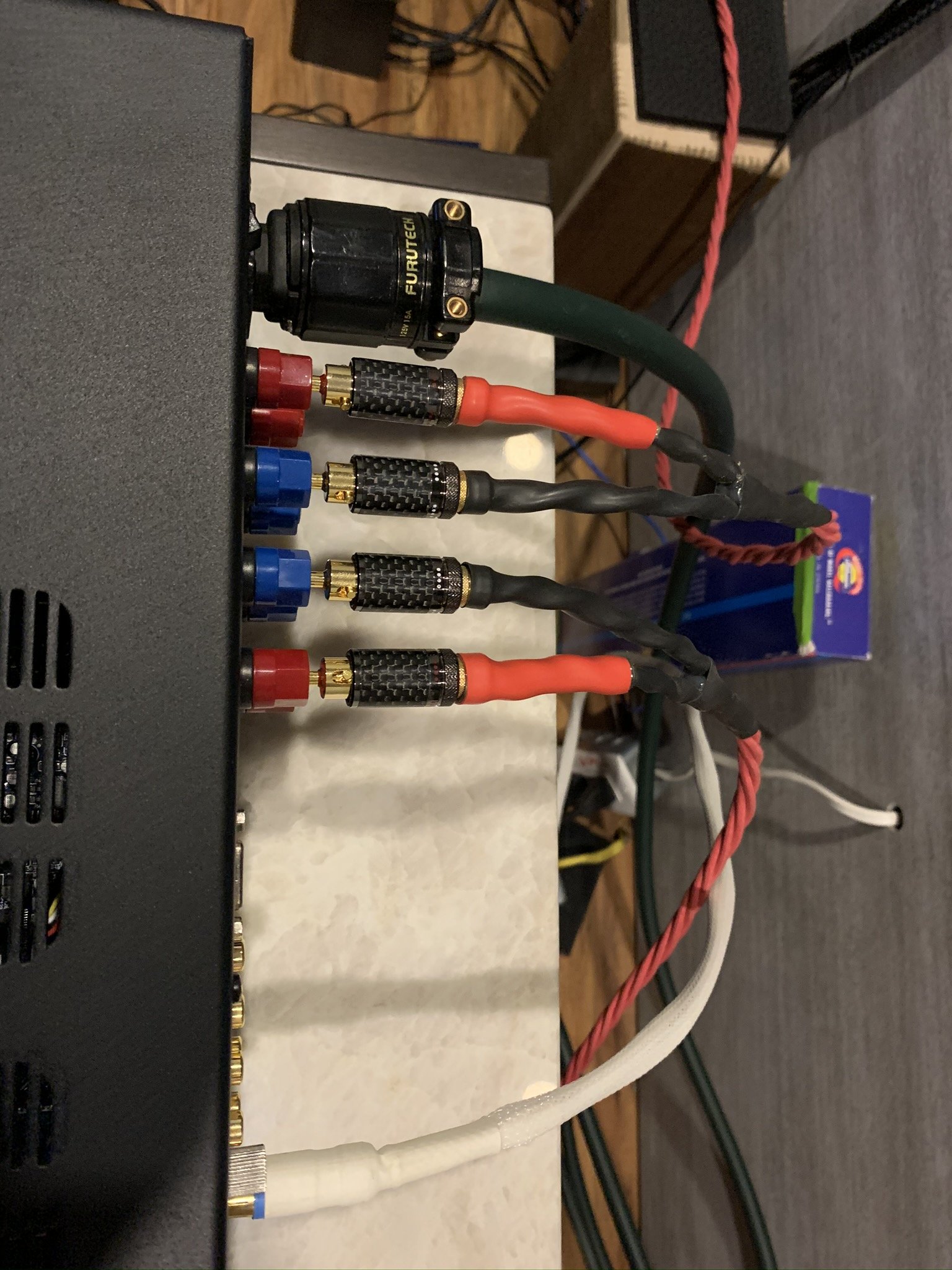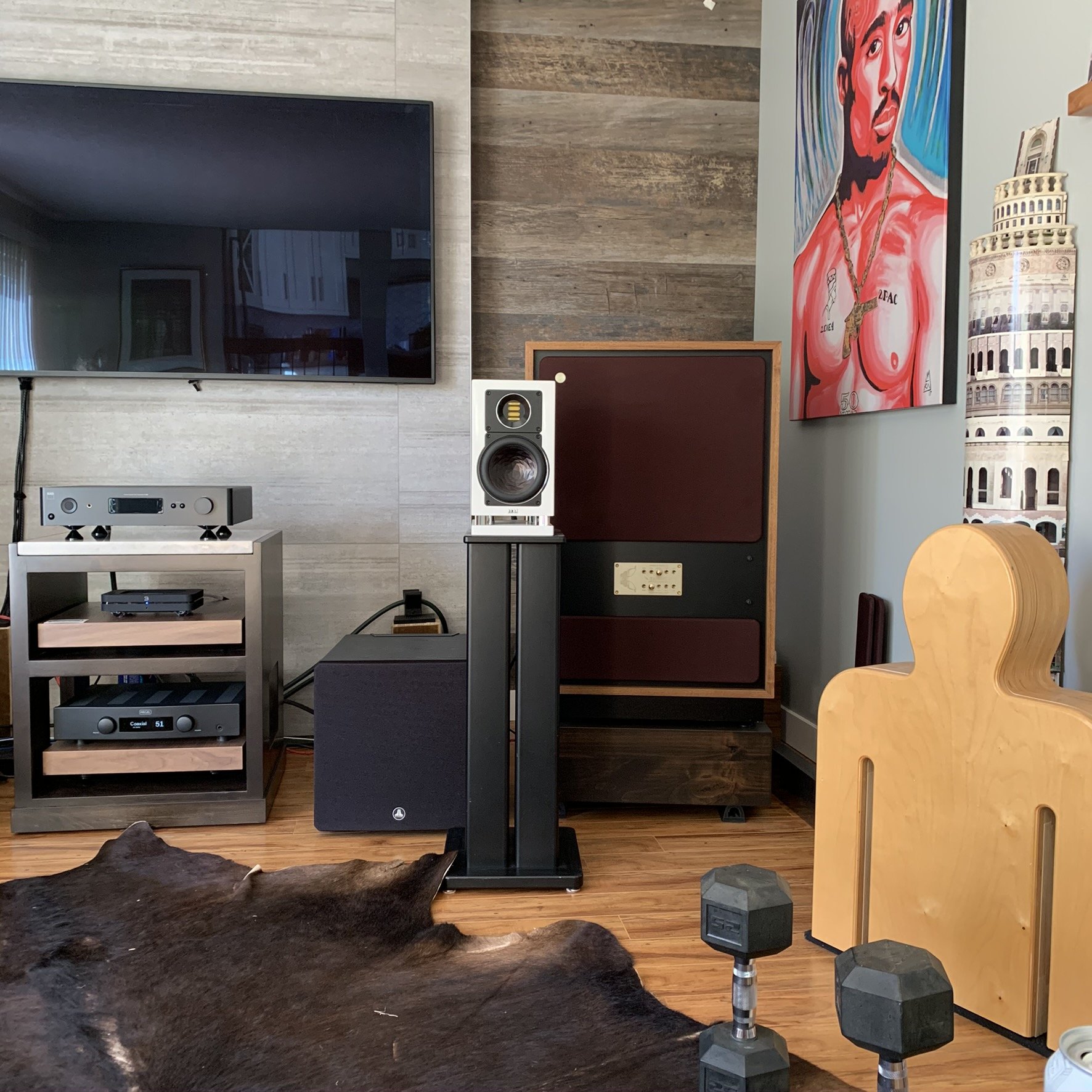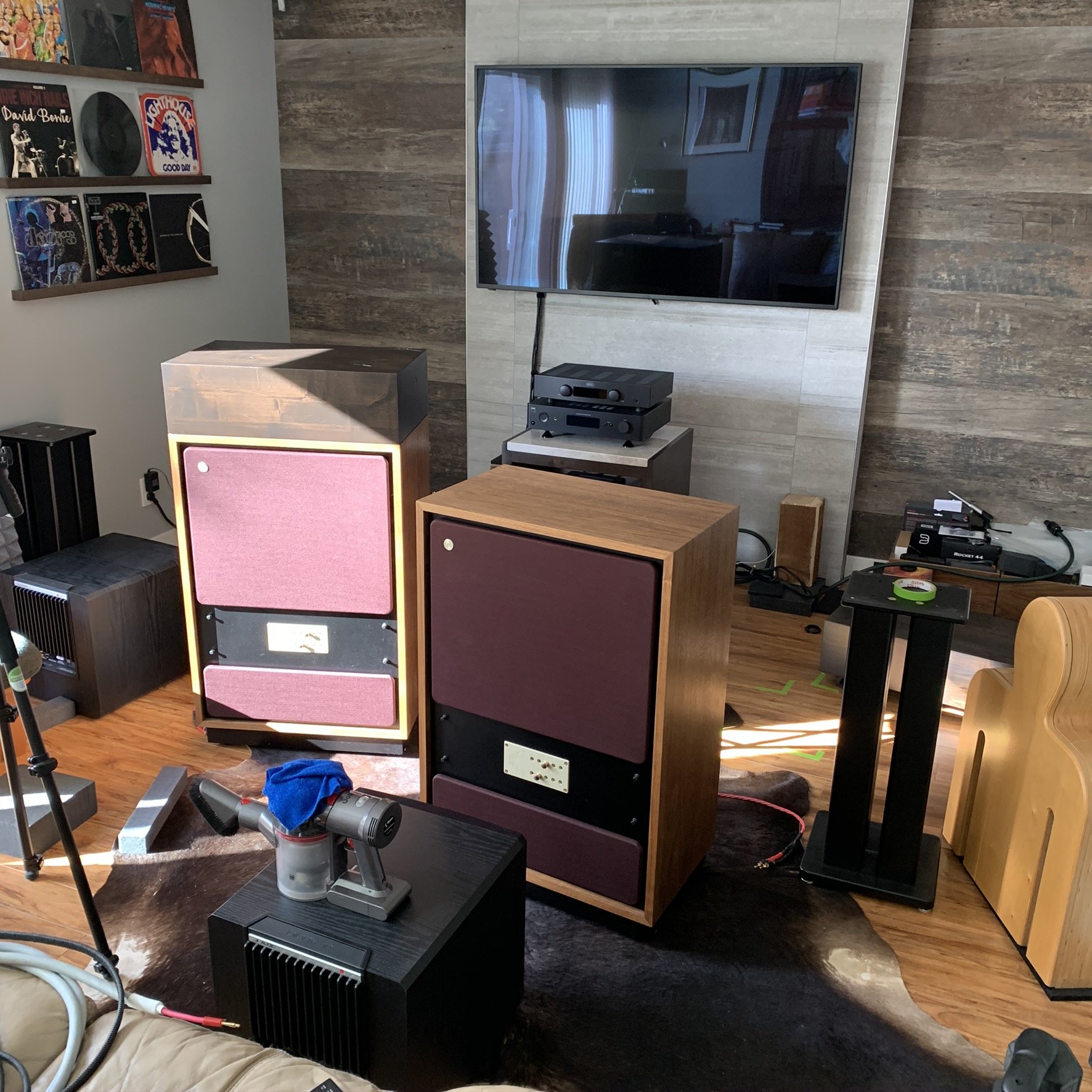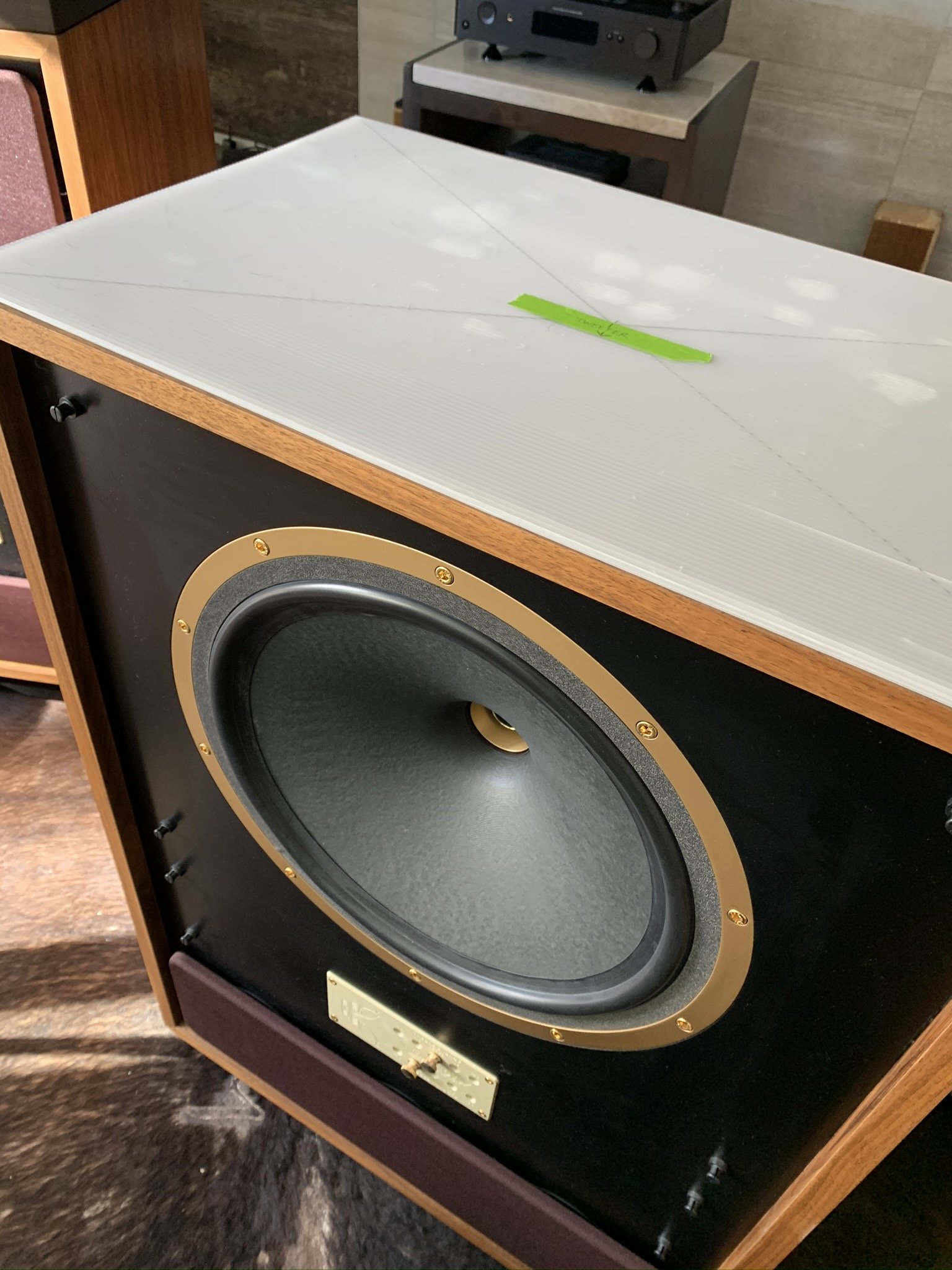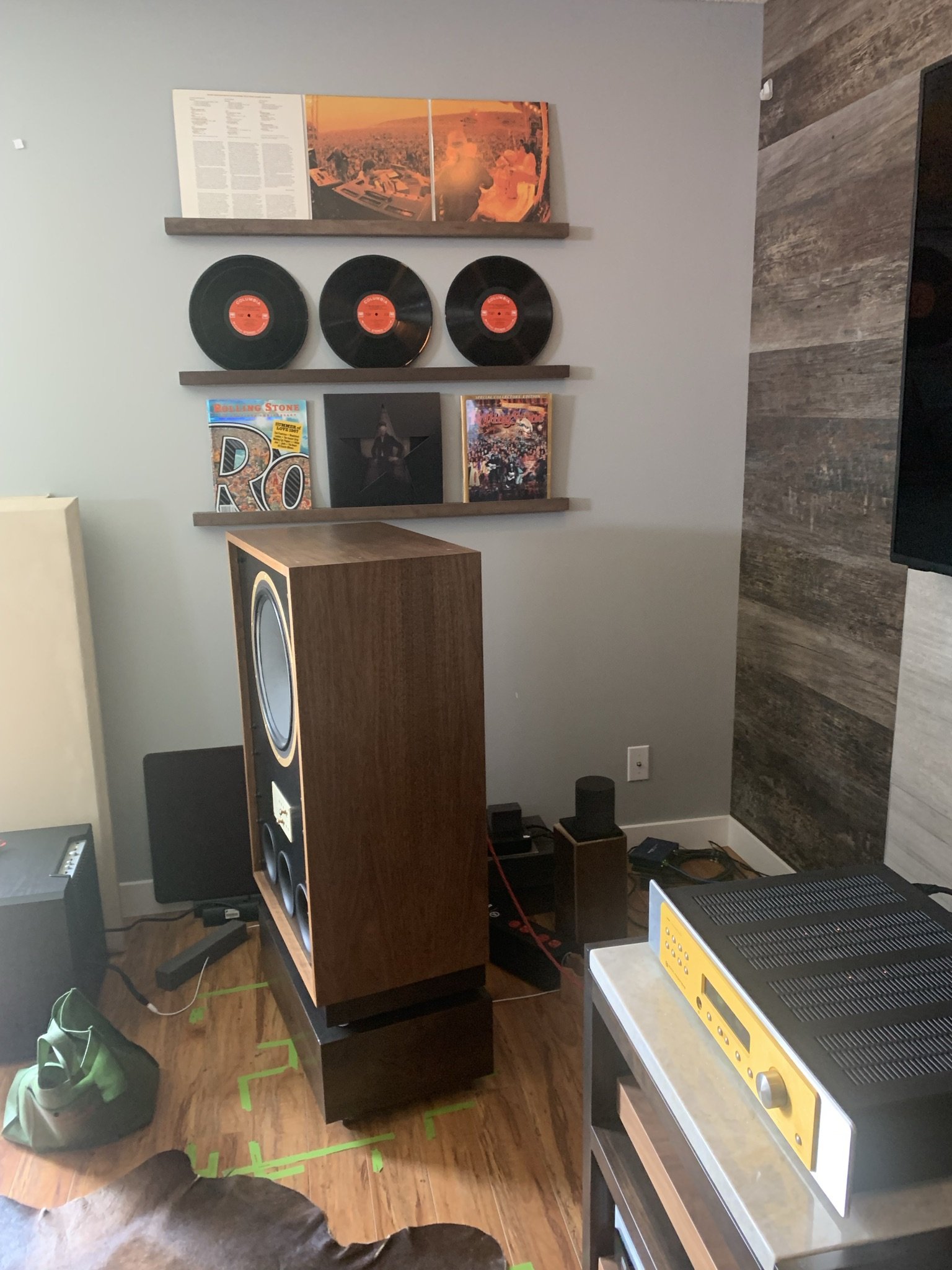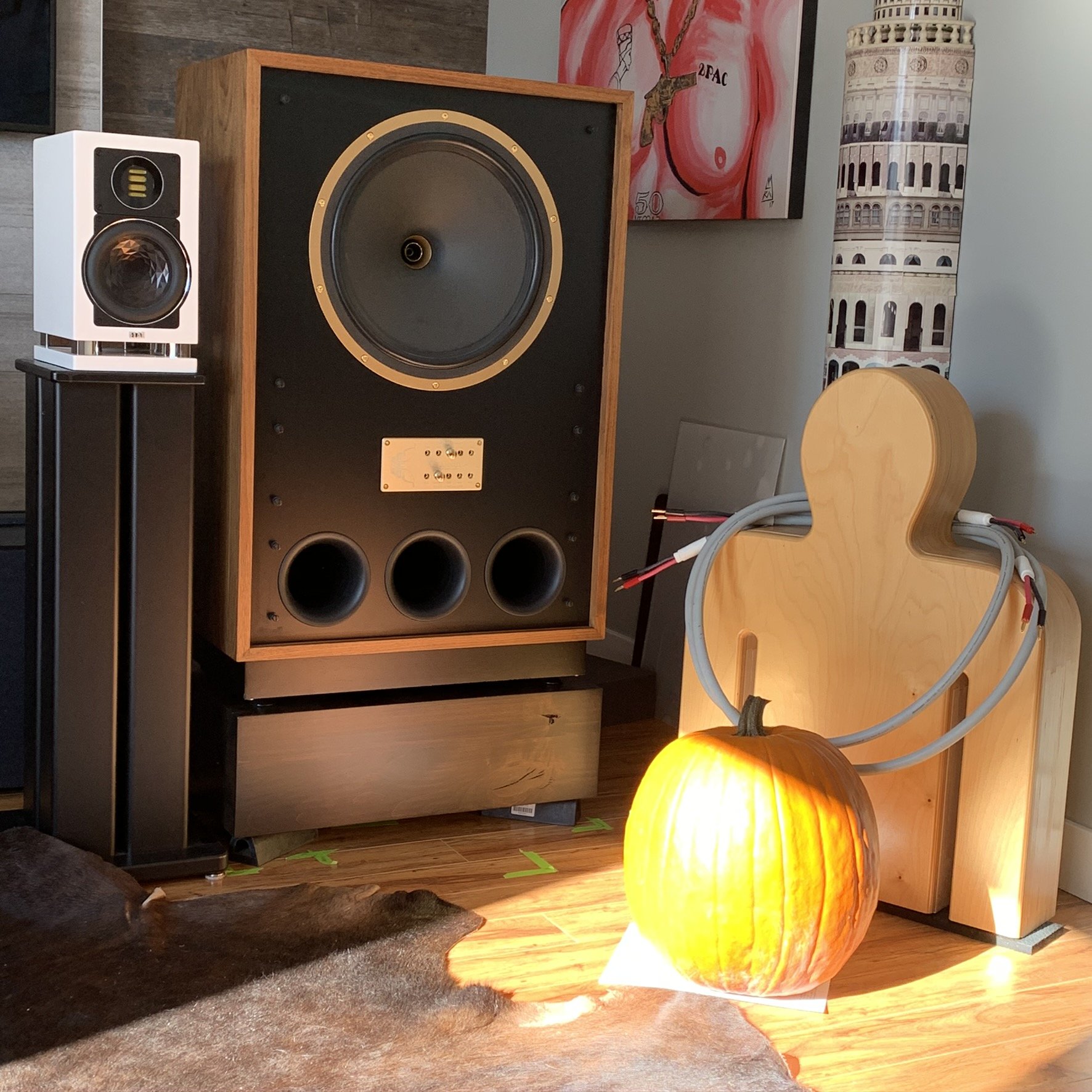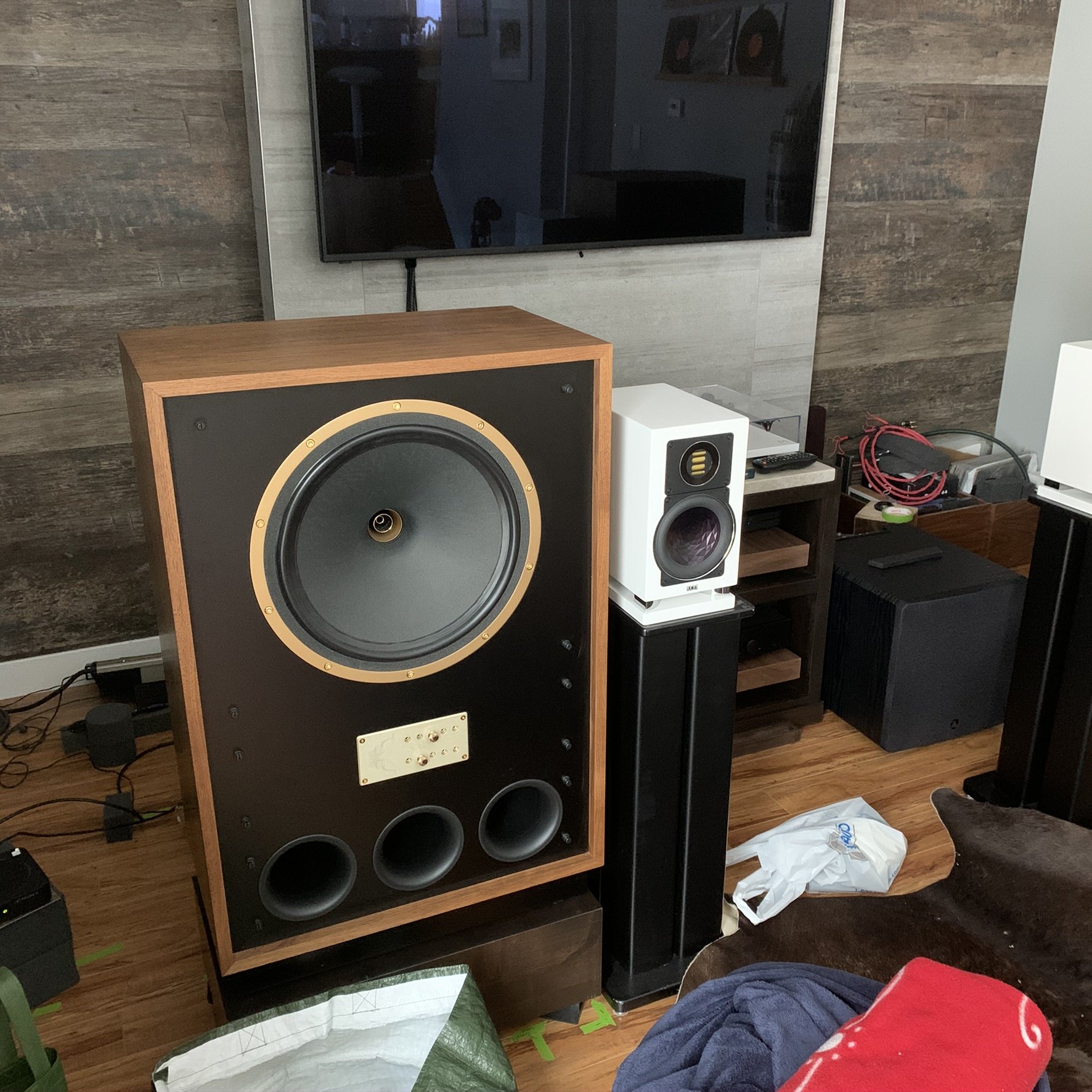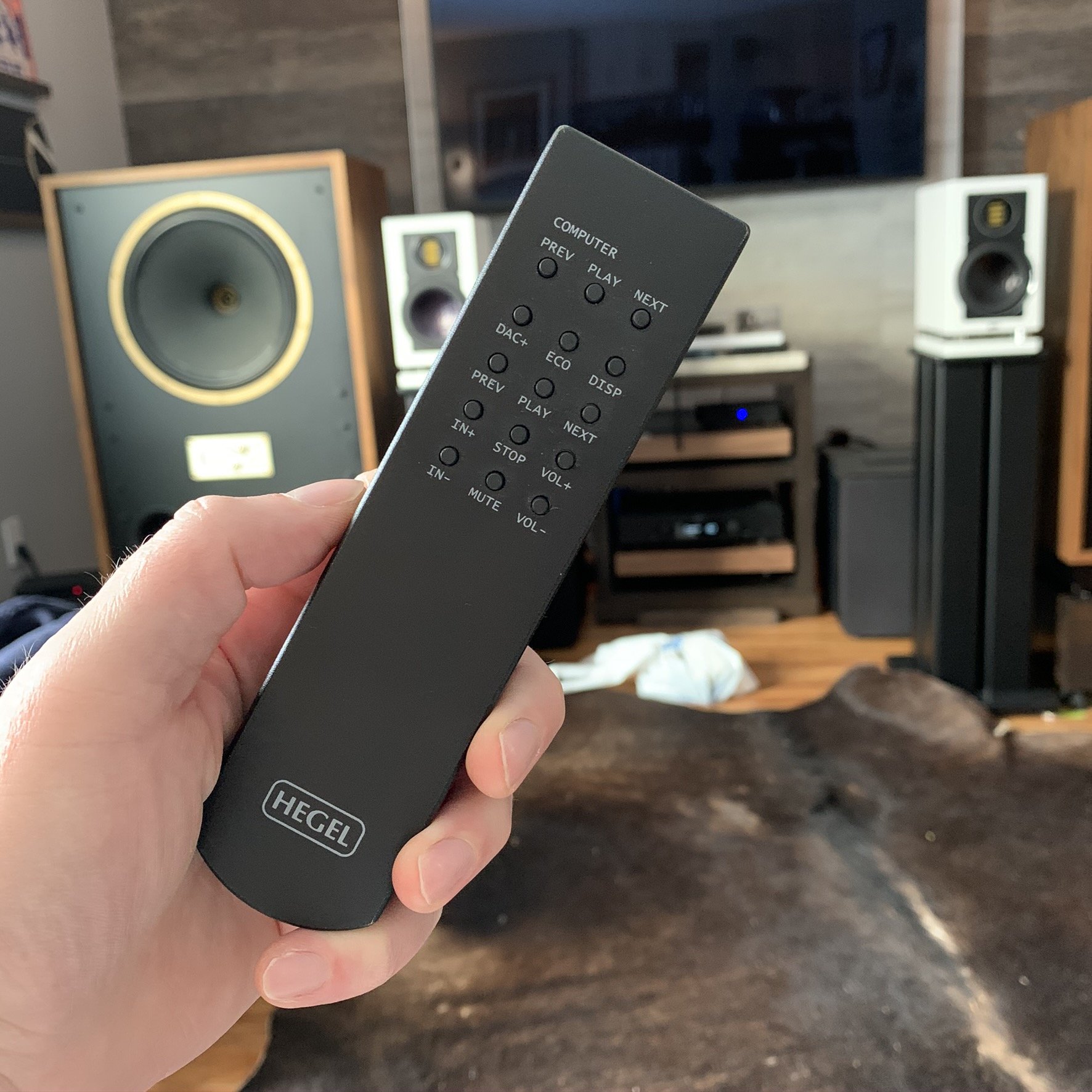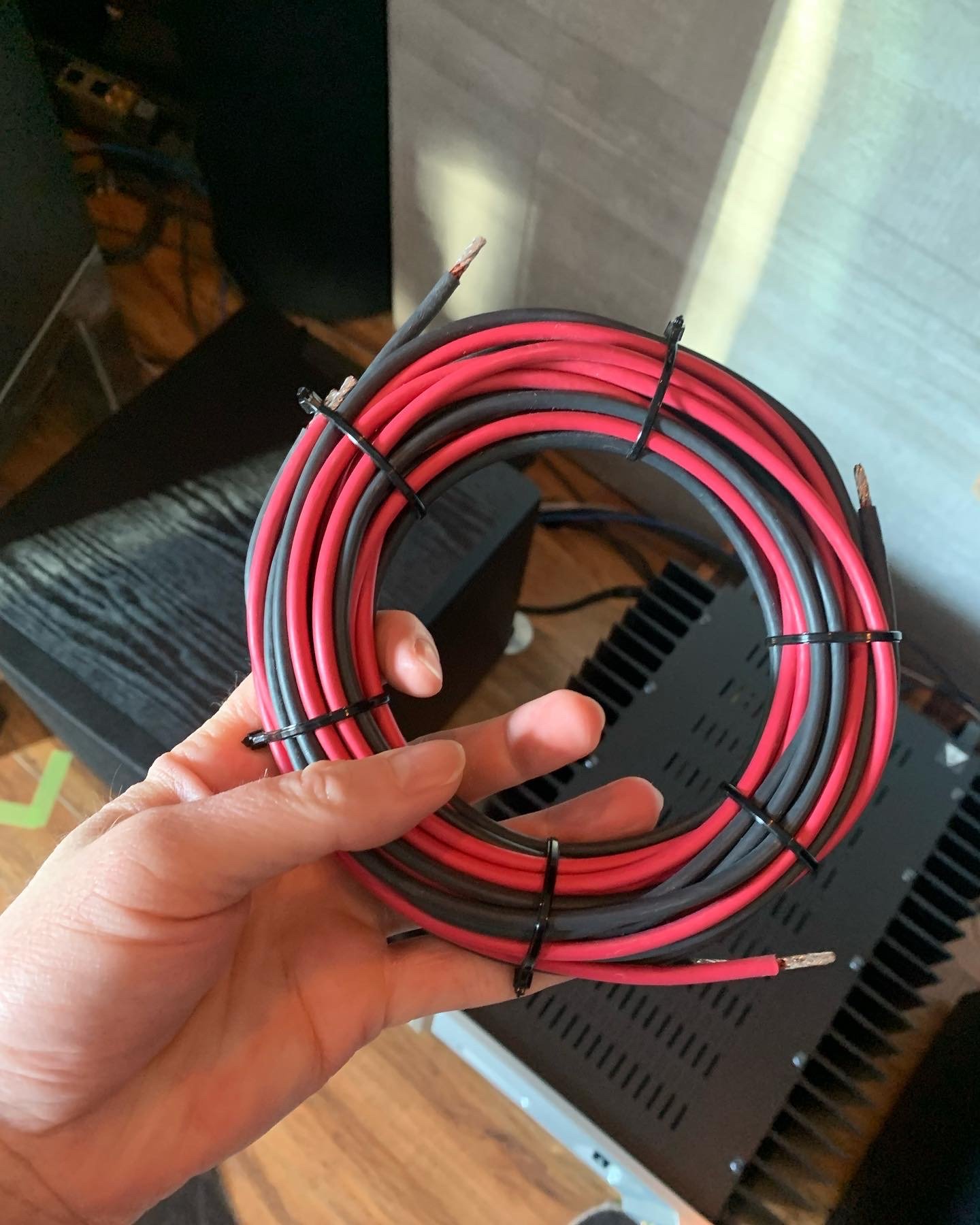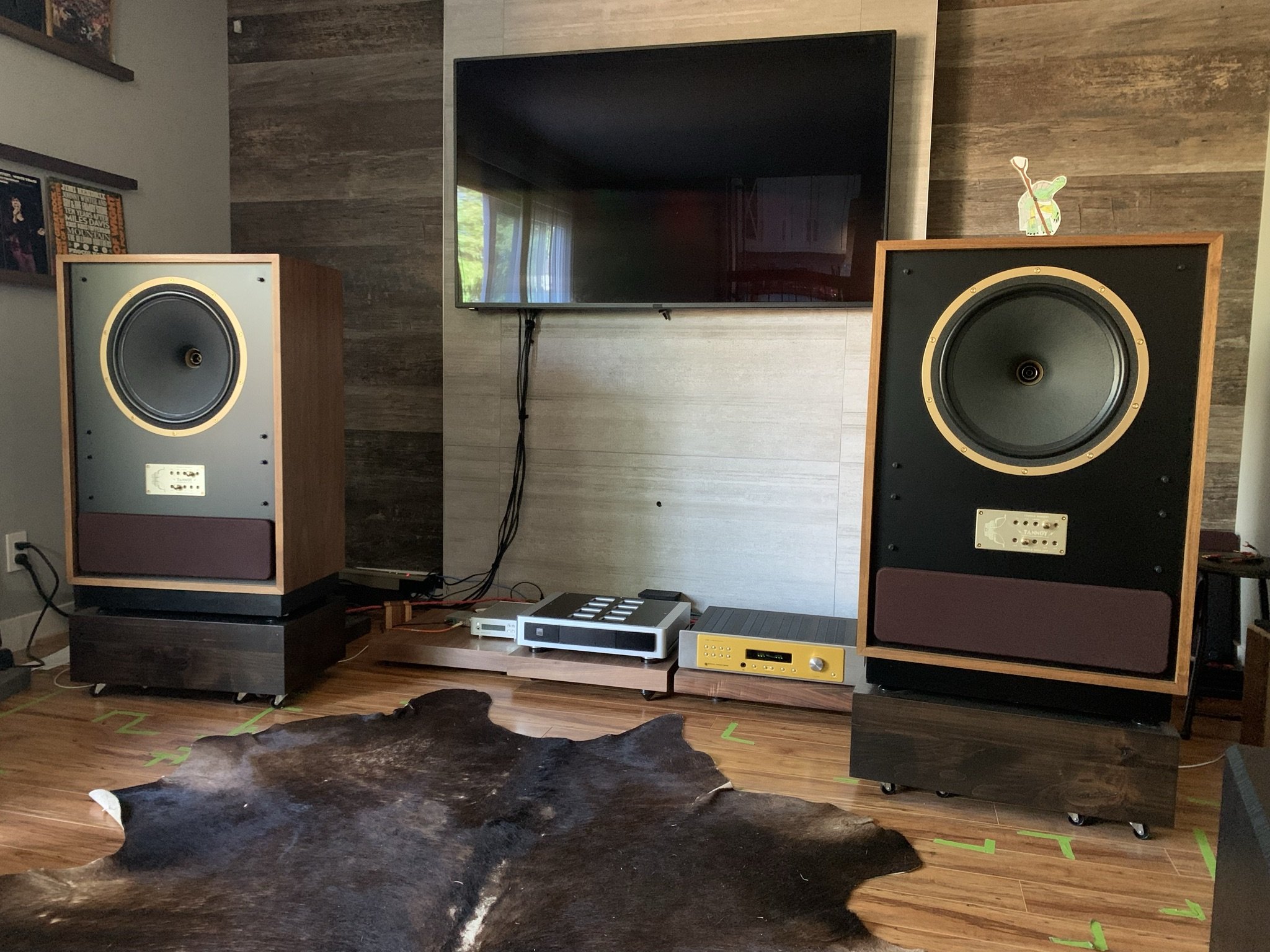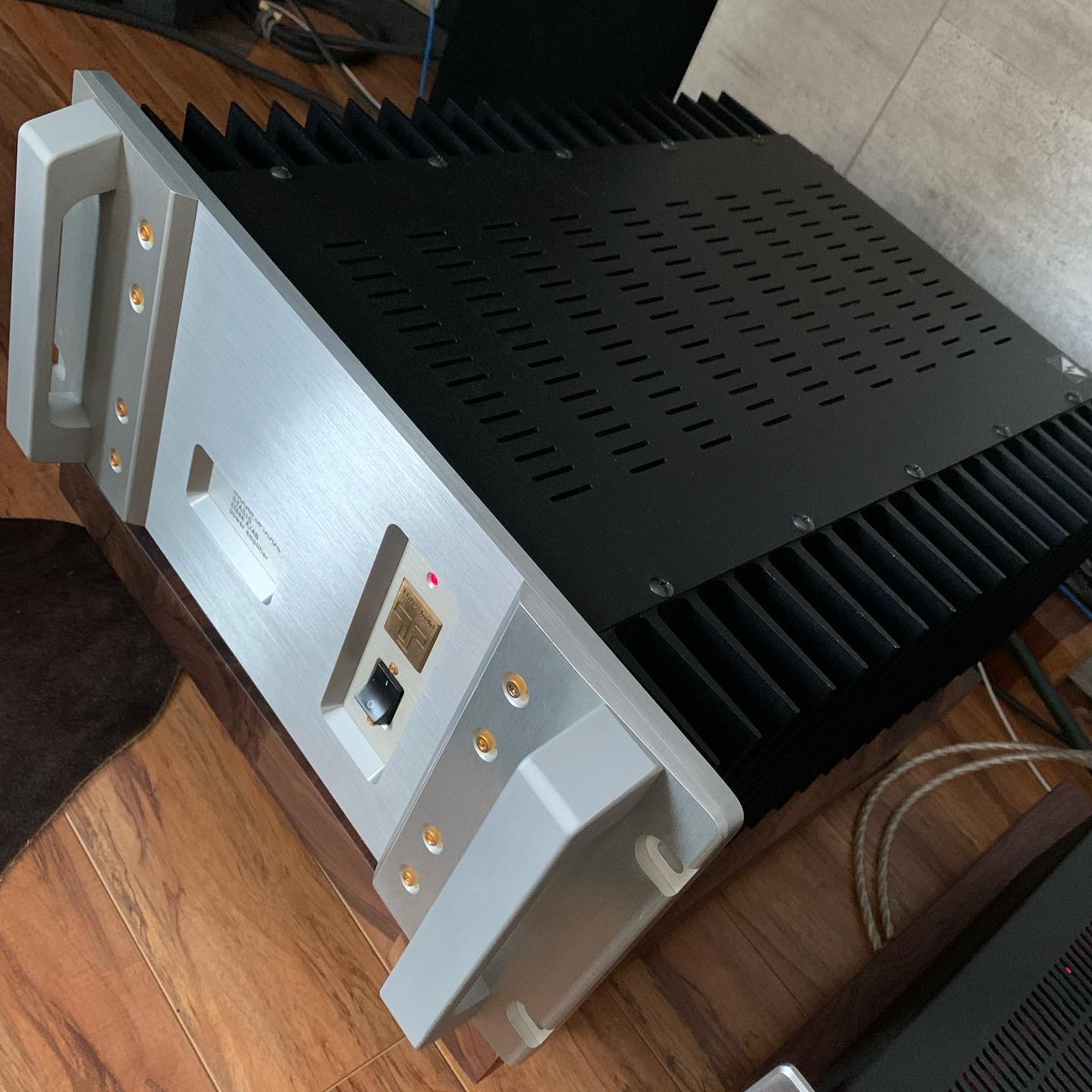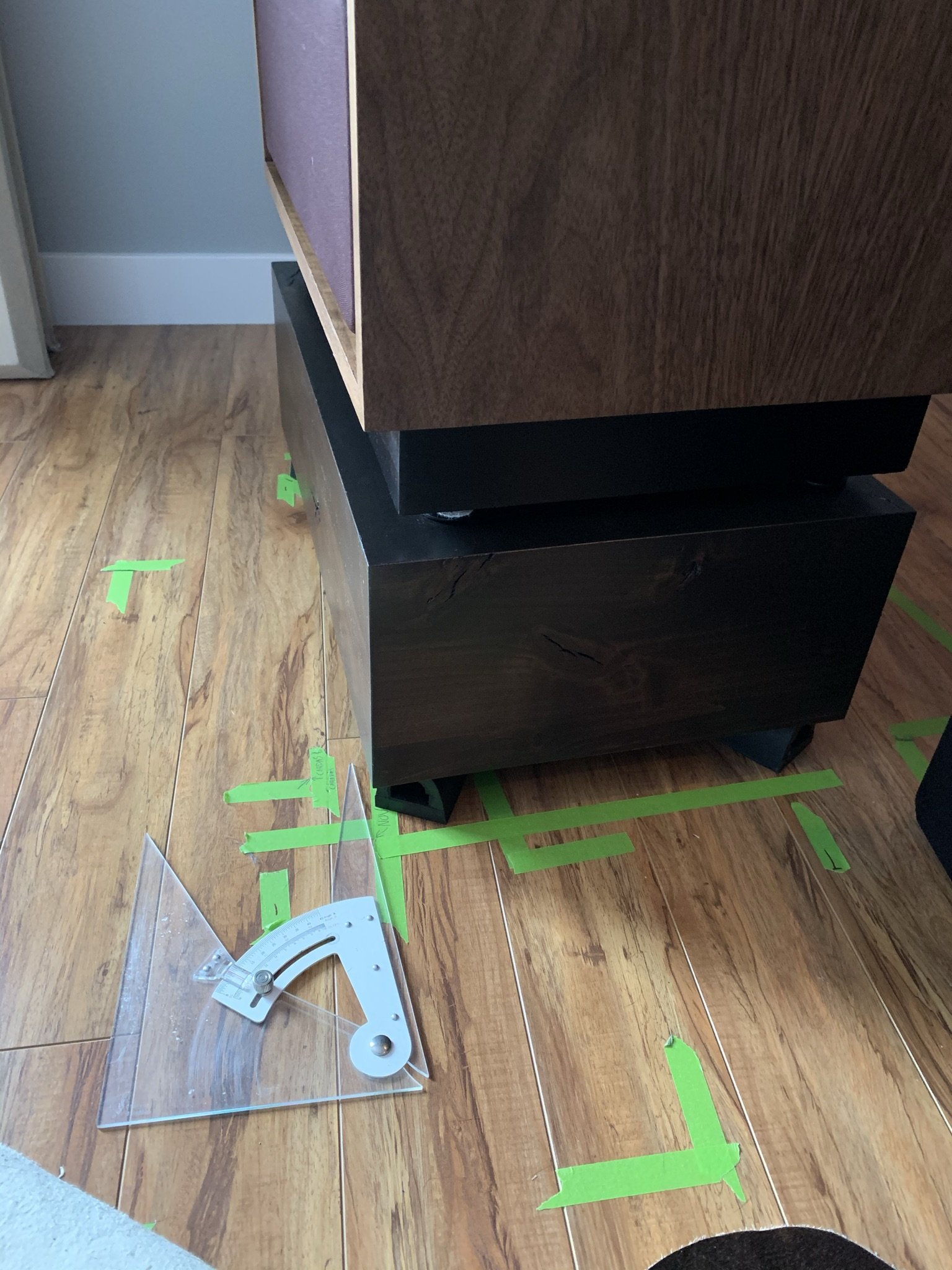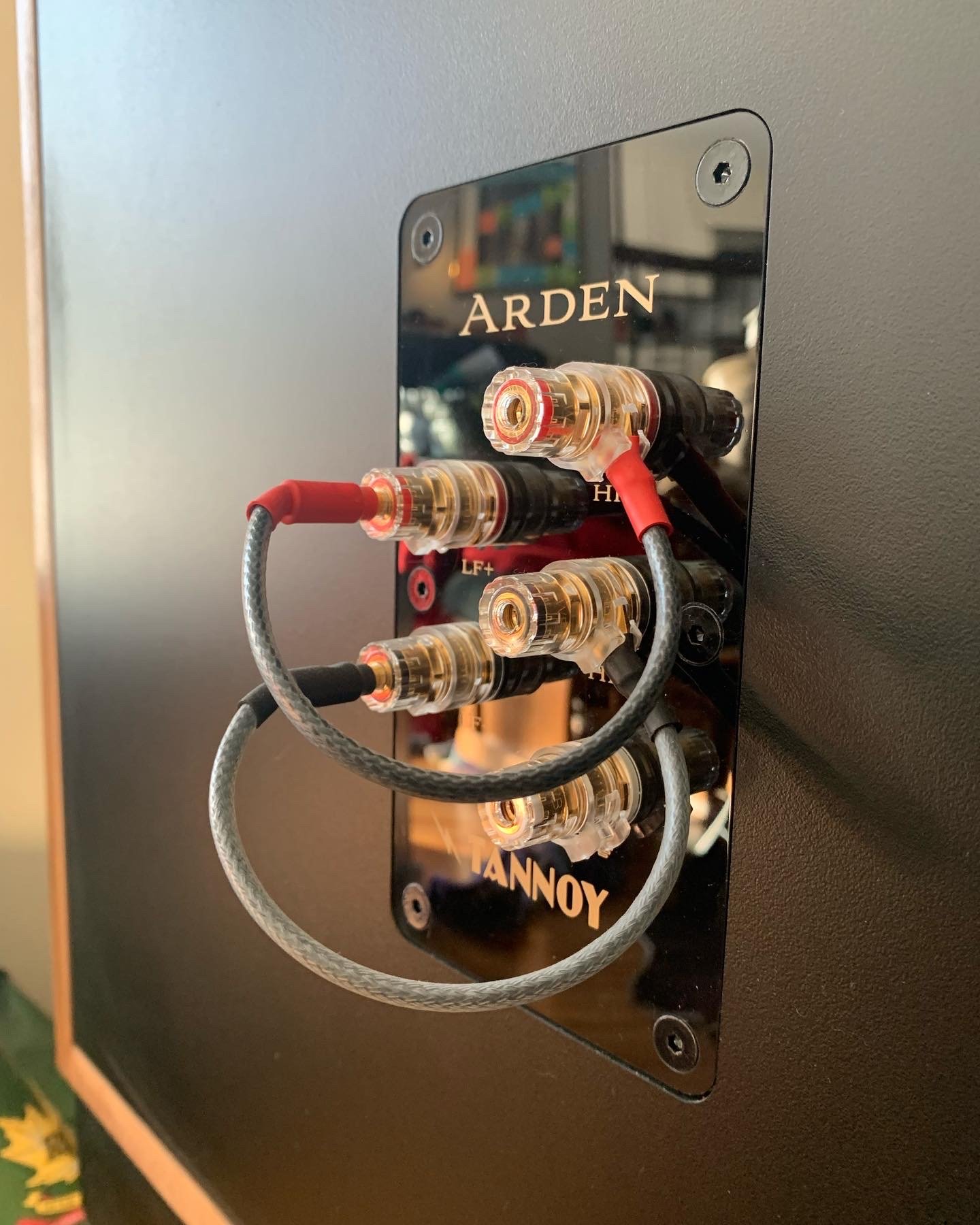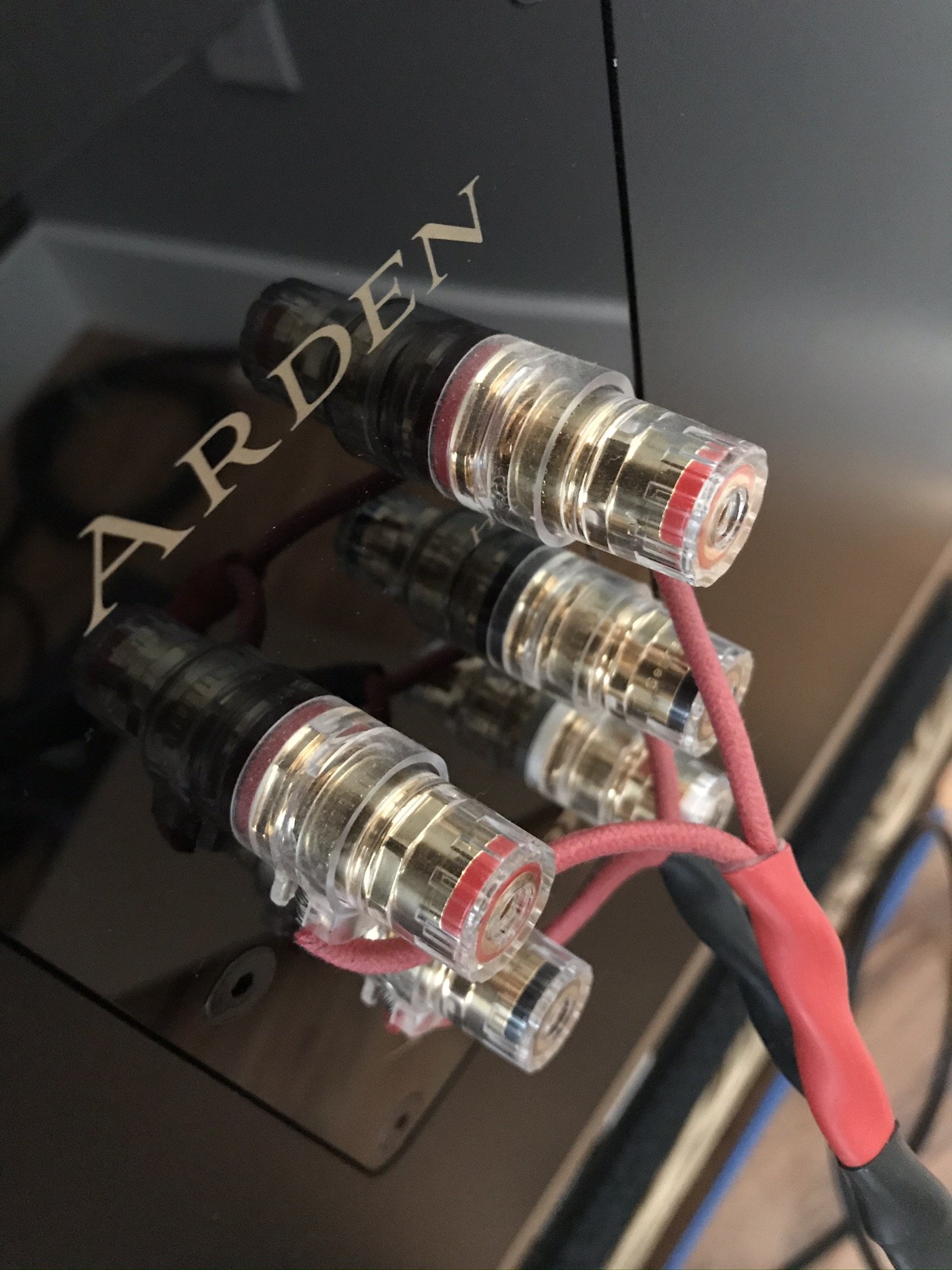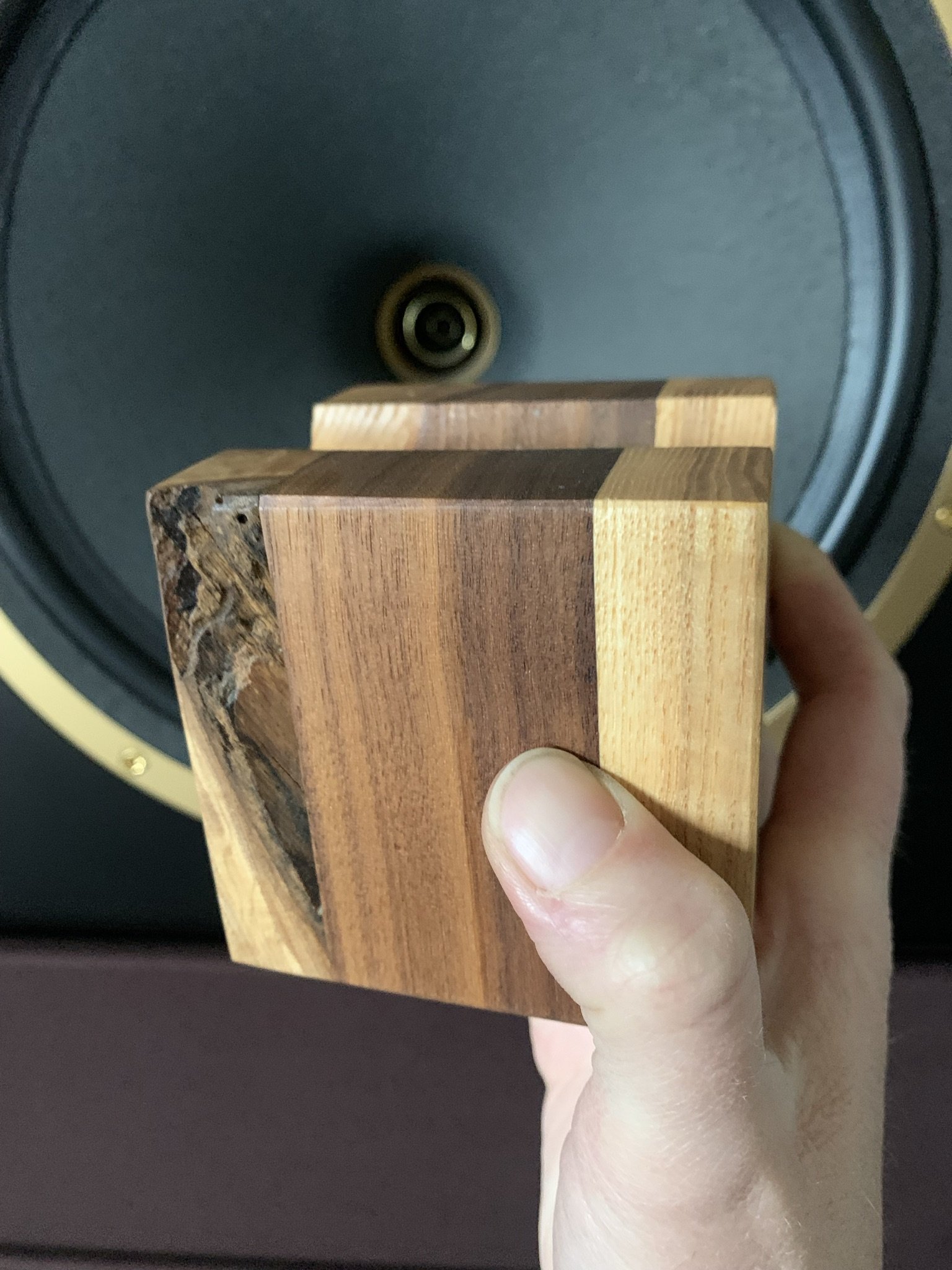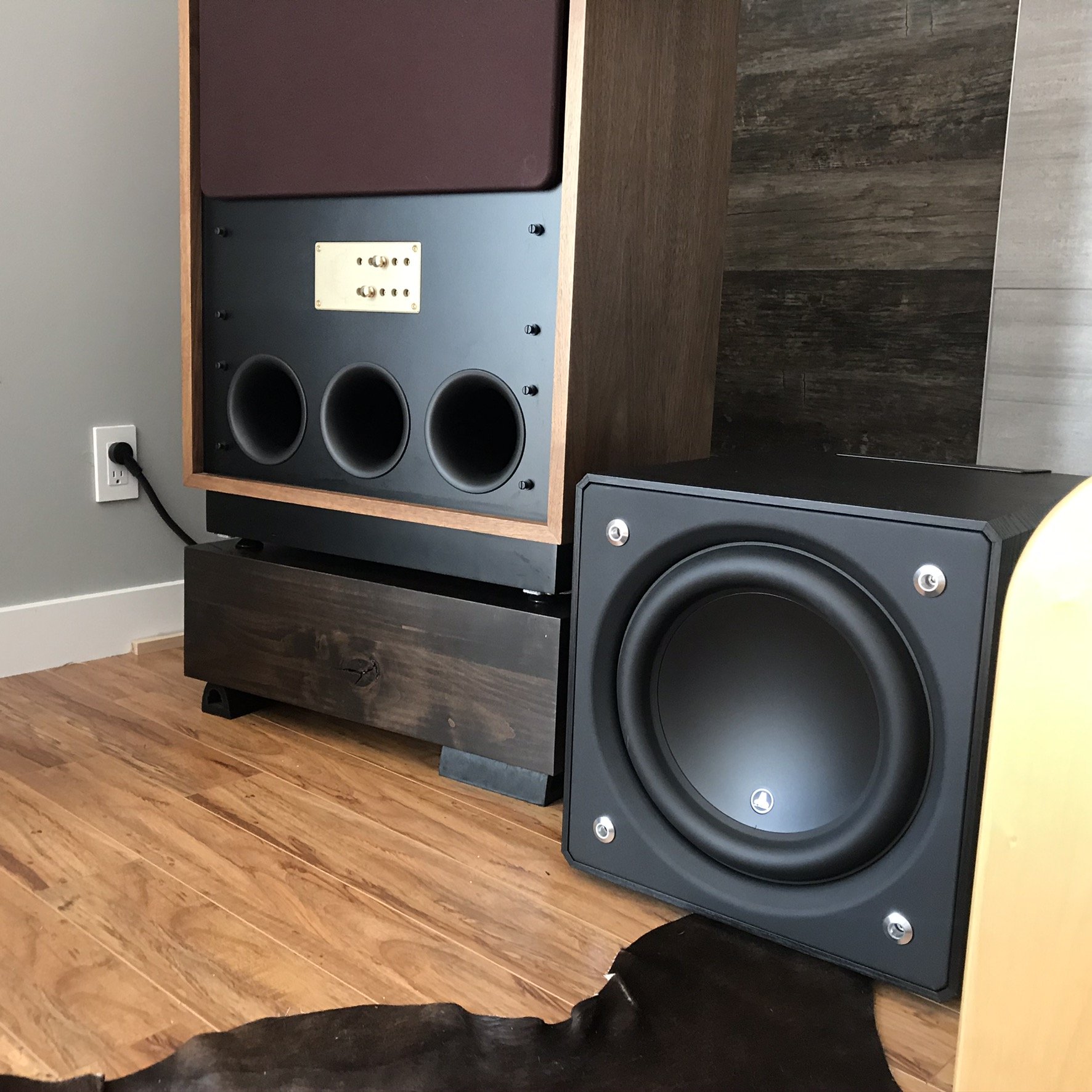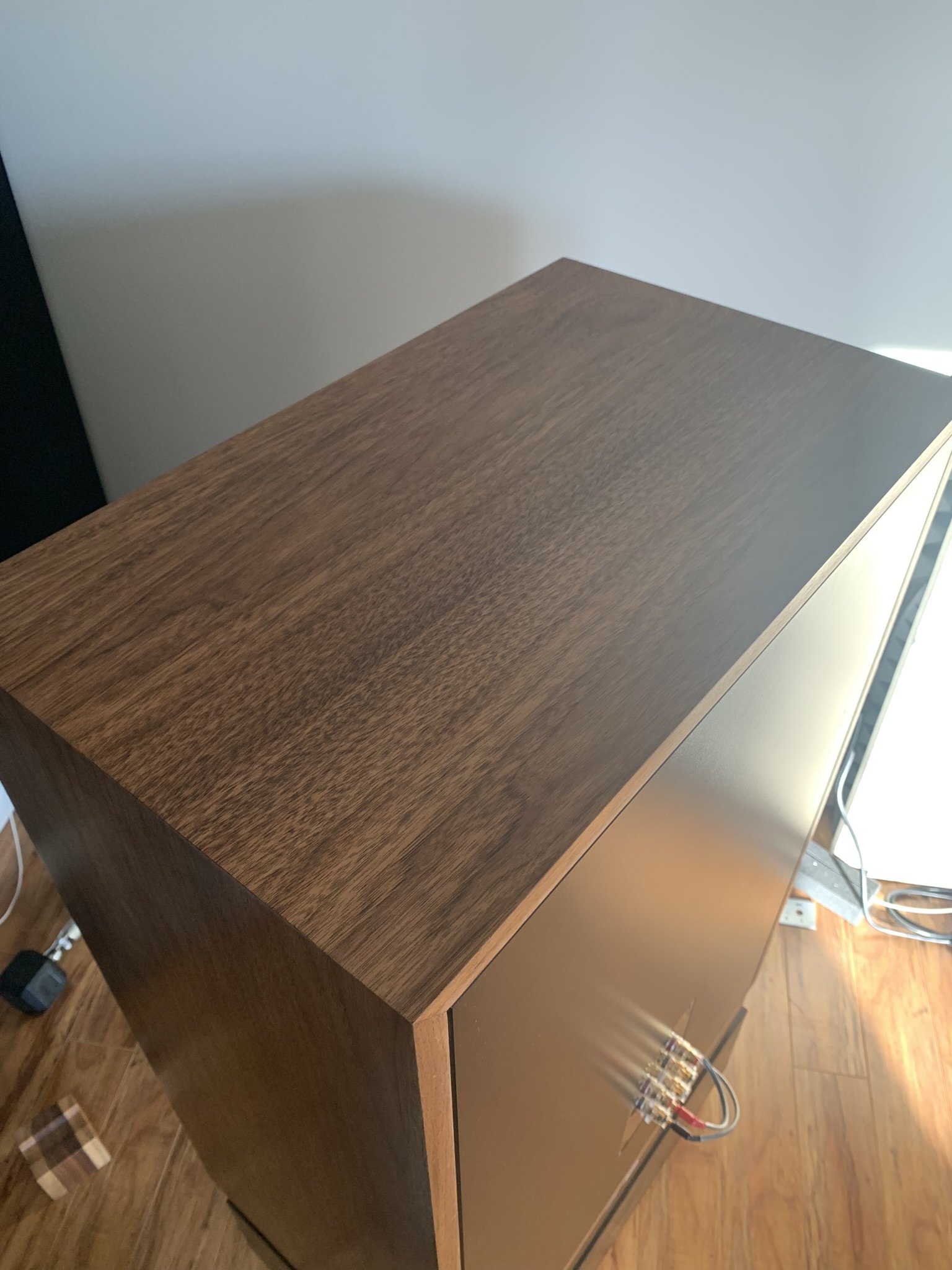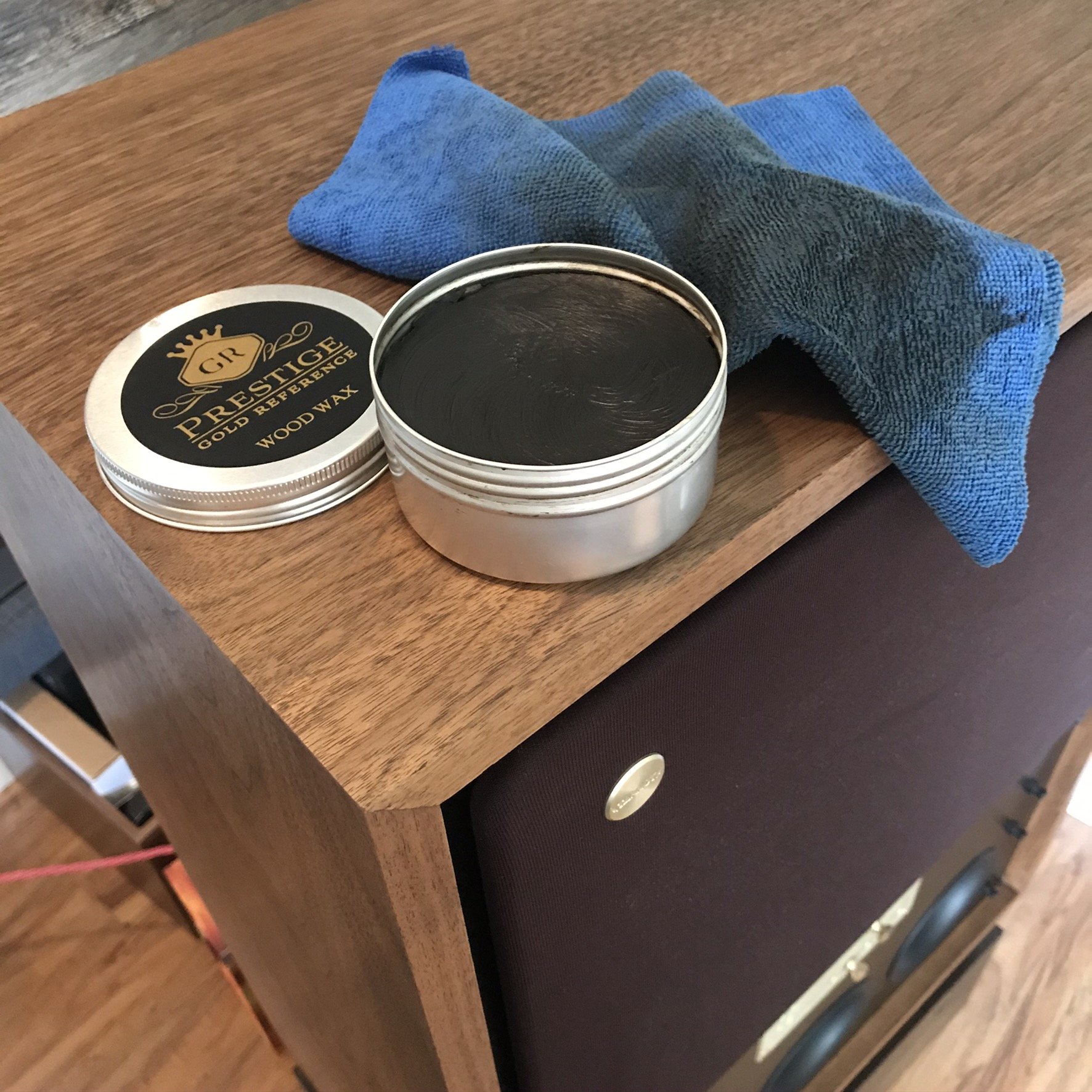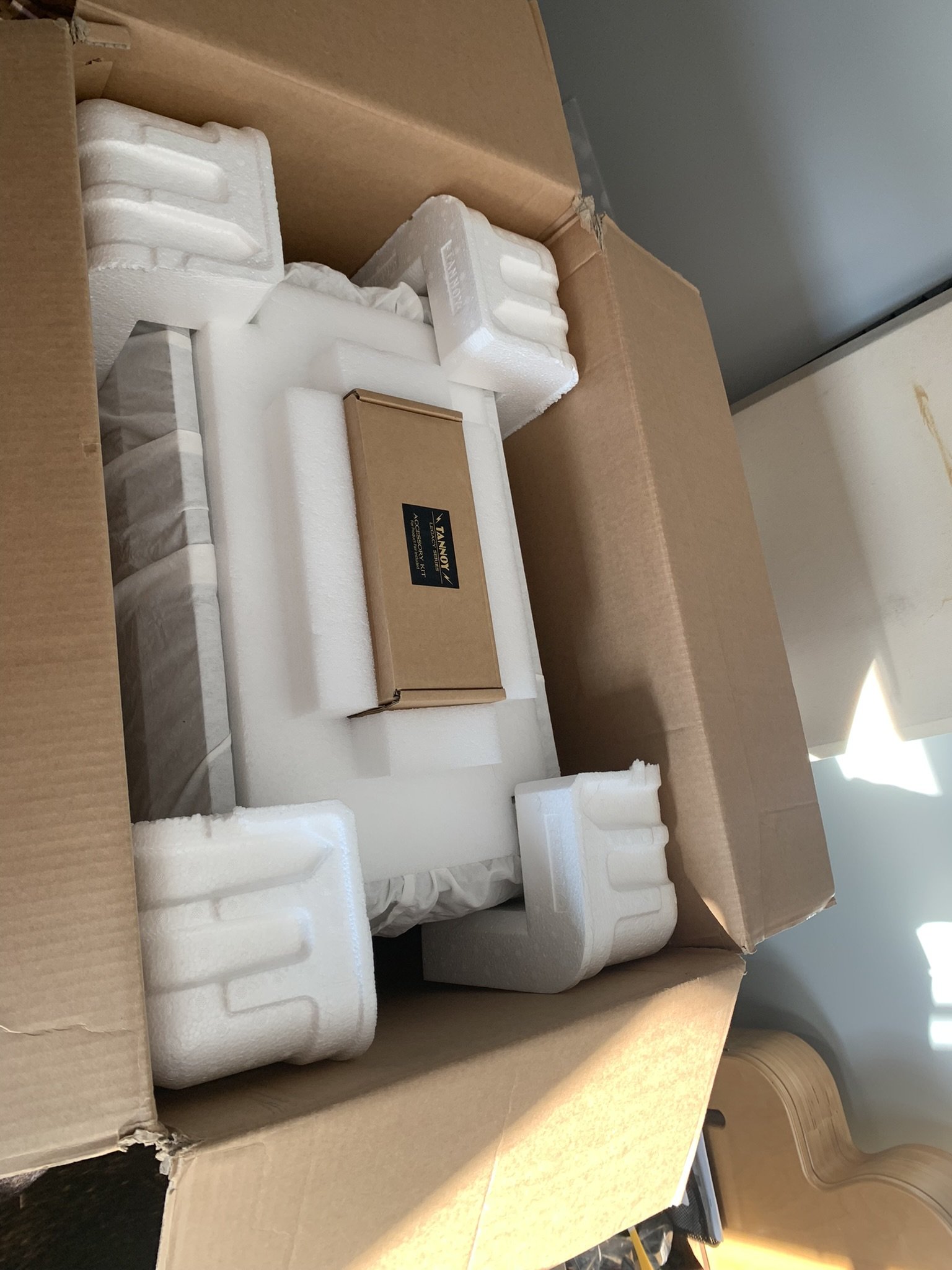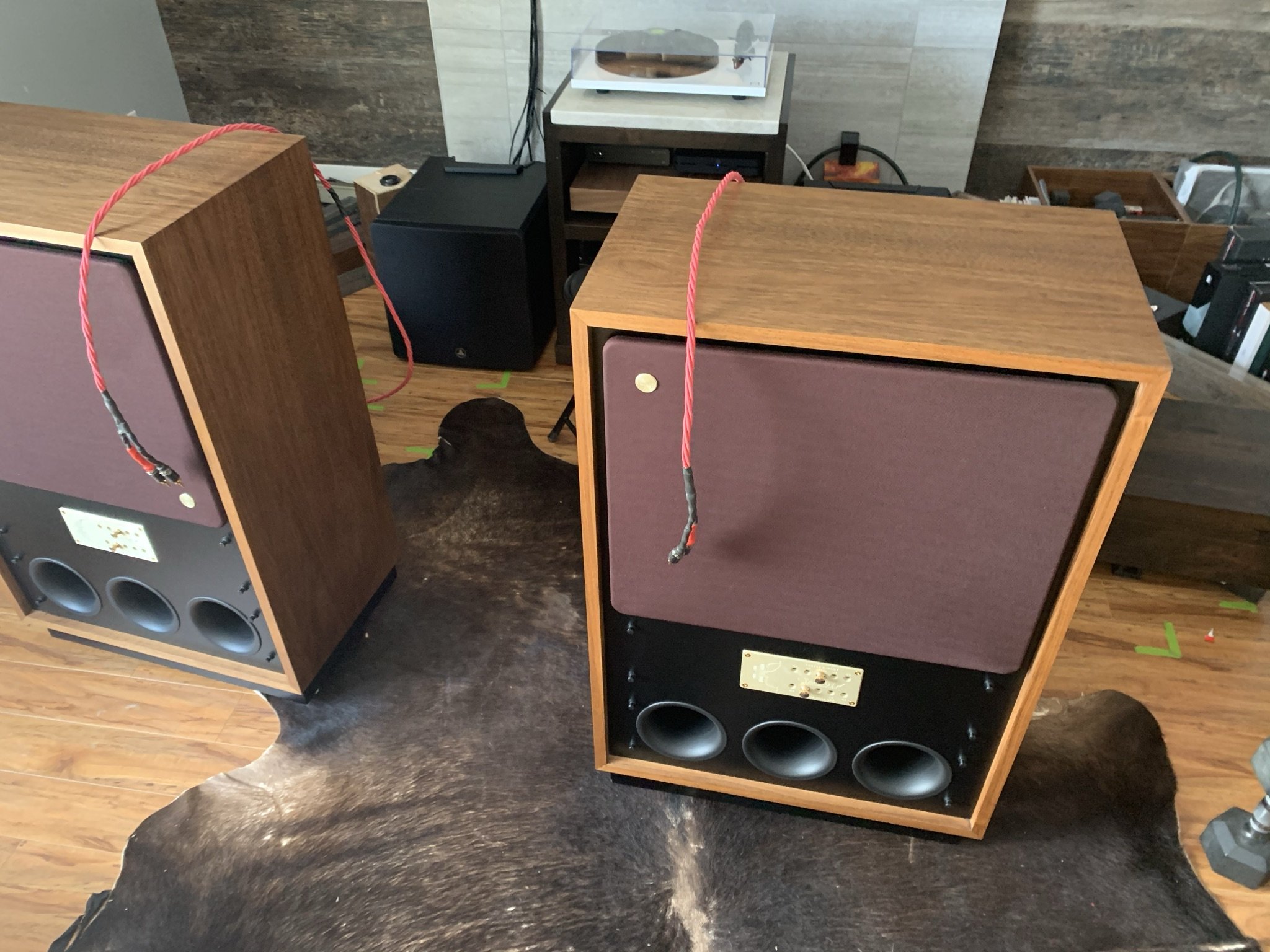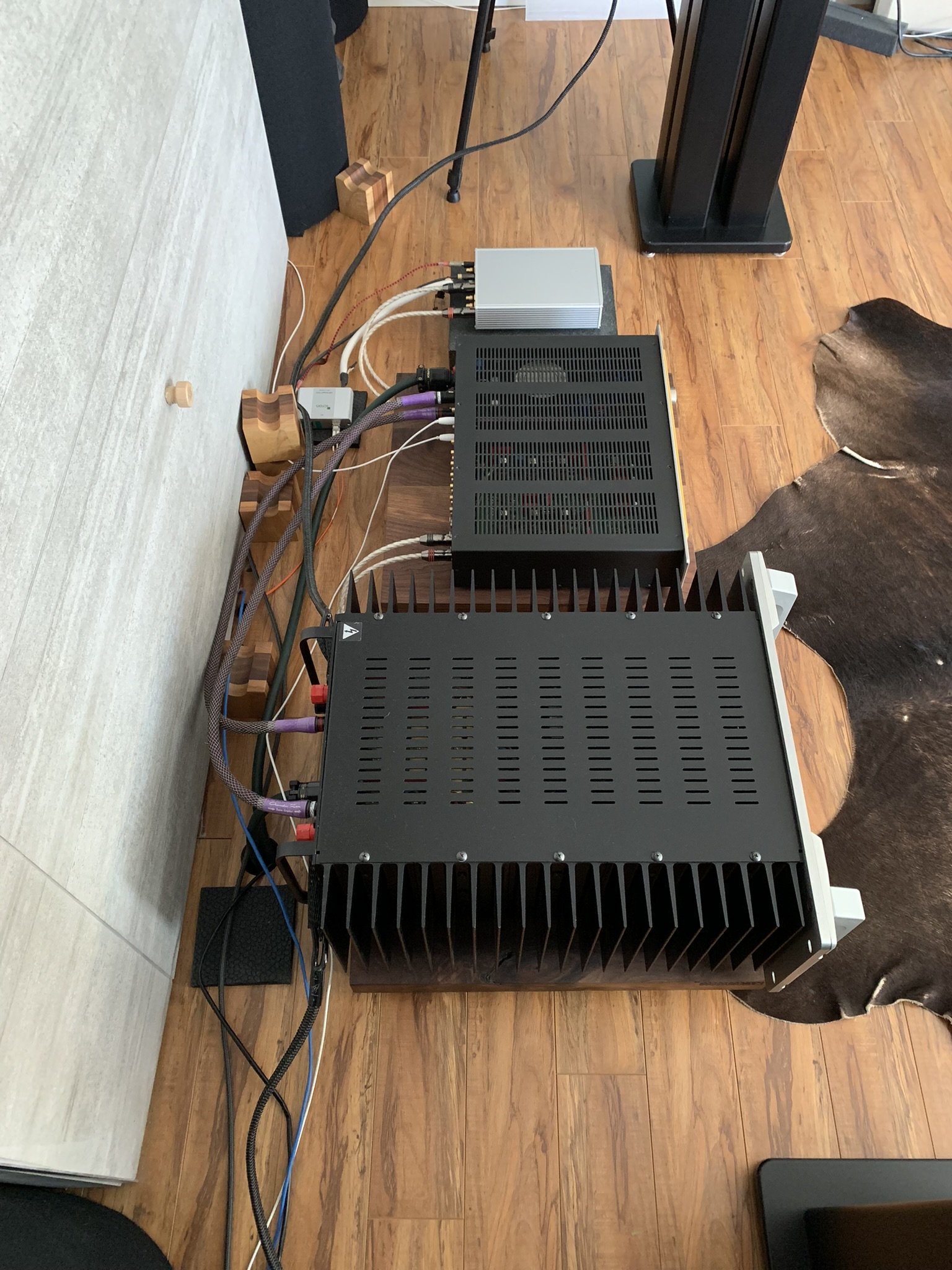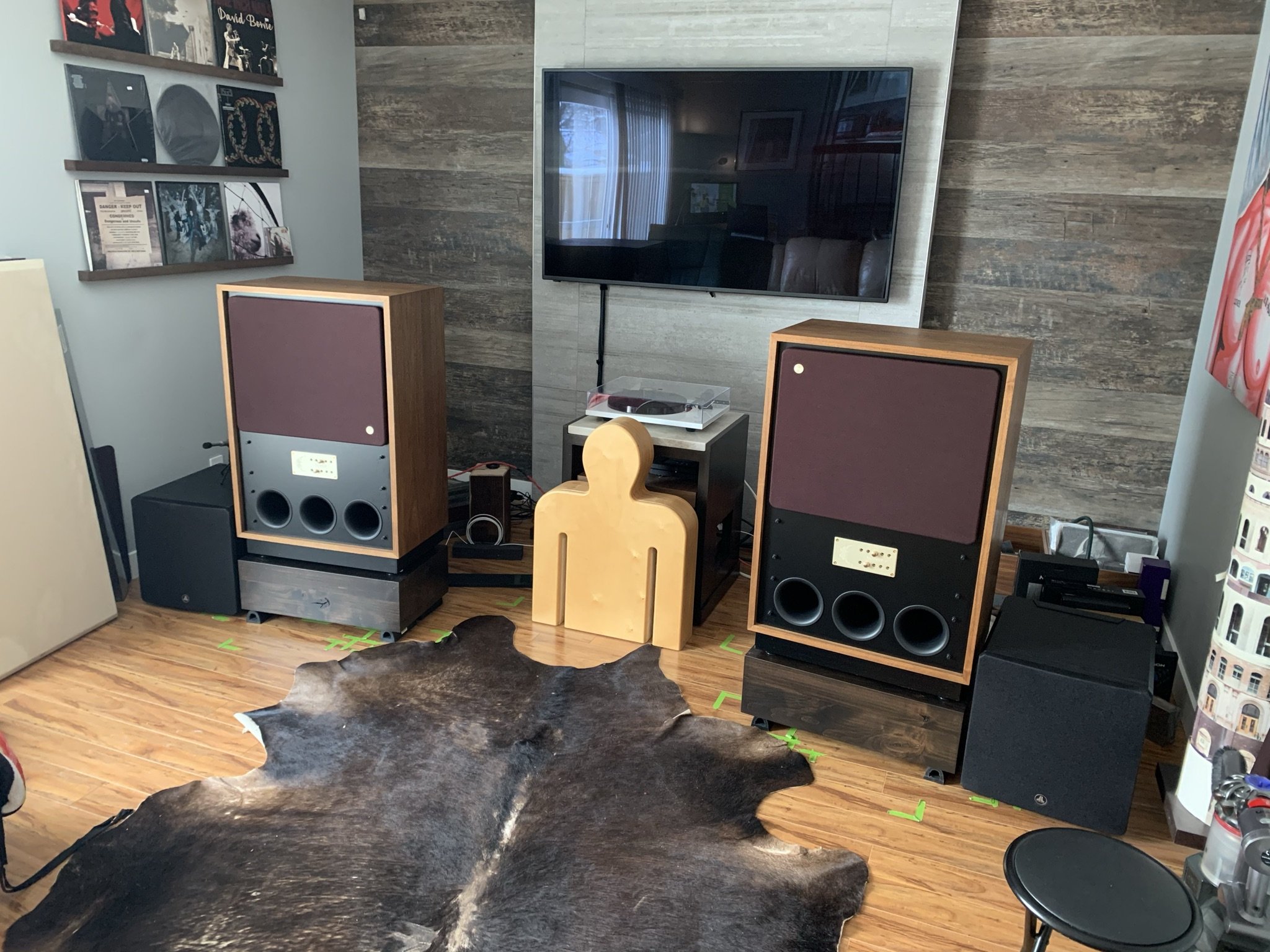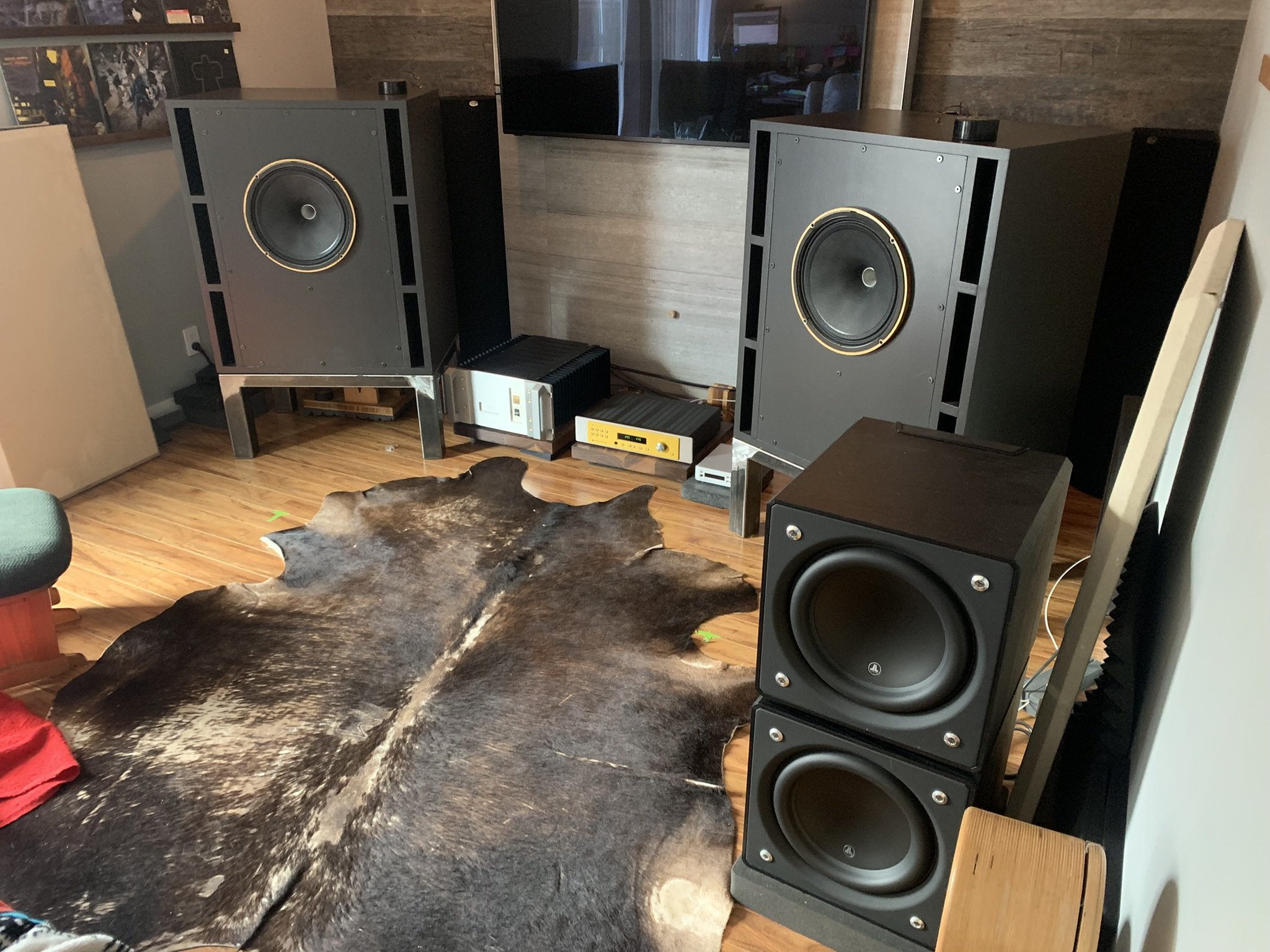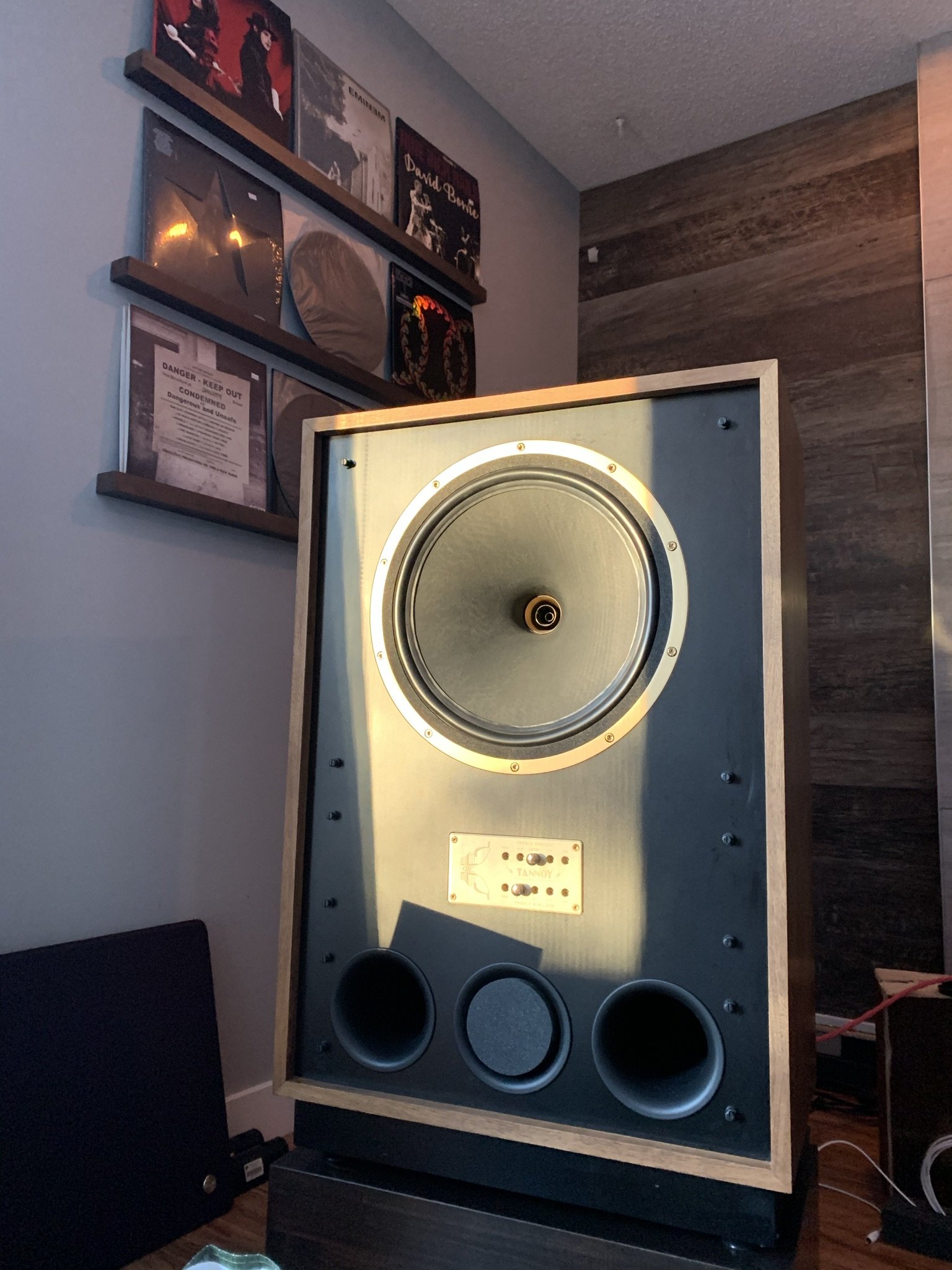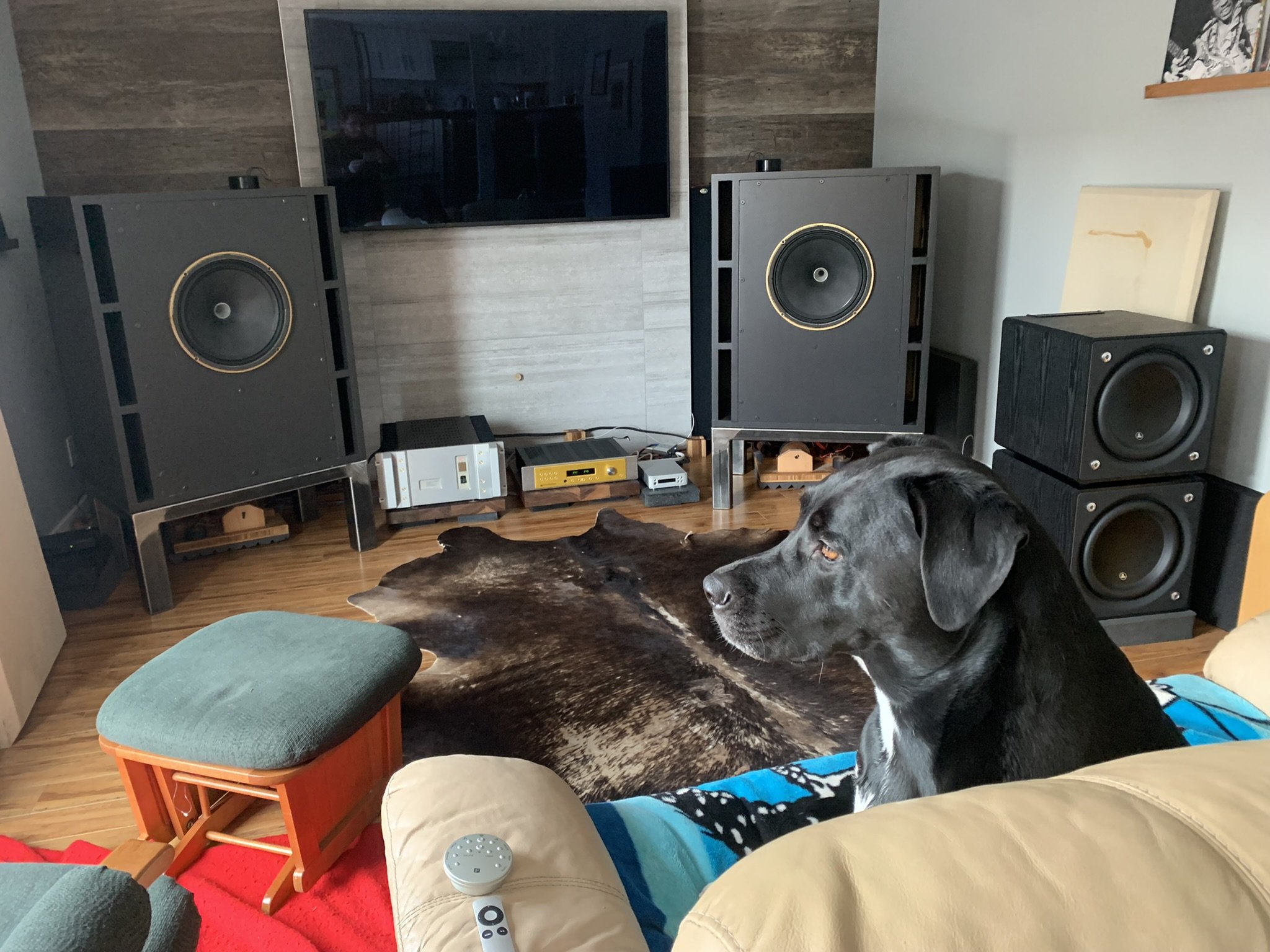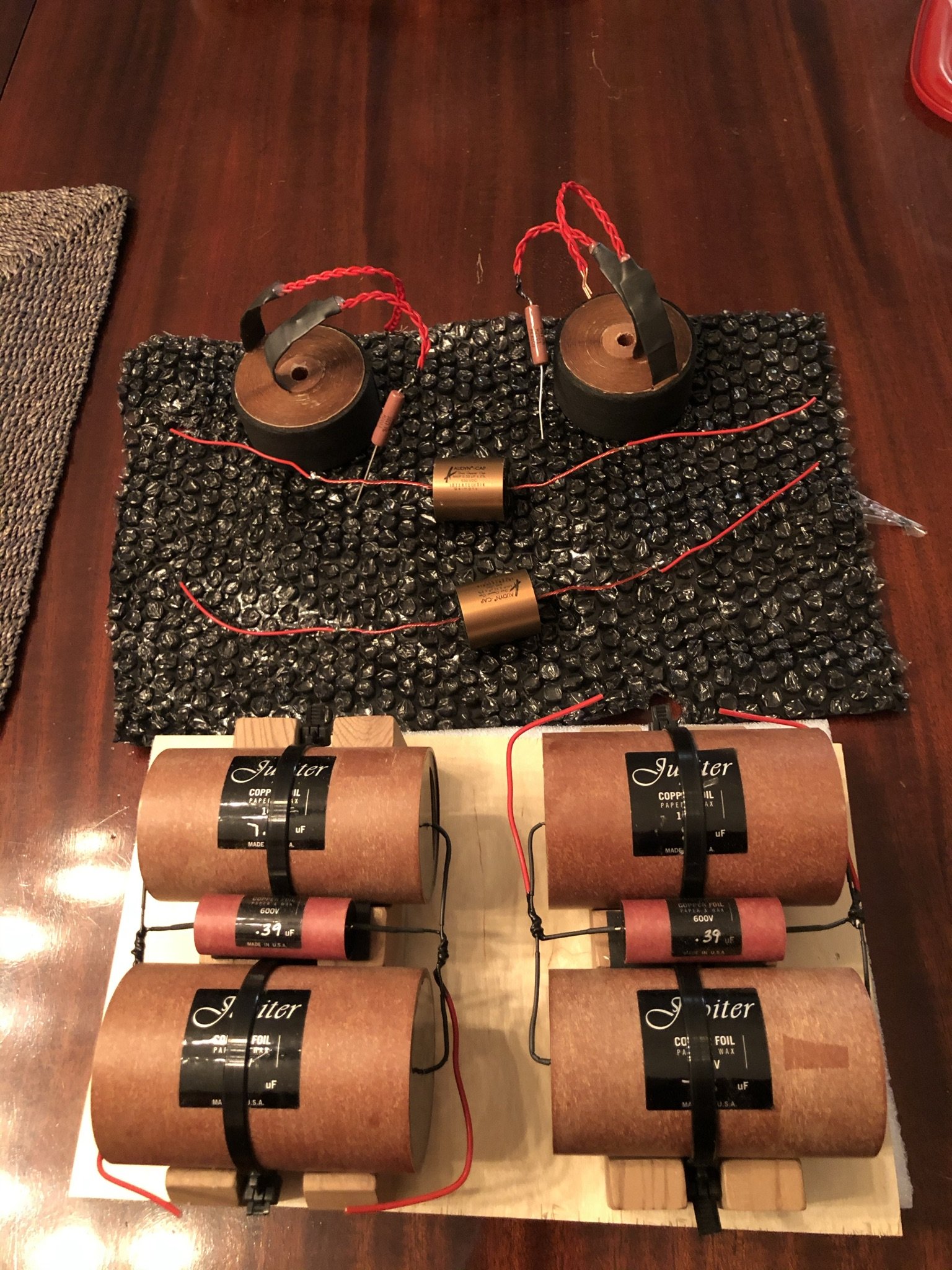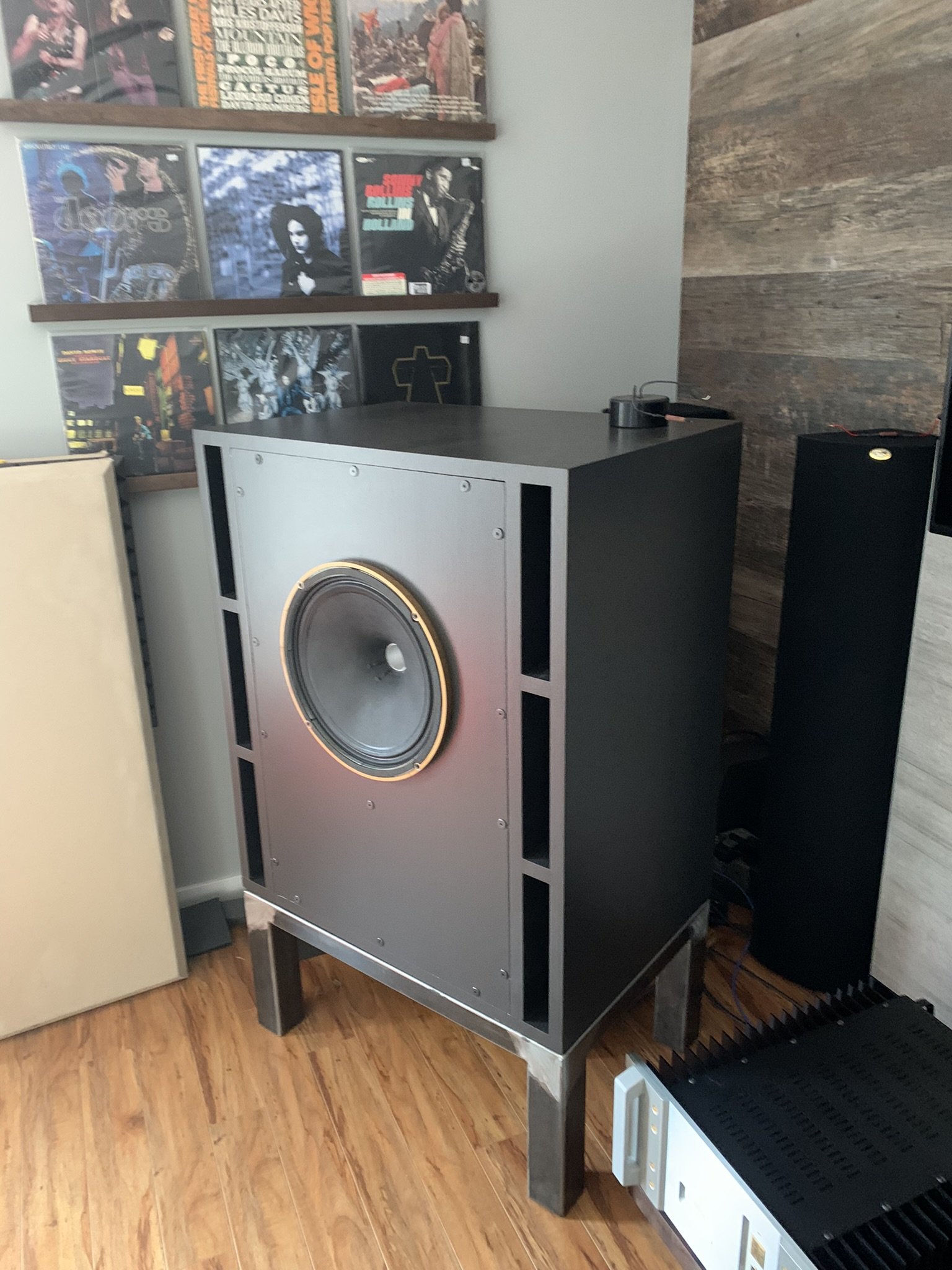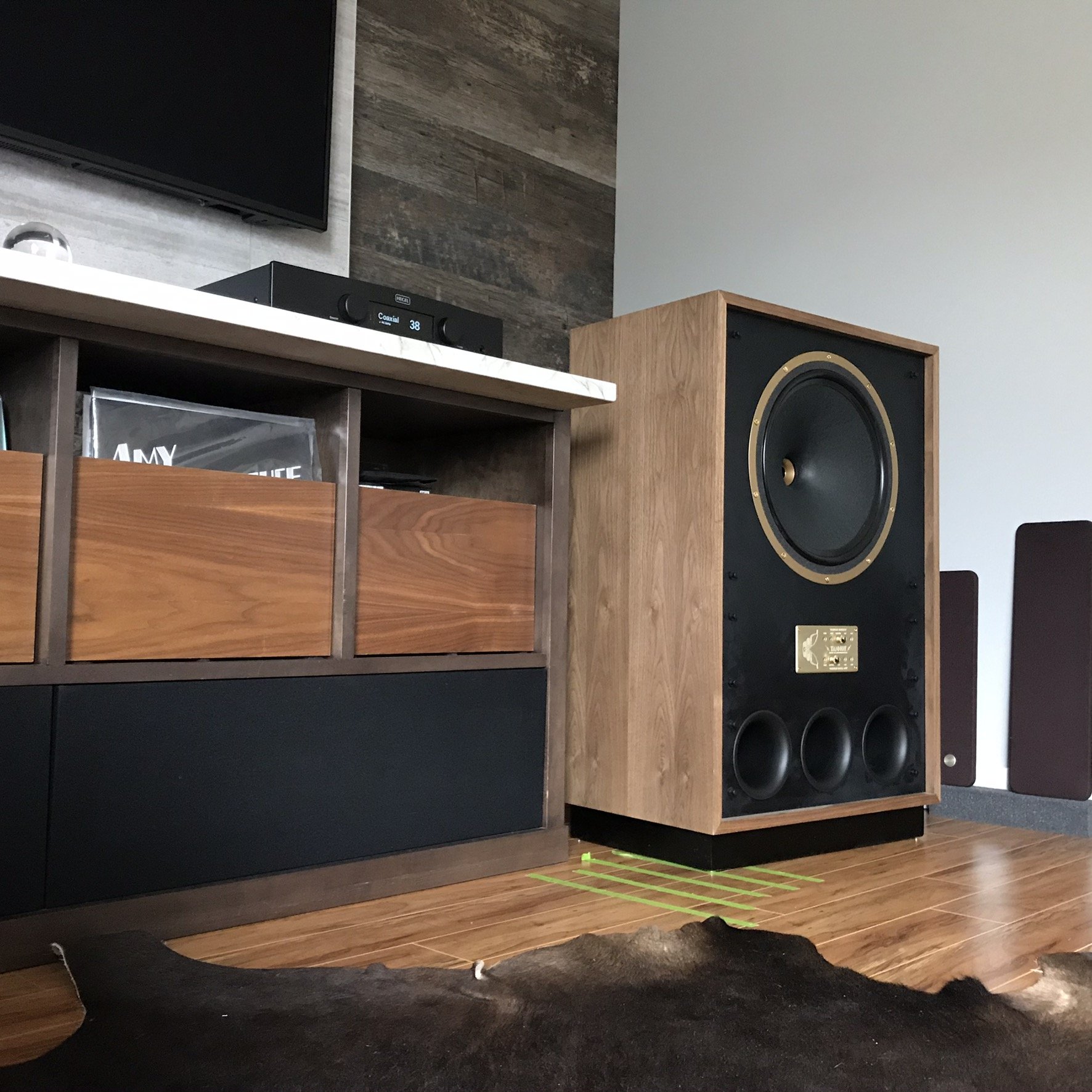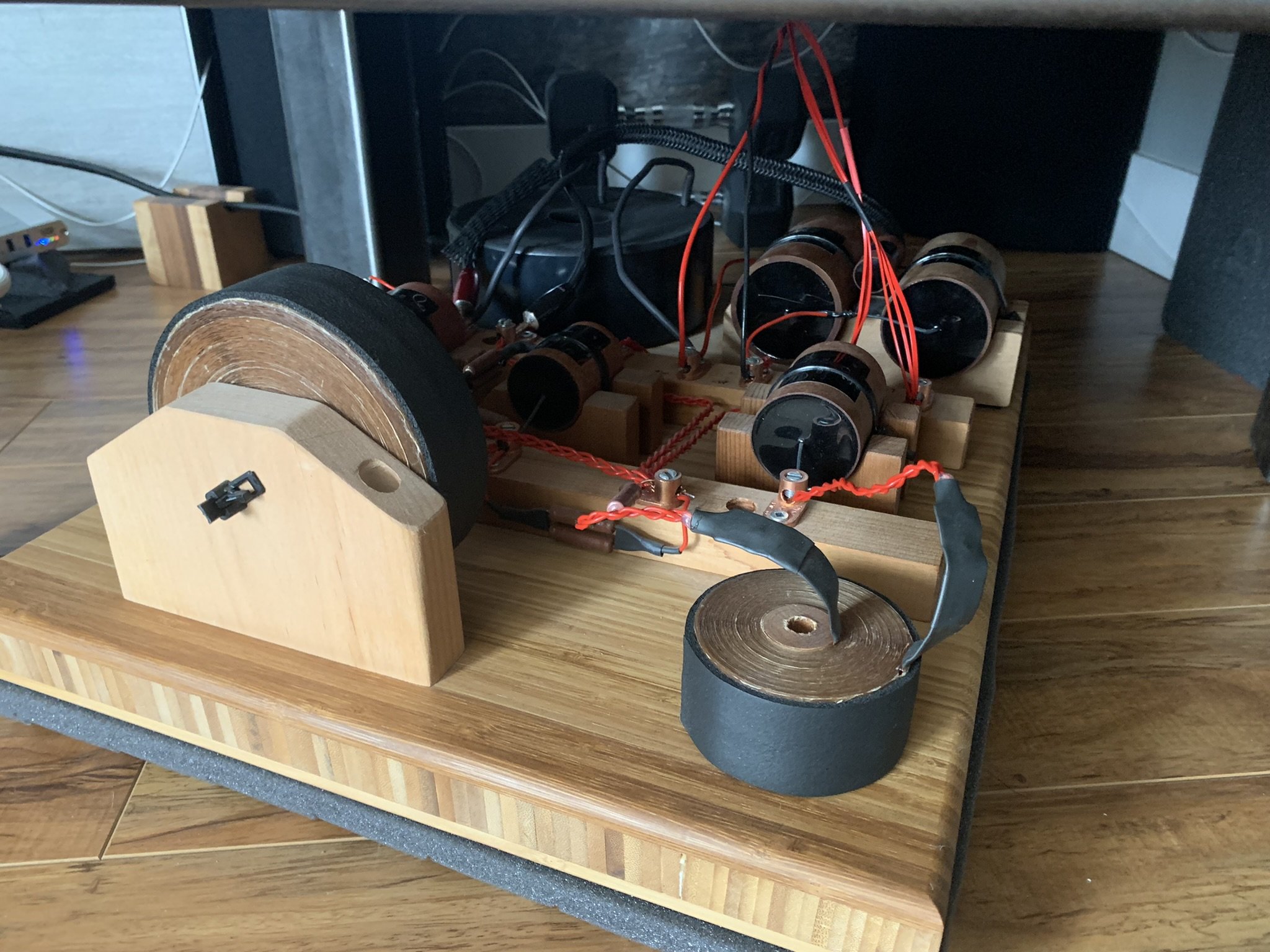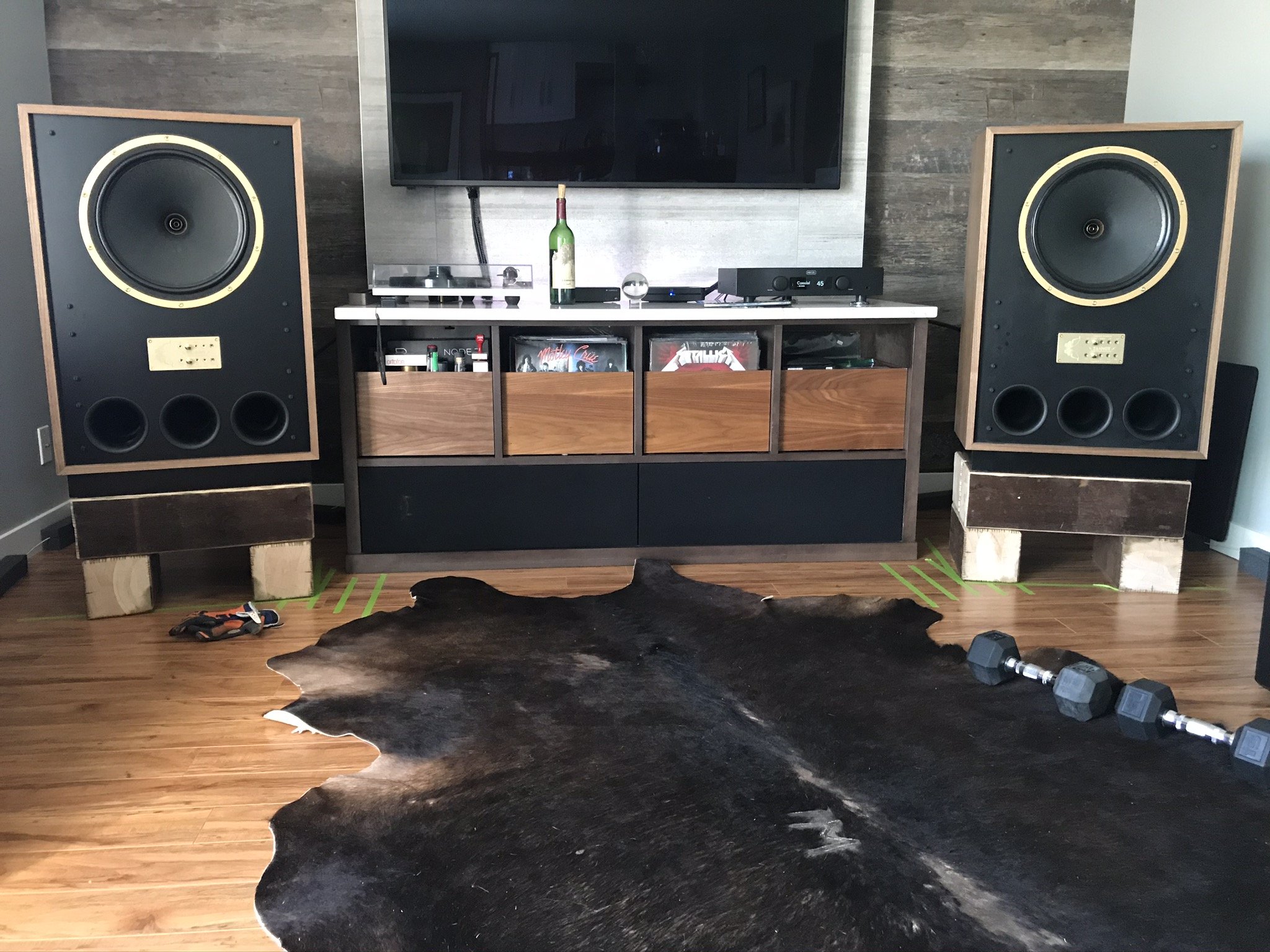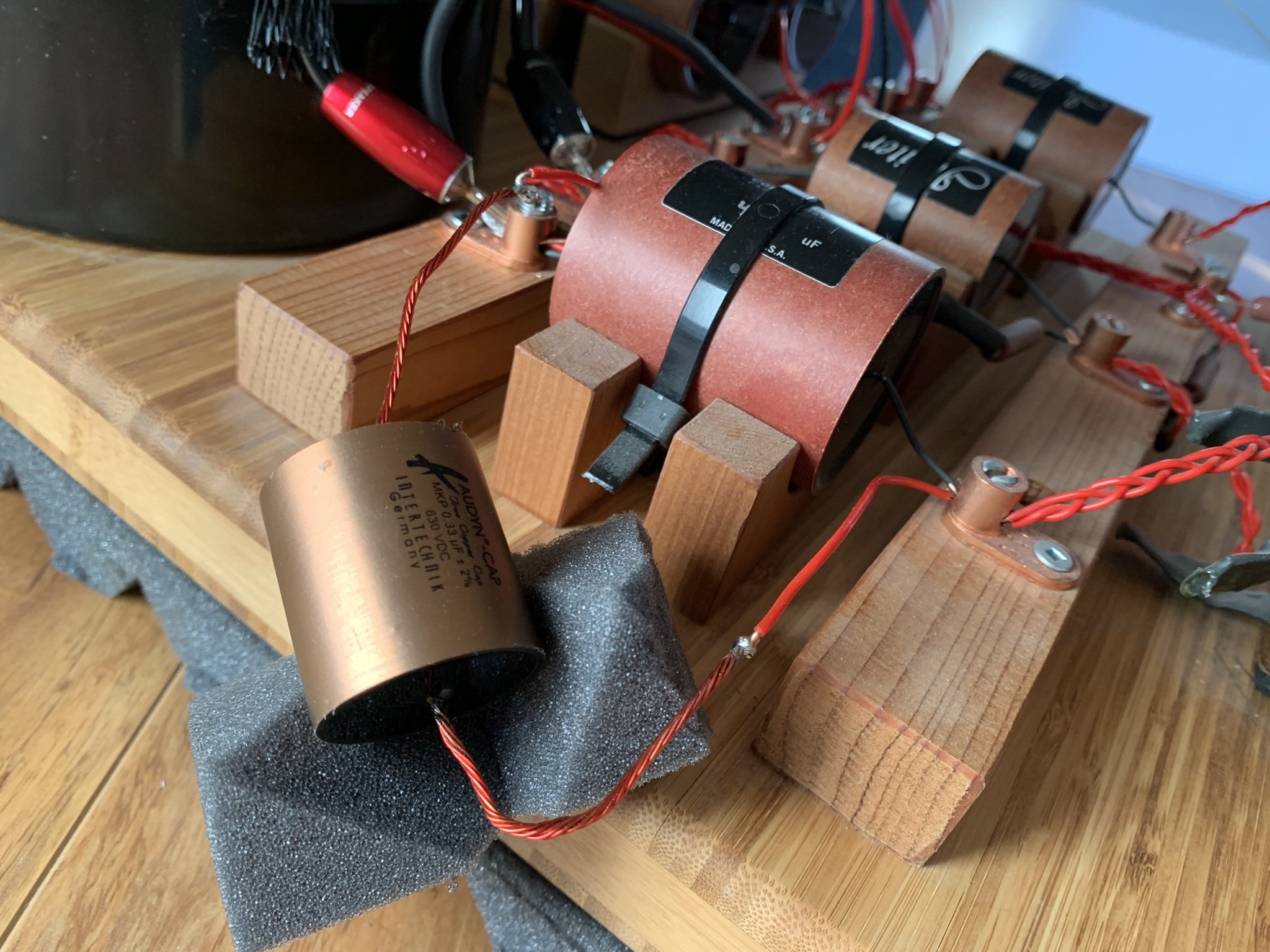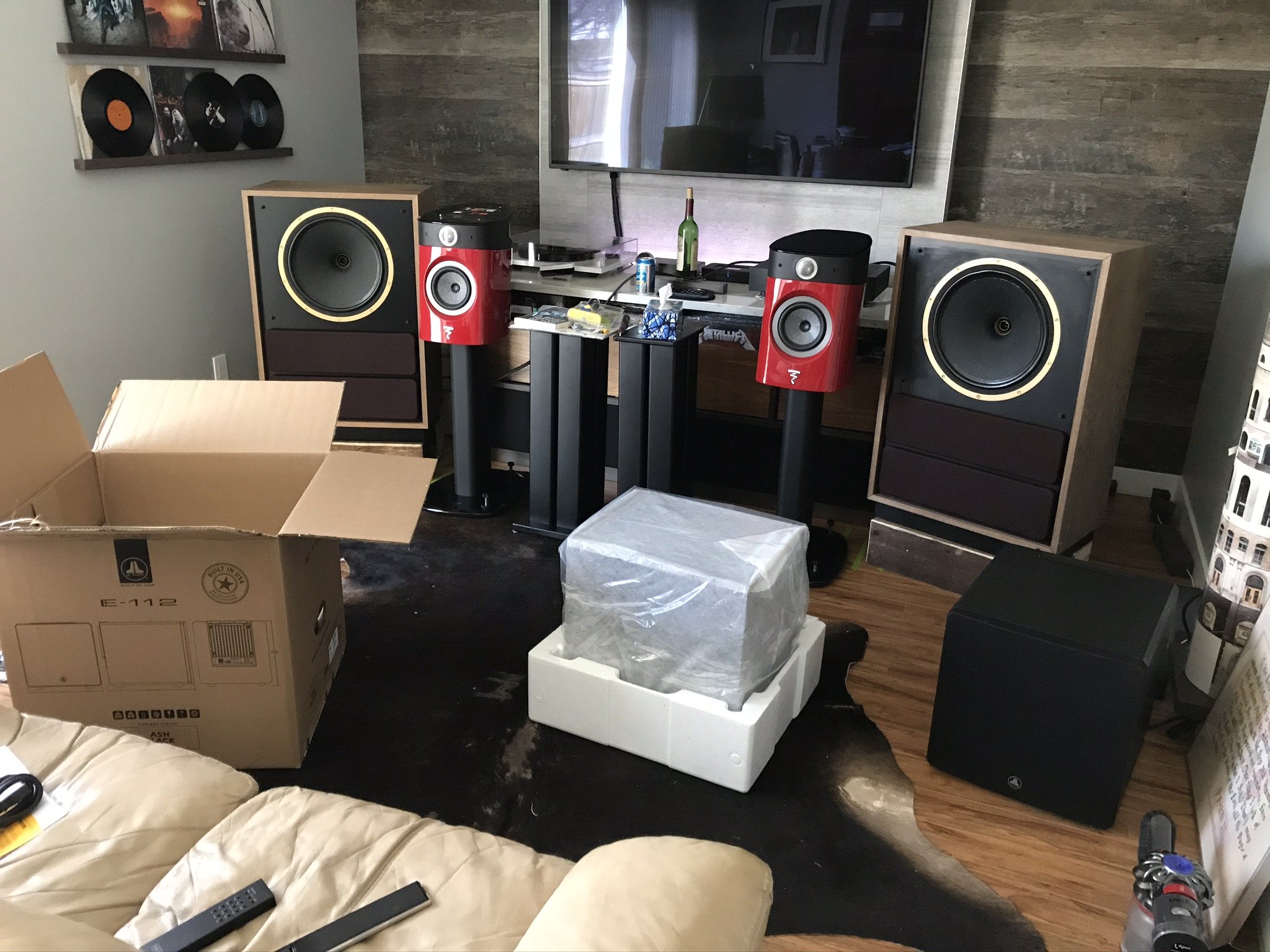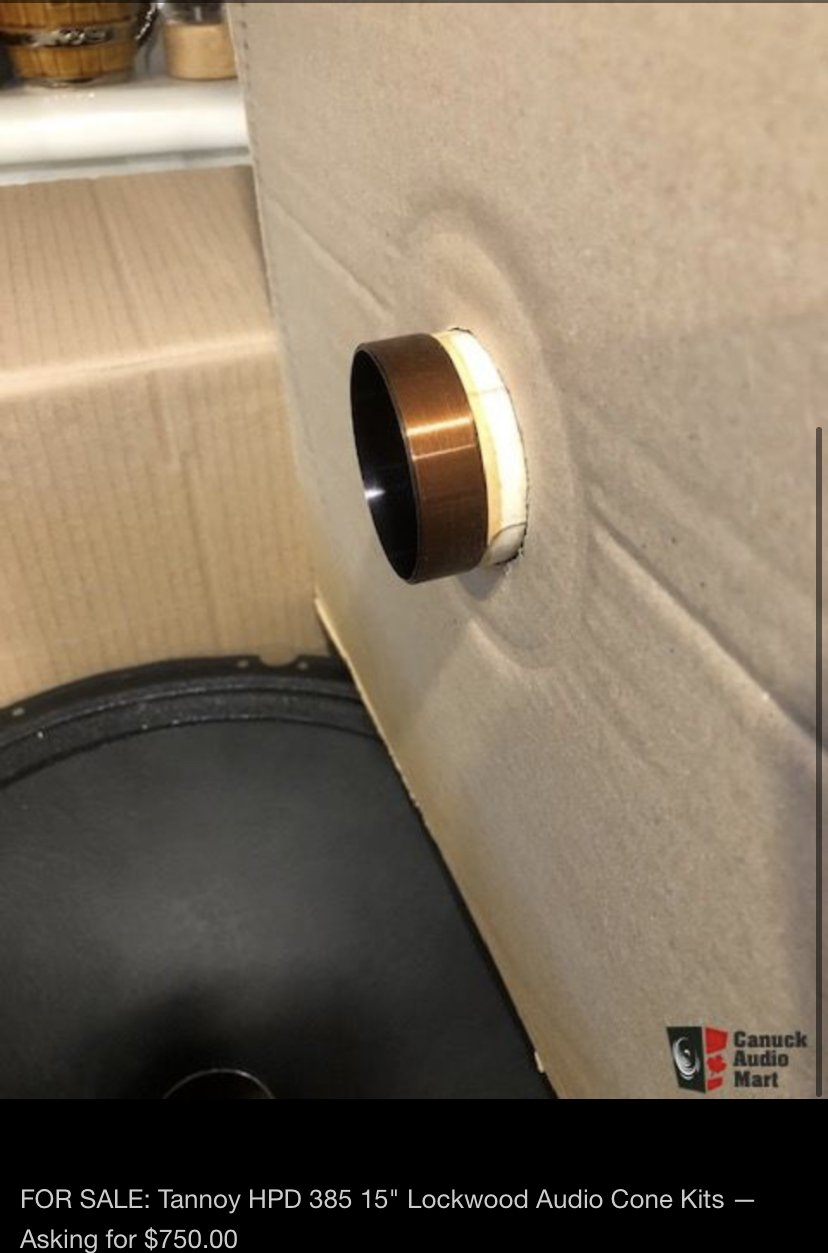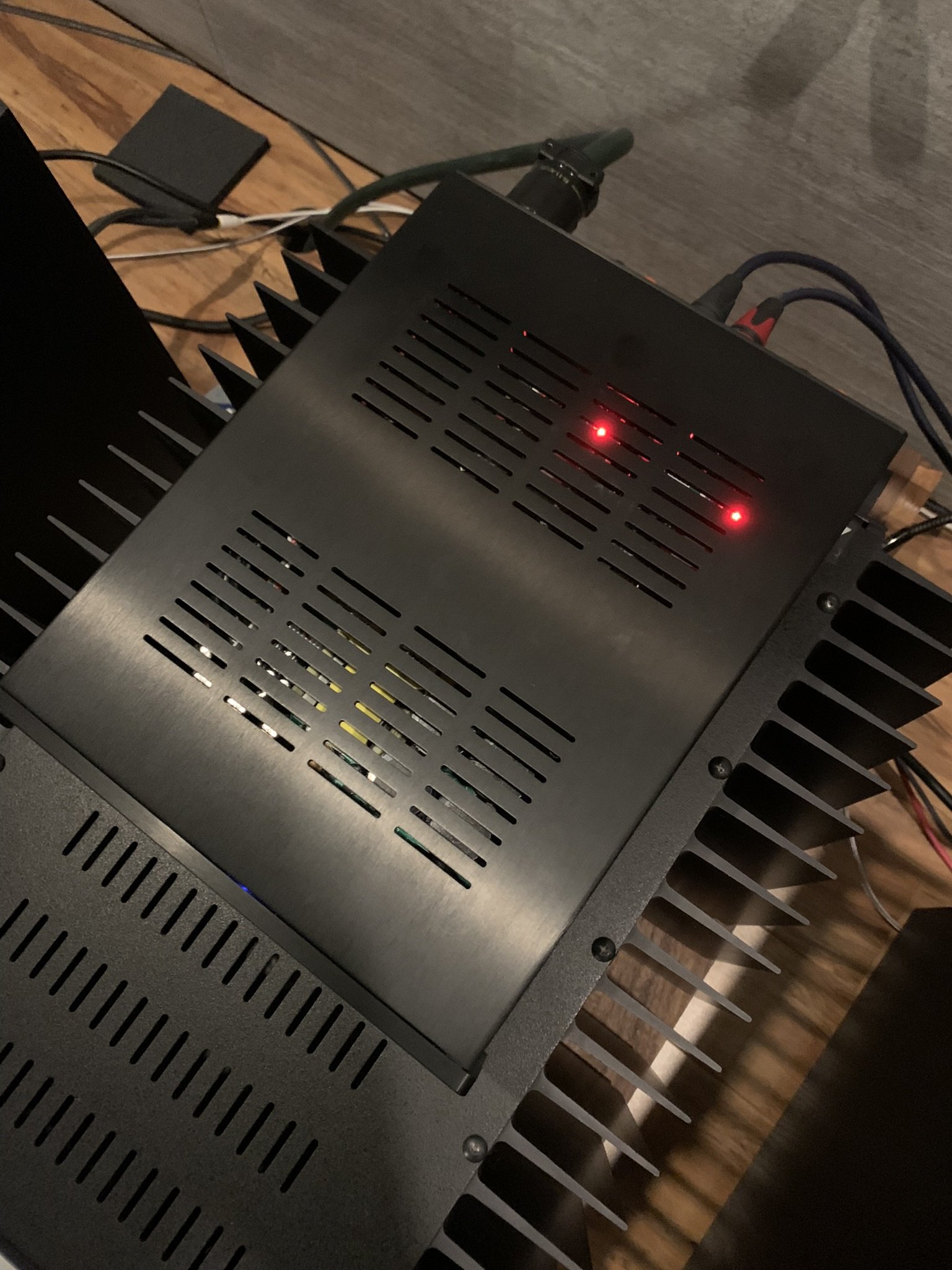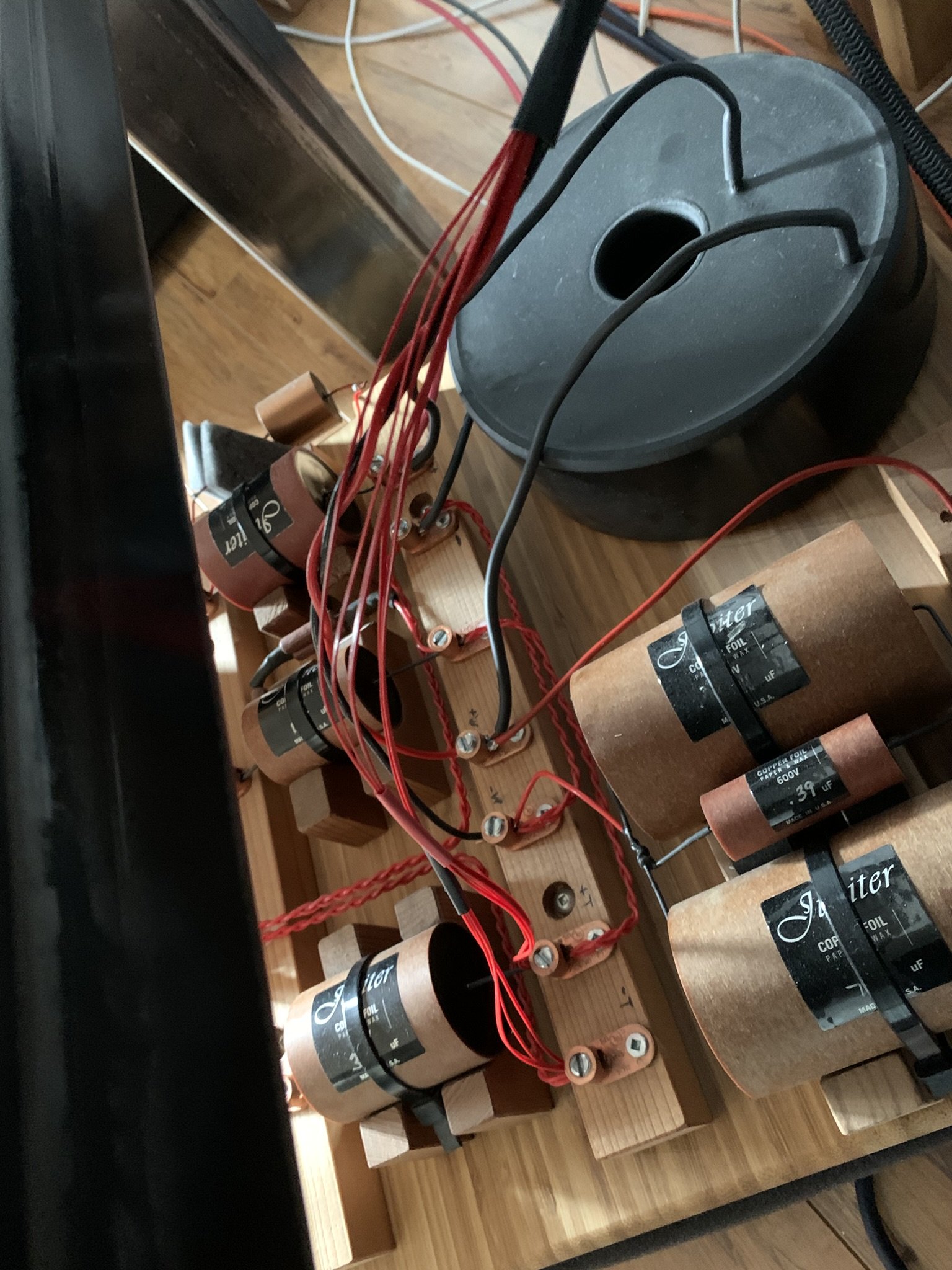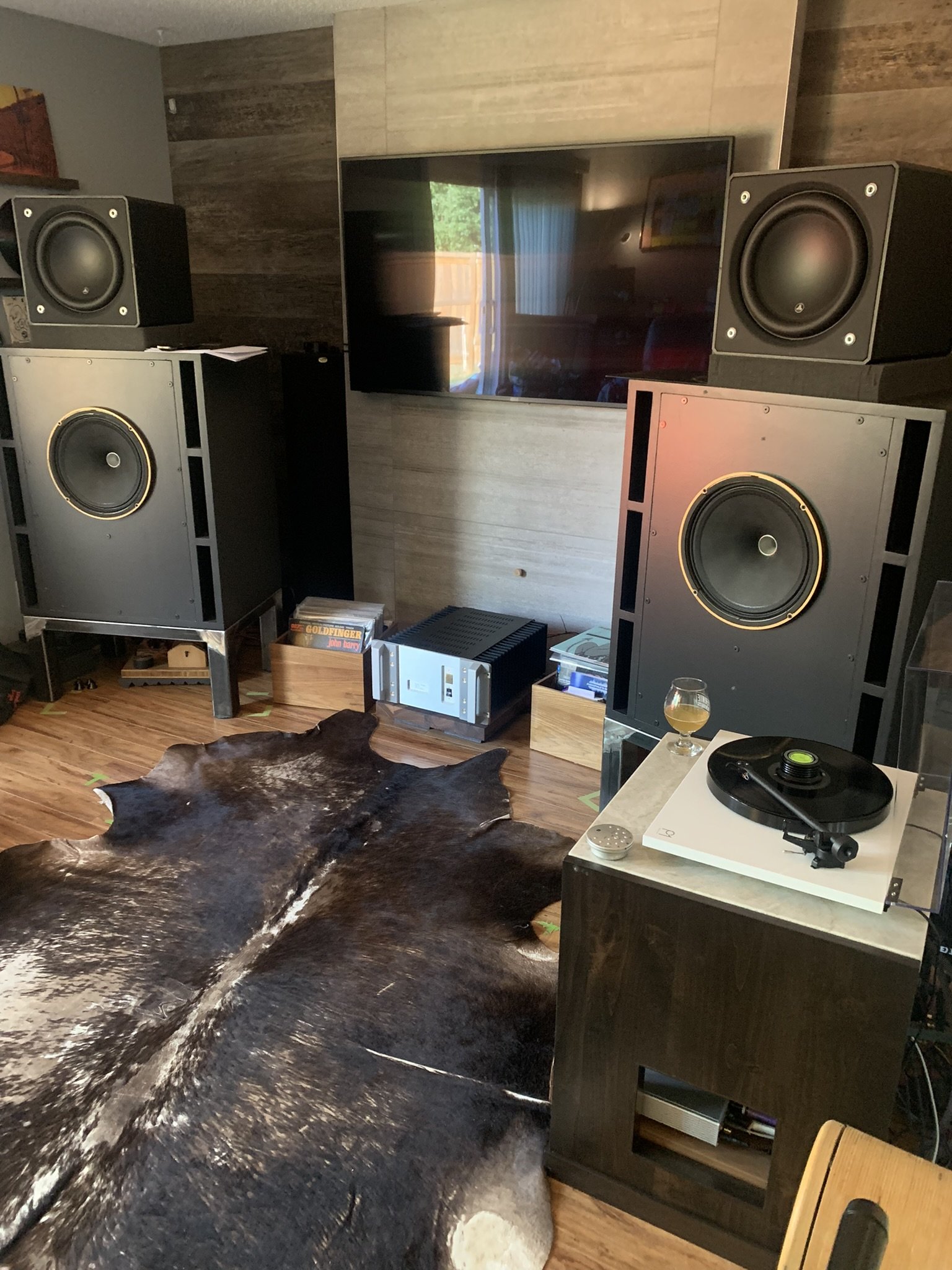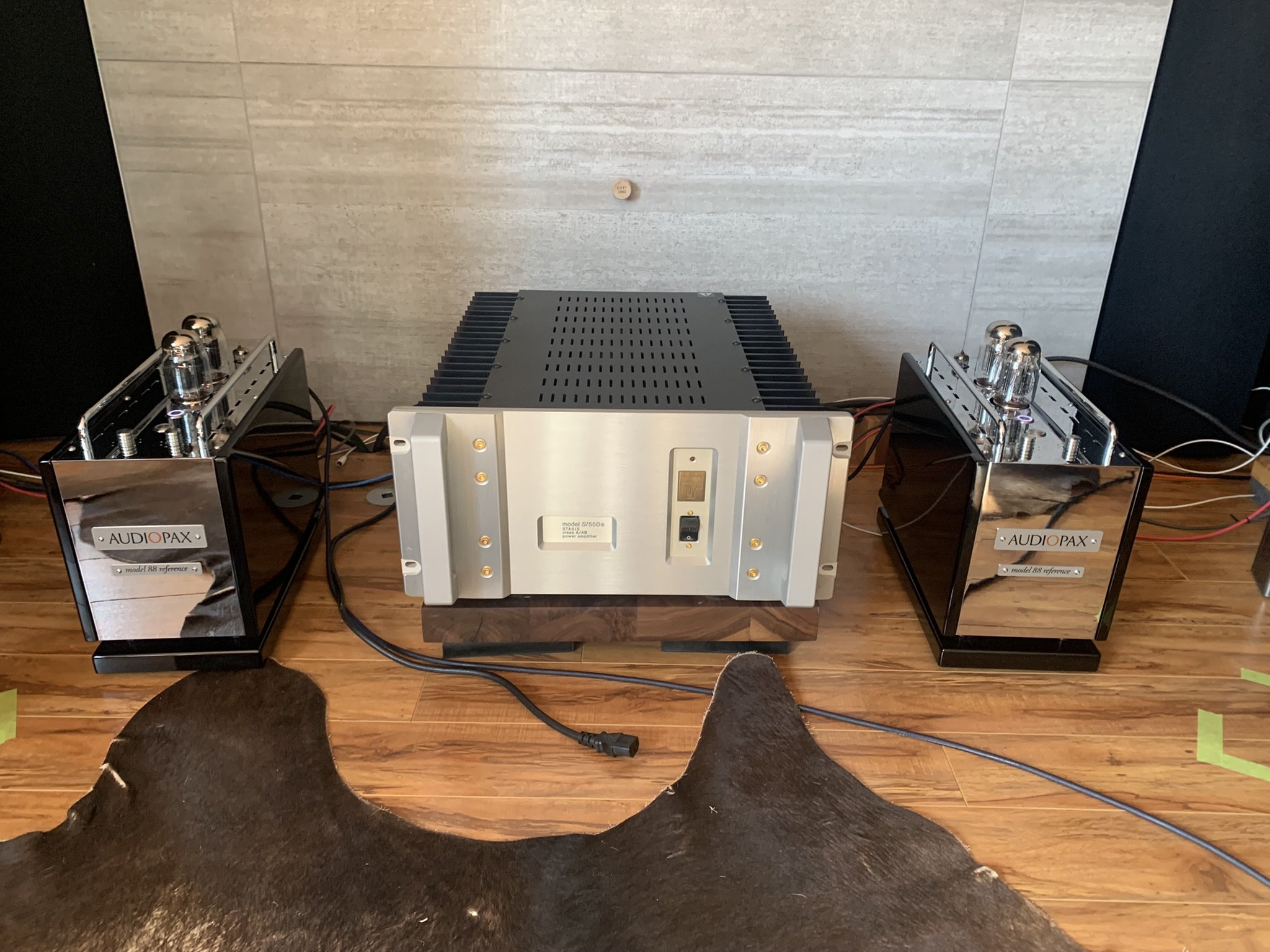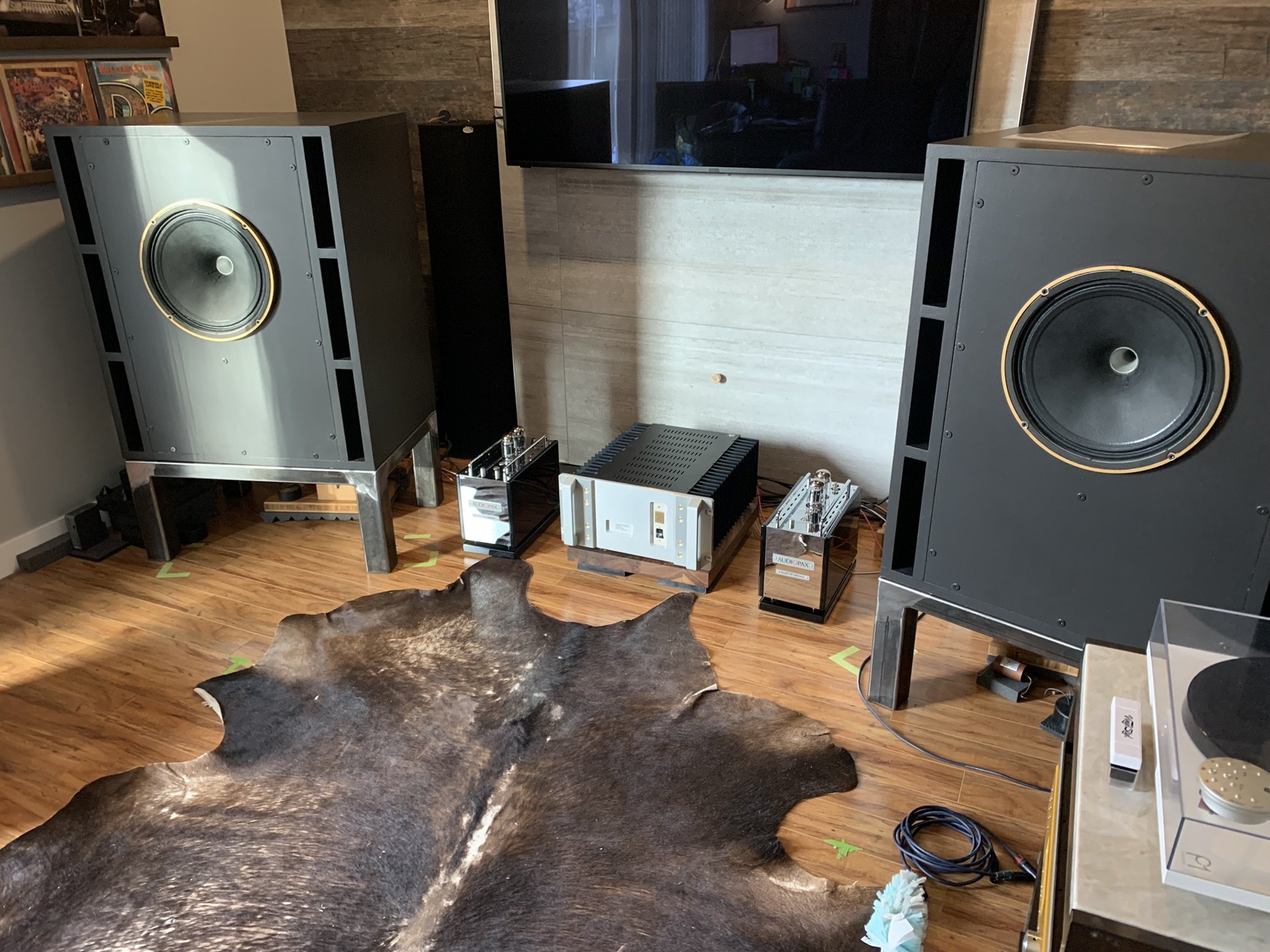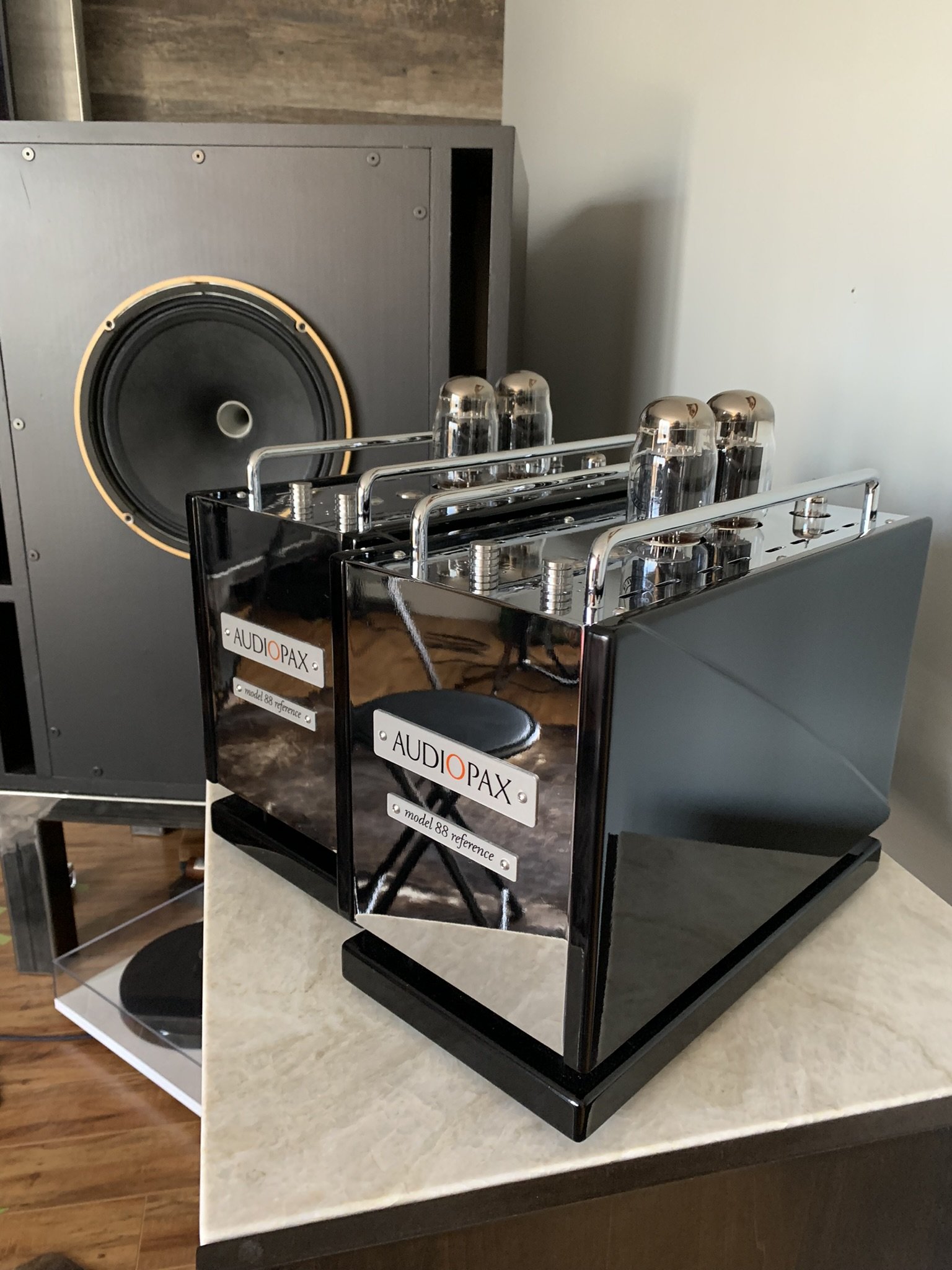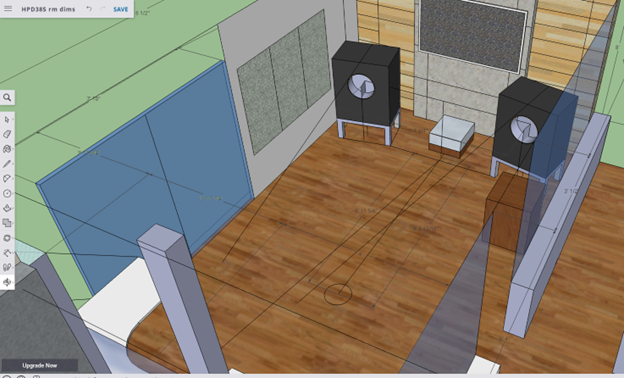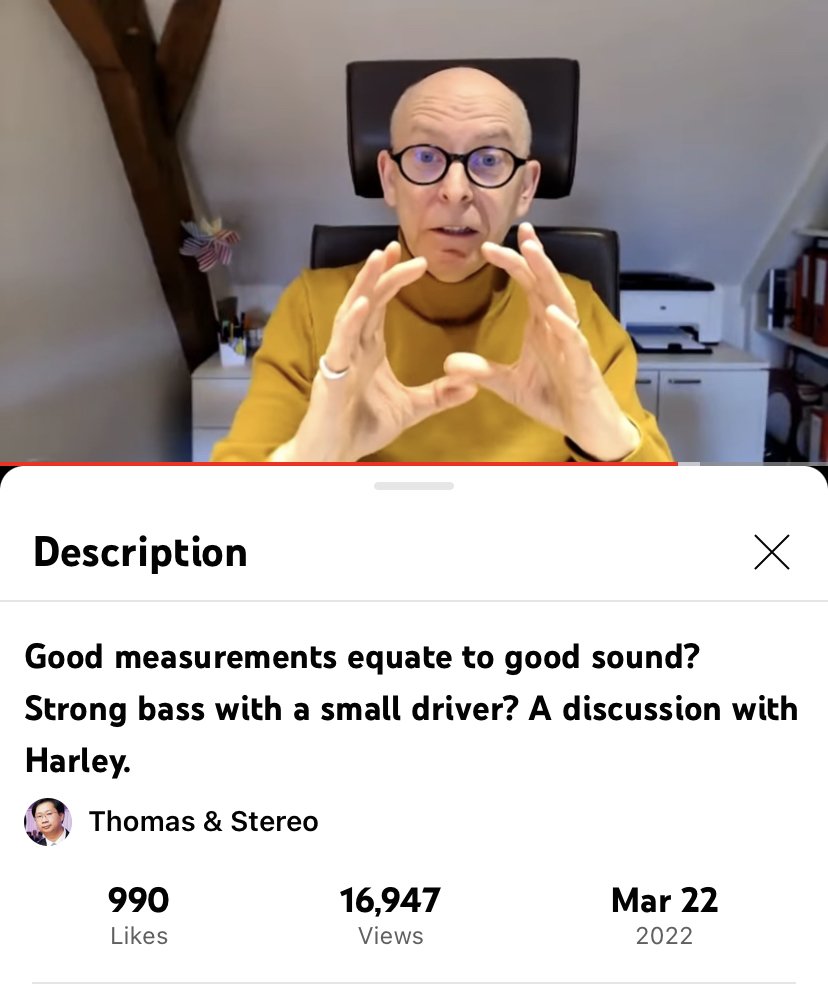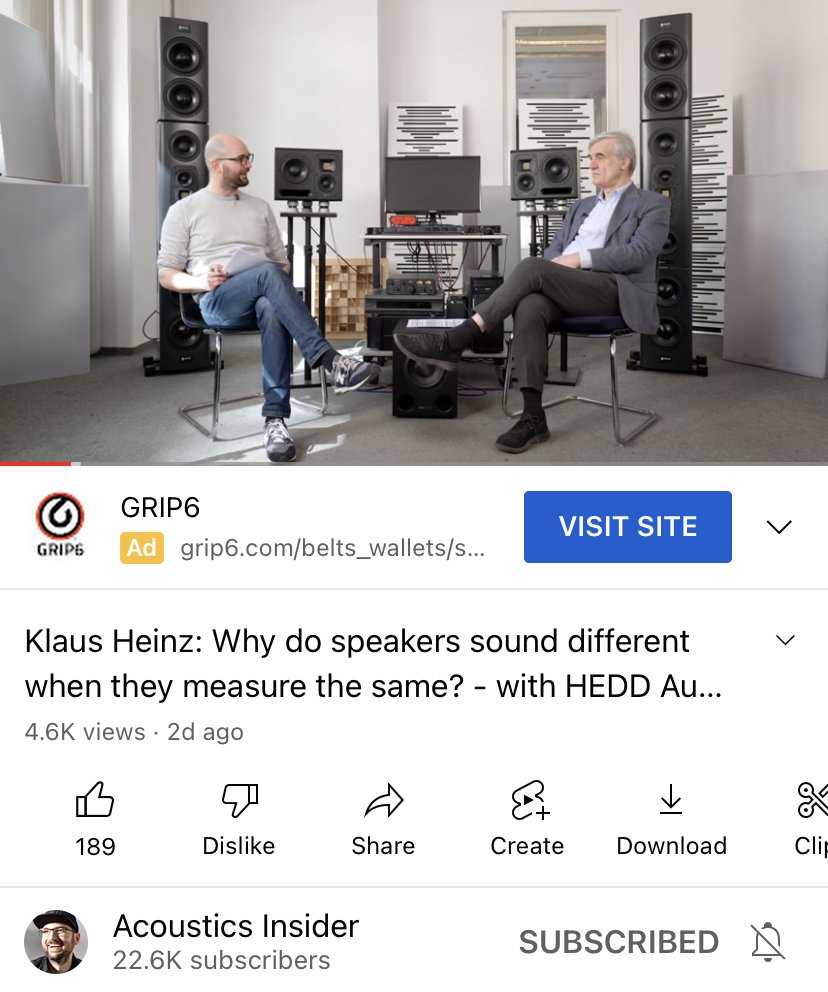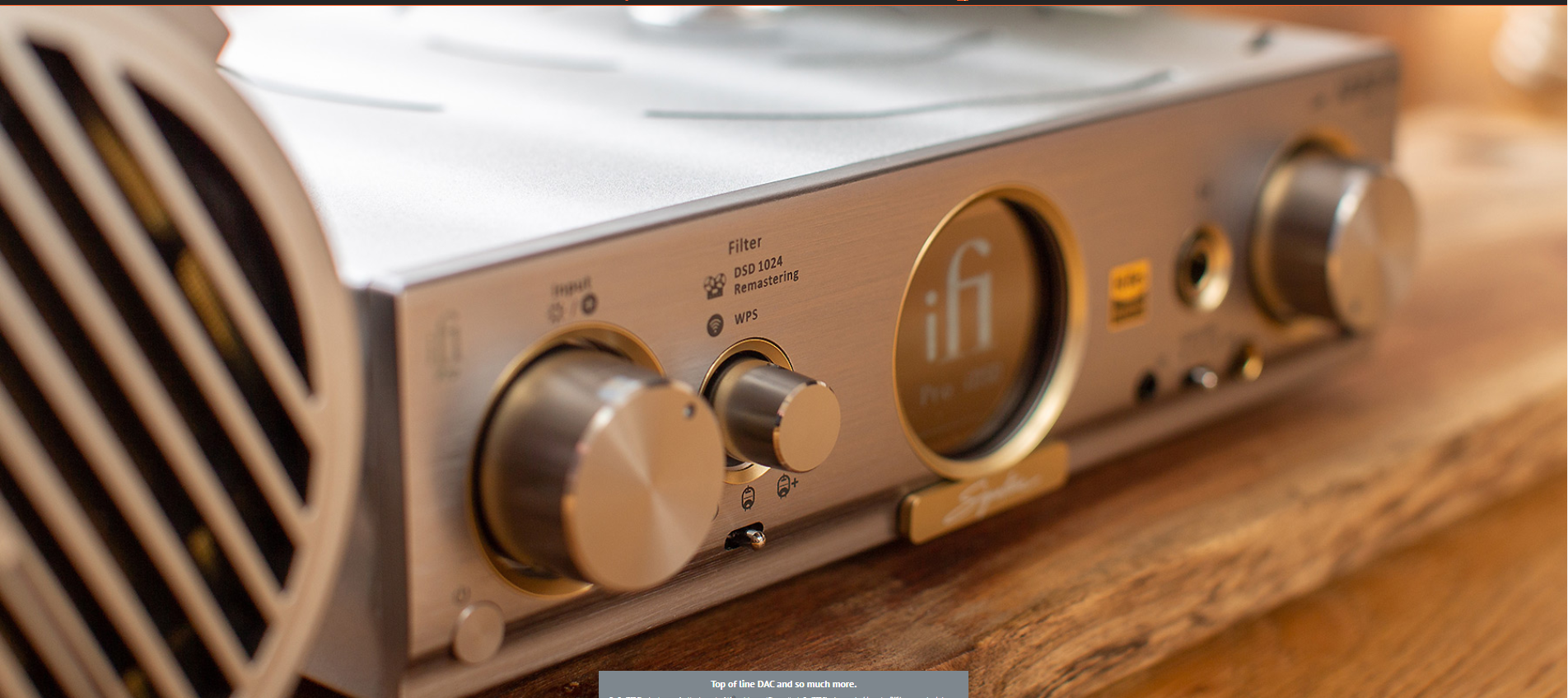All Roads to Tannoy Bliss
Music for me is founded upon the human connection. Hair raising moments listening to favorite music and conversation about arts and technology. The people you meet in this hobby are some of the finest around, trolls excluded.
Better gear and setup leads to higher fidelity music experiences. After many years, I’m back to Tannoy. Let’s reflect on this journey.
Music for me is founded upon the human connection. Hair raising moments listening to favorite music and conversation about arts and technology. The people you meet in this hobby are some of the finest.
Better gear and setup leads to higher fidelity music experiences. After many years, I’m back to Tannoy. Let’s reflect on this journey.
For 17 years the Klipsch KLF-30s were my reference speakers. SPL is important to me. I want to listen to Moby Dick above 99 dB, some times.
What does it sound like? The driving question. I found a used set of B&W 600 series bookshelf speakers, this is when I started to demo a lot of gear including the Dynaudio Special Forty which are fantastik!
Buy 601s if you are just starting.
Special Forty
Ultra slim stands along with precision placement creates sonic perfection. Google the Cardas Audio speaker placement guide.
Kurt at The Audio Room lent me Tannoy Arden’s to demo!
I landed on Tannoy Arden and spent a lot of time experimenting with speaker & sub position.
SPL Guaranteed
Side by side comparison of Klipsch KG1 Bookshelves to the Ardens. Your audio store might keep many speakers in one listening room, but I suggest simply one.
Tannoy Autograph Mini speakers have excellent detail, imaging and integrate perfectly with JL Audio subs. Tannoy Legacy Eaton’s pushed to the side.
Make sure to try placing your speakers along the the long wall, as well as the short wall. I prefer the long wall.
Tannoy Autograph Mini on the Long Wall
Tannoy Autograph Mini on the Short Wall
I sold my Legacy Tannoy Arden’s for Vintage Tannoy HPD 385’s. This room is way too small for these 360L Onken cabinets. Testing Audiopax tube amplifiers with the Tannoy HPD.
I met the Arden buyer at Pacific Audio Fest in Seattle. Amazingly I got the opportunity to purchase the Arden’s back and I did. He upgraded to Focal Utopia.
The Tannoy Legacy Arden’s are lifelong speakers for me. You must remove the skirts and purchase stands like these. I prefer the point source sonics without the extra JL Audio bass.
Mother ship the Black Ocean Audio [M] stack has arrived! Significantly different than Tannoy in every way. Everyone needs two sets of reference gear.
Don’t be afraid to buy to try and sell what doesn’t work for you. To discover more spend time at your local audio stores and attend HiFi shows, like T.H.E. Show Costa Mesa June 2025, I’ll be there to show you some favorite systems.
Dream Speakers Black Ocean Audio [M] Stack Review
"I knew that what I heard at BOA was HiFi without spending six-figures" - Scotty
"I knew that what I heard at BOA was HiFi without spending six-figures" - Scotty
"I knew that what I heard at BOA was HiFi without spending six-figures" - Scotty
The handcrafted Black Ocean Audio [M] Stack in Walnut, consisting of Le Chiffre 2-way above the Pale King bass extension cabinet.
I just received my dream speakers in crates.
I just received my dream speakers in crates.
During my very first audition of the [M] Stack, I clearly remember racing down LA County’s Interstate 710 from Audio Element in Pasadena with Emiko - That HiFi Girl - to Nick’s Orange County shop. We had just listened to Wilson Audio Alexia V powered by Boulder.
I knew that what I heard at BOA was HiFi without spending six-figures. I fondly reminisce on that day and associate the Stack with it.
During our February ‘24 Washington listening sessions with Nick, I learned a lot more about this pair, design choices and tuning the room + system to create optimal sonic preference. After several weeks of ownership and listening in my system, here are four defining sonic characteristics of the Black Ocean Audio [M] Stack:
Resolution. It’s understandable why Le Chiffre is used for monitoring, with its ¾” soft dome Hiquphon tweeter, the detail draws you further into the music. Resolution rewards you with great recordings and makes music new again.
Dynamic Range. Low levels details are as clear and engaging as the high level peaks. A great example of this are the crickets heard at the intro of the track To Sheila by The Smashing Pumpkins on Adore. This also makes for great sounding concertos, notable the Deutsche Grammophon recording of Visions of Prokofiev, by Lisa Batiashvili.
Transparency. Localization occurs when you can hear and separate the left channel from the right. Transparency is the opposite, when both speakers integrate and you become unable to localize sound from a channel and feel like sound is all around you, 3D and holographic. Transparency contributes to soundstage and imaging, whereas to identify the positioning of sounds and instruments as recorded on a stage or club, etc.
Beauty. What you see influences what you hear and the desire to call something your reference. The [M] Stack is stunningly beautiful and cabinets are at the core of design. The influence of real wood and cabinet inertness not only creates a unique timepiece, but vastly improves sonic performance.
Wood selection is critical to the construction and beauty of Black Ocean Audio’s speakers. [M]aster Built series uses the finest hand selected hardwoods and matches the grain amongst all cabinets.
So how important is real wood and does it truly add sonic improvement? Ask James Dasteel, owner of Reference Components in Santa Monica CA, distributor for Zingali Acoustics, or Trevor Doyle, Owner of Massif Audio Design in Waterloo Ontario Canada. Real wood matters.
Jim’s personal system. Reference Components, Zingali Acoustics, Massif Audio Design, Hard Wood floors
Ron Brenay of New Record Day recently talked about the sonic impact of speaker cabinet vibration and resonance to performance on sound. Interestingly, Ron said that some manufacturers do this intentionally to add tone and warmth. I’ve had a hard time discerning such “tones”, but after owning the [M] Stack i’m starting to understand. In our listening session to Harbeth monitor’s Nick said he could hear the tone.
Listening Sessions
“Was I nervous to hear how the [M] Stack was going to integrate into my system, yeah, absolutely.
I have no regrets, the [M] Stack exceeds my expectations and is timeless in beauty and sonics, a true reference component.”
The System:
Threshold Stasis S/550e Class A/AB stereo power amplifier, Stereo JL Audio E112 powered subs. QED Ribbon speaker cables & Massif Audio Design cable risers.
Sonic Frontiers Line 1 6922 vacuum tube preamplifier
exaSound e62 DAC, Icron 2224 SFP Optical-to-USB converter for connection to ROON. Phasure Lush^3 audio USB cable, Acoustic Zen balanced XLR cables. Furutech Alpha-3 power cable.
Wall isolated Rega P1 turntable with an Audio-Technica VM95 MM cartridge, iFi Zen phono stage and iFi balanced cable. Argentum Acoustics Expander power block.
Out with the New, In with the Old. How to make Audiophile Friends & Influence Others.
In this feature I talk about Tannoy Loudspeakers and front-end synergy; however, underlying are Dale Carnegie’s principles of How to Win Friends and Influence Others. The greater audiophile journey is finding others who love gear and music just as much as us. That’s a real synergy and melodic adventure.
In this feature I talk about Tannoy Loudspeakers and front-end synergy; however, underlying are Dale Carnegie’s principles of How to Win Friends and Influence Others. The greater audiophile journey is finding others who love gear and music just as much as us. That’s a real synergy and melodic adventure.
About the Legacy Tannoy Ardens, I wrote “Buy the best speakers you can afford and be done.” I eat my words, in the audiophile journey, done doesn’t exist.
Legacy Series Tannoy Arden Loudspeakers on AAE Arden stands with Stereo JL Audio E112 subs, Hegel H90 integrated amp, Bluesound Node digital source & Rega P1 turntable.
After selling the Ardens and upgrading to vintage Tannoy HPD monitors in 360 L Onken cabinets with custom outboard crossovers, I found less audio bliss. It took me over a year to admit it, but these speakers weren’t performing in my room or with my gear. This is so disappointing because they were stunning in the former owner’s room.
Tannoy HPD 385 in Onken 360L Cabinets, Threshold S/550e power amp, Sonic Frontiers Line 1 preamp & exaSound e62 DAC
HPDs in their previous room, my God it was good!
So, what’s next? What should I do after pouring so much money into this solution?
I gave away my speakers!
I gave away my speakers!
For an audition, for a month, and with a price tag to an audiophile I’ve only met on Instagram. I’ve discovered audiophiles to be some of the best people on the planet, so after a quick convo and sharing system photos together, we made it happen. A friendly way to start.
Load them up & of they go. That van!
Making audio friends is easy; begin friendly, share some gear, a beer, or music. Start with hello.
I wanted someone else to enjoy the HPDs in their room with their gear, and maybe buy them. What would I replace them with, hmmm, so many good options! This is Audiophilia… this is fun.
Ryan, the auditionee, discovered the same limitations I did.
So, I had to break it to Julie that the HPDs were returning home, and we negotiated where I would “store them”. The spouse acceptance factor is low on dishwasher sized loudspeakers. Dale says “show respect for other people’s opinions”.
Moving 300-pound speakers is no easy task. I asked Ryan if this effort was in vain because they were not for him. He was happy to experience them, and I was happy to listen to them in a different room on different gear. Effort not in Vain.
Up, up and away!
Audio friends are great, check out Ryan’s Klipschorns.
Ryan’s man cave
Once upon a time there were a set of Avantgarde Duo Grosso G2s for sale in Calgary on Canuk Audio Mart, or CAM. I emailed the seller stating that I could not afford them yet, but I’ve always wanted to listen to Avantgarde. Stephen is now a life-long audio friend and we frequently listen and talk about audio together. When you put out good vibes, usually you get good vibes. Just saying hello is magic.
Avantgarde Acoustic Duo Grosso G2 are Primo.
Back to the HPDs, now I’m stuck with speakers and no synergy, what’s next? Enter 300B territory.
Slovakian JJ-Electronics JJ322 parallel twin 300B 20 WPC vacuum tube amplifier
When you know audiophiles you get access to listen to all kinds of crazy gear. I had a moment just like the time when I decided to purchase the HPDs, listening to them, and receiving an offer to buy now. That’s exactly how I ended up with the JJ322 300B vacuum tube amplifier. My audiophile friends want their used HiFi gear to go to good audio homes, like mine.
The room in which I listened to the JJ322 first. Note the one piece design Klipsch La Scala.
What happens when you pair 300B with HPD? Pure sonic magic! From “for sale” to “not for sale”, I’m in love with this synergy. Even after listening to Avantgarde, there is something familiar and sweet which I now appreciate on the Tannoy.
The music is perfect although the JJ might give up a little control in the low frequencies. I do have some unmeasured and uncontrolled room modes to contend with. Reservation, they are not the perfect speakers to play TOOL Forty Six and Two, the Ardens SLAYED that track.
Newfound synergy is simply beautiful
But this newfound synergy doesn’t resolve the spouse acceptance factor, how can we manage that?
Step one, we agree the HPDs are “stuck” with us until they sell. Step two, the huge cabinets have been extended against the side walls which creates less interference with the TV, a requirement of sharing space; actually, this positioning sounds better too. Step three, after time away without tunes, Julie appreciates the sonic richness of the Tannoy especially with the JJ322! She also loves the humidor style appearance of the amplifier.
Nothing doesn’t sound so good!
But can a 300B be a daily driver for TV too ? No, it’s reserved for music only. Hence the Tannoy Autograph Mini with a solid state Yamaha stereo amplifier. Speaker stands to come soon, but despite the looks, it works.
What’s next? The HPDs are keepers! We both agree.
My original plan to veneer the Onken cabinets are restored, maybe in a red rosewood to complement the JJ322, similar to that of the Sonus Faber Stradivari G2!
As you can see, Dale Carnegie’s rules helped me make new audio friends and influence Julie to LOVE the system again.
Did you know that Nelson Pass uses Tannoy HPD 385s to evaluate amplifier design? It’s not because they are perfect speakers, no, it’s because they reveal what’s in the signal chain. Steve Guttenberg made a video with Nelson about this.
Maybe I need to try a super tweeter next!
“This is the reference standard speaker at Pass Labs, when we have to be listening to stuff we know that we’re all listening to the same system. These are simply just tools. These aren’t the best speakers that you would ever want to listen to. They are, in fact, the most revealing of amplifier characteristics.”
Gallery
Discover a lot more about Tannoy HPD & Onken here on A Bigger Audio Bliss!
HiFi I didn’t buy in 2023, but wanted.
HiFi I didn't buy in 2023, but wanted.
Borreson, Naim, Clayton Shaw Acoustic Labs, MoFi, Shanling, John Hunter Acoustics, Earthworks, & EVPs.
At $1.1 million USD, the Borreson M6 Loudspeakers, Aavik C-880 Control Amp, Ansuz cables, & Aavik P-880 Power Amp practically do not make my list, but WOW!
This list is limited to gear that is practically affordable, and at $11k the Borreson X3 loudspeaker fits that bill. Psyphonyx Audio wants the X3 more that I, so …
Two speakers competing at $3k/set make the list; MoFi SourcePoint 8 and Clayton Shaw Acoustic Labs open baffle Caladan. Nemo Propaganda advises, before you purchase a new component, know your plan and why you are upgrading.
The SP8 is a new dual concentric speaker designed by Andrew Jones that performs amazingly in the MidFi and HighFi space, but as a Tannoy owner the SP8 don’t offer enough change to change. Read about my Tannoy journey here.
Contrarily, I’ve listened to very few open baffle loudspeakers and my experience with the Spacial Audio Labs Q6 dipole was evidence that open baffles offer vast sonic diversity to justify a purchase.
There were many speakers which caught my eye in 2023, OGY, 8MM, etc.
When John Darko talks about something I want it!
Add to the list, Shanling’s ET3 CD transport; the whole design is as ritualistic and tactile as spinning vinyl. I love physical media, compact disk collections and currently playing CDs through an old school Panasonic DVD player. Would the Shanling transport really make a sonic difference? Hmmm, I don’t know, but it’s new and cool.
Forget about the gear, if your room sucks, or reflects, then you can’t correct that with great gear — but great gear matters.
Add to this list John Hunter Acoustics 24x48x4” $160 acoustic panels. Very small acoustic control changes can impact sound dramatically, and for that reason I choose eight JHA panels, modular to move around; add $149 to each panel to create gobos. Acoustic Science Corp from Eugene OR makes great treatments aslo.
I would like to hear Ron’s thoughts at New Record Day about Dennis Folly at Acoustic fields. Dennis often bashes mineral wool absorption, I wonder what Ron would say?
There is one amp to rule the Elac BS403s, and that is the Naim Uniti Atom. There has been no other amp to drive these like the Naim Uniti has done.
I’ve seen and heard Allnic gear in the flesh and blood, they make beautiful stuff and the T-2000 integrated amplifier made my list.
Measurements matter and tuning is worth a solid investment of a Mini DSP or JL Audio Max-Kit.
Microphones! When Ron Bruneh published his review of the Caladan and gave full disclosure to the Earthworks QTC 30 stereo microphones, I knew immediately that I need a set.
IsoAcoustic decoupling stands, yeah, they’re cool and hyped, and would be cool under stereo JL Audio E112 subs, but let’s look at Norman Varney’s Equipment Vibration Protectors. Joseph Audio knows that EVPs work. Norman is extremely knowledgeable.
What Did I Buy?
What Did I Buy?
For four defining reasons at $10k the Black Ocean Audio [M] Stack will enter my system in early 2024:
As a brand ambassador for Black Ocean Audio, I understand the value, quality, and passion offered by owner and musician Nick Tarnofsky. James Dasteel of Reference Components in Santa Monica CA knows that real wood construction matters, it creates sonic realness. The [M] Stack has Ultra resolution. When you experience the [M] Stack in person, feel the construction, knock on the cabinets, and listen, they create an emotional connection balanced with the human connection being part of BOA.
Are the JBL LivePro2 IEMs good and should you buy them? Yes and here is why.
These two songs prove the JBL LivePro2s have presence and two channel spatiality.
For Martha by The Smashing Pumpkins
At exactly 0:58 & at 1:18, the presence is better than any other IEM I’ve played. It was not until listening to this portion of the track on the JBLs that I stopped to remark on how great those sounds are.
Rake And Rambling Boy by Joan Baez
At exactly 0:44, Joan plays a percussive against the body of her acoustic guitar. It wasn’t until listening to the JBLs that I paid attention to this tone. The JBLs accentuate this, as if it were like being physically present, creating spatiality.
Do you get caught up in audio review hype?
When the Sennheiser Momentum True Wireless 3 came on sale (currently $189 on Amazon, regular $249), I pulled the trigger faster than DJANGO. But I don’t hear them like other reviewers have described; upper extension, linear bass, etc.. And it’s funny because to me the Sony WF-1000XM4s perform how others describe the Sennheisers.
The Sennheiser TW3s, ~meh~, I didn’t get an immediate in love reaction like the JBL & Sony.
Right after purchasing the Sennheisers, I messaged Black Ocean Audio’s founder Nick Tarnofsky to share in my purchasing hit and looking for reassurance.
Nick shared that his personal favorite IEM is the JBL Live Pro. I quickly found the LivePro2 on sale for $74 (currently $99 on Amazon, regular $149), added them to my cart and now I have two new in ear monitors to review.
Yeah, I really am The CHEAP Head-Fi man… No ultra Head-Fi in my stable, like the Campfire Audio Andromeda.
The JBL LivePro2 earphones are great and at $149 or cheaper, you should ABSOLUTELY buy them, right now, here. They’re just as good as the WF-1000XM4. Whoah, move over Sony!
These songs prove the JBL LivePro2s have presence and two channel spatiality, not spatial audio FX. Presence is the sense of positioning and space of sound.
For Martha by The Smashing Pumpkins is on Qobuz.com
There are two reference points to listen for during the acoustic track For Martha by The Smashing Pumpkins on Adore (Deluxe).
At exactly 0:58 the bass hits & at 1:18 the cymbals crash and continue to play. The JBLs have a lot of bass, but the way it’s presented and suspended at 0:58 emphasizes spaciousness. The presence of the ring and decay in the cymbals is better than any other IEM I’ve played. It was not until listening to this portion of the track on the JBLs that I stopped to remark on how great those sounds are.
Rake And Rambling Boy by Joan Baez is on Qobuz.com
At exactly 0:44 on the track Rake And Rambling Boy by Joan Baez from her debut 1960 album, Joan plays a percussive against the body of her acoustic guitar. It wasn’t until listening to the JBLs which I paid attention to this tone. None of the other IEMs create the presence of this percussive as do the JBLs, some simply miss it. The JBLs accentuate this, as if it were like being physically present, creating spatiality.
The LivePro2s are defined by
Strong bass, but softness, realness, and presence with music, and even during a phone call.
Their active noise control is great, yet lighter than others. They slip into your ear with a light fit. There is slightly more ambient sound entering your ear which can be better for barometric changes (BIG ADVANTAGE).
Oval transducer ports requiring JBL specific ear tips (boo). They feel light in the ear and need regular adjustment during exercise.
The style and fit works very good wearing a snowboard helmet.
They’re not chunky which may indicate lower build quality, but their performance deems otherwise.
IMO, active ambient sound pass-through in any IEM simply sounds like noise amplified. Sound zone and active-ambient mode features have zero weighting to my preference, neither does 3D spatial audio effects. ANC, however, has strong weighting.
Sony WF-1000XM4 & JBL LivePro2, the Sony’s get a positive (+) chunky award.
Credit given where credit is due RTINGS.com, links below
Credit given where credit is due RTINGS.com, links below
What RTINGS has done with simulated in ear measurements and data is interesting. Shown below are their frequency response function and sound profile curves of the LivePro2. The FRF has a (dashed) baseline curve which is a comparative response to their stereo system. Is this a Scott Walker quality system? Those details were not provided; however, it doesn’t matter as long as this same reference is presented against all other data, which it has.
They normalize (flatten) the reference response and show the deviation of the headphone to that. In this approach, the JBLs have a heightened bass response. This is still subjective, the reader doesn’t understand how the stereo bass response is or room gains, yet the presentation of data is interesting especially when comparing the Sony, JBL and Sennheiser, shown below.
RTINGS original data, link
The TW3s sure are flat! It’s interesting to see bumps in the mid and high treble, it must be an IEM resonance.
RTINGS original data, link
In my listening experiences, I don’t sense a lack of treble in the Sonys at all.
RTINGS original data, link
Does the increased energy of the JBL explain why I heard the sounds described in my song selections so vividly? Maybe, yes.
I don’t fully understand why RTINGS overlaid this data how the did. Why not align the low and mid bass against the reference line? Turn down the gain 4.5 dB. Irrespective, the comparisons are useful.
Sony, JBL, Sennheiser, & Campfire Audio
Sony, JBL, Sennheiser, & Campfire Audio
Comparisons.
I discovered this comprehensive comparison from Picky Audio YouTube showing his evaluation of ANC and where the Sony, JBL and Sennheiser’s land.
Tips matter: Spring Tips, Sony, & Sennheiser with a foamy at the end.
JBL oval transducer & tip
The JBLs work great under the helmet at Mt. Bachelor, Oregon (10/09/23).
IEM 8 Tracks Playlist
IEM 8 Tracks Playlist
Head-to-Head-FI. Battle of Budget IEMs. Results on Sound.
Music is the drug and I got a fix. When we’re away from our home Hi-Fi most of us rely on Head-Fi ̶ yes, earphones. Here are some highs, mids and lows of the:
Sony WF-1000XM4 ($280), Campfire Audio Orbit ($249), Periodic Audio Magnesium ($99) and House of Marley Smile Jamaica ($20) IEM in ear monitors.
Music is the drug and I got a fix for you. When we’re away from home Hi-Fi most of us rely on Head-Fi ̶ yes, earphones. Here are some highs, mids and lows of the:
Sony WF-1000XM4 ($280), Campfire Audio Orbit ($249), Periodic Audio Magnesium ($99) and House of Marley Smile Jamaica ($20) IEM in ear monitors. (non-sale prices)
Added to this mix are the Periodic Audio Rhodium DAC/AMP and Neon Bluetooth receiver.
Three songs were chosen to asses the sonic signatures; streaming via Qobuz, shared via YouTube.
What to listen for? Refer to Ten Attributes of HiFi Listening here
Song 1 - Joan Baez, Diamonds and Rust (16/44)
· Baez’s smooth acoustic sounds and modulating vocals, with a fresh folk familiarity, allow for softer analog-produced evaluations.
Song 2 - Roger Waters, The Dark Side of the Moon Redux, Breathe (24/96)
· Like it or not, Waters’ feel and sounds are ultra-high res like this recording format; another requirement for analysis paralysis.
Song 3 - Hole, Celebrity Skin, Use Once & Destroy (16/44)
Courtney Love delivers quality alternative hard rock essential for evaluating dynamics. Let’s NOT pick boring demo tracks; rock, metal, and EDM are all essential.
“Music creates Human Connections”
Campfire Audio Orbit
Campfire Audio Orbit
The Orbit is Campfire Audio’s foray into wireless headphones. With wired IEMs ranging from $499 to $3299, it’s easy to think you may taste their sound for only $149 sale price.
My first take on the Orbits was unimpressive, they were thin and tinny; said others too. Many products don’t sound right without burn in; except the Sonys, they did. After ~5 hours of use the Orbits changed. Manually holding and tilting the earbuds faceward dramatically improved the seal and sound. None of the provided tips created a seal for me. Switching to the Moondrop Spring Tips (above, left) and Sony mushrooms tips (above, right) drastically improved their sound. The Sony tips seal and feel better to me with the Orbits. The characteristics described below are with the Sony tips, a little IEM burn in, & EQ off.
Baez’s recording sounded fine; the Orbits suit well to acoustical recordings. With tweaks, the guitar intro could have fooled me from the first listen; are these are the same phones! Joan’s vocals become fabulous. I listened solely to the Orbits for a long session and became accustomed to their sound, listening to the well-produced Smashing Pumpkins album ATUM, A Rock Opera in Three Acts.
Waters’ recording didn’t feel high resolution, the bass was heavy, and verging on boomy.
Unfortunately, the Orbits fell apart with Hole. The drums lack treble which softened their attack. Courtney’s voice is far behind and muffled. The band doesn’t’ feel cohesive as other headphones make them to be. Hard rock is a staple, for me peak performance is required.
Aside from the music, a phone call with the Orbits was just fine. If the Orbits are your only wireless headphone then you should love them solely for the convenience of wire freedom.
Sony WF-1000XM4
Sony WF-1000XM4
The XM4’s active noise canceling, features & headphone app are superb, Sony has a great video here . This silver replacement charging case was found on ebay for only $40, it happens.
In Baez’s recording, everything is perfect; the guitar entry, positioning, and vibrato in Joan’s voice. Listening critically, the highs are ever so slightly behind (lower energy) compared to the Marleys and the guitar intro doesn’t quite feel the same.
In Waters’ recording the bass is strong without boom or saturation. The vocals are clear and crisp, but again the Marley’s do it slightly better!
In Hole’s recording, the guitar comes in perfect and drum slam has mid-range weight. The vocals are positioned right, but slightly rolled off and behind compared to the Marleys; this presentation is not bad because the blending within this song (& genre) is perfect. When it gets heavy, everything comes together without blurring and separation is excellent.
My favorite Sony EQ is clear bass plus 3, one notch up on 6.3 kHz and two on16. These evaluations were with no EQ. In a quiet environment the sound signatures didn’t change with active noise cancelling, or ambient sound engaged.
On occasion, if the IEM isn’t sealed and positioned correctly within the ear, there is a hollow clunking sound inside the IEM while walking or jogging; it’s very obnoxious, but easily remedied.
Periodic Audo Mg (+) USBC Rhodium (Rh) DAC
Periodic Audo Mg (+) USBC Rhodium (Rh) DAC
Periodic Audio’s Element line up consists of four wired IEMs ranging from $99 to $299. With first hand experience, the tin case elevates the unboxing experience and enhances purchase satisfaction. The cable connects to the IEM with a with a lovely proprietary 2.5 mm connector.
Baez’s recording started with ease and presence, the guitar had detail and resolution. Joan’s vocals are forward (high treble) and the song lacks body.
Waters’ recording sounded very high res and detailed, the guitar intro was stunning. Like Baez, the vocals were bright and forward and lacking fullness, body, and missing cohesion.
In Hole’s recording, the vocals are thin, bright, and forward. The drums lack body and don’t blend with the vocals; it’s awful. Periodic Audio states that the sonic signature of the Mg IEM is relatively neutral but with a brighter top end, ideal for blues, jazz, and acoustic/folk.
After critical listening my taste for the Mgs has changed.
House of Marley, Smile Jamaica (+) Rh DAC
House of Marley, Smile Jamaica (+) Rh DAC
We all need them and with wood cups these should be the standard of budget wired phones. They are GREAT! Put them in someone’s stocking, a sock drawer or spare office space.
Baez’s vocals are spot on and balance perfectly with the guitar, creating cohesion and staging. The Marely’s are excellent for acoustic recordings.
Waters immediately feels high resolution. The vocals are stunning, the weight is convincing and in this genre have an edge over the Sony’s which are vocally more laid back.
In Use Once & Destroy, the drums need more mid-range slam, but do blend with nice sounding vocals, unlike the Orbits & Mgs. There is missing weight which the Sony’s deliver; however, it’s a convincing rock performance.
Periodic Audio Rhodium DAC/AMP vs. Apple Adapter
Periodic Audio Rhodium DAC/AMP vs. Apple Adapter
There are hundreds of portable DAC/Amps available, are they working? The standard Apple Lightning to 3.5 mm stereo adapter is not a DAC, or an Amp.
The Marleys remain impressive using the standard Apple adapter compared to the Rhodium USB-C DAC/Amp. But switching back, OH YEAH, you can hear what the Rhodium adds to clarity and detail in boths the highs and lows.
Key point in comparison, it’s not when you remove the Rhodium DAC when you hear the difference, it’s when you add it, then you hear it.
Periodic Audio Neon Bluetooth Adapter
Periodic Audio Neon Bluetooth Adapter
If you add this bluetooth receiver to wired IEMs will you get a true wireless headphone?
If you’ve discovered why the Neon works for you, GREAT, I’m not there yet. There is loss in quality with the Bluetooth receiver over direct wired, as John Darko has been explaining. Bluetooth is lossy.
The Sony’s don’t sound lossy; maybe Sony has an advantage in DSP (I believe) which removes that lossy feeling.
Head-Fi vs. Home Hi-Fi
Head-Fi vs. Home Hi-Fi
How do we know what sound is right? How the artist intended… (that’s a cliche). Here are comparisons to a reference home Hi-Fi system.
In Baez’s recording the vocals sounded brighter and forward. IEMs play this more favourably, notable the Sonys.
In Waters’ recording, the intro, guitar nuances and details are outstanding! Unmatched by any IEM reviewed. The bass delivery can’t be matched by headphones. Cohesion of Right/Left speakers adds depth to vocals and feels high res. Left/Right panning of the organ was wonderful. The stereo revealed a ring and decay of the guitar strings being plucked and fingers removed.
Hole’s recording was excellent and sounds more like a rock club than any of the headphones made it out to be.
It’s important to note that headphones are binary, the left channel doesn’t interact with the right as two speakers interact with each other within the room, along with that psychoacoustic affect.
The verdict, XXX, but when a fix is required, these headphone do the job.
BONUS TRACKS
BONUS TRACKS
After much deliberation on the performance of the Orbits, I needed something else familiar. The Smashing Pumpkins title track “Atum” was used. Two things stand out useful for comparison: the gong crash at the beginning and guitar intro.
Diamonds and Rust was recently introduced to me on vinyl by my neighbor; music is for sharing and discovery. It’s interesting that Judas Priest covered Joan’s title track in their recording, Live in Japan – well worth the listen.
In homage to Judas Priest, the Sony’s SLAY Painkiller, the Sony’s absolutely nail heavy music.
Sony WF-C500 & WF-C700N
Sony WF-C500 & WF-C700N
An honorable mention t to above, the C500s were my first true wireless Sony IEM and intro to the Headphone app. These phones continue to function even through the washing machine. I moved to the 700N active noise cancelling version - at that time the best IEM ever! A unique feature was driving topless and cancelling wind noise which works extremely well. The C500 and 700N are smaller than the XM4 and great for sports, jogging, or wearing under a secondary pair of passive noise cancelling ear muffs; think skeet shooting or industrial ear protection.
At triple the cost, it’s was hard to upgrade to the 1000XM4, but they are worth it. The 700N, while being a great, are light in body & weight compared to the XM4s; the sound feels comparable. The ANC seems to function equivalently on both.
The Sony XM4s are my IEMs of preference
If you listen to music which demand performance and wire freedom, the XM4s are for you.
@Audio.Java is ditching the newer WF1000-XM5 due to sealing issues, and has similar thoughts to me on the Orbits.
Sony XM4 (+) Moondrop Spring Tips are great.
IEM 8 Tracks Playlist
IEM 8 Tracks Playlist
The battle of budget: iFi Zen V. Cambridge CP1 Phono Stage
I’ve been playing the single ended Cambridge CP1 phono stage, an excellent $200 investment recommended by The Audio Room when I purchased my Rega P1 turntable.
This feature is comparing the CP1 to a similarly priced iFi Zen phono which came highly audiophile recommended. IYKYK
I’ve been playing the single ended Cambridge CP1 phono stage, an excellent $200 investment recommended by The Audio Room when I purchased my Rega P1 turntable.
This feature is comparing the CP1 to a similarly priced iFi Zen phono which came highly audiophile recommended. #IYKYK
A phono stage is required to add line level gain to the very low level current of a moving magnet or moving coil cartridge. Line level is then accepted into an integrated amplifier or a preamplifier. Aside, a preamp could be the most important element in a HiFi system, it’s well documented.
I’m using a mid-resolution recording to make comparisons. Music doesn’t always have be high-fidelity like MoFi or whatever... It’s important to make comparisons to the music you love and listen to regularly. You can easily lose passion when your system is too tailored, ultra def or recording specific all the time.
A much higher resolution LP would be ATUM, read more here.
The CP1 is great. The iFi is slightly better in balanced and single end mode. There is just a bit more resolution. In HiFi people will change there whole system for “a bit” of improvement, so it’s no discredit to the CP1 or massive credit to the iFi - it just is.
The Zen balanced output is better; maybe it’s the cable, maybe not.
I’m also using a mid-fi turntable and cartridge to make this comparison. The SE cables of the P1 output are relatively lo-fi compared to the $99 iFi 4.4 to XLR cable. There is always room for improvement; however, I’m extremely happy with this system right now. And that is audiophile bliss - when you know your weakest links but still enjoy your system and music, as is.
Another variable is the iFi iPower2 switching mode power supply. Comparing it to the ZeroZone linear power supply with Canare 1709 low voltage HiFi power cable I don’t hear a difference, but does that mean there is no difference? It’s simply not the weakest link of the system.
Maintaining audio hygiene is another variable to creating the bliss; watch this video by Hans Beekhuyzen about it. The way you see your system greatly impacts how you hear it; yeah, psychoacoustic effects.
I’m not only listening in the sweet spot, but rather working around while listening; this is another important perspective on gear review and how you like sound. I’m not a fan of hanging out in the sweet spot for too long, dispersion is important. I will sacrifice sweet spot perfection for dispersion, although refining your sweet spot will vastly improve upon dispersion .
If you’re in the market for a budget phono stage, the iFi Zen is the one to purchase.
If you’re in the market for a $90,000 phono stage, read here.
A New Place to Listen and Connect, Café Sound in Reno Nevada
What’s up with audio pop culture these days? If you’ve been following you’ve noticed a revival in two channel stereo, dedicated listening rooms, monster super-woofers, vacuum tubes and vinyl records. Why are these things so transformational? They’ve been around for decades, why are we seeing a rebirth?
What’s up with audio pop culture these days? If you’ve been following you’ve noticed a revival in two channel stereo, dedicated listening rooms, monster super-woofers, vacuum tubes and vinyl records. Why are these things so transformational? They’ve been around for decades, why are we seeing a rebirth?
Cafe Sound multicellular horn speaker and Fostex 31.5” Super Woofer, an homage to vintage with modern components.
Old music and new music are popular. To dedicate a space to listen with no other distractions like TV is golden. Bring back dancing, disco balls, social hours, and real human connection; that’s what’s happening in Reno Nevada at Café Sound on 4th Street by Cathode Bias, Mr. Chris Baus.
Everyone’s enjoying the beats. Behind the turntables from Miami Florida, keeping the music alive, DJ Alex Merbouti @merbooots
It’s no joke to create a name for yourself in the music and audio industry. It’s like any other industry, crush your competition to stay on top. However, like art, audio survives on culture; so the more the merrier, right?
Let’s support content creators, curators, and keepers of music. Anyone advocating for this real human connection should be in your circle.
The most important audio element, the HUMAN CONNECTION.
Café Sound is in infancy, with their first RSVP open house September 16, 2023. With two HiFi systems in play, loads of music and the most chill room, it’s easy to lose time there.
This community is growing through social media like Instagram. @cathodebias @renolisteningroom
How was this Cafe connection made? It’s starts with shared passion, not being afraid to say hello and becoming a big fan and supporter.
How are you connecting with what’s old and new in the music and audio industry?
How are you connecting with what’s old and new in the music and audio industry?
Be sure to drop a line here forums.cathodebias.com
Is it perfection? Hell no, it’s action, iteration and creating your own style. It’s Chris’ audio club.
The World is a Vampire, Thirty-Three & ATUM
Want more of The Smashing Pumpkins?
Buy The Vinyl, ATUM.
Listen to the Podcast Thirty-Three.
Follow the Tour.
What is a Vampire? Who is Shiny? Who were Zero & Glass? Should you care?
What does it mean? The World is a Vampire.
What does it mean? The World is a Vampire.
Urban dictionary says “when an event or circumstance reminds you of how stupid, evil or unfair humanity is”.
Looking back at the history of The Smashing Pumpkins, Billy Corgan’s desire to create, and weighing public perception of him, one might say that the world has been a vampire to Billy and the Pumpkins. And maybe Billy to himself.
I admit that my perception of Billy was colored by past negative media attention, but when I listen to their music and the new podcast, I don’t get bad vibes.
My whole reflection of Billy Corgan and The Smashing Pumpkins changed after experiencing The World is a Vampire Tour in Bend Oregon August 6, 2023. Why? Their performance was so great that it made me fall in love with SP all over again.
I’ve discovered a new podcast Thirty-Three with William Patrick Corgan A rare and insightful deep dive into the musical world of The Smashing Pumpkins’ Billy Corgan; with a keen focus on the inspiration behind the singer’s most iconic work and his newest, a three-act rock opera album.
““I personally believe, this is my own spiritual belief, that everybody is important. Every person on this planet is important and I don’t mean some are more than important than others, I mean every person is equally important. Every person has a destiny to play and every person can change the world in the blink of an eye. Anybody can reach a point of illumination at any time and if they do can change the world.”
“My personal belief - and this is at the heart of the lyrical nature of almost everything I write - but particularly as seen here; the idea is that if you grab your destiny by the horns, whatever it is, you can change the world. You do have the power to change and affect everybody on this particular planet and possibly the whole universe in a positive way.””
There’s more to The Smashing Pumpkins than meets the eye, like the stories embedded into their music and their name. I’ve always thought of SP as the thing you do after Halloween, breaking pumpkins. The adjective would describe “wonderful pumpkins”. This is just a hint of the artistic injections into SP.
Shout out to American Songwriter for this newfound insight.
The band and music of The Smashing Pumpkins reminds me of years gone by. I’ve grown up with the pumpkins, so their music takes me back to times and places long ago.
Memories: Today
I was fifteen when Siamese Dream dropped which was a Billboard Top Ten album, along with The Tea Party Splendor Solis and Pearl Jam Ten. Ray was friends with Jamie who was in the Ten Club and introduced me to Crazy Mary on a 45 and Winter Solstice. This was the birth of a rock star within me and certainly why I love rock, alternative and grunge to this day. I was 16 driving in my first car passing a KFC when Today came on the radio, 101.1 WRIF.
I remember that exact moment, that day, the people with me, Julie, and the choice to believe Today is the greatest day I’ve ever known. 1994 was one of my favorite years ever.
If you were at the tour, you want more SP. I’m delving into Atum (pronounced Autumn).
Buy the Vinyl
Buy the Vinyl
There are three important elements to ATUM: A Rock Opera is Three Acts.
The Music Listen here
The Story, ATUM Story Recap, click here
Shiny -Billy-, June, Osiris, Nighthawk, Dr. Aesh, the XI, Ruby and AI.
The Song Lyrics ATUM Lyrics
When you put the story together, listen to how the music associates with it, and hear the lyrics, a whole new appreciation is found in ATUM.
Band and Album History of The Smashing Pumpkins.
Band and Album History of The Smashing Pumpkins.
I recently learned on Thirty-Three Ep.9 that Zeitgeist was removed by Billy Corgan as the birthing and ending of an artform. Lady Liberty has sunk.
From left-to-right, on the bass Jack Bates, up front Billy Corgan, behind the drums Jimmy Chamberlin, on the guitar James Iha, back up vocals Katie Cole
“We’re all connected, everybody’s kind of the same and if you are a human well then you have to figure out what your divinity is, and then in return how to share that divinity with others, which in turn is really what becoming a star is about.
Being a star is figuring out your best self and sharing your best self with others and I would encourage everybody to do that. I don’t think you have to be a musician to be a star. I meet nurses who are stars, I meet police officers who are stars, I meet bakers who are stars, they just want to share their love for the thing that they love with everybody else. A star literally means to shine, like the sun on others. ”
Go Deeper into the old stuff 3:AM Magazine
Indie Rock Road Trip
Is Indie music alive and should you crank it up? Yes!
For me there were four shows not to miss at the Hayden Homes Amphitheatre in Bend Oregon. The Indie Rock Road Trip was one of them. Did it live up to the hype? What is indie anyways?
The INDIE ROCK ROADTRIP concert poster displayed at Smith Rock Records in downtown Bend
At a six, my excitement level for Weezer was low. I was still processing the earlier rock & roll excitement from Rival Sons, Stone Temple Pilots and The Smashing Pumpkins, The World is a Vampire tour.
I wanted another rock concert.
When White Reaper came on stage, I was pleasantly surprised to bang my head a little bit. Was this going to be a rock concert or Indie? What is Indie anyways? What fascinated me about White Reaper was the tone Tony Esposito took to vocals. During Spoon, drummer Nick Wilkerson was spotted just four people away from us, rock on! He knew tonight’s intensity was going to be an eleven.
WHITE REAPER!
My excitement for Spoon was a nine, although they were opening for Weezer they were the headliner imo. I recall cueing up Spoon’s 2021 Album Lucifer on the Sofa at Quarter Note Acoustic while fumbling the stylus onto the wax. I also recall that Spoon’s music isn’t hard, but is more indie, softer, and mellower. Spoon brought a rock show and the intensity level was great. What stood out were the number of different guitars brought on stage. I tried to listen carefully to each guitar tone, but it were the pedals that influenced the sonic colour more than the guitars. Just like HiFi gear, I want to understand what is uniquely special about musical instruments, especially guitars.
Notable during Spoon was the lower-level volume which made for a high resolution concert. I could hear every instrument on stage and positioning through the PA was pinpoint. The left side guitars had a strong left PA channel presence, as with the right and center stage. The soundstage was wide and left me wanting that as a stereo system attribute.
SPOON!
Okay, my low-level excitement for Weezer got destroyed. Early in the show vocalist and guitarist Rivers Cuomo turned up a large stage-prop volume dial to eleven, and so it was eleven. The sound was big and was better than any stereo system I’ve ever heard playing Weezer. The crowd’s energy reflected the volume dial.
My earlier lack of excitement for Weezer was that I don’t really listen to Weezer tracks that often, and their songs are simple. Destroyed, I’ve been playing Weezer on my Sony WF-1000X4M headphones religiously since the show. The music has created a connection to that show, the crowd’s energy, the people whom I associated with on that night, and to that night. Music is power.
The crowd sings Africa while waiting for Weezer to come on stage:
I hear the drums echoing tonight
But she hears only whispers of some quiet conversation
She's coming in, 12:30 flight
The moonlit wings reflect the stars that guide me towards salvation
I stopped an old man along the way
Hoping to find some old forgotten words or ancient melodies
He turned to me as if to say, "Hurry boy, it's waiting there for you"
It's gonna take a lot to drag me away from you
There's nothing that a hundred men or more could ever do
I bless the rains down in Africa
Gonna take some time to do the things we never had
The wild dogs cry out in the night
As they grow restless, longing for some solitary company
I know that I must do what's right
As sure as Kilimanjaro rises like Olympus above the Serengeti
I seek to cure what's deep inside
Frightened of this thing that I've become
Hurry boy, she's waiting there for you
It's gonna take a lot to drag me away from you
There's nothing that a hundred men or more could ever do
I bless the rains down in Africa
I bless the rains down in Africa (I bless the rain)
I bless the rains down in Africa (I bless the rain)
I bless the rains down in Africa
I bless the rains down in Africa (gonna take the time)
Gonna take some time to do the things we never had
Oh no, It go, It gone, Bye bye. Who I, I think, I sink. And I die
WEEZER Say it ain't so. Your drug is a heartbreaker.
What is Indie? Well, it can be independent of other’s bias, expectations, or the way things have been done before. But the INDIE ROCK ROADTRIP was rock & roll and I encourage you to get tickets, fly somewhere and experience this for yourself.
Indie is wearing a Judas Priest tee-shirt whenever you want.
On an editorial note; I have learned that recording horizontally is preferred for YouTube and recording vertical for Insta and Shorts.
Spatial Audio Lab’s Open Baffle Dipolar Q6
The Audiophiliac Steve Guttenberg said, if you have never heard a non-box speaker, get ready for a new experience! The Spatial Audio Lab Q6 was my first listen to an open baffle dipole speaker and wow! WOW!
How did they sound? I use a 10-point evaluation criteria to capture my subjective experience.
The Q6’s are reference level loudspeakers and leave me wanting their dipole sound in my room!
Are open baffle speakers any good?
During my visit to Seattle hanging out with Nick Tarnofski of Black Ocean Audio, I meandered over to the Spatial Audio Lab’s room for a demonstration of the Q6 wideband design dipole open baffle loudspeakers. At a factory direct price of $5000 USD per set, the Q6 is an excellent deal! manufacturers’ link (all non-affiliate links)
The Audiophiliac Steve Guttenberg said, if you have never heard a non-box speaker, get ready for a new experience! The Q6 was my first listen to an open baffle dipole speaker and wow! WOW!
The Q6 features customizable crossovers, the cover is open here to show the quality parts used.
The Technology Behind Q6
The Q6 combines cutting-edge wideband driver design with proprietary dipole bass technology, resulting in an exceptional blend of musicality and precision in playback. Its remarkably linear response ensures an immersive and accurate listening experience. Furthermore, meticulous attention has been given to the integration of high-quality crossover components and wiring, which play a crucial role in optimizing the subjective listening quality of the Q6. Despite its sleek styling and slim profile, the Q6 conceals a remarkable level of engineering prowess within its elegant exterior.
How did they sound?
I use this 10-point evaluation criteria to capture my subjective experience.
Track: Abdullah Ibrahim & Ekaya, Calypso Minor
Resolution: great
Depth: great, the delay in the crash of the symbols +++
Atmosphere: 5 stars, perhaps the greatest quality of open baffle speakers. They disappear, this is my most favorable quality.
Mid-Range: good, the three-inch wideband tweeter is crossed over at 400 Hz
Transparency: 5 stars
Presence: 5 stars
Visceral Impact: Tight, very dynamic, the horns (omg yes!). Loud but not too loud.
Focus: strong
Holographic Imaging: 5 stars, the cymbal crash, yes!
Bass: tight and plentiful
The Q6’s are reference level loudspeakers that leave me wanting their dipole sound in my room!
Paired with Q6’s were:
Linear Tube Audio LTA Z40+ integrated amplifier at $7650 USD manufacturer’s link . With only 51 watts/ch it drove the 85dB/W/m, 4 Ohm Q6’s effortlessly.
Innuos Zen Mini CD ripper, NAS & streamer link and LPSU linear power supply for the Zen link
Seen but not used: HoloAudio MAY DAC and power supply. This is considered by many to be an audiophile reference level component. link Some said it’s the lowest price point DAC worth the money, don’t spend any less.
Acoustic Sciences TubeTraps link
Adding spice (or removing it), ADDPOWR Wizard AC Harmonic Resonator / Power Conditioner link
The ANTIcables speaker cable, link
“No jacketing is used and the pure copper wire is insulated and hermetically sealed to prevent oxidation with a very thin yet durable red coating. There is no thick jacketing that blurs the music with a lot of bad sounding dielectric effect distortion.”
Who else was near room 2211?
Josh Meredith, Head of Marketing at Cardas Audio was there. Josh was rockin and jamming.
Interested in why Cardas Audio? Watch this Made in America YouTube series by Darko Audio and Jana Dagdagon.
From Rotterdam NL, Dutch & Dutch were close by with their fully active 8c.
Scotty, were there other dipole panel speakers you could compare to?
Yes, but critical listening requires time and hearing calibration, so I only reviewed the Spatial Audio Lab Q6’s. Here are several panel gems:
The Human Connection
The most important audiophile element is you and me, the human connection. It’s the bond created by our combined love of music and gear. It’s sharing this journey together.
What about the sound of the Black Ocean Audio [M] Stack? Read about it here at PTA.
Finding your Room’s Anchor Location.
Where should your two-channel stereo listening chair be? Where it looks the best or where it sounds the best? In this feature I present how to find your anchor location, the spot where bass is smoothest and where your chair should be. I show how small changes in listening location impact the frequency response and how that can impact your listening experience.
Where should your two-channel stereo listening chair be? Where it looks the best or where it sounds the best? In this feature I present how to find your anchor location, the spot where bass is smoothest and where your chair should be. I show how small changes in listening location impact the frequency response and how that can impact your listening experience.
The least experienced audiophile will recognize that sitting back and moving your head forward in the chair changes the sound. Yes, stereo can be that finicky, people love it or hate it. Positioning of loudspeakers will have a dramatic impact and there are several elements to perfection:
Distance the speakers are away from the front wall.
Distance the speakers are away from the side walls.
Speaker toe in, will impact spaciousness and timbre, changing the ratio of direct to reflected sounds.
But finding where you should sit should be step 1.
For my measurements I placed one loudspeaker along the centerline of the room for greatest bass activation, moving the UMIK-1 microphone away from the speaker along the centerline of the room (ideally where your chair will be placed).
Locate the microphone at listening height, pointed forward.
Looking at the nearfield response, one to four feet away from the speakers, the response is fairly uniform with a dip at 69 Hz. The closer to the speaker the more gain at 95 Hz.
From four to six and a half feet away we can see a fair amount of change in the 95-100 Hz dip and the 150-200 Hz region.
From six to nine feet away we can see more change. The 69 dip has moved up to 75 Hz with varying levels of smoothness, and several peaks and dips above 100 Hz.
Listening at 6 feet away, which seems like a natural listening location, most definitely is not the smoothest place to be.
Seven foot six inches appears to be the flattest response, what happens if we move just three more inches back or forward?
The graph below shows all the measurements from nearfield to ten feet away, highlighting seven foot six inches, which is where I will locate the listening chair as the anchor spot. Is it perfect? With 18 dB of variability (31 to 49 dB SPL min to max), no, but my stereo still sounds great!
Moving your head back and forth in the listening position can have a big impact to what you hear, as you see in the FRFs.
The OG & best looking chair location, 6’ 6”, not quite the perfect spot, not the anchor location.
Special acknowledgements
to Stephen Dull at Westside Music & Cinema for his insights and sharing on Room Play, taking the mystery out of room setup. To his collaboration with Jim Smith “Get Better Sound”.
If you would like specialized help on room setup, don’t hesitate to reach out to AAE or Westside.
A Melodic Adventure: San Antonio, Quarter Note Acoustic, and Ten Attributes of HiFi Listening.
As an audiophile, I've always been on the lookout for the best listening experience that the world of music has to offer. I search for it and this time my quest led me to the culturally rich city of San Antonio, Texas, where I had the opportunity to visit Mops, the owner of Quarter Note Acoustic and the only distributor of Sonor Audio loudspeakers in North America. What awaited me was not only an auditory treat but also an unforgettable experience, filled with hospitality, music, teaching, laughter, and lifelong memories.
Mops and I shared delightful morning walks, where we engaged in thought-provoking conversations about the elements of energy, water, fire, earth, and air.
Energy is not all I learned about in San Antonio, here are ten attributes of HiFi listening which Mops demonstrated to me:
As an audiophile, I've always been on the lookout for the best listening experience that the world of music has to offer. I search for it and this time my quest led me to the culturally rich city of San Antonio, Texas, where I had the opportunity to visit Mops, owner of Quarter Note Acoustic and exclusive distributor of Sonor Audio loudspeakers in North America. These exceptional speakers are hand made in South Africa, showcasing the global nature of our shared passion. What awaited me was not only an auditory treat but also an unforgettable experience, filled with hospitality, music, teaching, laughter, and lifelong friendship.
Audio made this connection and the music and stories connect us, friends for life. Sonor Audio Claro 10.2 loud speakers.
Upon my arrival, I was wholeheartedly welcomed by Mops and his warm and friendly family. Their Texan and cultural hospitality made me feel part of their home. The main attraction of the visit was Quarter Note Acoustic's unique listening rooms, a haven for audiophiles. Equipped with state-of-the-art audio equipment and meticulously designed acoustic spaces, each room offered a distinct and immersive listening experience, transporting me into the heart of the music.
Sonor Audio Claro 6.1 loudspeakers integrated with mid tier HiFi gear including the Hegel H95 and MoFi turntable. Art by Mops Dayal, 2020.
During my stay, I had the privilege of attending the Oyster Bake Festival, a San Antonio staple celebrating music, food, and Fiesta. A highlight of the evening was Mothership, a Led Zeppelin cover band that took the stage and delivered a captivating performance. The energy was palpable, and although Plant, Page, Bonham and Jones weren’t onstage, it felt is if they were.
Another memorable experience was my visit to Roger's house, where I delved into the world of performance tuning and cable manufacturing for Quarter Note Acoustic. Roger's expertise in sonic testing and dedication to producing high-quality cables impressed me, I could spend hours talking with Roger and listening together. We did an analog-to-digital comparison of his Linn turntable (more notable was the end tone arm, cartridge, and PS Audio Phono Stage) to Jays Audio CD transport and R2R DAC. We agreed digital was sharp and crisper, my preference, to the smoother sounding analog system; listening taste is a preference. It's always a pleasure to connect with fellow enthusiasts who are equally passionate about the intricate details of audio and acoustics, and those who value other’s feedback.
While in San Antonio we connected with our Instagram community and shared time with our friend Cody Stant @cody_stant. It’s amazing who you meet when you say hello and share music, systems, and stories together.
Mops and I shared delightful morning walks, where we engaged in thought-provoking conversations about the elements of energy, water, fire, earth, and air. These discussions not only enriched my understanding of the world around us but also ignited a renewed appreciation for the harmony of nature and the role it plays in influencing our perceptions of sound and music. #GoodVibes
Sonor Audio Clareo 6.1 stand mount loudspeakers integrated into an entry level HiFi system.
Energy is not all I learned about in San Antonio, here are ten attributes of HiFi listening demonstrated to me:
1. Resolution, like the change in tone on the backstroke of a shaker compared to the forward. This is not recording resolution, like DSD, FLAC, or upsampling, but rather reproduction resolution.
2. Depth, does that low level trumpet 20 feet behind the recording mic sound like a trumpet, or violin? Can your system give you depth perspective without the visual cues as in a live performance?
3. Atmosphere, the ability to hear the space of a recording, like a studio, hall, or church. Associated with early reflections and reverberation time. (ambience)
4. Mid range tones can be distorted by cross over separation, blending is important. Refer to Folyd E. Toole, Sound Reproduction, 3rd Ed. The Acoustics and Psychoacoustics of loudspeakers and rooms, characterizing loudspeakers.
5. Transparency, can you hear if the guitar is being plucked by a pick, fingers, or even a bow? Colouration is a change in sound from the source; consider a smoke screen or opaque glass blurring your view through a window, a transparent pane will show you the closest image to original.
6. Prescence, a saxophonist typically moves their body which impacts the distance from the recording microphone and the recorded sound of that instrument. Can you hear how the artist is moving?
7. Visceral impact is easily perceived in the dynamics of a percussion or orchestra. Not to be confused with the quantity of bass, but rather consider the range of a piano, from soft keystrokes to grand piano slam.
8. Focus is the ability to separate instruments or tones within a complex recording. Consider a flute in a orchestra playing with many other instruments, can you focus on that flute throughout the recording or does it become blurred?
9. Holographic imaging is the creation of dimensionality in a system, where sounds not only come from the left, right and phantom center, but also beside and behind the listening position.
10. Bass can be tight, exaggerated, or bloated, this is a function of the room, drivers, electronics, and subs. Often people confuse quantity with quality. watch this video
My friend Alex Foreman @hifi_collecting_with_alex says “resolution is being able to hear the fine details and transparency as how much the speaker or electronics add to the original signal.” You can have heaps of resolution with colouration.
As I eagerly anticipate the upcoming T.H.E. Show 2023, June 9-10-11 in Costa Mesa, California, I look forward to reconnecting with Mops, my school yard friend Emiko @thathifigirl and T.H.E. Ambassadors, Mike Leach @punkfloyd4eyes , Maritte Green @reatiepie , Daryl Sansevero @hifidadsocal , the OG Jiles McCoy @hometheaterfanatics . I look forward to many friendly faces at The Home Entertainment Show. These events are always a great opportunity to listen, learn, network, and celebrate our shared passion for music and audio gear. Audiophiles have interesting backstories.
Allow me to introduce myself: I am Scott Lylander, founder of AAE, and I am endlessly fascinated by the worlds of audio, acoustics, and engineering. It is my passion to bring people together through our shared love for music and the pursuit of the listening. I hope my journey to San Antonio has inspired you to explore the wonders of sound and music that this world has to offer.
Here are some recordings and artist I discovered with Mops in San Antonio: Qobuz Playlist
Until next time, fellow audiophiles, stay curious and keep listening.
Impact of Absorptive Elements
Do basic room absorption elements make a sonic difference and should you have them?
Yes! I have Room EQ Wizard measurements to show you how and why.
All measurements were collected with MiniDSP UMIK-1 microphone in the horizontal plane, 6 feet from the speakers, in-between left and right channels, at ear height. The system gain was fixed at 65dB (preamp) and REW gain fixed for comparative analysis.
Does microphone direction impact frequency response function (FRF) results? Yes.
Vertical mic position, with the Totem Acoustics Mani-2 loudspeakers and JL Audio E112 subs
Microphone direction and calibration file sensitivity test
Results of mic direction with the correct and wrong calibration file are shown below. Significant differences are present above 1.3 kHz. Horizontal should use the 0 degree and vertical 90 degree calibration file. There is debate that the vertical is more accurate due to pressure loading, Jesco at Acoustics Insider talks about this.
Tannoy Autograph Mini in room normal configuration (all absorbing elements present).
An important observation below is the measurement repeatability above 100 Hz suggesting small changes observed with absorption elements are in fact due to those items and not measurement variability.
Lmt: left main Tannoy, Rmt: right main Tannoy, Ls: left sub, Rs: right sub, Lm: left main (Totem) Rm: right main (Totem).
Tannoys with and without subs on
Totems with and without subs on
Totem & Tannoy with and without subs on
The Tannoy have greater high frequency extension up to 17 kHz which is obvious during listening sessions. The Totems start to roll off at 10 kHz.
The Isobaric Totem design is known for excellent low end extension for a bookshelf loudspeaker, this is obvious during listening sessions.
The small 4” Tannoy drivers start to roll off at 57 Hz and the Totem at 29 Hz. The JL Audio subs have obvious bass gains above the average SPL of the mains; typically the sub SPL would match the mains SPL.
Absorption Elements
The left and right 2” thick first reflection absorption panels lower the energy between160-1000 Hz and between 3.9 to 8.3 kHz
Left and Right Tannoys with and without first reflection panels
NRA: no room absorption (everything out)
Adding in a small floor rug and Ikea listening chair slightly lowers the energy again.
L&R Tannoys with additional absorption
Does bringing in both sub woofers (powered off) suck out energy? Very minimal changes are observed.
L&R Tannoys with Subs (powered off) in the room
Adding a 9.5’x13’ Thomasville shag area rug (Costco) 100% Polypropylene makes a big difference both in measurements and in listening sessions.
Tannoys with and without the shag rug
Room normal is with all absorption elements including the shag rug
Effects of all absorptive materials
dBA Sound Absorption
Energy removal at various frequencies, 3 to 8 dBA is significant!
RT20 with and without absorptive elements
RT20 is the time required for sound to decay in a room by 20 dB. It is accepted to use RT20 instead of RT60 (time required for sound to decay by 60 dB) in small rooms and data below 300 Hz is not presented (erroneous?).
NRA: no room absorption - top trace in blue. Room normal (all elements) - bottom plot in purple. Panels, white rug and chair in green; add in the subs in blue. Only panels in brown/orange.
There is a significant impact in RT20 time:
100 mSec at 300 Hz,
200 mSec between 800 Hz to 3 kHz,
150 to 80 mSec between 4k and 10k Hz.
The RT20 time is above 600 mSec with no absorption. The guideline is >300 & <600 mSec.
All absorptive elements out!
Waterfall & Spectrogram plots
Tannoys, without room absorption
Tannoys, with room absorption
all absorptive elements
The waterfall shows clearly the positive impact of the energy absorption, especially between 2 to 8 kHz.
300 mSec is shown in the Z axis. A 20 Hz cycle takes 50 mSec; 6 cycles would fit into this waterfall plot, 30 Hz 33 msec; 10 cycles would fit into the plot, 100 Hz 10 msec; 30 cycles would fit into the plot.
Consider sound energy sloshing in the room like waves in a pool, the decay is the amount of sloshing. Audiophiles advise keep your room live.
Tannoys, without room absorption
Tannoys, with room absorption
Tannoys & Subs, with room absorption
The spectrogram is simply another form of the waterfall with time on the vertical axis and amplitude in colour.
About Smoothing
Smoothing is used to simulate how our hearing interprets the room acoustics; a microphone is much more analytical that our ears and our psychoacoustics. Smoothing can be done in many steps, shown below for comparison. I chose to use 1/12 for my plots.
Psychoacoustic smoothing is close to 1/3; this is close to how we perceive sound.
Too Smoooooth.
So when you see a really smooth curve and note on its smoothness, smoothing has probably been employed. Watch out for the Smooth Criminals!
If you enjoy these articles please email and let me know, or find me on Instagram @audioacousticengineering
Ask me questions
Regards, Scotty
No shag
Various Room Measurements
Speaker placement is everything right? I’ve been following Bob Robbins’ The Art of Rational Speaker Placement Setup and while my system sounds good, damn good, I don’t ‘think’ I’m there yet? And that might be the pitfall in Bob’s method, just how do you know when you’ve made it; aside from hiring Bob to do it himself.
I’ve decided not to tweak for a while. Yes, I’ll start the art over again, but this time I decided to take Room EQ Wizard measurements just to see what’s going on. I’ve been inspired by John Darko and wanted to see how my RT time measures too.
Speaker placement is everything right? I’ve been following Bob Robbins’ The Art of Rational Speaker Placement Setup and while my system sounds good, damn good, I don’t ‘think’ I’m there yet? And that might be the pitfall in Bob’s method, just how do you know when you’ve made it; aside from hiring Bob to do it himself.
I’ve decided not to tweak for a while. Yes, I’ll start the art over again, but this time I decided to take Room EQ Wizard measurements just to see what’s going on. I’ve been inspired by John Darko and wanted to see how my RT time measures too.
Before beginning, I binge watched Jesco’s (Acoustics Insider) and Jonathan’s (Music City Acoustics) videos, linked here:
How to Use Room EQ Wizard Pt.2
Treating A Studio Start-To-Finish #1: Desk And Speaker Placement (with MusicCityAcoustics)
Treating A Studio Start-To-Finish #4: Do MEMBRANE (RESONANCE) TRAPS work? (with AcousticsInsider)
To start, I populated room dimensions into amroc and REW, both gave consistent outputs; however, my room is more complicated than the rectangle I’ve described, especially on the right side.
Main speaker response is not terrible, but not +/- 3 dB. HF roll of at 10 kHz.
I need to measure the Tannoys now.
The JL Audio E112s add gain, that makes me a bass head. It sounds really damn good.
There is a (left main + left sub) null at 51 Hz, and a null at 67 Hz
The left and right subs (JL E112) have a 60 degree phase difference in their non-inverted, 0 deg position.
+ left and right main phase. Both mains track very closely with some variation at 55 Hz.
Inverting both subs 180 deg
As left configuration, left tune (sub invert switch + 180 deg dial rotation), not too bad.
As left configuration, right tune (sub invert switch + 230 deg dial rotation). The right side has more non linearity.
As left
As left
The left main + left sub null at 51 Hz filled in.
Pass: RT time >0.3 & <0.6 with no major step changes between octaves.
The right wall is a only a half wall.
MiniDSP Umik-1. Six feet from speakers, at ear height, centered
A Bigger Audio Bliss!
In my first article My Long and Winding Road to Audio Bliss I wrote “Buy the best speakers you can afford and be done.” Be done, ah those famous last words! Have I found my Audio Bliss? Bigger is better, right?
The Road to Tannoy - HPD 385
~
The Road to Tannoy - HPD 385 ~
In my first article My Long and Winding Road to Audio Bliss I wrote “Buy the best speakers you can afford and be done.” Be done, ah those famous last words!
Have I found my Audio Bliss?
Bigger is better, right?
Scotty’s custom Tannoy HPD 385 system with the Threshold Stasis s550e power amp, JL Audio E112 stereo subwoofers, Sonic Frontiers Line 1 preamp with exaSound e62 DAC.
You might be asking why goodbye to the Ardens?
Either audio gear is meant for change, or I have not found “that” audio bliss. Audio is addictive and a HiFi system elevates your quality of living, even while watching Superbowl LVI.
Read about the Tannoy Ardens here, published November 2021 at eCoustics.com
Tannoy’s current production model, the Legacy Series Arden loudspeakers on AAE Arden Stands.
Caution, audiophile friends are dangerous… to your wallet.
You will gain listening exposure to different audio gear and subsequently be tempted to sell and upgrade, or hoard.
One year before my Arden speaker upgrade, “Mr.T” planted this seed; “Scotty, for these dollars you can be their new owner.” Thinking quietly “no way” I took the bait, the seed was planted.
Mr. T’s nearly perfect room (former owner) with the HPD 385s - @mistachen
We are talking about these Tannoy Monitor High Performance Design (HPD) 385s. Three-eight-five for 385 millimeter drivers, or 15 inch. Enclosed in 360 Liter Onken cabinets.
Hard-edge conversion
The drivers are voice coil matched and fitted with Lockwood hard-edge conversion cones which improve breakup (resonant cone modes up to the 1000 Hz cross over point) and improve driver control (extension). Hard edge conversion in the HPD was meant to mimic the control of gold drivers. Golds were designed before 1970’s digital music, synthesizers and high power solid state amplifiers. Golds were in the era of 5W tube amps and acoustically produced music. HPDs were the recording studio’s improved Golds.
Lockwood hard edge conversion kit previously for sale on CAM
Onken Cabinets
Read about the history and engineering design of Onken Cabinets here; “Making the Onken Enclosure, Jean Hiraga Audiophile No. 2, December 1977” on Planet10-hifi.com
The article referenced describes the Onken as not a bass reflex design, illustrated below.
Hiraga’s Onken Equivalent Circuit
These Onken cabinets are a reproduction of early Japanese design traditionally used for bass drivers with Altec horns on top - much like Devin Turnbull’s OJAS designs. The cabinets are elevated on 3x3 hollow structural steel stands to position the concentric tweeters to ear level. The cabinets are made from 1.0 inch Baltic Birch and weigh close to 300 pounds each. Inside the Onkens boast all the reinforcements of original design and lamb’s wool lining.
Musical HPD magic is created through hand-built crossovers using the best parts including Cardas Litz wire, Jupiter copper foil capacitors, potted Litz, or copper foil inductors and a copper foil autotransformer. Parts are interchangeable for comparison and tuning. The auto(trans)former is used by Tannoy to adjust HF energy; could it be the weakest link of the OEM crossover? Read more about that here link2
Hand-built outboard HPD 385 Crossovers with Litz Cardas Umbilical Cable
Adding a Miflex cap to tune the HF response. The AQ speaker cables were a definite mismatch here and Litz improved the sound.
Another level of refinement are the umbilical cables which connect drivers to crossover and are made from varying gauges of Cardas Litz wire optimized within specific frequency bands. Litz conducts high frequency better by minimizing skin effect.
Initial HPD Listening Impressions:
The Doc listening critically to the Tannoy HPD
Playing How We Do by Nosaj Thing on the album Parallels, the HPDs in Mr. T’s room were surreal; the best I’ve ever heard them. The imaging is wide and these speakers disappear. Tannoy dual concentric drivers are pinpoint coherent. The big drivers reproduce percussion with realness accentuated by lifelike bass created in the Onken cabinets.
The HPDs do not sound like Legacy Ardens.
While they both use 15” dual concentric drivers, there are differences. The HPD drivers use the coveted Al-Ni-Co magnets with traditional pepperpot tweeters. The Legacy Ardens use modern magnets with a tulip waveguide. Tannoy marketing experts want you to believe the tulip waveguide is superior, but Tannoy saves pepperpots for their top tier line.
Tulip waveguide versus Pepperpot design
I'm not the master guru here, I got a lot of advice from Alex Foreman @Hifi_Collecting_with_Alex & @victorianloudspeakerservices Let’s examine differences between a tulip waveguide and HPD pepperpot.
Pepperpot (pp) Design:
In the original Tannoy design, the pepperpot waveguide has a 2 inch duralium diaphragm driven by the same alnico magnet as the bass driver (single magnet dual air gap ) and share the same magnetic properties making them truly dual concentric.
The 2" diaphragm in the pepperpot is coupled down to .5" before the horn, a 4:1 compression ratio. The column of air is acoustically coupled with the diaphragm because of compression resistance giving it the ability to move more air with less input power, thus greater efficiency, less distortion, and a lower xover roll-off. The HPD design uses the inside of the diaphragm, the inverted dome, which is out of phase to the convex dome, so the bass driver is wired out of phase.
The magnet and horn are the perfect length to be in phase with the bass driver at the crossover point. No time compensation in the crossover is needed; sound waves leaving the horn combine perfectly with the sound waves of the bass driver.
This is much more efficient due to the larger diaphragm and better acoustic coupling and the reason why they produce dynamics and midrange much more realistically.
The opposing sound created by the diaphragm is vented into the cap which also lowers the diaphragm resonance.
PROS:
Large 2" diaphragm crosses over lower with less distortion adding extra body to upper mids.
Higher efficiency gives much better dynamics.
More realism in lower treble frequencies due to better mechanical coupling to the air also the reason for the dynamics.
Proper length to be mechanically in phase with the bass driver without any crossover tricks being added.
Same magnetic circuit as bass driver means they truly are Concentric and share the same properties.
CONS:
Larger diaphragm with more weight means upper frequencies roll off earlier 16 khz upwards.
Less airy sounding due to slight roll off in frequency extremes.
Because of the frequency response of the constant directivity horn they use a notch filter to drop the level at the horns acoustical resonance point. Think of a long metal horn resonating adding efficiency at a certain frequency; some people still claim to hear horn honk.
More expensive to manufacture due to machining of horn and pepperpot.
(Alex’s opinion) Out of the 25+ pairs of Tannoy dc's I've owned I favor the dynamic sound of the pp versions, side by side you can hear slightly more coloration in some areas but the tulip waveguides sound flat when sudden bursts of mid energy are unleashed. The true Tannoy design just sounds more real.
Tulip Waveguide (wg) Design:
The tulip waveguide acts as a phase plug and is designed to control propagation and dispersion of different frequencies. A smaller diaphragm (to the pepperpot) is directly loaded into the horn behind the tulip waveguide. Looking through the waveguide the whole diaphragm is exposed to the horn, a 1:1 ratio so there is no compression and in turn no resistance to couple a column of air. The diaphragm’s surface area directly radiating into the horn at 1:1 isn't a compression ratio, it's equilibrium. Looking at many tulip waveguide Tannoys, you'll notice they are all different depending on the bass drivers cone profile and cover frequency.
PROS:
Smoother treble response due to separate suspension termination providing resonance damping.
Better extension due to smaller lighter diaphragm.
Cheaper to manufacture (pro for Tannoy managers).
As with xover , the pepperpot 12's and 15's, have a 1 kHz xover but still have audible energy down to 600hz or so as the big diaphragm in the horn is still able to move air at this frequency, so the crossover slope isn't steep; the 10's are 1.0 kHz and still go down a lot further.
(Alex’s opinion) With the tulip wg, my Glenair 15's were 1.3khz but no energy under 900hz due to the 36mm diaphragm; my Glenair 10's 2.1kHz, Stirling tw's were 1.8kHz etc. etc.. I always find without the horn transitioning in from the lower mid frequencies and in turn just jumping into play in the crucial part of our hearing we are leaving a big driver to do all that upper stuff itself. In turn, there seems to be less body and detail as there is when that PP horn is filling in the gaps! Comparing female vocals and sax back-to-back with these two types, tulips sound thinner and less dynamic. There is a reason Tannoy save the alnico versions for the top tier now.
CONS:
Higher crossover point due to smaller diaphragm not able to reproduce lower frequencies.
Higher distortion in mids due to smaller diaphragm.
Less dynamic being less efficient due to not being coupled by a column of air directly to the diaphragm by compression.
Tulip waveguide Tannoys are dual magnet so the tweeter has its own ceramic magnetic circuit as does the bass driver.
About alnico (aluminum, nickel and major part is cobalt)
(Alex) I remember my dad telling me in the late 70's customers were complaining about the early k series sounding slightly harsh and when he was talking to Tannoy in Scotland about this at work they said they didn't want to stop building the HPD and go to the k series (which is basically the same with barium ferrite magnet ) but they were forced to because there was a world shortage of cobalt in the late ‘70's, so they had to bite the bullet and go to ferrite. It took them a few years to get the ferrite pepperpots right, time alignment in xover because the horn was shorter.
The tulip waveguide has a signature.
Legacy Series Tannoy Eaton loudspeakers at The Audio Room in Calgary, Alberta, Canada
Months after selling the Arden’s, I had an opportunity to listen to Legacy Series Eaton loudspeakers paired with an Audio Research i50 integrated tube amplifier and Naim Uniti Atom source. I identified that familiar Tulip waveguide signature.
The Arden’s have a ported bass reflex cabinet which boosts low-end efficiency. Because a ported design relies on acoustic amplification, that can result in bloom and lack of low frequency control. No designs are perfect, and engineers continuously balance deficiencies to gains.
(Alex’s contribution) Ported speakers develop reinforcement at frequencies the ports are tuned to. Sound also passes through above this point as the back of the cone adds to the direct radiating bass from the front of the cone. Bloom is caused by (1) group delay beig a time delay between sound from back of cone and front, also (2) box resonance being amplified by the port, and (3) midrange seepage through the port too. Ported speakers roll off very fast below the tuning frequency due to cancellation. You get more output up until tuning point with quicker roll-off and less definition in bass due to the points noted above. In very good, ported designs this is very minimal and generally the problem lies with too much gain for the room (room issues).
Legacy Arden’s in Carda’s rectangular room speaker configuration
Listening to Brothers in Arms by Club for Five, I prefer the deep vocal extension of Finland’s Tuukka Haapaniemi’s voice on the Ardens, his timbre has a beautiful bass gain developed by the reflex cabinet. Listening to Money for Nothing by Dire Straits, I prefer the forward presentation and wall of sound developed by the Ardens.
My first impression of the HPDs was one of question, “where did the wall of sound go?” Sometimes different sounds wrong. The HPDs are gentle and not forward presenting. They are holographic and very revealing, more so than the Ardens. For me they aren’t a rock or metal speaker; exceptions to the rule: Judas Priest Hero, or Van Halen Van Halen (produced on Tannoy).
Resolution
The HPDs are highly resolving and shine with great recordings, clean power, and quality Hi-Fi gear; perhaps this is why they were so widely used as studio monitors. They excel with acoustical recordings, operas and symphonies. They reveal compression and poor recordings much more so than the Ardens. They also sound great watching NASCAR or Superbowl LVI on TV; the center image is perfect.
Bottlenecks discovered.
Given the refinement in the crossovers, driver resolution and Onken cabinets, I made a huge discovery with speaker cables. Previously these HPDs were paired with Silversmith Fidelium ultra low mass cables. I initially used AudioQuest Rocket 44 speaker cables, which are still great cables; however, when I switched to Solen H49 Litz wire I removed a massive bottleneck. Litz cable is highly regarding within the industry.
Litzendraht cable consists of many individual thin copper strands which are individually insulated of thin enamel coating. The H49 consists of seven bundles of seven wires per bundle, all individually insulated and interwoven. This limits high frequency current concentration around the perimeter of a larger conductor core, known as skin effect. Current is uniformly distributed between the ID and OD of each small strand. Termination of Litz wire is fussy, watch this Cardas video how to, Tinning Litz.
Build Credit
Let me give credit where credit is due. I purchased this set of drivers in the Onken Cabinets with the crossovers and umbilical cables as-is. I did not go through the painstaking steps of incremental refinement; my buddy and his buddy did. I’m not even a Tannoy expert other than the exposure I have with this set, the Ardens, research, tinkering and listening along the way - here, there, at stores and with friends.
I do claim some Tannoy credit.
The Tannoy Story spans far back to pre-war era announcement systems, monitoring in recording studios and into Hi-Fi listening rooms. Nelson Pass even uses Tannoy HPD 385 drivers in Jensen cabinets specifically because they reveal smallest changes in system and amplifier design. (PS: I am looking for a picture of Nelson’s HPD’s to post here with permission; perhaps Nelson will continue this conversation and I can add more design truths.) For more discussions on Tannoy technology, refer to the links provided in the references.
Promoting Positive Audio Culture & Human Connections
Scott and Kurt Promoting Positive Audio Culture for HiFyed Youtube channel
Audio is addictive and a HiFi system elevates our quality of living. For me, when someone identifies as an audiophile or music enthusiast, I immediately know we have much in common and can talk for hours. More importantly, most people have a remarkable backstory outside of audio. I have built many great relationships starting with Hi-Fi, including this one with Kurt Villanueva. Make sure to check out Kurt and Marcos on their YouTube channel HiFyed; the HPDs may be found there.
My Final Audio Bliss?
〰️
My Final Audio Bliss? 〰️
Are the HPDs my final audio bliss?
Tannoy Prestige Gold Reference Autograph Mini
I haven’t arrived there yet. I have Tannoy GR Autograph Mini’s on their way. Can these modern Autographs be my next Tannoy Road to Audio Bliss?
Find out in my next series on the Road to Tannoy.
For sale?
For these dollars you can be their new owner (HPD). If you’re interested email me at aae@telus.net or find me on Instagram @audio_acoustic_engineering. Regards, Scotty Lylander.
Wait.. I didn’t even get to talk about the importance of amplification!
Your comments are welcomed and valued, while I wait to discover how to add a comments section, please email to aae@telus.net or arrange to discuss on IGTv.
References:
In my research I’ve come across many fascinating resource on Tannoy, be sure to read more here:
For all things Tannoy Gold, check out The Tannoy Monitor Gold Website
TANNOY Monitor Gold dual concentric speakers (hilberink.nl)
I appreciated seeing the Monitor Magnet Disassembly
Tech Specs on the Tannoy Monitor HPD
Tannoy Monitor HPD Speakers (44bx.com)
A good blog on Gold and HPD
TANNOY Monitor Gold & HPD: Sonic Differences - Gearspace.com
A blog on Hard Edge
Tannoy@groups.io | Original vs. Hard-Edge cone kit for HPD and 38xx drivers
A video on compression drivers and phase plug design
Gallery:
EXTRA EXTRA HiFi: This week in content creation, Top 10 on my radar.
Does HiFi audio gear and music excite you? If yes, then we share this passion in common. Here are top ten news stories on my Radar. Given that we share this passion in common, you should enjoy these stories too.
1. (USA) @eCoustics founder Brian Mitchell with T.H.E. Show SVP Emiko Carlin on T.H.E. Talk about HEADPHONIUM June 10-13, 2022 and the value of content creation and creators. Replay on YouTube, FB or LinkedIn
Thank you Emiko and Brian for the shoutout!
2. (CAN) The Montreal audio fest happened last weekend and with a lot of content creation; PS Audio’s FR-30s got attention. I’ve been living vicariously through Thomas and Jay’s stories - thanks guys!
3. (GER) John interviews 6moons writer Srajan Ebaen on the Darko.Audio podcast. Of interest; a compelling discussion about amplifier musicality vs resolution. Listen to broaden your lexicon of sounds on audio.
4. (CAN GBR) Thomas & Stereo interviews Pearl Acoustics inventor & classical recording engineer Harley Lovegrove if a speaker can be good even if it’s not flat? Thomas is releasing a speaker and amp into the consumer market. This ties in so well with No.5 news story:
5. (GER) Rocket-scientist Jesco Lohan of Acoustics Insider interviews physicist Klaus Heinz of HEDD audio on why we can’t make a prediction about how we will enjoy a speaker’s performance based solely on their measurements - a must listen.
6. (USA) That HIFI Girl interviews Pro Audio Engineer Cookie Marenco of Blue Coast Records; replay this on YouTube at emikomusic. Talking about Extended Sound Environment (ESS) & direct stream digital (DSD), the fact that the cable debate does not exist, and gender stereotypes in audio. Ask me how DSD differs from PCM.
7. (USA) Herb Reichert of Stereophile(dot)com published OJAS Devon Turnbull’s Japanese influenced system. I want a Fostex Super Woofer, but Julie might kill me! I keenly appreciate the description of the bass this speaker produces. Bigger does not equal louder - FYI.
8. (USA) Is Danny smoking? but I appreciate his technical conversations on measurements and component quality even if it gets “sticky”. Some of the most important measurements in dynamics is time, phase and coherence; don’t simply look in the frequency domain.
9. (BRZ) Lucas Mazer talks about his Audiopax Mandolin Ceramik high end loudspeakers on YouTube at BLauPunKT - go follow.
10. (USA) HiFi Turtle shares Listen2Listen(dot)com’s Instagram meme on audiophile fuses! ROL I love it. Stories are where it’s at on IG.
(WORLD) I’ve been reading The Economist magazine to broaden my global perspectives and challenge bias. Reading and writing strengthens your brain and makes you smarter every day (dot)com
And that’s a wrap. Tune into EXTRA EXTRA every week for your HiFi top 10 Content Creation.
Scotty
Good Vibes in High Fidelity
Yesterday March 11, 2022 on The Good Vibes IGTV I shared how to make your sound beautiful; well, at least how I discovered a secret which made my sound significantly better – Read all about it. DM me and I ’ll share this with you.
Yesterday on The Good Vibes IGTV I shared how to make your sound beautiful; well, at least how I discovered a secret which made my sound significantly better – DM me and I ’ll share this with you. I’ve been disappointed with the new-to-me Tannoy HPD 385 studio monitor loudspeakers because something special was missing. Following advice, I replaced the speaker cables with Litzendraht “Litz” wire. I shall not try to convince you through technical specifications that speaker cables matter, rather share my experience from disappointment to satisfaction with a low-cost change; yes, Litz speaker cable.
For those interested, continue with me.
The System: Tannoy HPD 385 monitor loudspeakers with Lockwood hard edge conversions in 360 L Onken enclosures; outboard crossovers similar in design to those of Nelson Pass. Driven by the Threshold Statis S/550e A/AB power amplifier and Sonic Frontiers Line1 6922 tube pre amplifier. Digital source: exaSound e62 DAC with Roon Labs + Tidal. Analog: Rega P1 turn table with the Cambridge CP1 phono amplifier. Audio Cabinet and Vinyl LP Shallow shelves by AAE.
Litz cable is a collection of individually insulated small diameter wires woven or braided together; the advantage is improved current flow within the 60Hz to 1000 Hz bandwidth for 28-gauge conductors. A 30-gauge conductor benefits within 1-10 kHz, and 33-gauge within 10-20 kHz. This means that you can use a collection of wire to maximize signal transmission; this is exactly how my Tannoy drivers have been configured with their umbilical to outboard crossovers, pictured below.
The umbilical, multiple configurations of Litz and solid core wires sonically tuned to deliver without loss.
“The primary benefit of Litz wire is in reducing AC losses in high frequency windings due to the “skin effect”. Current in a solid conductor is concentrated at the periphery. As frequency rises, the current migrates to the skin. The multiple strand construction of Litz allows current to divide uniformly between strands.” https://mwswire.com/specialty-wire/litz-wire/
28 Gauge Litz speaker wire with tinned ends
Now I’m just talking speaker cable geek and there are endless threads on why cables matter and do not matter, notably:
Harley Lovegrove with Pearl Acoustics, Loudspeaker Cables – how do they make a difference?
Gene Dellasala of Audioholics.llc, Speaker Cables Really Don’t Make Much of a Difference?
I’ll close out by saying that Tannoy Monitor HPD 385s are very revealing drivers and are used by Nelson Pass himself to audition changes within his amplifier designs. Check out this interview and room tour with Nelson by The Audiophiliac Mr. Steve Guttenberg. Yes, I watch all the YouTubers.
Follow me on YouTube at Audio_Acoustic_Engineering and on IG @audio_acoustic_engineering.
I’m Scott Lylander, let’s connect, talk about sound and vibration. I’m sharing my audiophile journey, living life around my passion with rock star goals. Good vibes only baby.
AΩW The First and Last Watt
This feature is dedicated to developing an understanding of amplifier power. My goal is to be correct and tie it together in a worthwhile way. Talking about voltage amplification into an open circuit and sliding bias seems like Greek; perhaps together can we learn some of this language or improve our understanding to make your sound more beautiful.
Is amplifier power like a motorcycle wheelie? This feature is about amplifier power, current and moto torque. My goal is to keep you engaged the whole way through. Talking about voltage amplification into an open circuit and sliding bias is Greek; together can we learn some language or improve our understanding to make your sound beautiful.
Looking under the hood. Left: Sonic Frontiers Line-1 tube preamplifier. Right: Threshold STATIS s/550e power amplifier.
One watt of power into your loudspeakers produces significant volume. Harley Lovegrove of Pearl Acoustics provides a demonstration of one watt into the 87 dB efficient Sibelius loudspeaker, check it out here.
“The first watt is the most important watt.” Dick Olsher, Stereophile. The legendary amp designer Nelson Pass built a company around the First Watt.
Gordon Holt wrote, talking about the Threshold SA-1 mono amplifier; “Most audio perfectionists feel that 200 watts per channel is the minimum needed for clean crescendos.” All over social media we see stacks of large amplifiers. Is there a disconnect here; is the first or the last watt more important? Watch the guru Hans explain it, How many Watts do I need?
Louder is more audiophile right! How many watts are needed?
Tannoy Arden loudspeakers produce 0.89 Pa or 93dB SPL at one watt measured one meter from the speaker. Listening 3m away will sound ~4dB quieter; room boundaries increase sound pressure level (SPL). Doubling the power to 2W will increase the SPL 3dB to 96 and doubling power again to 4W will create a very intense 99 dB. Download Hans Beekhuyzen’s SPL calculator and see that for pop and rock music it’s desirable to have 14 dB of headroom (available power on demand), this requires an additional 20W. To achieve 20dB headroom for classical music requires 100W available power; note that 113 dB SPL will sound like a chainsaw at 1m.
Asking for more power than an amp can produce will clip the signal and can damage the speaker voice coil through heat. It’s more probable to damage a speaker with underpowered amps than with too much power. If you enjoy loud music, a 10, 25 or 60 watt/ch amp may not be for you; or perhaps you need highly sensitive horn loaded loudspeakers. Some quality speakers like Magnaplanar can present as a difficult load because of the impedance and will require MO-Power.
Hans Beekhuyzen explains it very well; there are power requirements and current delivery requirements. Current is analogous to torque. To wheelie a motorcycle like me you need to have a big enough engine with low gearing. Alternatively, you can rev the engine under no load and dump the clutch to get a hit of instantaneous torque. I believe this analogy holds true for audio.
Commanding a wheelie; a modestly powered (50HP) single cylinder engine, such as this Honda CRF450x, produces gobs of torque.
Known as the Beast, the 1301cc LC8 KTM V-twin engine produces 180HP with 103 ft-lbf of torque.
The four-cylinder BMW S1000rr engine produces 205HP with 74 ft-lbf of torque.
Engine power and torque developed is highly dependent on RPM; maybe this analogous to current flow and speaker impedance; the resistance throughout 20-20kHz. A single cylinder engine has more torque at low RPM and thus makes it easier to command a wheelie from very low speed. In my experience, the S1000rr will not command a wheelie until above 7000 rpm; trying this at 5800 rpm has dramatically differing results - the moto will not move like it does at 7k. The torque beast LC8 engine has full command of the moto at any speed; but by nature of design will not go as fast as the BMW.
I don’t fully understand amplifier functions, sliding bias and STATIS design yet; I would like to. I wonder if the moto analogies hold true. It seems fair to think of current requirements at low frequencies (bass) much more demanding of the amplifier than at mids and high. It seems fair to think of some amps like a single cylinder engine, able to produce gobs or torque at low RPM. It also seems fair to think of some very high-power amps being able to hit high speeds, yet unable to command a wheelie; perhaps you could “dump the clutch” electronically? I welcome your feedback.
Commanding a motorcycle wheelie and commanding bass drivers feels analogous to me. Current will move and hold the drivers on command, especially big bass drivers. Drivers have inertia, they resist change in motion. If your amp is maxed out or cannot produce sustained current flow, it loses control of the drivers then distortion or bloating (overshoot due to stored energy or inertia) happens. The first watt is very critical, but current delivery has equal importance.
Gain Stage
In my previous feature describing the exaSound e62 digital-to-analog converter I noted that the perceived audio quality of the dCS Bartok could have a lot to do with the quality of its first watt, or gain stage. Yes, the first Watt is important; a quality preamplifier is critical stereo component because it is improving this first Watt.
On investment of the exaSound, I connected it directly to the 250W/Ch Master series NAD M22 stereo power amplifier. Looking back something was missing, but audio friends don’t leave audio friends hanging. My bud Mr. Awesome loaned to me - knowing through experience that I’d love it - the vintage audio Sonic Frontiers Line-1 6922-tube preamplifier. The M22 is quality amplifier but I don’t know if the first watt was good enough (I accept a challenge to this). I’ve upgraded the M22 to the Nelson Pass designed Threshold STATIS s/550e power amplifier and I still wouldn’t connect the e62 directly to the power amp. I think Dick Olsher was right, the first watt is the most important watt. I’m keen to agree with Gordon Holt, 200 watts per channel is around the minimum needed; however, we should be thinking about power is terms of torque or sustained current delivery.
Left: exaSound e62 DAC directly connected directly to the NAD M22, Right: addition of the Sonic Frontiers Line-1 tube preamplifier. Night and day difference!
January 16 is a very special birthday to someone who feels old. Age 40-60 can be the best years of our lives; hey, we are wise and experienced. Rock on Steve! Love ya brother.
Good Vibes in HiFi; Living with the exaSound e62 DAC.
How do you reproduce music which soothes a savage breast, softens rocks and bends oak? May I suggest, in high fidelity. In this feature we will tackle digital HiFi music reproduction with the exaSound e62 digital-to-analog converter (DAC) and ask, is this right for you?
How do you reproduce music which soothes a savage breast, softens rocks and bends oak? May I suggest, in high fidelity. In this feature we will tackle digital HiFi music reproduction with the exaSound e62 digital-to-analog converter (DAC) and ask, is this right for you?
A DAC is used to sample, process, and convert a digital waveform of ones-and-zeros-and-ones into analog voltages which are amplified to create goosebump-making music. Except for turntables, everything nowadays has a built-in DAC; so why do you need a separate standalone one and what makes the e62 special?
Within the umbrella of high-fidelity audio, the exaSound e62 moves into high-end territory; think EMM Labs, Audio Research, Focal, Wilson, MBL, Avantgarde and many more! All these brands have gear priced within the range of performance automobiles. Do you need a US$ 2799 e62 DAC? Yes, that’s 3500 Canadian bucks for simply a DAC. Here’s an automotive analogy: could a Hyundai Genesis compete to a level of Porsche, Bentley or maybe Rolls Royce?
High End Audio Shout out to 3mA Audio
Let’s break it down:
1. Are separates right for you?
2. What is the e62 doing?
3. What else could you buy? (comparable)
Consideration No.1: Integrated or Separate?
Is it better to have separate audio components for each stereo function, like the e62 DAC, or to have all those integrated into one chassis? Integrals are the Swiss army knife of audio. It was hard for me to step out of my comfort zone of integrated components because one may think:
· One box would do a better job.
· One box doesn’t need a nest of interconnect or power cables.
· One box takes less space.
· One box has built-in synergy
· One box costs less.
Here is one box to rule all integrated boxes; the PASS LABS INT-250 which will break and confirm a few of those ideas.
Pass Labs INT-250
Perhaps the best reason to buy separate audio components is the journey. It may be hard to spend 2k, 10k or 50k on a system or component! You might be willing to spend $500 on a stereo component which suits your system now, such as an iFi Zen DAC, and later be willing-and-able to spend 2, 5 or even 10x more on the same functional component. Case sample, my audio friend HiFi Turtle informed me that he ought to try a separate DAC, not fully buying into the hype of what “a DAC” could do. Turtle had the opportunity to test drive (at home) the dCS Bartok DAC, a $16,000 standalone stereo component! Check out his YouTube review here. It doesn’t surprise me that he heard the value of it (*1). The DCS Bartok might be a Rolls Royce of DACs, but the exaSound is a world class DAC. You can spend 10x more money, but the $2799 e62 puts you in the playing field of high-end audio. The exaSound is a lifetime component, you shouldn’t need to upgrade unless you feel like trying the Meitner MA1 or 3, the iFi IDSD Pro, or Chord products. The problem with separates is you can always change; that is not a problem unless it is.
*1: Was it purely the DAC which got Turtle’s attention or was it also the gain stage of the dCS Bartok? Sometimes there are too many variables within audiophilia.
Separates have potential to shine, but also not to perform well with other separate components; synergy is real. If you want to avoid this risk, maybe integrated components are for you.
Consideration No.2: What is the e62 doing?
I (sincerely) welcome feedback. My friends have more knowledge than I; you may too.
Digital audio has many nuances which were unknown during the ‘90s advent of compact disks. Popular opinion was that digital ones-and-zeros were perfect and nothing could impact digital sound. We were wrong! Follow the Guru Hans Beekhuyzen at The HB Project to learn how digital can go wrong. A digital signal is a waveform (a pulse waveform) and is susceptible to time, shape and amplitude error. Errors cause distortion and loss of fidelity. Coupled with quality cables and power supply, the e62 is cleverly designed to eliminate or minimize errors. Unlike an analog resistor-to-resistor (R2R) DAC, the e62 uses a microprocessor tuned for high resolution music. John Darko says forget about the chip brand, it’s all in execution. Is upsampling better? The e62 does not upsample like the Chord Electronics M Scaler, it accepts high resolution data. The e62 excels with DSD audio format and plays DSD512 (22.56 MHz). Paul McGowan Octave Records and DSD Studios says DSD is far superior to PCM, do you agree? I use Roon software to catalog, choose and discover music; up sample files and stream to the e62. I also use a network switch to improve audio quality.
Why did I buy the exaSound E62 DAC?
It would be crazily-amazing if I said I purchased, listened to and compared 10 high fidelity DACs to conclude the e62 was the all-around best at price point. The wife-acceptance-factor (WAF) is very low on that proposal, so I relied on my audio friends’ experience that the exaSound is a great performing DAC which competes with units 10x the price. The e62 has an industry reputation to complement this judgement. My friends have been fine tuning their digital audio systems for decades throughout digital evolution, why wouldn’t I choose what they use?
The e62 could be the Hyundai Genesis of DACs with many features at the level of Porsche, Bentley and Rolls Royce. Yes and I should buy a Genesis too, but I prefer to invest in Audio. You should buy an e62, but please also invest in a quality preamplifier; this is of equal importance, 100%.
Consideration No.3: What else could you buy?
This is the fun part of my job, daydreaming about what could sound beautiful. Many reviewers do not give buying advice for very good reasons; audio has many flavors and preferences. I’d wager good choices.





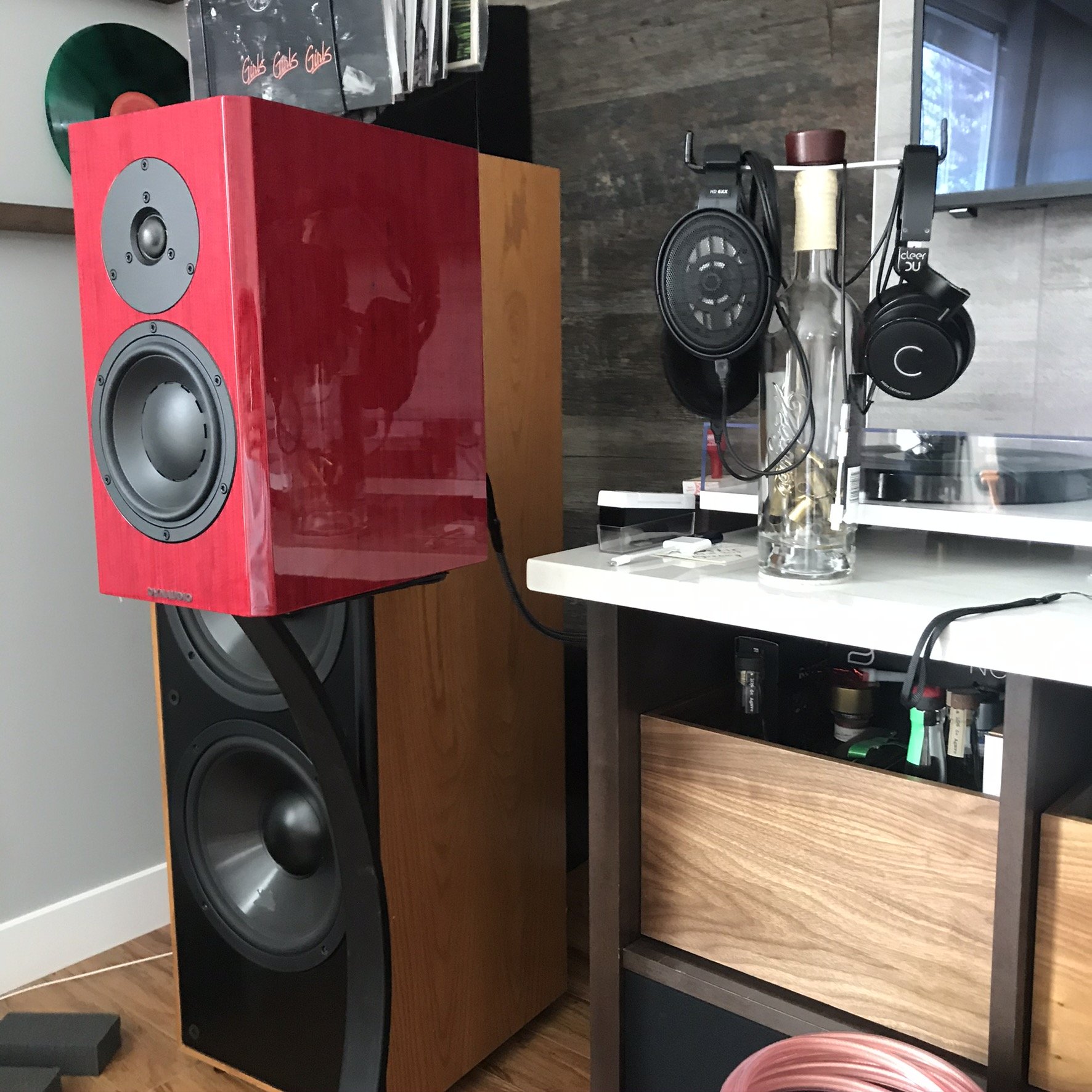












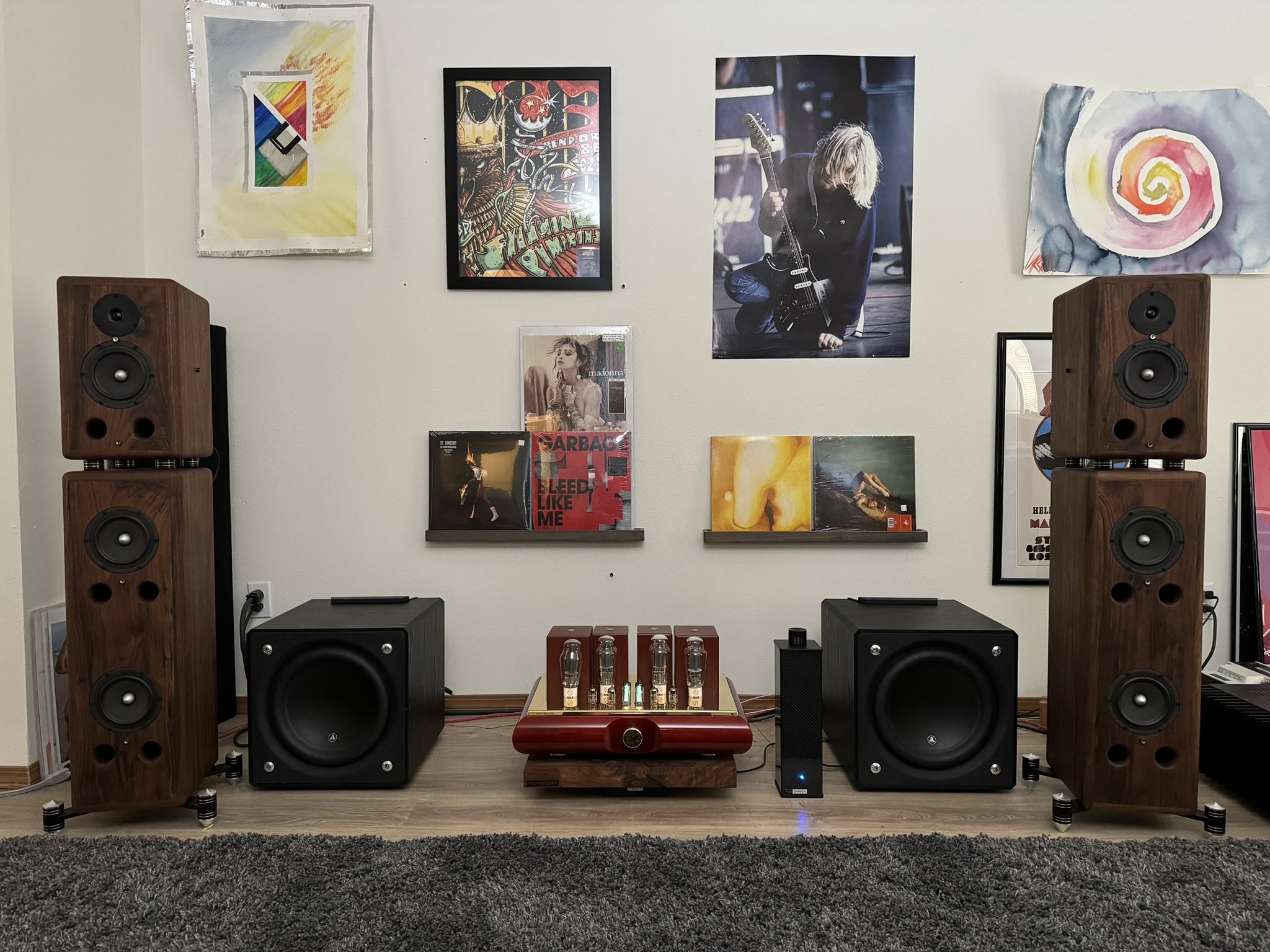
![Dream Speakers Black Ocean Audio [M] Stack Review](https://images.squarespace-cdn.com/content/v1/61664aeaf2101f65ee6db24a/1710000429587-0W7W96SJ71CJECO76SUG/IMG_6284.jpeg)


